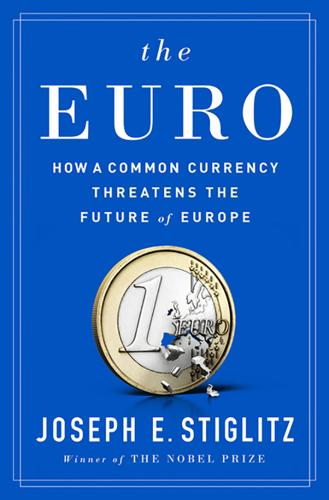
The Euro: How a Common Currency Threatens the Future of Europe
by
Joseph E. Stiglitz
and
Alex Hyde-White
Published 24 Oct 2016
More modern theories emphasize imperfectly informed and often irrational consumers and firms operating in markets with imperfect and asymmetric information, where profits can typically be enhanced more by exploiting these market imperfections than in any other way. Nobel Prize–winning economists George Akerlof and Rob Shiller document this widespread behavior in their brilliant book Phishing for Phools—using the term for Internet scammers who systematically “fish for fools.”16 With financial products moving ever more easily throughout Europe, the opportunity to take advantage of a whole continent of people who might be duped into buying financial products that were not suitable for them proved irresistible.
…
See Nikolaos Antonakakis and Alan Collins, “The Impact of Fiscal Austerity on Suicide: On the Empirics of a Modern Greek Tragedy” 112 (2014): 39–50. 24 The current account is the balance of trade, net primary income or factor income (earnings on foreign investments minus payments made to foreign investors), and net cash transfers, that have taken place over a given period of time. 25 As Keynes once wrote, “In the long run we are all dead.” A Tract on Monetary Reform (London: Macmillan, 1923), p. 80. 26 For instance, they do not build in, or build in in a fully adequate way, essential market imperfections—for example, the irrationality of financial markets, as emphasized by the research of Nobel Prize–winning economist Rob Shiller (see, for instance, his book Irrational Exuberance [Princeton, NJ: Princeton University Press, 2000]) or the pervasive imperfections of information (as emphasized by Nobel Prize–winning economists Michael Spence, George Akerlof, and myself). For a more extensive discussion of the failures of the standard macroeconomic models, see, for instance, Stiglitz, “Rethinking Macroeconomics: What Failed and How to Repair It,” Journal of the European Economic Association 9, no. 4 (2011): 591–645; and Stiglitz, “Stable Growth in an Era of Crises: Learning from Economic Theory and History,” Ekonomi-tek 2, no. 1 (2013): 1–38 (originally delivered as keynote lecture to the Turkish Economic Association, Izmir, November, 2012).
…
As this book goes to press, traders convicted in the scandal were appealing their verdicts. Meanwhile, some banks were still under investigation. In another case of massive market manipulation, Citigroup, JPMorgan, Barclays, Royal Bank of Scotland, and UBS agreed to plead guilty to a felony of market manipulation. 16 George A. Akerlof and Robert A. Shiller, Phishing for Phools: The Economics of Manipulation and Deception (Princeton, NJ: Princeton University Press, 2015). 17 In the United States almost unbounded campaign contributions are made to the individual and the party that comes the closest to leaving the sector unregulated, with significant amounts given to the opposition for good measure.
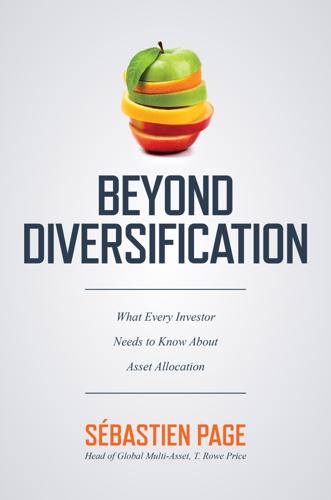
Beyond Diversification: What Every Investor Needs to Know About Asset Allocation
by
Sebastien Page
Published 4 Nov 2020
Rowe Price, 192 and usefulness of optimizers, 211–212 Portfolio optimization models, 2 Portfolio theory, 85 Power utility, 199 Price-to-book (P/B) ratio, 38 Price-to-cash flow (P/CF) ratio, 38 Price-to-earnings (P/E) ratio: compared to other ratios, 38 Price-to-earnings (P/E) ratio (continued): debate over CAPE vs., 13, 25–26 and global equity markets forecasts, 13–14 and inflation, 13 inverse of, and real return for stocks, 12–13 as relative valuation signal, 58–59 and sector weights, 159 as short term timing signal, 57 and valuation change, 30–31 Principles (Dalio), 85 Private assets, 217–229 biases related to, 220–221, 223 diversification with, 128–130 footnotes and fine-print disclaimers with, 219–224 hype associated with, 224–226 in portfolio construction, 217–229 public equities compared to, 218–224 and public equity fund returns, 226–229 “Private Equity Performance” (Kaplan and Schoar), 221 Probability distributions, 117–118, 147, 152–153 Probability-weighted utility, 201 Prout, William, 218–219 Public equities: fund returns for, 226–229 private equities compared to, 218–224 returns on private equities vs., 226–229 Public market equivalent (PME), 221–223, 229 Public pensions, 219 Publication bias, 91–92 Q Group conferences, 7 Qian, Edward, 213–214 Quantitative analysis, judgment and, 84–85 Quantitative data analysis, 2–3 Quantitative easing (QE), 17 Quantitative investing, momentum in models for, 70 Quantitative value-at-risk models, 165 Random walk model, 91 Real estate: CAPM expected returns for, 20 diversification with, 128–130 private, 129–130 Real estate investment trusts (REITS), 18, 240 Real returns, inflation and, 11, 13 “Regime Shifts” (Kritzman, Turkington, and Page), 156, 157 Regime-switching dynamic correlation (RDSC) model, 140 Relative returns: on dashboards, 64–66 and persistence of higher moments, 112, 117–119 on stocks vs. bonds, 10–11, 17–19, 112, 117–119 Relative valuation: and CAPE, 27–28 macro factors confirming signals, 67–68 shorter-term signals of, 56–59 Resampling, 208 Retirement planning, 187–194, 249–253 Return forecasting, 1–3, 83–87, 267, 272 equilibrium, 5–23 momentum, 69–82 paradox of, 73 rules of thumb for, 86–87 shorter-term macro signals, 61–68 shorter-term valuation signals, 45–59 valuation, 25–42 “Return of the Quants” (Dreyer et al.), 94 “The Revenge of the Stock Pickers” (Lynch et al.), 233 Rich, Don, 168–169 Richardson, Matthew, 115 Ringgenberg, Matthew C., 236 Risk aversion, 189, 204 Risk factor diversification, 130–131, 135, 176–177 Risk factors: asset classes vs., 173–184 crowding of, 184 in portfolio construction, 174 in scenario analysis, 162–165 Risk factors models, 178–179 Risk forecasting, 89–92, 267–268, 272–273 basic parameter choices for, 144–145 CAPM definition of, 10 correlation forecasts, 139–143 correlations, 121–136 exposure to loss in, 143–144 fat tails, 147–157 goal of, 178–179 longer-term, 111–119 models of, 89–92 risk-based investing, 93–109 rules of thumb for, 170–171 scenario analysis, 157–168 within-horizon risk in, 168–170 “Risk Management for Hedge Funds” (Lo), 150 Risk parity: and implicit return assumptions, 2 managed volatility vs., 105–106 in portfolio optimization, 212–215 Risk Parity Fundamentals (Qian), 213–214 Risk predictability tests, 112–119 Risk premiums, 179–184 backtest data for, 182–184 beta, 179–180 for bonds, 40 and currency carry trade, 131 diversification across, 182 low-risk anomaly, 180–181 and risk factors, 179–180 and Sharpe ratios, 150, 151 strategies for, 182–184 volatility, 102–104, 181–182 when rates are low, 12 Risk regimes, 131, 154–157, 168, 204 Risk tolerance, 149–150 Risk-based investing, 93–109 combination of strategies for, 104 covered call writing, 102–104 managed volatility backtests, 95–101 Q&A about, 105–109 (See also Managed volatility) Risk-free rate, 11 Roll, Richard, 62, 67 Roll down, 40–41 Ross, Stephen A., 62, 67 Rossi, Marco, 131 Rules of thumb: for portfolio construction, 243–244 for return forecasting, 86–87 for risk forecasting, 170–171 Samonov, Mikhail, 71–75 Sample bias, 223 Samuelson, Paul A., 186–187, 197–198 Sapra, Steve, 132 Satchell, Stephen, 212 Scenario analysis: in asset allocation, 134 and asset class changes over time, 158–162 defensive use of, 157–167 defining scenarios in, 158 factor-based, 162–165 forward-looking scenarios in, 165–168 offensive use of, 167–168 Scherer, Bernd, 2, 117 Schoar, Antoinette, 221, 222 Seasholes, Mark, 31 Sentiment, 69, 131–132 Sharpe, Bill, 6, 7, 9, 13, 151 Sharpe ratios, 150 Sharps, Rob, 228 Shiller, Robert, 13, 14, 25–26 “The Shiller CAPE Ratio” (Siegel), 26 Shive, Sophie, 235 Shkreli, Martin, 238 Shorter-term investments, macro factors for, 63–66 Shorter-term valuation signals, 45–59 for relative valuation between stocks and bonds and across bond markets, 56–59 for tactical asset allocation, 45–59 Shriver, Charles, 57, 62, 94 Siegel, Jeremy, 12–14, 25, 26 Simonato, Jean-Guy, 143 Single-period portfolio optimization, 194–195, 197–215, 268 issues with concentrated and unstable solutions, 207–210 mean-variance optimization, 198, 203–207 and risk parity, 212–215 and usefulness of optimizers, 211–212 Size of measurement errors, 148 Skewness, 118 of call options, 118 mean reversion of, 118–119 persistence of, 117–119 positive vs. negative, 207 and risk forecasting, 144–145 (See also Negative skewness) “Skulls, Financial Turbulence, and Risk Management” (Kritzman and Li), 205 Smart betas, 179, 235 S.M.O.O.T.H. fund, 224–225 Smoothing bias, 128–130 Sovereign wealth funds, 37, 128–130, 194 S&P 500: in March 2018, 12 P/E ratio of, 30–31 realized one-month volatility on, 103–104 recent earnings on, 27 sector weights in, 159 and tech bubble, 163 Spread duration, 40–42 Stock market: used as market portfolio, 17–18 valuation changes in, 31–34 Stock picking, 233–243 “The Stock-Bond Correlation” (Johnson et al.), 132–133 Stocks: beta and relative returns of bonds and, 10–11 CAPM and returns on, 5–14, 20 correlation of bonds and, 132–134 of emerging markets, 159–160 and human capital, 189–190 international equity diversion, 125–126 in market portfolio, 17–19 P/E ratio and real return for, 12–13 P/E ratio vs.
…
For inflation, we can use a market-implied or “breakeven” estimate, as measured by the difference between the yield of a nominal bond and an inflation-linked bond. In March 2018, 10-year inflation breakevens were around 2%. If we add inflation to the real return estimate, we get an expected nominal equity return of 7% (5% + 2%). Not bad. On the other hand, Robert Shiller, Yale professor and Nobel laureate, uses a P/E ratio that normalizes earnings over the last 10 years and adjusts for inflation (the cyclically adjusted price-earnings ratio, or CAPE). The 10-year period is meant to represent a full business cycle. His approach yields a meager 1% expected real return for US stocks, or 3% nominal if we assume 2% inflation.6 The CAPE is higher than the current P/E in part because earnings have increased significantly over the last 10 years.
…
But on the other hand, valuations are more attractive than they were back in 2018, in a way that may offset lower rates. 4. For the nine years ending March 23, 2018. 5. Robert Huebscher, “Jeremy Siegel’s Predictions for 2018,” Advisor Perspectives, February 5, 2018. 6. Robert Huebscher, “Jeremy Siegel Versus Robert Shiller on Equity Valuations,” Advisor Perspectives, February 23, 2017. As of Q1 2018, the CAPE ratio was still relatively close to where it was when this article was published, hovering around 30. With the CAPE at 30, a simple earnings yield calculation would imply a 3.3% real return. It’s not clear how Shiller arrives at 1%, but I suspect he’s using a regression between the CAPE and subsequent returns to account for the fact that the relationship is not one-to-one. 7. http://shiller.barclays.com/SM/12/en/indices/welcome.app.
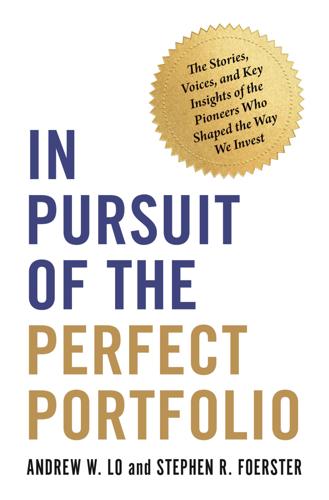
In Pursuit of the Perfect Portfolio: The Stories, Voices, and Key Insights of the Pioneers Who Shaped the Way We Invest
by
Andrew W. Lo
and
Stephen R. Foerster
Published 16 Aug 2021
See “Remarks by Chairman Alan Greenspan” (our emphasis), Federal Reserve, December 5, 1996, http://www.federalreserve.gov/boarddocs/speeches/1996/19961205.htm. 35. From Robert J. Shiller, “Definition of Irrational Exuberance,” http://www.irrationalexuberance.com/definition.htm. 36. Leonhardt (2005). 37. Leonhardt (2005). 38. Greenspan (2007, 176). 39. Greenspan (2007, 177). 40. See “Robert Shiller: Stocks, Bonds and Real Estate are Overvalued,” GuruFocus, May 30, 2015, https://www.gurufocus.com/news/338699/robert-shiller-stocks-bonds-and-real-estate-are-overvalued. 41. Grove (2008). 42. Kindleberger (2000). 43. Kindleberger (2000, 16). 44. See “Robert Shiller: Stocks, Bonds and Real Estate are Overvalued,” GuruFocus, May 30, 2015, https://www.gurufocus.com/news/338699/robert-shiller-stocks-bonds-and-real-estate-are-overvalued. 45.
…
See “Robert Shiller: Stocks, Bonds and Real Estate are Overvalued,” GuruFocus, May 30, 2015, https://www.gurufocus.com/news/338699/robert-shiller-stocks-bonds-and-real-estate-are-overvalued. 45. Rotblut and Shiller (2015). 46. For a discussion of narrative economics, see Shiller (2017). 47. Rotblut and Shiller (2015). 48. See “Robert Shiller: Stocks, Bonds and Real Estate are Overvalued,” GuruFocus, May 30, 2015, https://www.gurufocus.com/news/338699/robert-shiller-stocks-bonds-and-real-estate-are-overvalued. 49. Shiller (2014). 50. Milner (2015). 51. Interview with authors. 52. Interview with authors. 53. Interview with authors. 54.
…
Others actually sold their equities only because they found themselves in massive liquidity squeezes, some of which were predictable. So, as investors, you should have a plan for liquidity needs in the face of deep trouble. And you should have some plan, in advance, for how you’re going to rebalance and move forward.”74 To create a Perfect Portfolio, you need to start with a plan. 9 Robert Shiller and Irrational Exuberance ROBERT (BOB) SHILLER’S most famous work was a challenge to the conventional wisdom that financial markets are efficient. Although the Nobel Prize committee would later call it the centerpiece of his work, many in the academic profession originally greeted it with harsh criticism. It wasn’t easy for him to endure the attacks on his work.

Capital Ideas Evolving
by
Peter L. Bernstein
Published 3 May 2007
Leibniz’s admonition—“but only for the most part”—and Lo’s interjection of “but not necessarily”—explains why there is such a thing as risk in the first place. Without that qualification, everything would be predictable, and change would be impossible in a world where every event is identical to some previous event.2 bern_c06.qxd 3/23/07 9:03 AM Page 65 6 Robert Shiller The People’s Risk Manager rofessor Robert Shiller of the Cowles Foundation at Yale looks much too young to have earned his Ph.D. at MIT over thirty years ago, while working with Paul Samuelson and Franco Modigliani. During those thirty years, he has managed to publish over 200 papers and five books, including the worldwide best seller, Irrational Exuberance.
…
The Strange Paradox of Behavioral Finance: “Neoclassical Theory Is a Theory of Sharks” 3 19 PART II: THE THEORETICIANS 3. Paul A. Samuelson: The Worldly Philosopher 37 The Institutionalists 4. Robert C. Merton: “Risk Is Not an Add-On” 5. Andrew Lo: “The Only Part of Economics That Really Works” 6. Robert Shiller: The People’s Risk Manager 47 58 65 The Engineers 7. Bill Sharpe: “It’s Dangerous to Think of Risk as a Number” vii 91 bern_a02ftoc.qxd 3/23/07 8:42 AM Page viii viii CONTENTS 8. Harry Markowitz: “You Have a Little World” 9. Myron Scholes: “Omega Has a Nice Ring to It” 100 110 PART III: THE PRACTITIONERS 10.
…
Samuelson 39 Ever the economist, Samuelson has mixed feelings about Behavioral Finance, which he wryly def ined to me as “the study of people not doing the most rational thing as judged by assistant professors of f inance.” Nevertheless, Samuelson’s connection with Behavioral Finance is far from casual. As Robert Shiller of Yale has pointed out in a recent paper, “This is a good occasion to recall that [Samuelson] was in an important sense one of the originators of the canonical intertemporal model that underlies much of the theory of neoclassical f inance, but also, at the same time, anticipated a good deal of the progress of behavioral f inance.
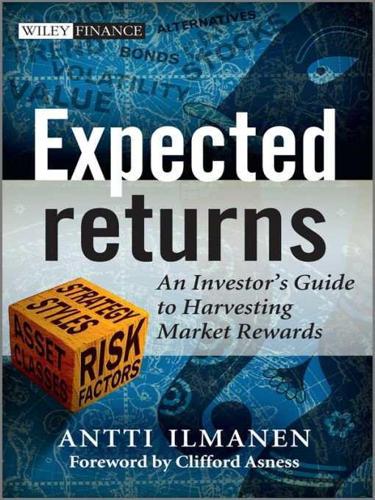
Expected Returns: An Investor's Guide to Harvesting Market Rewards
by
Antti Ilmanen
Published 4 Apr 2011
Craig MacKinlay (1997), The Econometrics of Financial Markets, Princeton, NJ: Princeton University Press. Campbell, John Y.; and Robert J. Shiller (1988), “Stock prices, earnings and expected dividends,” Journal of Finance 43(3), 661–676. Campbell, John Y.; and Robert J. Shiller (1991), “Yield spreads and interest rate movements: A bird’s eye view,” Review of Economic Studies 58, 495–514. Campbell, John Y.; and Robert J. Shiller (1998), “Valuation ratios and the long-run stock market outlook,” Journal of Portfolio Management 24(2), 11–26. Campbell, John Y.; Robert J. Shiller; and Luis M. Viceira (2009), “Understanding inflation-indexed bond markets,” Brookings Papers on Economic Activity (Spring), 79–120.
…
The best known series is the composite real house price series since 1890 that Robert Shiller and Karl Case created from various data sources (see Figure 11.3). Shiller’s result has been summarized as saying that house prices barely kept up with inflation, except for the bubble runup. This finding is surprising but consistent with other evidence that Manhattan (Amsterdam) land in a great location barely maintained its real value over 100 (400) years. Figure 11.3. Real house prices estimated by Robert Shiller, 1890–2010. Source: Robert Shiller’s website. Net real house price appreciation (HPA) was minimal over the 120-year window (0.3% per annum) but there were two big rallies—the late 1940s (due to the postwar return of soldiers) and the early 2000s—and two big falls—a real fall during the 1910s inflation and the recent crunch.
…
There are of course many other ways to predict asset returns—to be discussed in Sections 8.6, 9.6, and 24.4—but the contrarian approach shows promise and at least seems to do better than extrapolating long-run past returns. For an example popularized by Robert Shiller and John Campbell, Figure 2.8 shows how well smoothed earningsFigure 2.8. Valuation ratios have been good predictors of subsequent multi-year equity market return. Sources: Robert Shiller’s website, Kenneth French’s website. yields (the inverse of the P/E ratio, with 10-year average trailing earnings used instead of current year earnings, adjusted for inflation) have been able to predict subsequent multi-year equity market returns [5]. 2.4 NOTES [1] The venture capital (VC) asset class shows the highest average returns, perhaps partly reflecting various biases.

Irrational Exuberance: With a New Preface by the Author
by
Robert J. Shiller
Published 15 Feb 2000
Irrational Exuberance This page intentionally left blank Irrational Exuberance Robert J. Shiller Princeton University Press Princeton, New Jersey Copyright © 2000 Robert J. Shiller Published by Princeton University Press, 41 William Street, Princeton, New Jersey 08540 In the United Kingdom: Princeton University Press, Chichester, West Sussex All Rights Reserved Library of Congress Cataloging-in-Publication Data Shiller, Robert J. Irrational exuberance / Robert J. Shiller. p. cm. Includes bibliographical references and index. ISBN 0-691-05062-7 (cloth : alk. paper) 1. Stocks—United States. 2.
…
Michael Brennan, “Stripping the S&P 500,” Financial Analysts’ Journal, 54(1) (1998): 14. 29. Robert Shiller, Macro Markets: Creating Institutions for Managing Society’s Largest Economic Risks (Oxford: Oxford University Press, 1993). I have been working with my colleague Allan Weiss and others at my firm, Case Shiller Weiss, Inc., to develop certain of these new markets. See Karl E. Case, Robert J. Shiller, and Allan N. Weiss, “Index-Based Futures and Options Trading in Real Estate,” Journal of Portfolio Management, 19(2) (1993): 83–92; Robert J. Shiller and Allan N. N O TE S TO PAG E S 230–232 267 Weiss, “Home Equity Insurance,” Journal of Real Estate Finance and Economics, 19 (1999): 21–47; and Robert J.
…
.: Princeton University Press, 1997. Campbell, John Y., and Robert J. Shiller. “The Dividend-Price Ratio and Expectations of Future Dividends and Discount Factors.” Review of Financial Studies, 1 (1988): 195–228. ———. “Valuation Ratios and the Long-Run Stock Market Outlook.” Journal of Portfolio Management, 24 (1998): 11–26. 272 R EFER ENC ES Case, Karl E., Jr., and Robert J. Shiller. “The Behavior of Home Buyers in Boom and Post-Boom Markets.” New England Economic Review, November-December 1988, pp. 29–46. Case, Karl E., Robert J. Shiller, and Allan N. Weiss. “Index-Based Futures and Options Trading in Real Estate.”
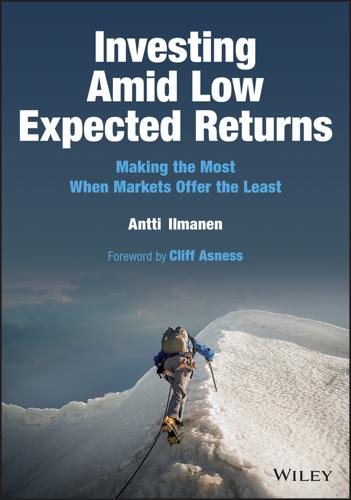
Investing Amid Low Expected Returns: Making the Most When Markets Offer the Least
by
Antti Ilmanen
Published 24 Feb 2022
Figure 16.1 Time Series of CAEY and Next-Decade Excess Returns of US Equities, 1900–2021 Sources: AQR, Robert Shiller's website. Notes: CAEY is the cyclically adjusted earnings yield. The OOS (out-of-sample) signal judges each month how cheap the market CAEY is compared to the previous 60 years (no lookahead bias) and gives score 0.5–1.5 based on the current CAEY's percentile rank. Figure 16.2 Scatter Plot of CAEY and Next-Decade (and Next-Month) Excess Returns of US Equities, 1900–2021 Sources: AQR, Robert Shiller's website. Figure 16.3 Quintile Buckets of CAEY and Future Excess Returns of US Equities, 1900–2021 Sources: AQR, Robert Shiller's website. Figure 16.4 Cumulative Performance of Contrarian Market Timing Versus Buy&Hold of the S&P500 Index, Jan 1900–Mar 2021 Sources: AQR, Robert Shiller's website.
…
The September 2021 real yields of 2.9% and -0.9% are at 2nd and 1st percentile, respectively, over a nearly 122-year window. Figure 1.1 Simple Expected Real Return of US Equities and Treasuries, Jan 1900–Sep 2021 Sources: AQR, Robert Shiller's website, Kozicki-Tinsley (2006), Federal Reserve Bank of Philadelphia, Blue Chip Economic Indicators, Consensus Economics. Notes: Equity is represented by the S&P500 stocks (before 1926 using Cowles data as in Robert Shiller website). The equity real yield is the sum of income and growth proxies. Income is an average of two measures: D/P ratio and half of the cyclically-adjusted E/P ratio (which uses smoother 10-year real earnings in the numerator, and implicitly assumes 50% payout ratio), while growth is assumed to be 1.5% (long-run real EPS growth).
…
The main message from the longest sample is that DPS and EPS growth rates have not quite matched the GDP-per-capita growth rate, but all have long-run values of 1.5–1.9%.16 Figure 4.6 Subjective and Objective Long-Run Return Expectations for the US Equity Market Sources: Survey of Professional Forecasters (FedPhiladelphia) for economist survey, Duke (FedRichmond) for CFO survey, Dahlquist-Ibert (2021) for CMA (capital market assumptions), Robert Shiller's website, Blue Chip Economic Indicators, Consensus Economics. Notes: “Market-Based EqMktRet” is the sum of CAEY (proxy for expected real return) and consensus forecast 10yr inflation rate. Figure 4.7 US Economic/Dividend/Earnings Growth, 1900–2020 Sources: Robert Shiller's website, FRED (Fed St. Louis). Notes: DPS and EPS on the S&P500 index and its predecessors. It is notable that the EPS series is by far the most volatile, so while it has the lowest geometric mean it has clearly the highest arithmetic mean.
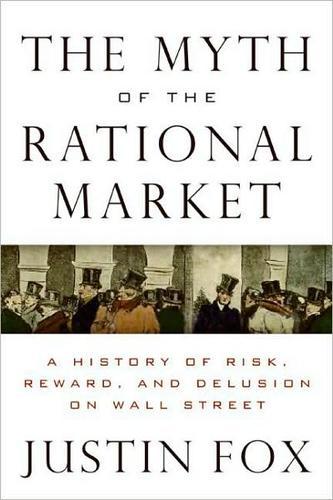
The Myth of the Rational Market: A History of Risk, Reward, and Delusion on Wall Street
by
Justin Fox
Published 29 May 2009
Pablo Galarza, “It’s Still Stocks for the Long Run,” Money, Dec. 2004. 14. Robert J. Shiller, “Price-Earnings Ratios as Forecasters of Returns: The Stock Market Outlook in 1996,” paper posted on Shiller’s Web site, July 21, 1996, www.econ.yale.edu/%7Eshiller/data/peratio.html. The original paper was John Y. Campbell and Robert J. Shiller, “Stock Prices, Earnings, and Expected Dividends,” Journal of Finance (July 1988): 661–76. 15. Alan Greenspan, The Age of Turbulence (New York: Penguin, 2007), 176–79. 16. J. Bradford DeLong and Konstantin Magin, “Contrary to Robert Shiller’s Predictions, Stock Market Investors Made Much Money in the Past Decade: What Does This Tell Us?”
…
.: Rowman & Allanheld Publishers, 1984), 223. 14. This work is described in chapter 13, “Bond Market Volatility: An Introductory Survey,” of Robert J. Shiller, Market Volatility (Cambridge, Mass.: MIT Press, 1989), 219–36. The best known of his papers on the subject was “The Volatility of Long-Term Interest Rates and Expectations Models of the Term Structure,” Journal of Political Economy (Dec. 1979): 1190–219. Reprinted in Shiller, Market Volatility, 256–87. 15. Robert J. Shiller, “Do Stock Prices Move Too Much to Be Justified by Subsequent Changes in Dividends?” American Economic Review (June 1981): 421–35.
…
None of these men devoted any of their serious scholarly work to fleshing out these ideas about financial market error. THAT WOULD BE THEIR STUDENTS’ job. While Joe Stiglitz led the way in looking for theoretical flaws in the perfect market worldview, another product of Samuelson and Modigliani’s MIT was to take on the efficient market hypothesis where it counted—in the data. Robert Shiller, who got his doctorate from MIT in 1972, was a sophisticated statistician and a crack computer programmer. He combined those skills with a seemingly naive eagerness to apply them to questions so simple that they could seem childlike, brazen, or even downright lunkheaded. In his dissertation and his early work as a professor at the University of Pennsylvania, Shiller focused on whether real-world interest rates behaved in accordance with the theory of rational expectations.
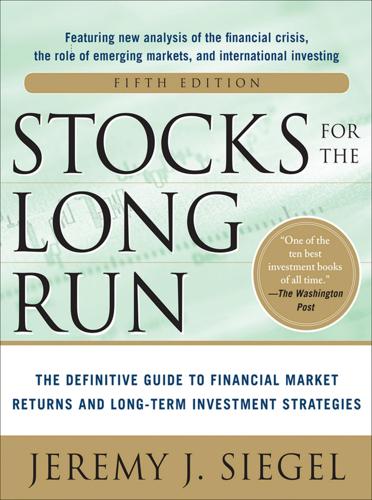
Stocks for the Long Run 5/E: the Definitive Guide to Financial Market Returns & Long-Term Investment Strategies
by
Jeremy Siegel
Published 7 Jan 2014
The earnings yield may differ from the commonly cited ROE, or return on equity, which usually measures the ratio of profits to the book value of equity rather than its market value. 7. In 2013 Robert Shiller was awarded the Nobel Prize in Economics in part because of his work on stock market volatility and behavioral finance. 8. J. Y. Campbell and R. J. Shiller, “Valuation Ratios and the Long-Run Stock Market Outlook,” Journal of Portfolio Management, Winter 1998, pp. 11-26. Their earlier paper was Campbell and Shiller, “Stock Prices, Earnings and Expected Dividends,” Journal of Finance, vol. 43, no. 3 (July 1988), pp. 661-676. Robert Shiller posted a paper, “Price Earnings Ratios as Forecasters of Returns: The Stock Market Outlook in 1996,” on his website on July 21, 1996, which served as the basis for his presentation to the Federal Reserve. 9.
…
John Maynard Keynes, The General Theory of Employment, Interest, and Money, First Harbinger Edition, New York: Harcourt, Brace & World, 1965, p. 157. (This book was originally published in 1936 by Macmillan & Co.) 16. Robert Shiller, Market Volatility, Cambridge, MA: MIT Press, 1989. The seminal article that spawned the excess volatility literature was “Do Stock Prices Move Too Much to Be Justified by Subsequent Changes in Dividends?,” American Economic Review, vol. 71 (1981), pp. 421-435 17. Robert Shiller was awarded the 2013 Nobel Prize in Economics in part for this research on market volatility. 18. Memorandum from Dean Witter, May 6, 1932. 19. Keynes, The General Theory, p. 149.
…
Williams, If You Must Speculate, Learn the Rules, Burlington, VT: Freiser Press, 1930. 3. Daniel Kahneman and Amos Tversky, “Prospect Theory: An Analysis of Decision Under Risk,” Econometrica, vol. 47, no. 2 (March 1979). 4. Robert Shiller, “Stock Prices and Social Dynamics,” Brookings Papers on Economic Activity, Washington, DC: Brookings Institution, 1984. 5. Robert Shiller, “Do Stock Prices Move Too Much to Be Justified by Subsequent Movements in Dividends?” American Economic Review, vol. 71, no. 3 (1981), pp. 421-436. See Chapter 19 for further discussion. 6. Solomon Asch, Social Psychology, Englewood Cliffs, NJ: Prentice Hall, 1952. 7.
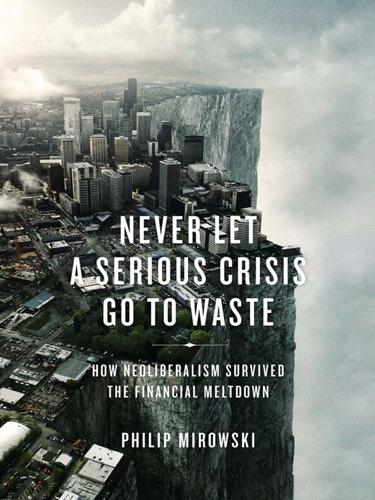
Never Let a Serious Crisis Go to Waste: How Neoliberalism Survived the Financial Meltdown
by
Philip Mirowski
Published 24 Jun 2013
Two best-selling books were especially effective in broadcasting this line: John Cassidy’s How Markets Fail and Justin Fox’s Myth of the Rational Market. Some economists who had been strong advocates of behavioral approaches prior to the crash, such as Robert Shiller and Robert Frank, leaped in with op-eds essentially blaming the entire crisis on native cognitive weaknesses of market participants.37 This line became entrenched with the appearance of George Akerlof and Robert Shiller’s Animal Spirits: displaying an utter contempt for the history of economic thought, they “reduced” the message of Keynes’s General Theory to the proposition that people get a little irrational from time to time, and thus push the system away from full neoclassical general equilibrium.38 They wrote: The idea that economic crises, like the current financial and housing crisis, are mainly caused by changing thought patterns goes against standard economic thinking.
…
Akerlof, George, and Rachel Kranton. Identity Economics (Princeton: Princeton University Press, 2010). Akerlof, George, and Paul Romer. “Looting: The Economic Underworld of Bankruptcy for Profit,” Brookings Papers on Economic Activity no. 2 (1993): 1–73. Akerlof, George, and Robert Shiller. Animal Spirits (Princeton: Princeton University Press, 2009). Akerlof, George, and Robert Shiller. “Disputations: Our New Theory of Macroeconomics,” New Republic (2009), www.tnr.com/article/books-and-arts/disputations-our-new-theory-macroeconomics. Akerlof, George, and Joseph Stiglitz. “Let a Hundred Theories Bloom” (2009), www.project-synciate.org.
…
Treasury on part of its debt—then it was a snap to get 162 economists, including two Nobel winners, to sign a statement denying that proposition.74 Or take that larger and more contentious issue, the question of whether there was a bubble in housing prices by 2006, and why so few economists were willing to sound the alarm. There is retrospective evidence that a few prominent economists had warned the New York Fed of a housing bubble as early as 2004; in response to one such presentation, Timothy Geithner removed Robert Shiller from the Fed advisory board.75 But the orthodox profession seems loathe to ever admit knowledge is actively policed and purged according to a preset script. After the fact, some economists at the Boston Fed decided that, because one would encounter a range of opinions on that issue before the crisis, there is no justification in blaming the profession for missing the disaster.
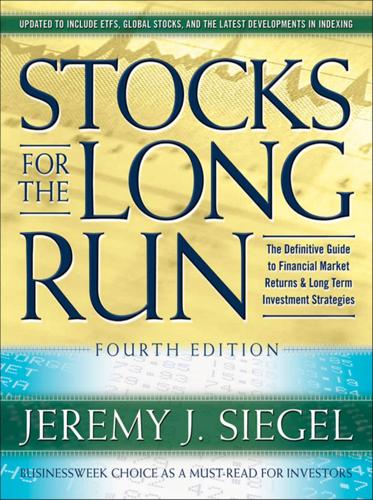
Stocks for the Long Run, 4th Edition: The Definitive Guide to Financial Market Returns & Long Term Investment Strategies
by
Jeremy J. Siegel
Published 18 Dec 2007
It appears suddenly as a new name for our hopes and for economic progress due to recent technological advances, notably the Internet, and for our reasons to think that the future growth prospects are ever so brilliant. ROBERT SHILLER, 20011 What are the most important macrotrends in the economy that influence future stock market returns? Economic growth immediately comes to mind. But economic growth has nowhere near as big an impact on stock returns as most investors believe. However, other important trends do have a positive impact on stock valuation: the stability of the overall economy, the reduction in transactions costs, and the change in taxes on stock market income. 1 Robert Shiller, Irrational Exuberance, New York: First Broadway Books, 2001, Afterword to the paperback edition, p. 249. 123 Copyright © 2008, 2002, 1998, 1994 by Jeremy J.
…
The right answer was obvious, but when confederates of Dr. Asch presented conflicting views, the subjects often gave the incorrect answer.6 3 Daniel Kahneman and Amos Tversky, “Prospect Theory: An Analysis of Decision under Risk,” Econometrica, vol. 47, no. 2 (March 1979). 4 Robert Shiller, “Stock Prices and Social Dynamics,” Brookings Papers on Economic Activity, Washington, D.C.: Brookings Institution, 1984. 5 Robert Shiller, “Do Stock Prices Move Too Much to Be Justified by Subsequent Movements in Dividends?” American Economic Review, vol. 71, no. 3 (1981), pp. 421–436. See Chapter 16 for further discussion. 6 Solomon Asch, Social Psychology, Englewood Cliffs, N.J.: Prentice Hall, 1952. 324 PART 4 Stock Fluctuations in the Short Run Follow-up experiments confirmed that it was not social pressure that led the subjects to act against their own best judgment but their disbelief that a large group of people could be wrong.7 Dave: Exactly, so many were hyping these stocks that I felt there had to be something there.
…
The stock price data during this period are taken from Schwert (1990), and I have added my own dividend series. G. William Schwert, “Indexes of United States Stock Prices from 1802 to 1987,” Journal of Business, vol. 63 (July 1990), pp. 399–426. 6 The stock series used in this period are taken from the Cowles indexes as reprinted in Robert Shiller, Market Volatility, Cambridge: MIT Press, 1989. The Cowles indexes are capitalizationweighted indexes of all New York Stock Exchange stocks, and they include dividends. 7 The data from the third period are taken from the Center for Research in Security Prices (CRSP) capitalization-weighted indexes of all New York stocks, and starting in 1962, they include American and Nasdaq stocks. 6 PART 1 The Verdict of History FIGURE 1–1 Total Nominal Return Indexes, 1802 through December 2006 It can be easily seen that the total return on equities dominates all other assets.
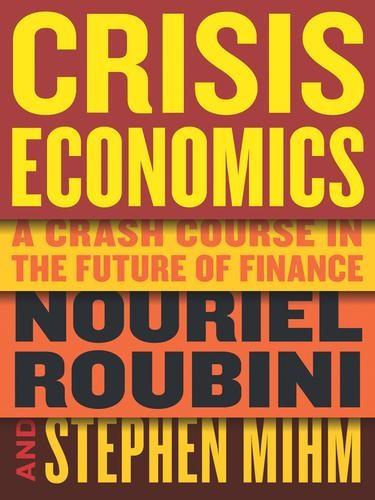
Crisis Economics: A Crash Course in the Future of Finance
by
Nouriel Roubini
and
Stephen Mihm
Published 10 May 2010
.”: Dick Cheney, interview by Deb Riechmann, Associated Press, January 8, 2009. 1 the most famous prediction: Nouriel Roubini, lecture and discussion, International Monetary Fund, Washington, D.C., September 7, 2006, transcript. 2 elaborated on his pessimistic vision: Nouriel Roubini, “The Rising Risk of a Systemic Financial Meltdown: The Twelve Steps to Financial Disaster,” February 5, 2008, online at http://www.roubini.com/analysis/44763.php; Stephen Mihm, “Dr. Doom,” New York Times Magazine, August 15, 2008. 3 Robert Shiller: Robert Shiller, Irrational Exuberance (Princeton, N.J.: Princeton University Press, 2000); Karl E. Case and Robert J. Shiller, “Is There a Bubble in the Housing Market?” Brookings Papers on Economic Activity 2 (2003), 299-362. 3 Raghuram Rajan: Raghuram G. Rajan, “Has Financial Development Made the World Riskier?” speech delivered at Federal Reserve Bank of Kansas City symposium, “The Greenspan Era: Lessons for the Future,” Jackson Hole, Wyo., August 27, 2005. 3 “the greatest of all credit bubbles”: Justin Lahart, “NASDAQ: Five Years after the Peak,” Wall Street Journal, March 7, 2005. 3 William White: Beat Balzli and Michaela Schiessl, “The Man Nobody Wanted to Hear,” Der Spiegel, July 8, 2009. 3 Maurice Obstfeld and Kenneth Rogoff: Maurice Obstfeld and Kenneth Rogoff, “The Unsustainable US Current Account Position Revisited,” National Bureau of Economic Research Working Paper no. 10869, November 2004. 3 Stephen Roach: Brett Arends, “Economic ‘Armageddon’ Predicted,” Boston Herald, November 23, 2004. 5 “animal spirits”: John Maynard Keynes, The General Theory of Employment, Interest, and Money (New York: Harcourt, Brace, and World, 1936), 161. 5 “the ideas of economists . . .”: Ibid., 383. 11 “The decadent international . . .”: John Maynard Keynes, “National Self-Sufficiency,” Yale Review 22 (1933): 760-61.
…
Norton, 1973). 41 “Don’t bother . . .”: Andrew W. Lo and A. Craig MacKinlay, A Non-Random Walk Down Wall Street (Princeton, N.J.: Princeton University Press, 1999), 6. 41 Yale economist Robert Shiller: Robert J. Shiller, “Consumption, Asset Markets and Macroeconomic Fluctuations,” Carnegie-Rochester Conference Series on Public Policy 17 (1982): 203-38. 42 “While markets are not totally crazy . . .”: Robert J. Shiller, “From Efficient Markets Theory to Behavioral Finance,” Journal of Economic Perspectives 17 (2003): 90. 42 “models of human psychology . . .”: Ibid. 42 recent research in behavioral finance: Ibid.; Fox, Myth of the Rational Market, 175-210, 247-64. 42 “fundamental parameters . . .”: Shiller, “From Efficient Markets Theory,” 94. 42 “biased self-attribution”: Kent Daniel, David Hirshleifer, and Avanidhar Subramanyam, “Investor Psychology and Security Market Under- and Overreactions,” Journal of Finance 53 (1998): 1839-85. 43 “some accident . . . sets speculation . . .”: John Stuart Mill, Principles of Political Economy (London: Longmans Green, 1909): 527-29. 45 William Stanley Jevons: Sandra J.
…
“The Panic of 1857: Origins, Transmission, and Containment.” Journal of Economic History 51 (1991): 807-34. Capie, Forrest, and Geoffrey E. Wood, eds. Financial Crises and the World Banking System. New York: St. Martin’s Press, 1986. Case, Karl E., John M. Quigley, and Robert J. Shiller. “Comparing Wealth Effects: The Stock Market versus the Housing Market.” Advances in Macroeconomics 5 (2005): 1-34. Case, Karl E., and Robert J. Shiller. “Is There a Bubble in the Housing Market?” Brookings Papers on Economic Activity 2 (2003): 299-362. Cassidy, John. How Markets Fail: The Logic of Economic Calamities. New York: Farrar, Straus and Giroux, 2009. Cihák, Martin, and Erlend W.
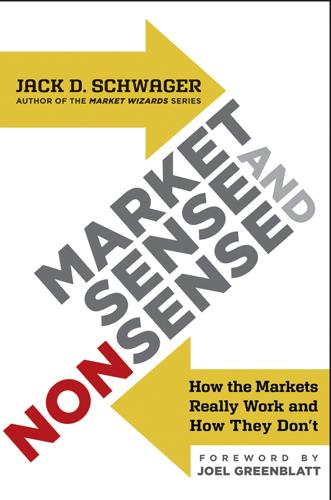
Market Sense and Nonsense
by
Jack D. Schwager
Published 5 Oct 2012
For over a century since the starting year of the Case-Shiller Home Price Index, the inflation-adjusted index level fluctuated in a range of approximately 70 to 130. At the peak of the 2003–2006 housing bubble, the index more than doubled its long-term median level (see Figure 2.5). Figure 2.5 Case-Shiller National Home Price Index, Inflation-Adjusted Source: www.multpl.com/case-shiller-home-price-index-inflation-adjusted/; underlying data: Robert Shiller and Standard & Poor’s. The extremes of the housing bubble were fueled by excesses in subprime mortgage lending in which loans were made to borrowers with poor credit, requiring little or no money down and in its later phases no verification of income or assets. The competition among mortgage lenders to find new borrowers seemed like a race to issue the poorest-quality mortgages possible, and in terms of both market share and excesses, Countrywide seemed to be the clear winner in this dubious contest.
…
The consistent superior performance of years following low-quartile return periods versus years following high-quartile return periods is clearly evident. Figure 3.2 S&P Returns, Including Dividends: Comparison of Years Following Highest- and Lowest-Quartile Performance, 1872–2011 Data source: Moneychimp.com, which is based on Robert Shiller’s data and Yahoo!. Prior to 1926 (first year of S&P index), data is based on Cowles stock index data. There is always a trade-off between more data and more relevant data. It can reasonably be argued that by going back as far as the 1870s, we included a period of history that is not representative of the current market.
…
Once again, years following low-quartile return periods significantly outperformed years following high-quartile periods, with the difference being 6 percent for the one-year period and nearly 4 percent for the three-year period. Figure 3.3 S&P Returns, Including Dividends: Comparison of Years Following Highest- and Lowest-Quartile Performance, 1950–2011 Data source: Moneychimp.com, which is based on Robert Shiller’s data and Yahoo!. The lesson is that the best prospective years for realizing above-average equity returns are those that follow low-return periods. Years following high-return periods, which are the times most people are inclined to invest, tend to do slightly worse than average on balance.
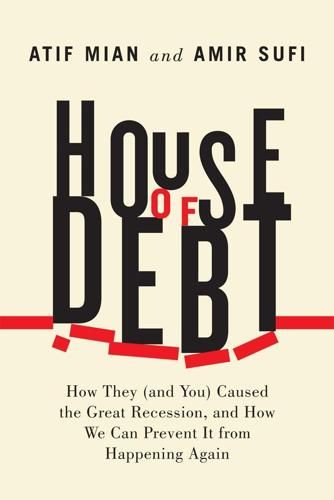
House of Debt: How They (And You) Caused the Great Recession, and How We Can Prevent It From Happening Again
by
Atif Mian
and
Amir Sufi
Published 11 May 2014
See Charley Stone, Carl Van Horn, and Cliff Zukin, “Chasing the American Dream: Recent College Graduates and the Great Recession,” in Work Trends: Americans’ Attitudes about Work, Employers, and Government (Rutgers University, May 2012), http://media.philly.com/documents/20120510_Chasing_American_Dream.pdf; and Meta Brown and Sydnee Caldwell, “Young Student Loan Borrowers Retreat from Housing and Auto Markets,” Federal Reserve Bank of New York Liberty Street Economics Blog, April 17, 2013, http://libertystreeteconomics.newyorkfed.org/2013/04/young-student-loan-borrowers-retreat-from-housing-and-auto-markets.html. 6. Martin and Lehren, “A Generation Hobbled.” 7. Bernard, “In Grim Job Market.” 8. We have been influenced heavily by the work of Robert Shiller for many of the ideas in this chapter. He has been a strong advocate for financial contracts that more equally share risk in the context of household and sovereign debt. See, for example, Stefano Athanasoulis, Robert Shiller, and Eric van Wincoop, “Macro Markets and Financial Security,” FRBNY Economic Policy Review, April 2009. Kenneth Rogoff has also advocated more equity-like instruments in the context of sovereign debt.
…
Stock prices in Smith’s experiment fluctuated wildly, with prices at times deviating two to three times away from their fundamental value. Of the twenty-two experiments conducted, fourteen saw a stock market “characterized by a price bubble measured relative to dividend value.” The results bore an uncanny resemblance to the “excess volatility” phenomena first documented by Robert Shiller in 1981 for the U.S. stock market.4 In his seminal paper that led to the creation of the field of behavioral finance, Shiller showed that stock prices moved too much to be justified by the subsequent movement in their dividends. This phenomenon was later succinctly summarized by Jeffrey Pontiff in 1997 when he demonstrated that closed-end mutual funds were significantly more volatile than the market value of the underlying securities.5 Closed-end mutual funds hold stocks and bonds like regular “open-ended” mutual funds.
…
One proposal is for countries to leave the euro and revert to their own currency. However, given that leaving the euro would lead to default on all euro-denominated debt, an exit could destroy an economy. In a world of more flexible sovereign financing, such a dramatic course of action would be unnecessary. Mark Kamstra and Robert Shiller have proposed sovereign bonds where the coupon payment—the regular payment that countries make to investors—is linked to the nominal GDP of the country.22 Such a bond is more equity-like because the investor experiences profits that vary with the fortune of the country, much like an equity holder receives higher or lower dividends depending on earnings of a corporation.
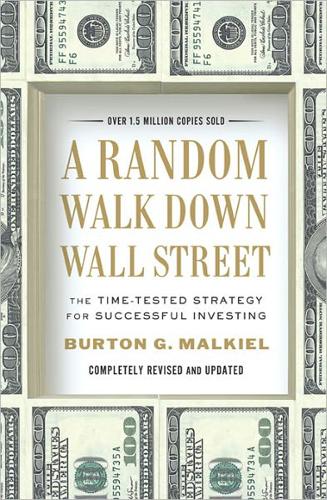
A Random Walk Down Wall Street: The Time-Tested Strategy for Successful Investing
by
Burton G. Malkiel
Published 10 Jan 2011
This theory might less charitably be called the “greater fool” theory. It’s perfectly all right to pay three times what something is worth as long as later on you can find some innocent to pay five times what it’s worth. The castle-in-the-air theory has many advocates, in both the financial and the academic communities. Robert Shiller, in his best-selling book Irrational Exuberance, argues that the mania in Internet and high-tech stocks during the late 1990s can be explained only in terms of mass psychology. At universities, so-called behavioral theories of the stock market, stressing crowd psychology, gained favor during the early 2000s at leading economics departments and business schools across the developed world.
…
The Internet was associated with both: it represented a new technology, and it offered new business opportunities that promised to revolutionize the way we obtain information and purchase goods and services. The promise of the Internet spawned the largest creation and largest destruction of stock market wealth of all time. Robert Shiller, in his book Irrational Exuberance, describes bubbles in terms of “positive feedback loops.” A bubble starts when any group of stocks, in this case those associated with the excitement of the Internet, begin to rise. The updraft encourages more people to buy the stocks, which causes more TV and print coverage, which causes even more people to buy, which creates big profits for early Internet stockholders.
…
Investors then began to purchase common stocks for no other reason than that prices were rising and other people were making money, even if the price increases could not be justifiable by fundamental reasons such as the growth of earnings and dividends. As the economic historian Charles Kindleberger has stated, “There is nothing so disturbing to one’s well-being and judgment as to see a friend get rich.” And as Robert Shiller, author of the best-selling Irrational Exuberance, has noted, the process feeds on itself in a “positive feedback loop.” The initial price rise encourages more people to buy, which in turn produces greater profits and induces a larger and larger group of participants. The phenomenon is another example of the Ponzi scheme that I described in chapter 4, in connection with the Internet bubble.
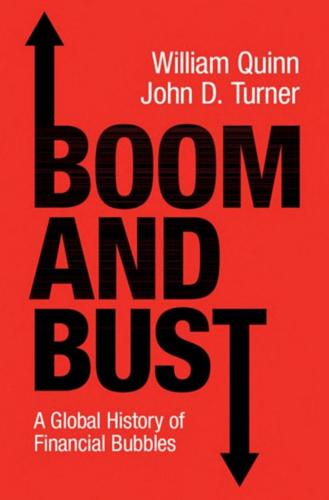
Boom and Bust: A Global History of Financial Bubbles
by
William Quinn
and
John D. Turner
Published 5 Aug 2020
Sir Isaac Newton, one of the most brilliant and influential scientists in all of history, lost a fortune by investing in the South Sea Bubble. When questioned about his losses, he is reputed to have said ‘that he could not calculate the madness of the people’.29 This madness-of-crowds hypothesis has been refined and expanded by the likes of Kindleberger, John Kenneth Galbraith and, most recently, Nobel Laureate Robert Shiller.30 Shiller and other economists argue that bubbles can largely be explained by behavioural economics, with cognitive failings and psychological biases on the part of investors causing prices to rise beyond their objective value.31 A subset of investors, for example, may suffer from an overconfidence bias, whereby they overestimate the future performance of a company stock, or they may have a representativeness bias, whereby they incorrectly extrapolate from a series of good news announcements and overreact.32 Other investors may simply follow or emulate this subset of investors simply because of herd behaviour and naivety on their part.33 The view that bubbles are largely a product of irrationality has been contradicted by economists who, like Nobel Laureate Eugene Fama, believe investors to be rational and markets to be efficient.34 Much recent research on the subject has thus focused on establishing whether a particular bubble was ‘rational’ or not.35 This is unfortunate, because the rational/irrational framework is almost useless for understanding bubbles.
…
The S&P 500 index, covering the largest US-based companies, rose by 115 per cent between January 1990 and 156 THE DOT-COM BUBBLE December 1996, prompting concern that the equity market was overheating. These gains appeared to be somewhat out of proportion with the money being made by its constituent firms. Robert Shiller’s cyclically adjusted price-to-earnings ratio (CAPE) stood at 28, meaning that S&P 500 companies were, after adjusting for the business cycle, valued at an average of 28 times their annual earnings. This was well above the longterm average of 15, leading Shiller to advise the Federal Reserve that a correction was due.19 Alan Greenspan, the Federal Reserve’s Chairman, gave what would become an iconic speech 3 days later, in which he questioned the point at which rising asset prices could be said to result from ‘irrational exuberance’ rather than changes in their intrinsic value.
…
The Tiger Group of hedge funds began to bet against technology firms in 1998, underperforming its rivals for the next 2 years as a result. In the first quarter of 2000, its investors lost patience and withdrew their funds, forcing its closure only weeks before its strategy would have paid off.78 Perhaps the most influential explanation to emerge from the DotCom Bubble was that of Robert Shiller, whose bestseller Irrational Exuberance was published just as the bubble began to burst. While this book is most famous for emphasising the role of psychological factors in 168 THE DOT-COM BUBBLE driving share prices, this was only one part of a hypothesis that also referenced the aforementioned incentive problems, steady inflation, tax cuts and cultural factors.79 The long list of precipitating factors made it difficult to ascertain the relative importance of each one, but in part this reflected the difficulty of explaining a bubble which could not be neatly attributed to a single cause.
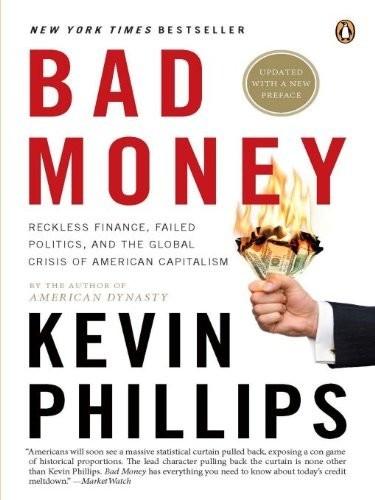
Bad Money: Reckless Finance, Failed Politics, and the Global Crisis of American Capitalism
by
Kevin Phillips
Published 31 Mar 2008
Moody’s Economy.com estimated that the total for 2007 would reach 1.7 million, up from 1.26 million in 2006, through a “self-reinforcing downward cycle” of falling home prices, loan defaults, and credit tightenings.9 The public-relations-minded National Association of Realtors was slow to accept the inevitability of an outright decline—it finally did so in late summer—because year-over-year slippage would mark the NAR index’s first anual downturn of home prices since its launch in 1950. But outside measurement-takers had less compunction. The relatively new S&P/Case-Shiller Home Price Index, monitoring home prices in twenty major metropolitan areas, reported a 3.4 percent decline between June 2006 and June 2007.10 More scarily, Robert Shiller, the Yale economist who made his name predicting the fate of the technology stock bubble, pictured housing’s downfall in comparable terms. He told a late-August conference that home prices in some cities might fall by as much as half if the gathering bust could not be contained.11 If so, losses by U.S. homeowners could reach $10 trillion, more than the $7 trillion lost in the 2000-2002 stock market bust led by the decline of the technology-heavy NASDAQ index.
…
Finally, the thirty-first day of a painful month concluded with a much-publicized conference in Jackson Hole, Wyoming, the majestic onetime fur trappers’ rendezvous, the twenty-ninth in an annual series underwritten by the Federal Reserve Bank of Kansas City. This assemblage neatly book-ended the month’s surprises as participants came away from speeches—by Harvard’s Martin Feldstein, Robert Shiller the home-price Cassandra, German central bank chief Axel Weber, and others—convinced that a rougher endgame than they had hoped for was likely. “I came to Jackson Hole thinking there would be no recession,” said Susan Wachter, a professor of real estate at Pennsylvania’s Wharton School, “but I’m leaving thinking we could well have one.”29 When those events pass into the history books, the more detailed accounts will surely confect some of those unexpected German state bank casualties, fearful New York Stock Exchange openings, extraordinary final-hour Dow surges (possibly Washington-orchestrated), mortgage-lender death spirals, $700 billion of central bank liquidity injections, Venezuelan and Iranian rants, eerie “Hindenburg Omen” fulfillments, a hedge fund disgraces, and trillion-dollar meltdowns into the sort of breathless You Are There chronicles that have offered insider-type postmortems on previous notable financial crises.
…
Several market watchers, however, took a deeper breath and reminded their audiences that 1987 had led into the 1990-91 downturns, and that interest-rate cuts hastily provided in 1998 had wound up feeding the speculative bubble and eventual market debacle of 2000-2002. Treasury Secretary Paulson told a financial audience that he thought the 2007 crisis would last longer than individual shocks like those of 1987 and the 1990s. And some representatives of the most pessimistic school—Robert Shiller and other housing-crash worriers—outlined the case for a much more powerful downturn. This book does not predict, or select among, any of these outcomes. This is too early a stage. It does, however, take note of the variety of scenarios laid out, most relevant to the circumstances and problems described in these pages.
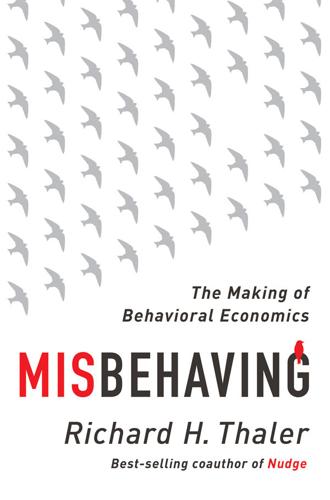
Misbehaving: The Making of Behavioral Economics
by
Richard H. Thaler
Published 10 May 2015
“What Happened When Marissa Mayer Tried to Be Steve Jobs.” New York Times Magazine, December 17. Available at: http://www.nytimes.com/2014/12/21/magazine/what-happened-when-marissa-mayer-tried-to-be-steve-jobs.html. Case, Karl E., and Robert J. Shiller. 2003. “Is There a Bubble in the Housing Market?” Brookings Papers on Economic Activity, no. 2: 299–362. Case, Karl E., Robert J. Shiller, and Anne Thompson. 2012. “What Have They been Thinking? Home Buyer Behavior in Hot and Cold Markets.” Working Paper 18400, National Bureau of Economic Research. Chang, Tom Y., Samuel M. Hartzmark, David H. Solomon, and Eugene F.
…
At the end we arrive in London, at Number 10 Downing Street, where a new set of exciting challenges and opportunities is emerging. My only advice for reading the book is stop reading when it is no longer fun. To do otherwise, well, that would be just misbehaving. ________________ * One economist who did warn us about the alarming rate of increase in housing prices was my fellow behavioral economist Robert Shiller. 2 The Endowment Effect I began to have deviant thoughts about economic theory while I was a graduate student in the economics department at the University of Rochester, located in upstate New York. Although I had misgivings about some of the material presented in my classes, I was never quite sure whether the problem was in the theory or in my flawed understanding of the subject matter.
…
Miller’s talk came in the afternoon session of the last day, chaired by Eugene Fama, another Chicago faculty member and a strong defender of the rational point of view. The other speaker during that session was Allan Kleidon, who like Miller was not so much presenting new research of his own, but rather attacking a paper by Robert Shiller that we will discuss in detail in chapter 24. Shiller was given the role of discussant, along with two efficient market defenders, Richard Roll and Steve Ross. Shefrin and Statman could only heckle from the audience. Clearly, during this part of the program the deck was stacked. Chalk it up to home field advantage.
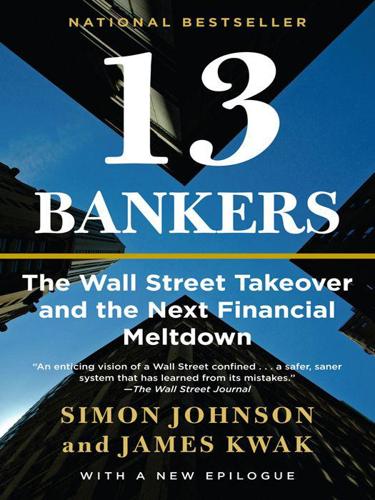
13 Bankers: The Wall Street Takeover and the Next Financial Meltdown
by
Simon Johnson
and
James Kwak
Published 29 Mar 2010
Terry Pristin, “Risky Real Estate Deals Helped Doom Lehman,” The New York Times, September 16, 2008, available at http://www.nytimes.com/2008/09/17/realestate/commercial/17real.html. 22. See Robert J. Shiller, The Subprime Solution: How Today’s Global Financial Crisis Happened, and What to Do About It (Princeton: Princeton University Press, 2008), 30–34. Data for Figure 5-1 are from Robert Shiller, available at http://www.econ.yale.edu/~shiller/data.htm and used with his permission. Shiller’s historical housing data series was first used in Robert Shiller, Irrational Exuberance (Princeton: Princeton University Press, 2000) and later in Shiller, The Subprime Solution, supra. 23.
…
Increased Wall Street demand for mortgages (to feed the securitization pipeline) funneled cheap money to mortgage lenders, who sent their sales forces out onto the streets in search of more borrowers; by the early 2000s, many prime borrowers had already refinanced to take advantage of low rates, and so subprime lending became a larger and larger share of the market. And the cycle continued. Figure 5-1: Real U.S. Housing Prices, 1890–2009 Source: Robert Shiller, Historical Housing Market Series. Used by permission of Mr. Shiller. Data were originally used in Robert Shiller, Irrational Exuberance (Princeton: Princeton University Press, 2000). Ordinarily, the instinct for financial self-preservation should prevent lenders from making too many risky loans. The magic of securitization relieved lenders of this risk, however, leaving them free to originate as many new mortgages as they could.
…
This belief reflects a general economic principle; given perfectly rational actors with perfect information and no externalities, all transactions should be beneficial for both parties. But few economists ever believed that these assumptions actually held in the real world. And over the next few decades, dozens of leading economists such as Joseph Stiglitz, Robert Shiller, and Larry Summers set about knocking holes in the Efficient Market Hypothesis.44 Brad DeLong, Andrei Shleifer, Summers, and Robert Waldmann created a model showing that “noise trading can lead to a large divergence between market prices and fundamental values.”45 Even Fischer Black (of Black-Scholes fame) agreed.
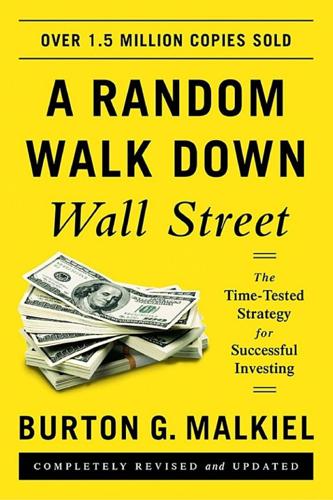
A Random Walk Down Wall Street: The Time-Tested Strategy for Successful Investing (Eleventh Edition)
by
Burton G. Malkiel
Published 5 Jan 2015
This theory might less charitably be called the “greater fool” theory. It’s perfectly all right to pay three times what something is worth as long as later on you can find some innocent to pay five times what it’s worth. The castle-in-the-air theory has many advocates, in both the financial and the academic communities. The Nobel laureate Robert Shiller, in his book Irrational Exuberance, argues that the mania in Internet and high-tech stocks during the late 1990s can be explained only in terms of mass psychology. At universities, so-called behavioral theories of the stock market, stressing crowd psychology, gained favor during the early 2000s at leading economics departments and business schools across the developed world.
…
The Internet was associated with both: it represented a new technology, and it offered new business opportunities that promised to revolutionize the way we obtain information and purchase goods and services. The promise of the Internet spawned the largest creation and largest destruction of stock market wealth of all time. Robert Shiller, in his book Irrational Exuberance, describes bubbles in terms of “positive feedback loops.” A bubble starts when any group of stocks, in this case those associated with the excitement of the Internet, begin to rise. The updraft encourages more people to buy the stocks, which causes more TV and print coverage, which causes even more people to buy, which creates big profits for early Internet stockholders.
…
Investors then began to purchase common stocks for no other reason than that prices were rising and other people were making money, even if the price increases could not be justifiable by fundamental reasons such as the growth of earnings and dividends. As the economic historian Charles Kindleberger has stated, “There is nothing so disturbing to one’s well-being and judgment as to see a friend get rich.” And as Robert Shiller, author of the best-selling Irrational Exuberance, has noted, the process feeds on itself in a “positive feedback loop.” The initial price rise encourages more people to buy, which in turn produces greater profits and induces a larger and larger group of participants. The phenomenon is another example of the Ponzi scheme that I described in chapter 4, in connection with the Internet bubble.
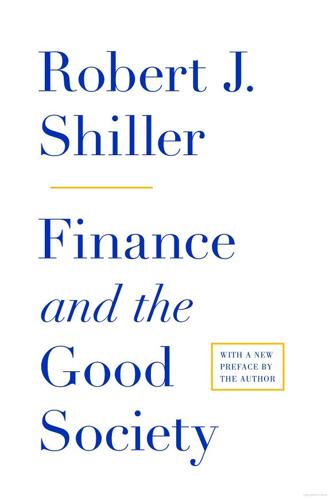
Finance and the Good Society
by
Robert J. Shiller
Published 1 Jan 2012
Finance and the Good Society Finance and the Good Society _______________ Robert J. Shiller With a new preface by the author Princeton University Press Princeton and Oxford Robert J. Shiller is the Arthur M. Okun Professor of Economics at the Cowles Foundation for Research in Economics and professor of nance at the International Center for Finance, Yale University. He is a research associate at the National Bureau of Economic Research in Cambridge, Massachusetts. He is also the co-creator of the Standard & Poor’s / CaseShiller Home Price Indices, and he serves on the index committee for these indices at Standard & Poor’s, New York.
…
“Limited Liability and the Corporation.” University of Chicago Law Review 52(1):89–117. Fabozzi, Frank J., and Franco Modigliani. 1992. Mortgage and Mortgage-Backed Securities Markets. Cambridge, MA: Harvard Business School Press. Fabozzi, Frank J., Robert J. Shiller, and Radu Tunaru. 2010. “Hedging Real-Estate Risk.” Journal of Portfolio Management, Special Real Estate Issue 35(5):92–103. Fair, Ray C., and Robert J. Shiller. 1990. “Comparing Information in Forecasts from Econometric Models.” American Economic Review 80(3):375–89. Falke, Armin. 2004. “Charitable Giving as a Gift Exchange: Evidence from a Field Experiment.” IZA Discussion Paper 1148.
…
Joseph, Jane E., Xun Liu, Yang Jiang, Donald Lynam, and Thomas H. Kelly. 2008. “Neural Correlates of Emotional Reactivity in Sensation Seeking.” Psychological Science 20(2):215–23. Jung, Jeeman, and Robert J. Shiller. 2005. “A Simple Test of Samuelson’s Dictum for the Stock Market.” Economic Inquiry 43(2):263–92. Kahneman, Daniel, and Amos Tversky. 1979. “Prospect Theory: An Analysis of Decision under Risk.” Econometrica 47(2):263–92. Kamstra, Mark, and Robert J. Shiller. 2010. “Trills Instead of T-Bills: It’s Time to Replace Part of Government Debt with Shares in GDP.” The Economists’ Voice 7(3), Article 5, http://www.bepress.com/ev/vol7/iss3/art5.
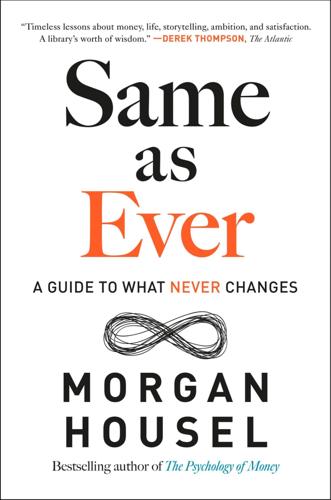
Same as Ever: A Guide to What Never Changes
by
Morgan Housel
Published 7 Nov 2023
GO TO NOTE REFERENCE IN TEXT In October 1929: “Fisher Sees Stocks Permanently High,” New York Times, October 16, 1929, www.nytimes.com/1929/10/16/archives/fisher-sees-stocks-permanently-high-yale-economist-tells-purchasing.html. GO TO NOTE REFERENCE IN TEXT I asked Robert Shiller: Author interview with Robert Shiller, 2012. GO TO NOTE REFERENCE IN TEXT the biggest problem of the United States: Frederick Lewis Allen, Since Yesterday (New York: Harper & Brothers, 1940), reproduced from Thurman W. Arnold, The Folklore of Capitalism (New Haven, CT: Yale University Press, 1937).
…
Haldane once showed: J. B. S. Haldane, “On Being the Right Size,” in Possible Worlds and Other Essays (London: Chatto & Windus, 1927), 18, available at searchworks.stanford.edu/view/8708294. GO TO NOTE REFERENCE IN TEXT Here’s how often the U.S. stock market: Robert J. Shiller, “Online Data Robert Shiller,” http://www.econ.yale.edu/~shiller/data.htm. GO TO NOTE REFERENCE IN TEXT Howard Schultz wrote to senior management: Howard Schultz, memo to Jim Donald, February 14, 2007, starbucksgossip.typepad.com/_/2007/02/starbucks_chair_2.html. GO TO NOTE REFERENCE IN TEXT Tire tycoon Harvey Firestone: Harvey S.
…
We look at these comments today and laugh. How could someone so smart be so blind to something so inevitable? If you follow the rule that the crazier the boom, the harder the bust, the Great Depression must have been obvious. But Fisher was a smart guy. And he wasn’t alone. In an interview years ago I asked Robert Shiller, who won the Nobel Prize for his work on bubbles, about the inevitability of the Great Depression. He responded: Well, nobody forecasted that. Zero. Nobody. Now there were, of course, some guys who were saying the stock market is overpriced. But if you look at what they said, did that mean a depression is coming?
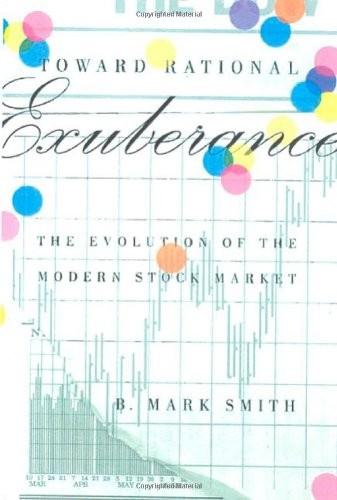
Toward Rational Exuberance: The Evolution of the Modern Stock Market
by
B. Mark Smith
Published 1 Jan 2001
Since no news development can be identified that could so decisively have changed investor expectations over so short a time span, it seemed intuitively obvious that the overall market must have been badly mispriced, either before or after the crash. This is the essence of the case made by critics of the efficient market hypothesis. It is based on the same reasoning employed by the economist Robert Shiller, who, as discussed in chapter 13, found that stock prices have been far more volatile over time than can be justified by changes in underlying fundamentals. After the 1987 crash, Robert Shiller wrote scathingly that “[the] efficient market hypothesis is the most remarkable error in the history of economic theory. This is just another nail in its coffin.”17 Harvard professor Lawrence Summers, later to be treasury secretary, agreed, noting, “If anyone did seriously believe that price movements are determined by changes in information about economic fundamentals, they got to be disabused of that notion by Monday’s 500-point movement.”18 The reasoning of Shiller and Summers has been expanded on by other scholars, who seek to replace the efficient market theory with what can best be called “behavioral” explanations of market movements.
…
Studies were published that isolated a “day of the week” effect, showing that stock prices tended to act differently on different days of the week. A 1977 analysis of low P/E stocks found that those stocks tended to perform better than did other stocks, implying that they were not efficiently priced.11 But the most crucial blow to the notion that markets were perfectly efficient was struck by Yale professor Robert Shiller. Shiller studied the aggregate dividends and earnings of the S&P 500 between 1871 and 1979 and concluded that the value of the market as measured by the index fluctuated far more than could be explained by changes in subsequent cash flows (dividends) to investors.12 According to the efficient market theory, the market should adjust instantaneously to new pieces of information pertinent to particular companies or to the overall market.
…
As Lynch put it, the heavily quantitative, theoretical analysis he was exposed to at Wharton “taught me that the things I saw happening at Fidelity couldn’t really be happening.”3 He went on to say, “It’s hard to support the popular academic theory that the market is [efficient] when you know somebody who just made a twentyfold profit in Kentucky Fried Chicken, and furthermore, who explained in advance why the stock was going to rise.”4 Lynch was also troubled by the seeming inconsistency between the idea of market efficiency and the fact that stock prices appeared to move around more than they should. (In this sense, he intuitively grasped the more rigorous argument made by economist Robert Shiller, cited in chapter 13, that stock prices are far more volatile than they should be if the market were truly efficient.) As his graduation from Wharton neared, Lynch made one additional, and very important, observation. He noticed that Wharton professors were not paid nearly as much as Fidelity managers and analysts.
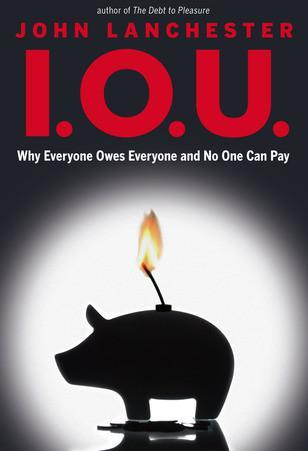
I.O.U.: Why Everyone Owes Everyone and No One Can Pay
by
John Lanchester
Published 14 Dec 2009
Except that the asshole was right: Enron’s accounting was so corrupt that when the nature of the frauds came out, the share price crashed from $90 to nothing, Skilling went to jail for twenty-four years, the auditor Arthur Andersen (one of the world’s five biggest accountancy firms) was put out of business, many employees lost their life savings, and many investors’ sentiments turned sharply against the stock market, since if a much-admired, much-analyzed blue-chip investment such as Enron could turn out to be worth nothing, whose accounts could you trust?* The economist Robert Shiller regularly sends out a questionnaire to investors, and the response in 2001, after the Enron crash, was that “Investors told us in no uncertain terms that the accounting scandals were a major factor in their withdrawal from the stock market.” As a result of the dot-com crash and the Enron implosion, the early years of the new millennium were a time when the money which chases the new idea, the go-go idea, had turned its attention away from the stock market.
…
Just to repeat the basic point: a 20 percent drop in U.S. home prices, not on the face of it an extraordinarily unlikely thing, was enough to cause a global banking crisis that nearly destroyed the entire system, followed by a global recession verging on depression. So why didn’t more economists seem aware of that possibility? Has the profession really drifted that far away from the real world? The short answer is that with some stellar exceptions—Robert Shiller, Nouriel Roubini, Paul Krugman, and John Kay conspicuous among them—yes, it has. The profession’s preference for textbook-perfect academic models of phenomena led to it being AWOL during the biggest economic crisis since the 1930s. A profession whose job it is to make sense of economic phenomena collectively failed.
…
I would like to thank The Atlantic for permission to quote Simon Johnson’s article “The Quiet Coup,” and the Nobel Foundation for permission to quote Daniel Kahneman’s Biography. SOURCES This is a list both of sources and of suggestions for further reading. These are all books from which I have learnt a great deal. Ahamed, Liaquat. Lords of Finance: The Bankers Who Broke the World. Penguin Press, New York, 2009. Akerlof, George, and Robert Shiller. Animal Spirits: How Human Psychology Drives the Economy, and Why It Matters for Global Capitalism. Princeton, Princeton, 2009. Bernstein, Peter. Against the Gods: The Remarkable Story of Risk. Wiley, New York, 1998. Bitner, Richard. Confessions of a Subprime Lender: An Insider’s Tale of Greed, Fraud, and Ignorance.
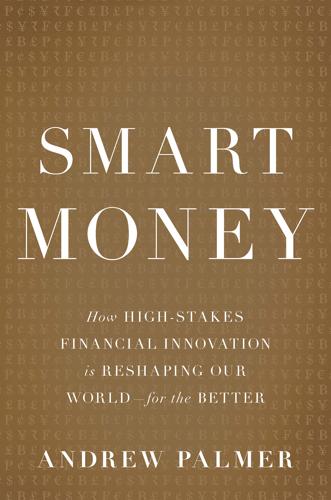
Smart Money: How High-Stakes Financial Innovation Is Reshaping Our WorldÑFor the Better
by
Andrew Palmer
Published 13 Apr 2015
Paul Krugman, a Nobel Prize–winning economist-cum-polemicist, has written that it is hard to think of any major recent financial breakthroughs that aided society.3 A conference held by the Economist in New York in late 2013 debated whether talented graduates should head to Google or Goldman Sachs. Vivek Wadhwa, a serial entrepreneur, spoke up for Google; Robert Shiller, another Nobel Prize–winning economist, argued for Goldman. Wadhwa had the easier task. “Would you rather have your children engineering the financial system creating more problems for us or having a chance of saving the world?” he asked. Even an audience of Economist readers in New York was pretty clear about its choice, plumping heavily for Mountain View over Wall Street.
…
When the figures come out on the proportion of graduates going into the financial services industry, the usual reaction is to assume that other industries simply must be more productive outlets for our brightest young people. But are other sectors really more useful? In his book Finance and the Good Society, Robert Shiller cites a statistic showing that 19.7 percent of America’s labor force in 2002 was engaged in some form of guarding activity.1 That doesn’t scream social utility. Financial innovation has made enormous contributions to society in the past, and it is primed to do so again. Indeed, the crisis of 2007–2008 has made it more likely that finance will be both creative and constructive.
…
Andrew Odlyzko, “Collective Hallucinations and Inefficient Markets: The British Railway Mania of the 1840s,” SSRN Electronic Journal (2010). 18. Peter Tufano, “Business Failure, Judicial Intervention and Financial Innovation: Restructuring US Railroads in the Nineteenth Century,” Business History Review (1997). 19. Robert Shiller, “The Invention of Inflation-Indexed Bonds in America” (NBER Working Paper 10183, December 2003). For a more comprehensive history, see Franklin Allen and Douglas Gale, Financial Innovation and Risk Sharing (Cambridge, MA: MIT Press, 1994). 20. Sometimes, they are more important. As policy makers try to find a way to avoid bailing out banks in a future financial crisis, one answer is a new security issued by banks called “contingent convertible” bonds, or CoCos for short.

Easy Money: Cryptocurrency, Casino Capitalism, and the Golden Age of Fraud
by
Ben McKenzie
and
Jacob Silverman
Published 17 Jul 2023
The only thing needed to own a piece of the “future of money” was a willingness to part with the current version of it. The more people invested, the more prices rose, resulting in even more FOMO that drew in yet more people—a self-reinforcing dynamic common to economic bubbles and Ponzi schemes. Quite simply, crypto had gone viral. In his 2019 book Narrative Economics, Nobel Prize–winning economist Robert Shiller examined how economic narratives spread by drawing on decades of research from fields such as history, sociology, anthropology, psychology, marketing, literary criticism, and perhaps most fittingly for our purposes, epidemiology. He defined an economic narrative as “a contagious story that has the potential to change how people make economic decisions, such as the decision to . . . invest in a volatile speculative asset.”
…
Times were good, and on paper it seemed as if almost everyone was richer, or at least a little more secure during some precarious times. But it was already clear that many of the economic gains during the pandemic were going to the ultrarich. And as an armchair economist, I saw far worse storm clouds forming on the horizon. Surveying the markets in the spring of 2021, I saw all the signs of what Robert Shiller describes as “naturally occurring Ponzi schemes.” The premise of a traditional Ponzi scheme is quite simple: A fraudster promises investors he can produce incredible returns if they give him money to invest on their behalf. Instead of legitimately investing that money, the con man pretends to have generated profits and uses that story to lure in more investors.
…
I’m an actor with a barely used undergraduate degree in economics. I earned some money in showbiz but I’ve never worked on Wall Street or in finance. Who was I to call out a multi-trillion-dollar industry that very fancy people on TV assured us was the future of everything? Then again, I knew about money and lying. And Robert Shiller said something else: “We can think of history as a succession of rare big events in which a story goes viral, often (but not always) with the help of an attractive celebrity (even a minor celebrity or fictional stock figure) whose attachment to the narrative adds human interest.” A dim light clicked inside this middle-aged dad’s feeble brain.
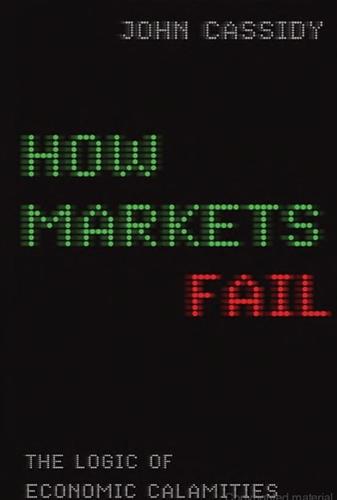
How Markets Fail: The Logic of Economic Calamities
by
John Cassidy
Published 10 Nov 2009
In the four-year period between December 1998 and December 2002 alone, house prices jumped by almost 70 percent in San Francisco and Boston, and by about 50 percent in Los Angeles, Miami, and Washington, D.C. (These figures and those that follow are not adjusted for inflation. They come from the S&P/Case-Shiller Home Price Indices, which the same Robert Shiller helped to develop.) FIGURE 18.1: HOUSE PRICES 1890–2008, along with Building Costs, Population, and Long-Term Government Bond Interest Rates, annual 1890–2008 (Source: Robert J. Shiller, Irrational Exuberance, Second Edition, © 2005 Princeton University Press. Reprinted by permission of Princeton University Press.) Overall, between the fourth quarter of 1996 and the fourth quarter of 2006, average house prices nationwide rose by 129 percent.
…
HOW MARKETS FAIL THE LOGIC OF ECONOMIC CALAMITIES JOHN CASSIDY FARRAR, STRAUS AND GIROUX • NEW YORK Farrar, Straus and Giroux 18 West 18th Street, New York 10011 Copyright © 2009 by John Cassidy All rights reserved First edition, 2009 Grateful acknowledgment is made for permission to reprint material from Irrational Exuberance, Second Edition, by Robert J. Shiller, copyright © 2005 by Princeton University Press. Reprinted by permission of Princeton University Press. Library of Congress Cataloging-in-Publication Data Cassidy, John, 1963– How markets fail : the logic of economic calamities / John Cassidy. p. cm. Includes bibliographical references and index.
…
In June 2005, The Economist said, “The worldwide rise in house prices is the biggest bubble in history. Prepare for the economic pain when it pops.” In the United States, the ratio of home prices to rents was at a historic high, the newsweekly noted, with prices rising at an annual rate of more than 20 percent in some parts of the country. The same month, Robert Shiller, a well-known Yale economist who wrote the 2000 bestseller Irrational Exuberance, told Barron’s, “The home-price bubble feels like the stock-market mania in the fall of 1999.” One reason these warnings went unheeded was denial. When the price of an asset is going up by 20 or 30 percent a year, nobody who owns it, or trades it, likes to be told their newfound wealth is illusory.
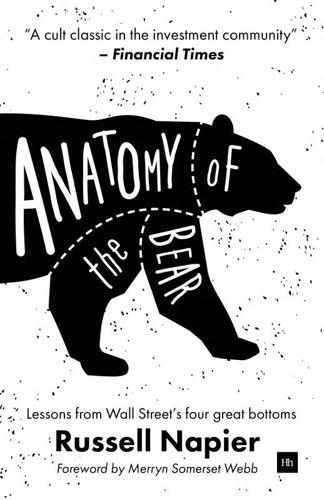
Anatomy of the Bear: Lessons From Wall Street's Four Great Bottoms
by
Russell Napier
Published 18 Jan 2016
Siegel, Stocks For The Long Run: The Definitive Guide to Financial Market Returns and Long-Term Investment Strategies (McGraw-Hill, 3rd Ed., 2002) Mark Singer, Funny Money (Alfred A. Knopf, 1985) Robert Shaplen, Kreuger, Genius and Swindler (Alfred A Knopf, 1960) Robert J. Shiller, Irrational Exuberance (Princeton University Press, 2000) Robert J. Shiller, Market Volatility (MIT Press, 2001) Robert J. Shiller and Stanley B. Resor, www.econ.yale.edu/~shiller/data.htm Andrew Smithers and Stephen Wright, Valuing Wall Street: Protecting Wealth in Turbulent Markets (McGraw-Hill, 2000) Robert Sobel, Panic on Wall Street: A History of America’s Financial Disaster’s (Macmillan, 1968) Robert Sobel, The Great Bull Market - Wall Street in the 1920s (W.
…
In Valuing Wall Street, they subject the most common valuation measures to various tests, importantly the reliability of those measures relative to subsequent returns as indicated by “hindsight value”. What we find is there were measures of value available to investors at the time that showed equities to be very cheap in 1921, 1932, 1949 and 1982. While accepting the usefulness of the cyclically adjusted PE - the chosen measure of value of Yale’s Robert Shiller - Smithers and Wright found that the q ratio has been a particularly accurate indicator of superior future returns. Given its usefulness, at least over the long term, we will use the q ratio to assess how equity valuations have altered over different periods. The q ratio is effectively a measure of the stock-market valuation of a company relative to the replacement value of its assets.
…
Cowles’ 1938 study shows earnings per share for the whole market declined 34% in the 40 years from 1881 until 1921, though earnings that year were very depressed. Figure 18 provides some of the low and high points for earnings per share. FIGURE 18. S&P COMPOSITE INDEX (1871=100) – PEAKS AND TROUGHS FROM INCEPTION Source: Robert Shiller, Market Volatility So what constitutes the normal level of earnings to be utilised in computing earnings growth over the period? If we use 1916 earnings, then the markets’ earnings growth over the 40 years was 250%. If we use 1921 earnings, then there was a contraction in earnings of 34%. Taking 1921 earnings as normal, the PE in January 1921 was 24.5x, but if 1916 earnings were considered normal, then the PE was 4.6x.
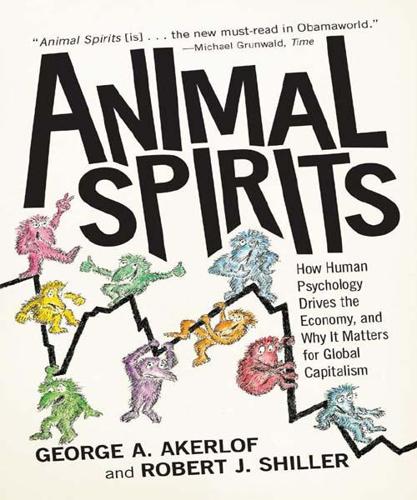
Animal Spirits: How Human Psychology Drives the Economy, and Why It Matters for Global Capitalism
by
George A. Akerlof
and
Robert J. Shiller
Published 1 Jan 2009
Animal Spirits Animal Spirits HOW HUMAN PSYCHOLOGY DRIVES THE ECONOMY, AND WHY IT MATTERS FOR GLOBAL CAPITALISM With a new preface by the authors GEORGE A. AKERLOF AND ROBERT J. SHILLER Princeton University Press • PRINCETON AND OXFORD George Akerlof is the Daniel E. Koshland Sr. Distinguished Professor of Economics at the University of California at Berkeley; co-director of the Program on Social Interactions, Identity and Well-Being of the Canadian Institute for Advanced Research; and a member of the board of directors of the National Bureau of Economic Research. Robert Shiller is the Arthur M. Okun Professor of Economics at the Cowles Foundation for Research in Economics and Professor of Finance at the International Center for Finance, Yale University; research associate at the National Bureau of Economic Research; and co-founder and principal of two U.S. firms that are in the business of issuing securities: MacroMarkets LLC and Macro Financial LLC.
…
We are very grateful for the invaluable help we have received from our research assistants Santosh Anagol, Paul Chen, Stephanie Finnel, Diego Garaycochea, Joshua Hausman, Jessica Jeffers, Mark Schneider, Hasan Seyhan, Ronit Walny, and Andy Di Wu, as well as from Carol Copeland, a most loyal administrative assistant. We are grateful for many comments offered by students in Robert Shiller’s Economics 527/Law 20083/Management 565 course, part of the macroeconomics sequence at Yale University, in which, over the course of five consecutive years, succeeding drafts of this book were used as a textbook. Robert’s wife, Virginia Shiller, a clinical psychologist, has been influential in impressing upon her husband the significance for economics of various principles of human psychology and has helped temper his technical impulses to make sure there is always a connection to economic reality.
…
Copyright © 2009 Princeton University Press Requests for permission to reproduce material from this work should be sent to Permissions, Princeton University Press Published by Princeton University Press, 41 William Street, Princeton, New Jersey 08540 In the United Kingdom: Princeton University Press, 6 Oxford Street, Woodstock, Oxfordshire OX20 1TW press.princeton.edu All Rights Reserved Ninth printing, and first paperback printing, with a new preface by the authors, 2010 Paperback ISBN: 978-0-691-14592-1 The Library of Congress has cataloged the cloth edition of this book as follows Akerlof, George A., 1940– Animal spirits : how human psychology drives the economy, and why it matters for global capitalism / George A. Akerlof and Robert J. Shiller. p. cm. ISBN 978-0-691-14233-3 (hardcover : alk. paper) 1. Economics—Psychological aspects. 2. Finance—Psychological aspects. 3. Capitalism. 4. Globalization. I. Shiller, Robert J. II. Title. HB74.P8A494 2009 330.12′2019—dc22 2008052649 British Library Cataloging-in-Publication Data is available This book has been composed in Adobe Galliard and Formata by Princeton Editorial Associates, Inc., Scottsdale, Arizona Printed on acid-free paper. ∞ Printed in the United States of America 10 9 Contents * * * Preface to the Paperback Edition Preface Acknowledgments INTRODUCTION Part One: Animal Spirits ONE Confidence and Its Multipliers TWO Fairness THREE Corruption and Bad Faith FOUR Money Illusion FIVE Stories Part Two: Eight Questions and Their Answers SIX Why Do Economies Fall into Depression?
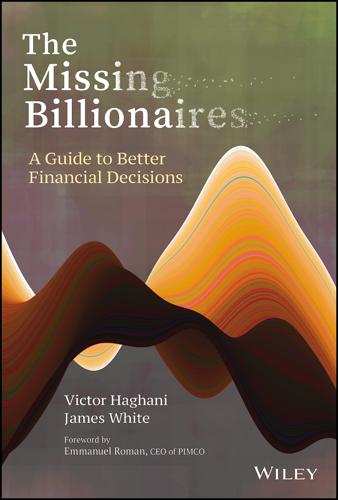
The Missing Billionaires: A Guide to Better Financial Decisions
by
Victor Haghani
and
James White
Published 27 Aug 2023
On the other hand safe assets—AAA mortgage securities, bank deposits, stable coins—are not supposed to be risky, and people rely on them being worth what they say they're worth, and when people lose even a little bit of confidence in them they crack completely” (Money Stuff, 2022). 1. Based on data kindly provided by Robert Shiller on http://www.econ.yale.edu/~shiller/data.htm 2. Robert Merton and Arun Muralidhar suggest that governments address population retirement needs by issuing securities indexed to national per capita income growth in their idea of standard‐of‐living indexed, forward‐starting, income‐only securities. See Merton & Muralidhar, 2020 . 3. Campbell, & Viceira, 2001; Cochrane, 2021; Bodie & Taqqu, 2011. 4. As usual, using data provided by Professor Robert Shiller. 5. See Mehra & Prescott, 1985; Grossman & Shiller, 1981. 6. See Cochrane (2011) for an excellent, broad survey of the topic. 16 What About Options?
…
We also recognize that all of us wrestle with a long list of cognitive biases in our decision‐making, but we trust that you, like us, want to conquer these foibles and make better decisions. Indeed, there is little else we can do, once we acknowledge that not deciding is itself a decision. For readers who want to build or refresh their knowledge of finance basics before diving into this book, we recommend taking a short, free online course such as “Financial Markets” by Robert Shiller on Coursera. Basic high school math proficiency, including comfort with ideas expressed using symbols and words, is all that's needed to fully understand every concept in this book. We have used shaded technical sidebars to give more mathematically inclined readers a deeper dive, but these can be skipped over without any loss of understanding.
…
The prolific writer and financial impresario Frank Fabozzi was the first to publish our work in his anthologies and in the academic journals for which he has served as editor. Our understanding has been shaped by many deep thinkers and writers in finance who have generously shared their insights through academic articles, lectures, and books, including John Campbell, Robert Shiller, John Cochrane, Phil Tetlock, Ed Thorp, Cliff Asness, and Howard Marks. We thank our coauthors of previous articles, which provide the foundation of several chapters of the book, including Rich Dewey, Vlad Ragulin, Larry Hilibrand, Jeff Rosenbluth, and Andy Morton. There are many people at Wiley who helped make this book a reality, and we thank them all, but in particular we must sing the praises of our publisher, Bill Falloon, whose wisdom, good nature, and patience are responsible for this book coming to life.

A Wealth of Common Sense: Why Simplicity Trumps Complexity in Any Investment Plan
by
Ben Carlson
Published 14 May 2015
Rick Ferri, “Expect Years of Pain Before Market Gains,” RickFerri.com, November 28, 2011, www.rickferri.com/blog/markets/expect-years-of-pain-before-market-gain/. 12. Ben Carlson, “Are Commodities for Trading or Investing?” A Wealth of Common Sense (blog), August 12, 2014, http://awealthofcommonsense.com/commodities-trading-investing/. 13. Robert J. Shiller, Irrational Exuberance (Princeton, NJ: Princeton University Press, 2000). 14. Robert Shiller online data, available at www.econ.yale.edu/∼shiller/data.htm. 15. Robert Shiller, “Why Home Prices Change (or Don't),” New York Times, April 13, 2013, www.nytimes.com/2013/04/14/business/why-home-prices-change-or-dont.html. CHAPTER 5 Defining Your Investment Philosophy Investment philosophy is really about temperament, not raw intellect.
…
Table 4.6 Every Cycle Is Unique Average Nominal Average Dividend Earnings GDP Inflation 10-Year Stock Bond Yield Growth Growth Rate Yield Returns Returns 1930s 5.5% –5.7% –1.4% –2.1% 2.9% –0.9% 4.0% 1940s 5.7% 9.9% 11.2% 5.6% 2.3% 8.5% 2.5% 1950s 4.9% 3.9% 6.3% 2.0% 3.0% 19.5% 0.8% 1960s 3.2% 5.5% 6.6% 2.3% 4.7% 7.7% 2.4% 1970s 4.0% 9.9% 9.7% 7.1% 7.5% 5.9% 5.4% 1980s 4.2% 4.4% 8.3% 5.5% 10.6% 17.3% 12.0% 1990s 2.4% 7.7% 5.6% 3.0% 6.7% 18.1% 7.4% 2000s 1.8% 0.6% 3.9% 2.6% 4.5% –1.0% 6.3% 2010s 2.0% 17.2% 2.1% 2.1% 2.5% 15.7% 4.2% Source: Robert Shiller. Try to find a pattern among those numbers. You will find no rhyme or reason from one decade to the next. There's no single indicator or variable that's going to give investors an edge. The only constant in the markets is the fact that they're cyclical. Nothing goes in one direction forever.
…
Real estate investment trusts (REITs), commercial real estate securities that can be diversified by geography and different types of real estate—apartments, office complexes, shopping centers, and so on—were up more than 10 percent a year in that time frame. You would think that because housing prices tend to go up most of the time that housing would be a worthwhile investment. Here's Robert Shiller, who the Case-Shiller Index is named after, on why this isn't the case: Here is a harsh truth about homeownership: Over the long haul, it's hard for homes to compete with the stock market in real appreciation. That's because companies whose shares are traded on a stock exchange retain a good share of their earnings to plow back into the business.
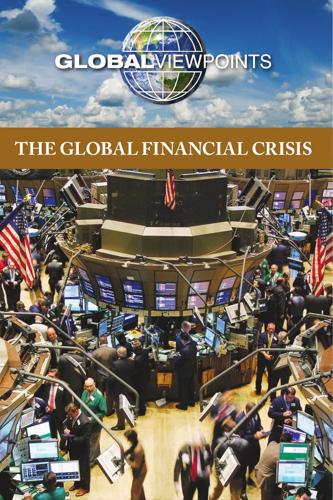
Global Financial Crisis
by
Noah Berlatsky
Published 19 Feb 2010
This is hard to accomplish, however, and it’s never enough. Unless people—at least most people—are willing to do what is right because it is right, our laws will be objects of mockery and abuse. First we need a change of heart. Perhaps we’ll then get the laws right too. 31 3 Viewpoint “Boom Thinking” Caused the Crisis Robert J. Shiller Robert J. Shiller is a professor of economics at Yale University and an economics columnist for the New York Times. In the following viewpoint, Shiller says that the boom in mortgage lending was fueled by a belief that housing prices would rise indefinitely. Shiller calls this belief a “social contagion”—an epidemic of a certain kind of thinking.
…
The Greed of Financial Institutions Caused the Crisis Oskari Juurikkala 27 Financial institutions wanted large profits, therefore they hid the risks they were taking from regulators. Better regulations are important, but businesspeople need to be more responsible and less greedy. 3. “Boom Thinking” Caused the Crisis Robert J. Shiller 32 Boom thinking is a kind of social contagion; once a commodity starts rising in price, people convince themselves and then each other that the price will keep going up. This happened in the United States with home prices, which rose to unsustainable levels. 4. The Weakness of Banking Regulations Caused the Crisis Vince Cable Some British banks have grown too big to fail, and perhaps too big for regulators to handle.
…
Regulators and experts also tend to be caught up in the enthusiasm, creating a speculative bubble that can have complicated and disastrous effects. As you read, consider the following questions: 1. Between 1997 and 2005, how much did homeownership rates in the United States increase, according to the U.S. Census? 2. According to Robert J. Shiller, with whom did Alan Greenspan have an overly strong ideological alignment? 3. What was the federal funds rate between mid-2003 and mid-2004? This text has been suppressed due to author restrictions. 32 Causes of the Global Financial Crisis This text has been suppressed due to author restrictions. 33 The Global Financial Crisis This text has been suppressed due to author restrictions. 34 Causes of the Global Financial Crisis This text has been suppressed due to author restrictions. 35 The Global Financial Crisis This text has been suppressed due to author restrictions. 36 Causes of the Global Financial Crisis U.S.
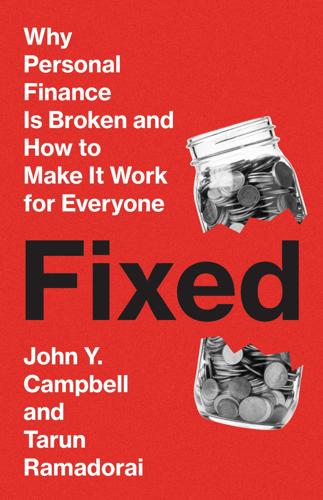
Fixed: Why Personal Finance is Broken and How to Make it Work for Everyone
by
John Y. Campbell
and
Tarun Ramadorai
Published 25 Jul 2025
As Adam Smith famously put it, “It is not from the benevolence of the butcher, the brewer, or the baker that we expect our dinner, but from their regard to their own self-interest.”7 When businesspeople compete for the business of alert customers who accurately perceive quality and price, they provide goods and services of each quality demanded at the lowest possible cost. But the same self-interested businesspeople are just as strongly motivated to supply the mistaken demands of confused customers. This pernicious behavior is what the Nobel Prize–winning economists George Akerlof and Robert Shiller call “phishing for phools.”8 The perversion of capitalism in the personal finance system is familiar in a different context. Until about 100 years ago, the marketplace for medicines was competitive and unregulated. As medical knowledge advanced, it became more and more difficult for ordinary people to distinguish legitimate treatments from fraudulent ones and real doctors from quacks.
…
This effect is illustrated in figure 6.2, which plots the CAPE ratio as a solid line and the subsequently realized ten-year real return on the US stock market as a dashed line. Since the early twentieth century there has been a strong tendency for these two lines to move in opposite directions.20 FIGURE 6.2. Cyclically adjusted price-earnings (CAPE) ratio and subsequent ten-year real returns. Source: authors’ calculations based on data from Robert Shiller’s website, http://www.econ.yale.edu/~shiller/data.htm. This reversal effect is probably due in part to overly hopeful expectations based on recent trends, as shortsighted, extrapolative investors pile into hot asset markets and drive stock prices up to unsustainable levels.21 These investors lose out in several ways.
…
While one might suspect racial animus as a cause for this behavior, Ayres and Siegelman show that the behavior is similar even at minority-owned dealerships and among minority car salespeople. 35. See, for example, Atif Mian, Ludwig Straub, and Amir Sufi, “The saving glut of the rich” (unpublished paper). 36. This is the behavior that Nobel Prize–winning economists George Akerlof and Robert Shiller call “Phishing for Phools” in the title of their 2015 book. 37. Cass Sunstein and the Nobel Prize–winning economist Richard Thaler pioneered the use of subtle changes to the choice architecture of finance and other domains to induce good outcomes for individuals by harnessing their inertia.
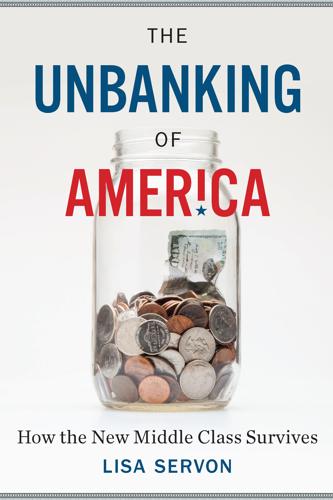
The Unbanking of America: How the New Middle Class Survives
by
Lisa Servon
Published 10 Jan 2017
White, “Why Banks Love Debit Cards Again,” Time, March 28, 2013. http://business.time.com/2013/03/28/why-banks-love-debit-cards-again/ Despite these two huge suits: Pew Charitable Trusts, “Checks and Balances,” p. 3. 34 “have lost an essential tool”: Jessica Silver-Greenberg and Robert Gebeloff, “Arbitration Everywhere: Stacking the Deck of Justice,” New York Times, DealBook blog, October 31, 2015. http://www.nytimes.com/2015/11/01/business/dealbook/arbitration-everywhere-stacking-the-deck-of-justice.html “they tend to do them”: Ibid. George Akerlof and Robert Shiller: George A. Akerlof and Robert Shiller, Phishing for Phools: The Economics of Manipulation and Deception (Princeton, NJ: Princeton University Press), p. xi. 36 made it a common catchphrase: Renee Haltom, “Failure of Continental Illinois,” Federal Reserve History, November 22, 2013. http://www.federalreservehistory.org/Events/DetailView/47 37 “other people’s money”: Other People’s Money is the title of Louis Brandeis’s 1914 treatise.
…
When banks make mistakes or do bad things,” Hackett says, “they tend to do them many times and to many people.” Banks are not the only type of business to engage in practices that aren’t in the best interest of consumers. In their book Phishing for Phools, the Nobel Prize–winning economists George Akerlof and Robert Shiller argue that the free market is set up to reward tricksters. Business people, they say, are under pressure to compete and to make the most profit possible. This environment leads them to engage in manipulation and deception. “The economic system,” Akerloff and Shiller write, “is filled with trickery.”
…
to manage regulatory risk: Ibid. Paul Krugman argued: Paul Krugman, “Making Banking Boring,” New York Times, April 9, 2009. http://www.nytimes.com/2009/04/10/opinion/10krugman.html?_r=0 Bibliography Akasha, Nan. “Money Archetypes and Guilt and Shame.” Nan Akasha blog, May 29, 2012. Akerlof, George A., and Robert Shiller. Phishing for Phools: The Economics of Manipulation and Deception. Princeton, NJ: Princeton University Press, 2015. Ardener, Shirley. “Microcredit, Money Transfers, Women, and the Cameroon Diaspora.” Afrika Focus, vol. 23, no. 2 (2010): 11–24. Arnett, Jeffrey J., and Joseph Schwab. “The Clark University Poll of Parents of Emerging Adults.”
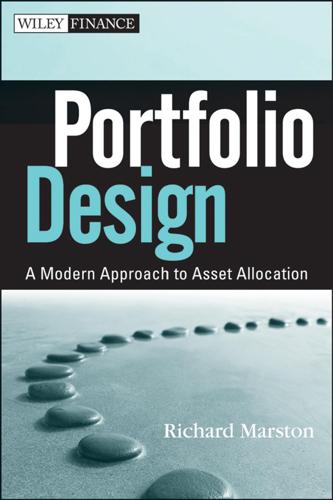
Portfolio Design: A Modern Approach to Asset Allocation
by
R. Marston
Published 29 Mar 2011
Stocks Long-Term Treasury Return Jul 53–May 54 Aug 57–Apr 58 Apr 60–Feb 61 Dec 69–Nov 70 Nov 73–Mar 75 Jul 81–Nov 82 Jul 90–Mar 91 Mar 01–Nov 01 Dec 07–Jun 09 Jan 53–Sept 53 Jul 56–Dec 57 Jul 59–Oct 60 Dec 68–Jun 70 Jan 73–Dec 74 Nov 80–Jul 82 Jun 90–Oct 90 Aug 00–Feb 03 Oct 07–Mar 09 −8.0% −14.3% −8.0% −26.3% −36.2% −16.6% −14.1% −42.5% −46.6% 1.2% 2.9% 8.9% −4.6% 6.6% 17.8% 0.1% 32.3% 23.4% The market peak and trough are determined by the monthly average of daily prices for the S&P 500 index. The S&P data is from Robert Shiller’s web site, http://www.econ.yale.edu/∼shiller/data.htm. The returns for large-cap U.S. stocks and Treasury bonds are from the 2010 SBBI Classic Yearbook (© Morningstar). The large-cap stock returns include dividends. by Standard & Poor’s (via the Zephyr StyleADVISOR database) is used instead.
…
In every recession, equities will be traced from their trough during the recession over the 12 months succeeding the trough. Table 1.5 lists dates for the nine recessions since 1951 including the second half of the double-dip recession(s) of 1980–82. The market trough is determined by the lowest monthly average of daily prices for the S&P 500 price index from Robert Shiller’s web site, http://www.econ.yale.edu/∼shiller/data.htm. The S&P 500 gain is based on P1: OTA/XYZ P2: ABC c01 JWBT412-Marston December 20, 2010 16:58 Printer: Courier Westford 14 PORTFOLIO DESIGN TABLE 1.5 S&P 500 Rallies After Recessions, 1951–2010 Recession months (NBER dating) Jul 53–May 54 Aug 57–Apr 58 Apr 60–Feb 61 Dec 69–Nov 70 Nov 73–Mar 75 Jul 81–Nov 82 Jul 90–Mar 91 Mar 01–Nov 01 Dec 07–Jun 09 Market Bottom Gain in first 12 months Sept 53 Dec 57 Oct 60 Jun 70 Dec 74 Jul 82 Oct 90 Feb 03 Mar 09 46.0% 43.4% 32.6% 41.9% 37.3% 59.3% 33.5% 38.5% 49.8% the total return on the S&P (including dividends) from the 2010 SBBI Classic Yearbook (©Morningstar).
…
Figure 2.5 shows the variation in P-E ratios for the S&P 500 index since 1951 as measured using the same methodology as P1: OTA/XYZ P2: ABC c02 JWBT412-Marston December 20, 2010 16:59 Printer: Courier Westford 32 PORTFOLIO DESIGN 50 40 30 20 10 0 1951 1961 1971 1981 1991 2001 FIGURE 2.5 Price-Earnings Ratios for S&P 500, 1951–2009 (Current Real Price Relative to 10-Year Average Real Earnings) Data Source: www.econ.yale.edu/∼Shiller described in Shiller (2000). Robert Shiller in his book, Irrational Exuberance (2000).12 Shiller compares the S&P 500 index for a given year with the average reported earnings of the S&P companies over the previous 10 years. Both series are expressed in real terms using the CPI. The rise in P-Es during the 1990s, in particular, introduced an upward trend into the average real return on equity.

The Wisdom of Crowds
by
James Surowiecki
Published 1 Jan 2004
People are still looking for information, but they believe that the ones who have it are the mavens, connectors, and salesmen (each of whom has a different kind of information). Do cascades exist? Without a doubt. They are less ubiquitous than the restaurant-going model suggests, since, as Yale economist Robert Shiller has suggested, people don’t usually make decisions in sequence. “In most cases,” Shiller writes, “many people independently choose their action based on their own signals, without observing the actions of others.” But there are plenty of occasions when people do closely observe the actions of others before making their own decisions.
…
That’s especially true when you consider that most investors are trying to evaluate only a small number of stocks, while the market has to come up with prices for more than five thousand of them. The fact that the market is, even under those conditions, smarter than almost all investors is telling. Even so, financial markets are decidedly imperfect at tapping into the collective wisdom, especially relative to other methods of doing so. The economist Robert Shiller, for instance, has shown convincingly that stock prices jump around a lot more than is justified by changes in the true values of companies. That’s very different from the NFL betting market or the IEM or even racetrack betting, where the swings in opinion are significantly milder and the crowd only rarely pulls a U-turn.
…
abstract_id=267770; and Suzanne Lohmann, “The Dynamics of Informational Cascades: The Monday Demonstrations in Leipzig, East Germany, 1989–91,” World Politics 47 (1994): 42–101. A rigorous model of cascades and the way networks function is in Duncan Watts, Six Degrees (New York: Norton, 2002). A remarkably rich and human picture of how cascades work in the real world can be found in Malcolm Gladwell, The Tipping Point (New York: Little, Brown, 2000). Robert Shiller, “Conversation, Information, and Herd Behavior,” American Economic Review 85 (1995): 181–85. While Shiller is skeptical of the ubiquity of cascades, in this paper he nonetheless emphasizes the importance of social influence, as a way of explaining herding behavior. A longer account of William Sellers’s campaign to standardize the screw can be found in James Surowiecki, “Turn of the Century,” Wired 10.01 (January 2002), http://www.wired.com/wired/archive/10.01/standards_pr.html.
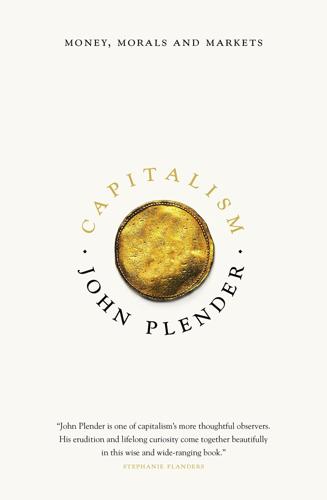
Capitalism: Money, Morals and Markets
by
John Plender
Published 27 Jul 2015
The point is underlined by the brilliant quote from Daniel Defoe with which Charles Mackay begins his book: Some in clandestine companies combine; Erect new stocks to trade beyond the line; With air and empty names beguile the town, And raise new credits first, then cry ’em down; Divide the empty nothing into shares, And set the crowd together by the ears.80 Missing from the work of efficient market theorists are the insights of behavioural finance, which brings the disciplines of psychology and sociology to the analysis of behaviour in financial markets. In discussing bubbles, economists such as Robert Shiller and Richard Thaler posit a feedback theory. When prices rise fast, the profits made by investors attract public attention, promoting word-of-mouth enthusiasm and encouraging expectations of further price rises. Commentators fuel the boom with rationalisations such as the idea that the economy has reached a new era of permanently higher returns.
…
Having made an initial 100 per cent profit of £7,000 on his shares in the South Sea Company, he was unlucky enough to go back into the market close to the top and lost £20,000, equivalent to £2.5 million in today’s money. A rueful Newton clearly grasped the logic of behavioural finance when he famously remarked: ‘I can calculate the motions of the heavenly bodies, but not the madness of people.’ Part of the psychology, as Robert Shiller points out, is that news of the profits of others leads people to a sense of futility in doing their relatively unrewarding day-to-day work and to a growing sense of envy. For many, including Pope, the stock market also appeared to hold the answer to their immediate financial problems. Dickens understood all this well.
…
When they turn out to be right, we anoint them. When they turn out to be wrong, we ignore them. They are typically right and wrong about half the time. Meantime, Queen Elizabeth II famously asked at the London School of Economics why no one had predicted the crisis. But many had. Among leading economists Robert Shiller and Raghuram Rajan, a former chief economist at the International Monetary Fund who subsequently became governor of the Indian central bank, had given due warning, as had Nouriel Roubini of New York University’s Stern School of Business. And numerous fund managers have a consistently good record in identifying bubbles.
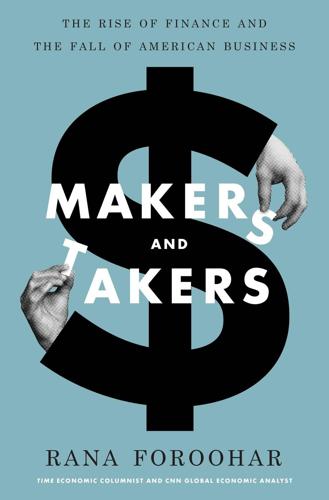
Makers and Takers: The Rise of Finance and the Fall of American Business
by
Rana Foroohar
Published 16 May 2016
And that’s a shame, because a 2015 survey of hundreds of high-level financial professionals found that more than a third had witnessed instances of malfeasance at their own firms and 38 percent disagreed that the industry puts a client’s best interests first.69 THE THEATER OF FINANCIALIZATION Of course, there are other theories about why financialization occurs. Nobel Prize winner Robert Shiller has described the “irrational exuberance” that he believes is a natural human tendency. The fact that we go repeatedly from boom to bust throughout history, moving like lemmings toward the New New Thing—be it tulips or collateralized debt obligations (CDOs)—points to the idea that there are strong psychological forces at work.
…
As Friedman famously said back in 1970, “the social responsibility of business is to increase its profits.”33 This went hand in hand with another idea, which was that the share price of a firm always perfectly reflected all known information, and thus stock prices were the best overall measure of corporate value. This idea, known as the “efficient-market hypothesis,” eventually won its creator, another Friedman disciple and Chicago academic, Eugene Fama, the Nobel Prize. Ironically, Fama won it jointly in 2013 with Robert Shiller, a Yale economist whose work basically said the opposite—that markets, and asset values, were influenced by a variety of things (emotions, biases, bad habits, and pure chance) that had little to do with efficiency, and that they didn’t always work well, or predictably.34 The joint prize to the two men, one representing the past and the other the future, expresses as well as anything the existential crisis that has beset the economics profession.
…
It’s a stark statement about who has profited, and who hasn’t, from the housing recovery.8 The federal government is still underwriting most new mortgages in one way or another, via a multitude of state-sponsored programs and federally backed bonds. If a healthy housing market is one that is stable, affordable, inclusive, and not primarily dependent on government life support, then “we’re a long way from there,” says Yale professor and housing expert Robert Shiller. How to create a truly healthy housing market is a question that matters to everyone, not just those of us who can’t afford homes. American consumers spend $2 trillion a year on housing, which triggers billions of dollars of additional spending in related industries like consumer goods, telecommunications and technology, automotives, construction, retail banking, etc.
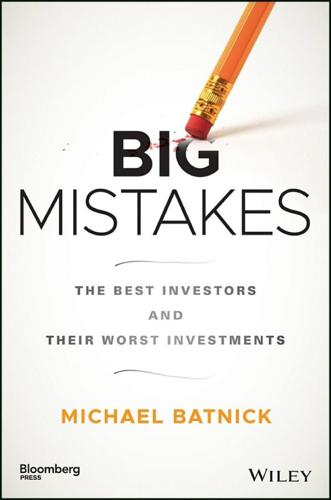
Big Mistakes: The Best Investors and Their Worst Investments
by
Michael Batnick
Published 21 May 2018
In other words, to go back to the example of the gambler who was tossing a mental coin between two teams, had the gambler been asked if they would like to change their mind, it's highly unlikely they would say yes. Confidence grows exponentially once you've decided on something you were previously unsure about. Overconfidence is so ingrained in our DNA that even if we're aware of it, shielding ourselves from it becomes supremely difficult. Robert Shiller has written, “Our satisfaction with our views of the world is part of our self‐esteem.”2 This applies to everyone, but especially to people in the financial business. David Dreman shows how overconfident financial analysts are in his book, Contrarian Investment Strategies: Analysts were asked for their high and low estimates of the price of a stock.
…
Making decisions ahead of time, especially decisions that involve admitting defeat, can help conquer one of the biggest hurdles investors face; looking in the mirror and seeing an ability that we just do not possess. Notes 1. Daniel Kahneman, Jack L. Knetsch, and Richard H. Thaler, “Anomalies: The Endowment Effect, Loss Aversion, and Status Quo Bias,” Journal of Economic Perspectives 5, no. 1 (Winter 1991): 193–206. 2. Robert Shiller, Irrational Exuberance (Princeton, NJ: Princeton University Press, 2000), 60. 3. David Dreman, Contrarian Investment Strategies: The Psychological Edge (New York: Free Press, 2012), 176. 4. Roger Lowenstein, Buffett (New York: Random House, 2008), 62. 5. Ibid., 93. 6. Warren Buffett, Partnership Letter, October 9, 1967. 7.
…
Warren Buffett, 2000 Berkshire Hathaway annual letter, February 28, 2001. 24. Warren Buffett, 2014 Berkshire Hathaway annual letter, February 25, 2015. CHAPTER 9 Bill Ackman Get Of Your Soapbox Our satisfaction with our views of the world is part of our self esteem and personal identity. —Robert Shiller I once saw the Nobel Prize–winning psychologist Daniel Kahneman say, “Ideas are part of who we are. They become like possessions. Especially publicly. I mean, flip flopping is a bad word. I love changing my mind!” This attitude stands in stark contrast to most investors, who loathe to do few things more than kill a previously held belief.
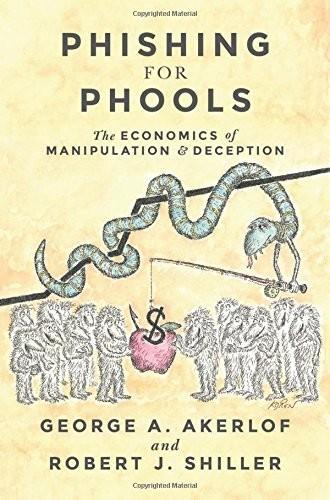
Phishing for Phools: The Economics of Manipulation and Deception
by
George A. Akerlof
,
Robert J. Shiller
and
Stanley B Resor Professor Of Economics Robert J Shiller
Published 21 Sep 2015
Agarwal, Driscoll, Gabaix, and Laibson, “The Age of Reason: Financial Decisions over the Life Cycle and Implications for Regulation,” Brookings Papers on Economic Activity (Fall 2009): 51–101. 13. But, of course, if Lightning could speak, as the parent of every two-year-old well knows, the taste would no longer be shrouded. 14. See, for example, Robert J. Shiller, “Do Stock Prices Move Too Much to Be Justified by Subsequent Changes in Dividends?” American Economic Review 71, no. 3 (June 1981): 421–36; and John Y. Campbell and Robert J. Shiller, “Cointegration and Tests of Present Value Models,” Journal of Political Economy 95, no. 5 (October 1987): 1062–88. 15. J. Bradford De Long, Andrei Shleifer, Lawrence H. Summers, and Robert J. Waldmann, “Noise Trader Risk in Financial Markets,” Journal of Political Economy 98, no. 4 (August 1990): 703–38. 16.
…
Phishing for Phools Phishing for Phools THE ECONOMICS OF MANIPULATION AND DECEPTION GEORGE A. AKERLOF AND ROBERT J. SHILLER Princeton University Press • PRINCETON AND OXFORD Copyright © 2015 by Princeton University Press Published by Princeton University Press, 41 William Street, Princeton, New Jersey 08540 In the United Kingdom: Princeton University Press, 6 Oxford Street, Woodstock, Oxfordshire OX20 1TW press.princeton.edu Jacket illustration © Edward Koren. Jacket design by Jason Alejandro. “(How Much Is That) Doggie in the Window?” Written by Bob Merrill. Copyright © 1953, 1981 Golden Bell Songs.
…
Paulson, On the Brink: Inside the Race to Stop the Collapse of the Global Financial System (New York: Business Plus, 2010), on the US Treasury; Raghuram Rajan, Fault Lines: How Hidden Fractures Still Threaten the World Economy (Princeton: Princeton University Press, 2010), on the financial system; Robert J. Shiller, Subprime Solution: How Today’s Global Financial Crisis Happened and What to Do about It (Princeton: Princeton University Press, 2008); Andrew Ross Sorkin, Too Big to Fail: The Inside Story of How Wall Street and Washington Fought to Save the Financial System (New York: Viking, 2009), on the US Treasury; Gillian Tett, Fool’s Gold: How the Bold Dream of a Small Tribe at J.
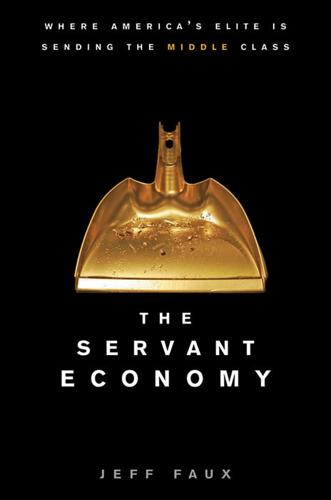
Servant Economy: Where America's Elite Is Sending the Middle Class
by
Jeff Faux
Published 16 May 2012
Dean Baker, Plunder and Blunder: The Rise and Fall of the Bubble Economy (San Francisco: Berrett-Kochler, 2009), 75. 22. Robert Shiller. Irrational Exuberance (New York: Crown, 2006), xiii. 23. Edmund L. Andrews, “Greenspan Concedes Error on Regulation,” New York Times, October 23, 2008. 24. Alan Greenspan, Age of Turbulence: Adventures in a New World (New York: Penguin Press, 2002), 508. 25. Alan Greenspan, “The Challenge of Central Banking in a Democratic Society,” speech to American Enterprise Institute, December 5, 1996. 26. Robert Rubin, In an Uncertain World: Tough Choices from Wall Street to Washington (New York: Random House, 2003), 257–258. 27. Lewis, “The End.” 28. Robert Shiller, “Challenging the World in Whispers, Not Shouts,” New York Times, November 2, 2008. 29.
…
Fourth, there was no evidence of an accelerated tightening of environmental restrictions since they had become common in the 1960s. Finally, noted Baker, as the prices of owner-occupied housing accelerated, rents had actually declined, suggesting that the housing-price boom was being driven not by a supply shortage but by a speculative boom. Other prominent analysts agreed. Robert Shiller, a codeveloper of the most widely used housing price index and the foremost U.S. housing economist, had been predicting a collapse of housing and stock market prices for several years. In a book called Irrational Exuberance, he wrote that “significant further rises in these markets could lead, eventually, to even more significant declines.”22 The late economist Edward Gramlich, then a member of the Federal Reserve Board of Governors, raised concerns about subprime lending practices and an overheated housing market as early as 2000.
…
The treatment of Born by Rubin, Greenspan, and Gramm was a warning to everyone throughout the government that dissent from the new economic orthodoxy would not be tolerated. There would be no questioning of the system that was feeding the global expansion of the U.S. finance industry. Self-censorship followed. Robert Shiller, who was a member of the economic advisory panel to the Federal Reserve Board, observed that in professional circles, “people compete for stature, and the ideas just lag behind. The economists who advise the policymakers are no different. We all want to associate ourselves with dignified people and dignified ideas.
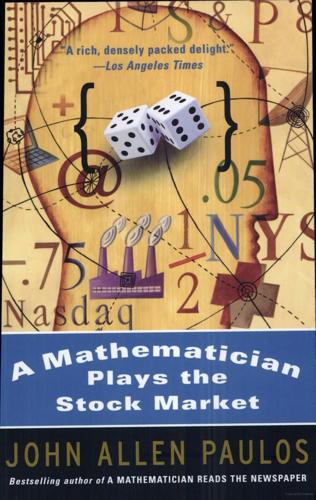
A Mathematician Plays the Stock Market
by
John Allen Paulos
Published 1 Jan 2003
Of course not, but I acted as if I did, and “averaging down” continued to seem like an irresistible opportunity. I believed in the company, but greed and fear were already doing their usual two-step in my head and, in the process, stepping all over my critical faculties. Emotional Overreactions and Homo Economicus Investors can become (to borrow a phrase Alan Greenspan and Robert Shiller made famous) irrationally exuberant, or, changing the arithmetical sign, irrationally despairing. Some of the biggest daily point gains and declines in Nasdaq’s history occurred in a single month in early 2000, and the pattern has continued unabated in 2001 and 2002, the biggest point gain since 1987 occurring on July 24, 2002.
…
The discounting of future dividends and the future stock price is dependent on your estimate of future interest rates, dividend policies, and a host of other uncertain quantities, and calling them fundamentals does not make them immune to emotional and cognitive distortion. The tango of exuberance and despair can and does affect estimates of stock’s fundamental value. As the economist Robert Shiller has long argued quite persuasively, however, the fundamentals of a stock don’t change nearly as much or as rapidly as its price. Ponzi and the Irrational Discounting of the Future Before returning to other applications of these financial notions, it may be helpful to take a respite and examine an extreme case of undervaluing the future: pyramids, Ponzi schemes, and chain letters.
…
And the rates of return will fall because prices will be higher. And stocks will therefore be riskier because of their lower returns. Viewed as less risky, stocks become risky; viewed as risky, they become less risky. This is yet another instance of the skittish, self-reflective, self-corrective dynamic of the market. Interestingly, Robert Shiller, a personal friend of Siegel, looks at the data and sees considerably lower stock returns for the next ten years. Market practitioners as well as academics disagree. In early October 2002, I attended a debate between Larry Kudlow, a CNBC commentator and Wall Street fixture, and Bob Prechter, a technical analyst and Elliot wave proponent.
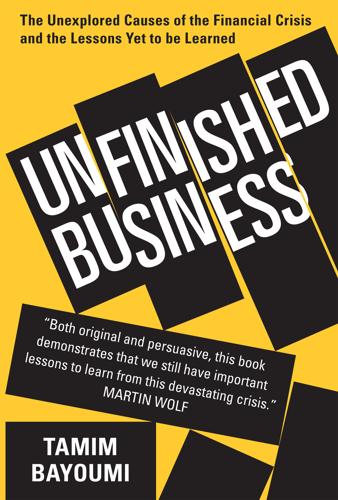
Unfinished Business
by
Tamim Bayoumi
Within academic finance, models of asset pricing based only on efficient markets had been found wanting. Empirical work had increasingly added variables that reflected market inefficiencies, such as the observation that smaller and relatively less liquid firms attracted higher returns. More generally, skeptics of the efficient markets hypothesis such as Professor Robert Shiller of Yale University argued that consistently following simple strategies such as investing in firms with low share prices compared to their earnings could achieve long-term returns modestly above the average without taking on more risk (the trading philosophy used by Warren Buffett). Against this, however, was always the rejoinder that this could be a statistical fluke and that if such models worked then why was the proponent not rich?
…
But there is a very real issue as to how the North Atlantic crisis could have come as such a surprise to the vast majority of observers and policymakers—the rare exceptions being those who saw financial imbalances as a clear and present danger either because of their background in emerging markets (such as Professor Nouriel Roubini of New York University) or their belief that markets were often irrational and needed to be closely supervised (such as Bill White of the Bank of International Settlements, Professor Robert Shiller of Yale, and IMF Economic Counsellor Raghuram Rajan). The inadequate intellectual apparatus was not simply unfortunate in the sense that it allowed the crisis to build. It also meant that policymakers needed to respond hurriedly to unexpected challenges within badly designed structures. This led to policy missteps such as the bankruptcy of Lehman Brothers and the premature tightening of fiscal policies in the Euro area.
…
The innate desire not to be seen as disruptive discourages individuals from questioning the perceived wisdom of other investors, as underlined, for example, in the account of how a few outliers did resist such pressure in the book about the financial crisis, Michael Lewis’s The Big Short. More generally, Professor Robert Shiller of Yale, one of the few prominent economists who recognized that the US housing market was in a massive bubble before the crisis, has been one of several financial economists to suggest that financial market bubbles can be modeled as social waves in which ideas catch fire and become self-reinforcing before eventually deflating.7 Such social eruptions can be modeled using similar tools to those used to examine epidemics, involving the probability of passing on an infection from one person to the other and a rate at which people stop being infectious, which define the height and longevity of the craze.
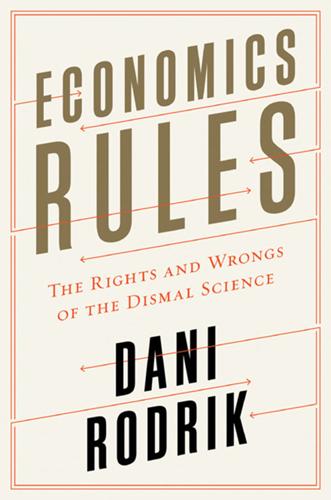
Economics Rules: The Rights and Wrongs of the Dismal Science
by
Dani Rodrik
Published 12 Oct 2015
Instead, they facilitated risk taking and overuse of leverage. They also connected disparate segments of the economy in ways that no one fully grasped at the time, ensuring that failure at one end would precipitate collapse at the other. With a few, but notable, exceptions, such as the future Nobel Prize winner Robert Shiller and the future governor of India’s Central Bank and Chicago economist Raghu Rajan, economists overlooked the extent of problems in housing and finance. Shiller had long argued that asset prices were excessively volatile and had focused on a bubble in housing prices.5 Rajan had fretted about the downside of what was then praised as “financial innovation” and warned as early as 2005 that bankers were taking excessive risks, earning a rebuke from Larry Summers, then president of Harvard, as a “Luddite.”6 That economists were mostly blind-sided by the crisis is undeniable.
…
But economists had placed excessive faith in some models at the expense of others, and that turned out to be a big problem. Many of the favored models revolved around the “efficient-markets hypothesis” (EMH).7 The hypothesis had been formulated by Eugene Fama, a Chicago finance professor who would subsequently receive the Nobel Prize, somewhat awkwardly, in the same year as Robert Shiller. It says, in brief, that market prices reflect all information available to traders. For an individual investor, the EMH means that, without access to inside information, beating the market repeatedly is impossible. For central bankers and financial regulators, the EMH cautions against trying to move the market in one direction or another.
…
Greg Mankiw, “News Flash: Economists Agree,” February 14, 2009, Greg Mankiw’s Blog, http://gregmankiw.blogspot.com/2009/02/news-flash-economists-agree.html. 4. Richard A. Posner, “Economists on the Defensive—Robert Lucas,” Atlantic, August 9, 2009, http://www.theatlantic.com/business/archive/2009/08/economists-on-the-defensive-robert-lucas/22979. 5. Robert Shiller, Irrational Exuberance, 2nd ed. (Princeton, NJ: Princeton University Press, 2005). 6. Raghuram G. Rajan, “The Greenspan Era: Lessons for the Future” (remarks at a symposium sponsored by the Federal Reserve Bank of Kansas City, Jackson Hole, WY, August 27, 2005), https://www.imf.org/external/np/speeches/2005/082705.htm; Charles Ferguson, “Larry Summers and the Subversion of Economics,” Chronicle of Higher Education, October 3, 2010, http://chronicle.com/article/Larry-Summersthe/124790. 7.
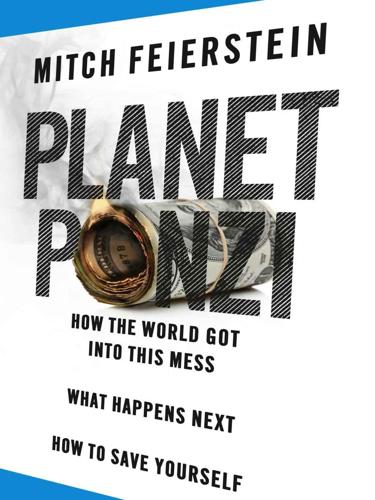
Planet Ponzi
by
Mitch Feierstein
Published 2 Feb 2012
It reminds us that volatility cuts in two directions. Two decades on from the collapse of its own bubble, the Japanese property market is more than 35% below its own ‘normal’ value. My own guess is that the US market will need to touch those levels before it will truly shake off the effects of the last decade. I’m not alone in thinking so. Robert Shiller himself said that a further fall of 10–25% ‘wouldn’t surprise me at all,’ commenting that, ‘in real terms, there has never been a bust of this proportion.’15 He’s right. We’re in new territory, desolate and hostile. We’ll talk about the implications for the banks in another chapter. Needless to say, those implications aren’t going to be pretty.
…
It’s no coincidence that the developed world’s most successful governments—currently Canada, Sweden, and Germany—have consistently resisted these temptations. If anything, the world economy (or at least the American, European, and Japanese parts of it) has lost value over the past two years. At the very least, the hole we’re in has just got a few trillion dollars deeper. But let’s return to the question of where equity markets ought to be. Robert Shiller, the un-Ponzi-ish economist who produced the housing index reviewed in the previous chapter, has produced a wonderful tool for examining fundamental value in the equity markets. We’ll look at that in a moment, but first a brief refresher on equity valuation. When you buy stock in a company, you become a part-owner of the firm, entitled to a share of its profits.
…
Now, we’ve already discussed the fact that the commercial property sector is in serious difficulties, but we’re simply going to set that aside for the time being—all $2.4 trillion of it—and simply examine the $11.3 trillion residential mortgage sector.8 We saw in an earlier chapter that the US housing market is in serious trouble. Almost a third of all home sales are triggered by financial distress. Almost a quarter of all homeowners are suffering negative equity. The noted economist Robert Shiller suggests that further house price falls of 10–25% are perfectly feasible.9 The truth is that house price falls of 25% simply don’t bear thinking about. If prices sank that low, countless homeowners would seek to walk away from their mortgages, or sell their houses, sooner than service their debts.

Cogs and Monsters: What Economics Is, and What It Should Be
by
Diane Coyle
Published 11 Oct 2021
So a number of economists have objected to my suggestion that the excesses of the financial markets have anything to do with economics at all. After all, many economists were in fact warning of unsustainable asset bubbles in the run-up to the crash (albeit that few specifically predicted a major banking crisis). Robert Shiller’s Irrational Exuberance (2000) was a bestseller, and its warning featured widely in the media around the world. It is correct therefore to argue that political philosophy, the power of financial institutions, their lobbying of government, the incentives of credit rating agencies, and sheer greed and dishonesty all bear much greater responsibility than economics, or even than options markets.
…
If politicians and regulators had really been listening to economists, the crisis might have been averted. There is also a good case to be made for the potential for financial markets to improve society. A well-ordered financial system helps individuals and businesses manage risk, and channels savings into productive investments. Robert Shiller, although famous as one of the economists who predicted something like the GFC, has also argued for an expansion of financial markets—for example, to help countries insure each other against the costs of natural disasters (Shiller 2000, 2003, 2013). But this defence overlooks the fundamental role played by economics in giving birth to modern financial markets.
…
When the third quarter of 2014 GDP growth figure was published on the first day of the 2015 UK General Election campaign, 30 March, the Daily Telegraph headline was: ‘UK economy grew at fastest rate for nine years in 2014’, while the Guardian went with: ‘Data shows slowest recovery since 1920s’ (Khan 2015; Allen and Watt 2015). Subsequently, an apparent ‘double dip’ recession in the aftermath of the GFC has been revised away in the latest statistics. The idea of narrative economics has advocates (and narratives as an element in policy are cropping up in other domains such as the natural sciences or AI). Robert Shiller (2017, 967) compares economic narratives to epidemics, infections of the mind. He writes: ‘The field of economics should be expanded to include serious quantitative study of changing popular narratives,’ adding, ‘Narratives can be based on varying degrees of truth.’ Similarly, George Akerlof and Dennis Snower argue that neither conventional nor behavioural economics offers empirically valid general accounts of the way economies develop, whereas considering the role of narratives can account for the realisation of one among a number of indeterminate outcomes: narratives teach social norms, shape individuals’ identities and motivations, and prompt their decisions (Akerlof and Snower 2016).

Inequality and the 1%
by
Danny Dorling
Published 6 Oct 2014
Work 4. Wealth 5. Health Conclusion: Towards a Fairer Society Acknowledgements Notes Index 1 Can We Afford the Superrich? The most important problem we are facing now, today … is rising inequality. Robert Shiller, recipient of the 2013 Nobel Prize in Economics1 Growing income and wealth inequality is recognised as the greatest social threat of our times. Robert Shiller suggests that the renewed greed of the top 1 per cent has had worse effects than even the financial crash of 2008. The top 1 per cent contribute to rising inequality, not just by taking more and more, but by suggesting that such greed is justifiable and using their enormous wealth to promote that concept.
…
Leigh Scott, ‘How the American University was Killed, in Five Easy Steps’, OpEdNews.com, 19 August 2012, at opednews.com. 3. Work 1. J. Stiglitz, ‘Inequality Is a Choice’, New York Times, 13 October 2013, at opinionator.blogs.nytimes.com. 2. Including a growing number of Nobel Laureates such as Joseph Stiglitz and Robert Shiller (see Chapter 1, above). Ever since Sweden’s own banking crisis, more laureates have been awarded to more sceptical economists. 3. K. A. Weeden and D. N. Grusky, ‘Inequality and Market Failure’, American Behavioural Scientist, 2013 (pre-print). 4. B. Bell and J. V. Van Reenen, ‘Extreme Wage Inequality: Pay at the Very Top’, Centre for Economic Performance, Occasional Paper 34 (2013), at cep.lse.ac.uk. 5.
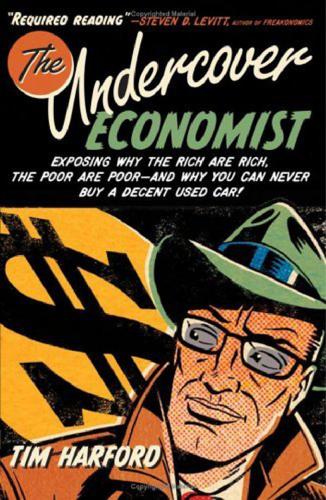
The Undercover Economist: Exposing Why the Rich Are Rich, the Poor Are Poor, and Why You Can Never Buy a Decent Used Car
by
Tim Harford
Published 15 Mar 2006
But what I saw was a message that it was bound to crash. Historically, long-term price-earnings ratios have always been around 16. They have often drifted away from 16 but have always returned to that figure. Yale economist Robert Shiller has devoted some effort to establishing this pattern of always drifting back to a P/E ratio of 16, and he has collected price/earnings ratios back to 1881. (Robert Shiller’s data is used in the graphs for both figures. In fact, the first figure is just an extract from the second. The impression the two graphs give is rather different.) What comes out very clearly from Shiller’s data is that a ratio over 30 is not normal.
…
(They are no longer emphasizing the fact that in Dow 36,000 they predicted that the market might take “three or five years” to soar . . . that is, until the end of 2004.) Glassman and Hassett argue that the stock market has been undervalued for a hundred years, so the historical data produced by Robert Shiller does not prove that investors in the future will make the same mistake. Perhaps investors have indeed been wrong for the past century. As we’ve already discovered, once economists abandon the view that people are acting sensibly, it is very hard for us to say very much at all. A more productive line of inquiry is to ask whether, as bubble valuations suggested, company profits will really be so dramatically much higher in the next few years.
…
Other sources for statistics: Amazon.com stock price data comes from the Amazon.com investor relations website and other information comes from Amazon.com’s 2003 Annual Report. Losses due to internet music piracy from “Rock profits and boogie woogie blues,” May 2, 2004, BBC Online News, http://news.bbc.co.uk/1/hi/business/ 3622285.stm. Data from Robert Shiller are available at his home page, http:// aida.econ.yale.edu/~shiller/. Chapter 7 See Prisoner’s Dilemma by William Poundstone (New York: Doubleday, 1992) to find out more about Von Neumann and the use of game theory in the cold war. For an analysis of poker models by Emile Borel, Von Neumann, John Nash, and Lloyd Shapley, see chapter 12 of Ken Binmore’s textbook Fun and Games (Lexington: D.
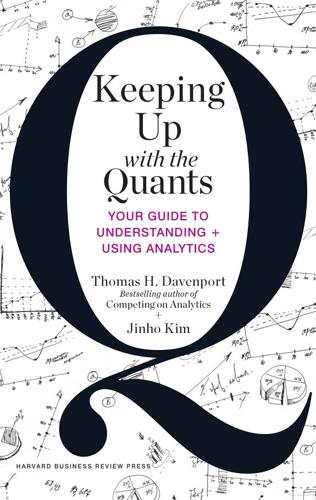
Keeping Up With the Quants: Your Guide to Understanding and Using Analytics
by
Thomas H. Davenport
and
Jinho Kim
Published 10 Jun 2013
Frei and Mathew Perlberg, “Discovering Hidden Gems: The Story of Daryl Morey, Shane Battier, and the Houston Rockets (B),” Harvard Business School case study (Boston: Harvard Business Publishing, September 2010), 1. Chapter 7 1. Personal communication with author. 2. “Surveying the Economic Horizon: A Conversation with Robert Shiller,” McKinsey Quarterly, April 2009, http://www.mckinseyquarterly.com/Surveying_ the_economic_horizon_A_conversation_with_Robert_Shiller_2345. 3. David Olive, “Getting Wise Before That ‘One Big Mistake,’” Toronto Star, December 17, 2007. 4. Charles Duhigg, The Power of Habit: Why We Do What We Do in Life and Business (New York: Random House, 2012). 5. Gary Loveman, “Foreword,” in Thomas H.
…
Those who lack understanding can get into trouble easily, as the Joe Cassano example at AIG Financial Products in chapter 1 illustrates. Many businesses increasingly use statistical and mathematical models in their business operations. Therefore, a key principle is that managers shouldn’t build analytical models into their businesses that they don’t understand. As Yale economist Robert Shiller puts it (in the context of explaining some of the reasons for the 2008–2009 financial crisis, which he anticipated), “You have to be a quantitative person if you’re managing a company. The quantitative details really matter.”2 Some organizations insist on a familiarity with math and models. Ed Clark, the CEO of TD Bank Group, who has a PhD in economics from Harvard, avoided the problems that many US banks encountered in the financial crisis.
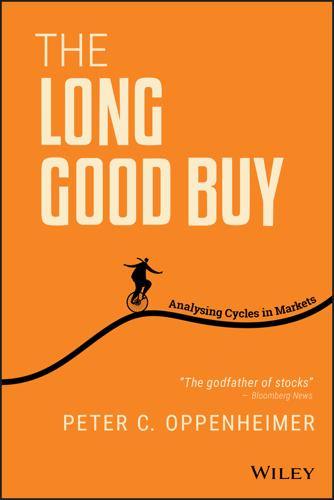
The Long Good Buy: Analysing Cycles in Markets
by
Peter Oppenheimer
Published 3 May 2020
This is because no individual will have more information than is already reflected in the market at any time, because the market is always efficient and prices change in fundamental factors (such as economic events) immediately. But theory is one thing and practice is another. Nobel Laureate Robert Shiller, for example, showed that while stock prices are extremely volatile over the short term, their valuation, or price/earnings ratio, provides information which makes them somewhat predictable over long periods (Shiller 1980), suggesting that valuation at least provides something of a guide to future returns.
…
Since the financial crisis, the interest in behavioural explanations and the psychology of markets has increased, and this information helps to better understand how and why financial cycles develop and can often significantly exaggerate the developments of economic and financial variables on which they are driven. Nobel Prize winners George A. Akerlof and Robert J. Shiller wrote that ‘the crisis was not foreseen, and is still not fully understood … because there have been no principles in conventional economic theories regarding animal spirits’.21 It is the impact of human behaviour and the way in which information is processed by humans that makes the forecasting of markets so much more complicated than forecasting physical systems such as the weather.
…
This finding was strengthened by the work of Fama and French (2002), which used a discounted dividend model (the DDM) to show that investors from 1926 onwards had an expected equity risk premium that averaged about 3%. Others have emphasised that spot valuations can also distort the expectations for returns. In particular, Robert Shiller in his book Irrational Exuberance (2000) argued that stocks can become overextended, so that returns can be above normal and then below normal for extended periods. He introduced the valuation measure called CAPE (cyclically adjusted price-to-earnings ratio), which uses 10 years of trailing earnings data in the denominator rather than just 1 year of forward expected earnings, as in the standard valuation tool of the P/E ratio.
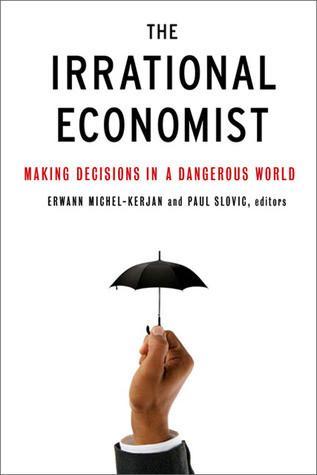
The Irrational Economist: Making Decisions in a Dangerous World
by
Erwann Michel-Kerjan
and
Paul Slovic
Published 5 Jan 2010
“A Survey of Behavioral Finance.” In George Constantinides, Milton Harris, and René Stulz, eds. Handbook of the Economics of Finance. New York: Elsevier Science. Campbell, John Y., and Robert J. Shiller (1987). “Cointegration and Tests of Present Value Models.” Journal of Political Economy 97, no. 5: 1062-1088. Higgins, Adrian (2005). “Why the Red Delicious No Longer Is.” Washington Post, August 5, p. A1. Jung, Jeeman, and Robert J. Shiller (2005). “Samuelson’s Dictum and the Stock Market.” Economic Inquiry 43, no. 2: 221-228. Keynes, John Maynard. (1936/2009). The General Theory of Employment, Interest and Money.
…
Professor Schoemaker received an MBA in finance, an MA in management, and a PhD in decision sciences from The Wharton School at the University of Pennsylvania. He was Howard Kunreuther’s first PhD student at Wharton, with whom he co-authored several papers and the book Decision Sciences, An Integrated Perspective, with Paul Kleindorfer and Howard Kunreuther (Cambridge University Press, 1993). Robert J. Shiller, Yale University Robert Shiller is the Arthur M. Okun Professor of Economics at Yale University and Professor of Finance and Fellow at the International Center for Finance, Yale School of Management. He received his PhD in economics from MIT in 1972. Professor Shiller has written on financial markets, financial innovation, behavioral economics, macroeconomics, real estate, and statistical methods as well as on public attitudes, opinions, and moral judgments regarding markets.
…
“Coping Rationally with Lapses from Rationality,” Eastern Economic Journal (Summer): 251-269. Reprinted in Thomas Schelling, Strategies of Commitment and Other Essays (Cambridge, MA: Harvard University Press, 2006.) 2 Berserk Weather Forecasters, Beauty Contests, and Delicious Apples on Wall Street GEORGE A. AKERLOF AND ROBERT J. SHILLER No one has ever made rational sense of the wild gyrations in financial prices, such as stock prices.1 These fluctuations are as old as the financial markets themselves. And yet these prices are essential factors in investment decisions, which are fundamental to the economy. Corporate investment is much more volatile than aggregate GDP, and it appears to be an important driver of economic fluctuations.
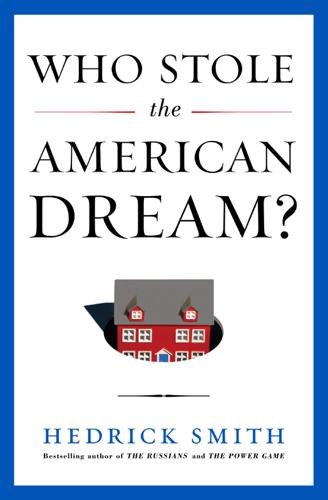
Who Stole the American Dream?
by
Hedrick Smith
Published 10 Sep 2012
The Wall Street Journal, June 9, 2007. 38 “Like a city with a murder law” Gramlich, “Booms and Busts.” 39 “What we forgot” Johnson and Kwak, 13 Bankers, 142–44. 40 No Bush official wanted Jo Becker, Sheryl Gay Stolberg, and Stephen Labaton, “White House Philosophy Stoked Mortgage Bonfire,” The New York Times, December 21, 2008. 41 Mortgage debt had reached dangerous levels David Cay Johnston, “Business; In Debate Over Housing Bubble, a Winner Also Loses,” The New York Times, April 11, 2004. 42 Shiller’s warning was more stark Robert J. Shiller, “Household Reactions to Changes in Housing Wealth,” Discussion Paper 1459 (New Haven, CT: Cowles Foundation, Yale University, April 2004), http://cowles.econ.yale.edu. 43 “May be the biggest bubble in U.S. history” Robert J. Shiller, cited in Paul Krugman, “Running Out of Bubbles,” The New York Times, May 27, 2005. 44 “When home prices do start down” Fleckenstein, Greenspan’s Bubbles, 145. 45 Greenspan dismissed talk of a housing “bubble” Alan Greenspan, “The Economic Outlook,” opening statement, Joint Economic Committee, U.S.
…
“Falling Apart and Falling Behind: Transportation Infrastructure Report 2011.” http://www.bafuture.org. Butz, William, Terrence K. Kelly, David M. Adamson, et al. “Will the Scientific and Technology Workforce Meet the Requirements of the Federal Government?” Rand Corporation, 2004. Case, Karl E., and Robert J. Shiller. “Is There a Housing Bubble?” Brookings Papers on Economic Activity 2, no. 2 (2003): 299–342. Case, Karl E., John M. Quigley, and Robert J. Shiller. “Wealth Effects Revisited 1978–2009.” Cowles Foundation for Research in Economics, Yale University, New Haven, CT, February 2011. Cassidy, John. “The Greed Cycle.” The New Yorker, September 23, 2002. Congressional Research Service.
…
Operating at full steam in 2005, housing, construction, and real estate were pumping an enormous stimulus into the nation’s economy—more than $1 trillion a year, by one economist’s estimate. But danger lay in what became the meteoric rise of housing prices. Cheap money and rising home prices made people feel richer than they really were, so everyone took big risks. People borrowed more than they should have. Yale University’s Robert J. Shiller, one of America’s premier housing economists, compared the price binge to a “rocket taking off,” a spurt without precedent, except after World War II. In the 114 years from the 1890s to 2004, Shiller reported, housing prices had risen only 66 percent, adjusted for inflation, or less than ½ percent a year on average.
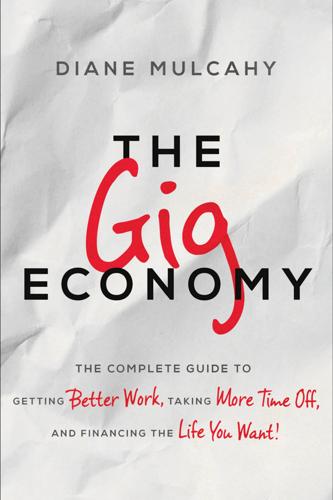
The Gig Economy: The Complete Guide to Getting Better Work, Taking More Time Off, and Financing the Life You Want
by
Diane Mulcahy
Published 8 Nov 2016
Pew Research Center, “The American Middle Class Is Losing Ground: No Longer the Majority and Falling Behind Financially,” Washington, D.C., December 2015. www.pewsocialtrends.org/files/2015/12/2015-12-09_middle-class_FINAL-report.pdf 5. Yale economist Robert Shiller analyzed home prices and concluded that “From 1890 to 1990, real inflation-corrected home prices were virtually unchanged.” www.cnbc.com/2014/12/08/where-to-put-your-cash-a-house-or-a-stock.html and www.usatoday.com/story/money/personalfinance/2014/05/10/why-your-home-is-not-a-good-investment/8900911/. Shiller’s housing market data is found at www.econ.yale.edu/~shiller/data.htm See also, Robert Shiller, “Buying a House is a ‘Consumption Choice,’ Not an Investment,” theweek.com/speedreads/563510/economist-robert-shiller-buying-house-consumption-choice-not-investment 6.
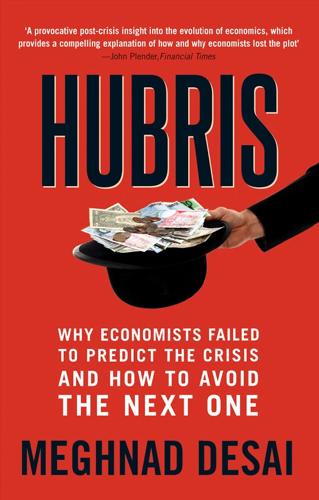
Hubris: Why Economists Failed to Predict the Crisis and How to Avoid the Next One
by
Meghnad Desai
Published 15 Feb 2015
While some economists urge abandonment of the fancy models and going back to the older theories of Keynes with a policy of greater public spending, the bulk of the economics profession in the best universities is as smug as ever. The award of the Nobel (actually the Royal Bank of Sweden) Prize in Economics in recent years is a clue to how unshaken the profession is in its self image. Thus in 2013 the Nobel Prize was given to Eugene Fama (Chicago), Lars Peter Hansen (Chicago) and Robert Shiller (Yale). Only Shiller is at all unorthodox, though a fully paid member of the mathematical macromodeling club. Thomas Sargent (formerly Minnesota now New York University) and Christopher Sims (Princeton) received the Prize in 2011 and both are original contributors to the “new classical economics” paradigm which is thought to have been discredited by the recession.
…
The idea is associated with the Chicago economist Eugene Fama, who did extensive statistical research on stock prices. The result was that the change in a stock price between today and tomorrow could not be predicted from the change over the previous 24 hours or earlier. When he was jointly awarded the Nobel Prize in 2013 with Lars Peter Hansen, also of University of Chicago, and Robert Shiller of Yale University, it was for “empirical analysis of asset prices.” What this implied is that in any market where there are many participants and plentiful information, the buyers and sellers will form their best expectations depending on all the information available. An important ingredient of this information is their knowledge of how prices are determined by demand and supply.
…
The efficient market hypothesis became not just a hypothesis but also a revealed truth. Thus bubbles – the movement of the price of an asset, usually upward – were ruled out on the basis of EMH. There were long debates about the occurrence of bubbles, with new classical economists treating the possibility as absurd and Keynesians taking up bubbles as their disproof of EMH. Robert Shiller, who had argued that the stock market in the 1990s was in a fervor of “irrational exuberance” since stock prices bore little relation to underlying fundamentals, asserted the theoretical and empirical possibility of bubbles. A similar story can be told about rational expectations (RE). Expectations used to mean your notion of what might be the course of some variable tomorrow or next week.
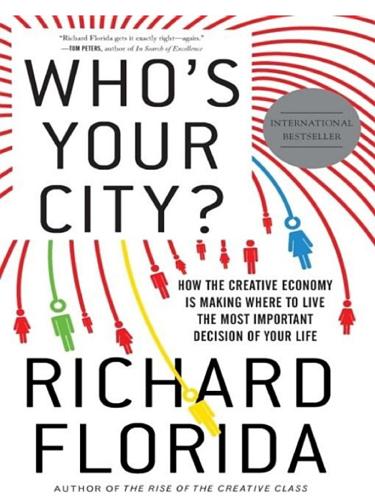
Who's Your City?: How the Creative Economy Is Making Where to Live the Most Important Decision of Your Life
by
Richard Florida
Published 28 Jun 2009
Bureau of the Census, American Community Survey, www.census.gov/acs/www. 2 Peter Coy, “The Richest Zip Codes-and How They Got That Way,” Business Week, April 2, 2007. 3 Knight Frank, 2008 Annual Wealth Report: Prime Residential Property, Knight Frank UK, 2008. 4 Joseph Gyourko, Christopher Mayer, and Todd Sinai, “Superstar Cities,” National Bureau of Economic Research, Working Paper no. 12355, July 2006. 5 Robert Shiller, “Superstar Cities May be Investors’ Superstardust,” Shanghai Daily, May 22, 2007, www.taipeitimes.com/News/editorials/archives/2007/05/20/2003361715. 6 Robert Shiller, Historic Turning Points in Real Estate, Yale University, Cowles Foundation for Research in Economics Discussion Paper no. 1610, June 2007. Available at http://cowles.econ.yale.edu/P/cd/d16a/d1610.pdf. Detailed data from the Case-Shiller Home Price Index are available at http://macromarkets.com/csi_housing/sp_caseshiller.asp.
…
With the rise of a spiky world organized around a relatively small number of global megaregions, we may be entering a new phase in real estate in which the housing market splits into globally oriented centers where prices rise considerably over time and local ones where prices are stable or, in some cases, decline. However, not all economists think that high real estate prices in superstar cities are here to stay. Among those who see this trend ending is Yale economist Robert Shiller, author of the best-selling Irrational Exuberance, which predicted the collapse of tech stocks in the early 2000s. In a May 2007 op-ed, Shiller asked, “Why should home values in glamour cities increase forever?” 5 To be sure, there is no way to increase the size of superstar cities like New York or London.
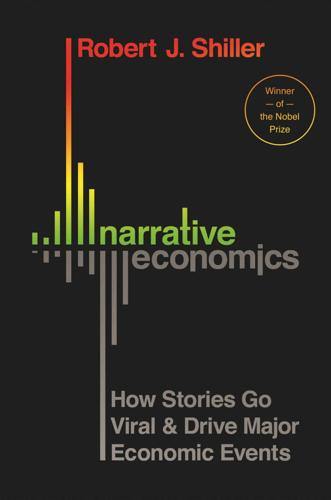
Narrative Economics: How Stories Go Viral and Drive Major Economic Events
by
Robert J. Shiller
Published 14 Oct 2019
narrative economics Robert J. Shiller narrative economics How Stories Go Viral & Drive Major Economic Events princeton university press princeton & oxford Copyright © 2019 by Robert J. Shiller Requests for permission to reproduce material from this work should be sent to permissions@press.princeton.edu Published by Princeton University Press 41 William Street, Princeton, New Jersey 08540 6 Oxford Street, Woodstock, Oxfordshire OX20 1TR press.princeton.edu All Rights Reserved ISBN 9780691182292 ISBN (e-book) 9780691189970 Version 1.0 British Library Cataloging-in-Publication Data is available Editorial: Peter Dougherty and Alena Chekanov Production Editorial: Terri O’Prey Text Design: Leslie Flis Jacket Design: Faceout Studio Contents List of Figures vii Preface: What Is Narrative Economics?
…
“Movie Ticker Blamed for Wild Trading in Stocks,” Austin Statesman, May 24, 1928, p. 3. 3. Kempton, 1998 [1955], prelude, location 153. 4. Alexander Dana Noyes, Globe (Toronto), October 22, p. 8, 1928, quoting “Financial Markets,” New York Times, October 22, 1928, p. 36. 5. Rappoport and White, 1994. 6. Robert Shiller, “Lessons from the October 1987 Market Plunge,” New York Times, October 22, 2017, p. BU3, https://www.nytimes.com/2017/10/19/business/stock-market-crash-1987.html. 7. Galbraith, 1955. He contradicted others’ claims: “Rise in Suicide Rate Laid to Depression: National Survey Shows 20.5 of 100,000 People Took Their Lives in 1931—Highest Figure since 1915,” New York Times, June 23, 1939, p. 24.
…
“The Missing Motivation in Macroeconomics” (AEA Presidential Address). American Economic Review 97(1):3–36. Akerlof, George A., and Rachel Kranton. 2011. Identity Economics: How Our Identities Shape Our Work, Wages, and Well-Being. Princeton, NJ: Princeton University Press. Akerlof, George A., and Robert J. Shiller. 2009. Animal Spirits: How Human Psychology Drives the Economy and Why It Matters for Global Capitalism. Princeton, NJ: Princeton University Press. ________. 2015. Phishing for Phools: The Economics of Manipulation and Deception. Princeton, NJ: Princeton University Press. Akerlof, George A., and Janet L.
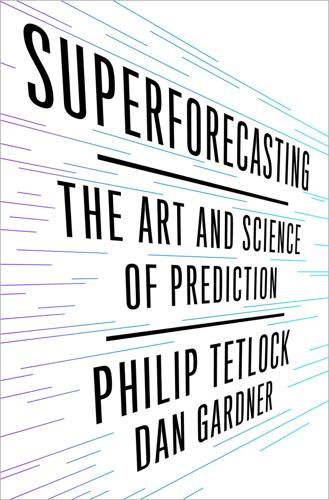
Superforecasting: The Art and Science of Prediction
by
Philip Tetlock
and
Dan Gardner
Published 14 Sep 2015
The probabilistic thinker would say, “Yes, it was extremely improbable that I would meet my partner that night, but I had to be somewhere and she had to be somewhere and happily for us our somewheres coincided.” The economist and Nobel laureate Robert Shiller tells the story of how Henry Ford decided to hire workers at the then-astonishingly high rate of $5 a day, which convinced both his grandfathers to move to Detroit to work for Ford. If someone had made one of his grandfathers a better job offer, if one of his grandfathers had been kicked in the head by a horse, if someone had convinced Ford he was crazy to pay $5 a day … if an almost infinite number of events had turned out differently, Robert Shiller would not have been born. But rather than see fate in his improbable existence, Shiller repeats the story as an illustration of how radically indeterminate the future is.
…
Holman, “Searching for and Finding Meaning in Collective Trauma: Results from a National Longitudinal Study of the 9/11 Terrorist Attacks,” Journal of Personality and Social Psychology 95, no. 3 (2008): 709–22. 29. Laura Kray, Linda George, Katie Liljenquist, Adam Galinsky, Neal Roese, and Philip Tetlock, “From What Might Have Been to What Must Have Been: Counterfactual Thinking Creates Meaning,” Journal of Personality and Social Psychology 98, no. 1 (2010): 106–18. 30. Robert Shiller, interview with the author, August 13, 2013. 7. Supernewsjunkies? 1. David Budescu and Eva Chen have invented a contribution-weighted method of scoring forecasters that gives special weight to those who see things before others do; see D. V. Budescu and E. Chen, “Identifying Expertise to Extract the Wisdom of Crowds,” Management Science 61, no. 2 (2015): 267–80. 2.
…
Jean-Pierre Beugoms, in discussion with the author, March 4, 2013. 10. P. E. Tetlock and Richard Boettger, “Accountability: A Social Magnifier of the Dilution Effect,” Journal of Personality and Social Psychology 57 (1989): 388–98. 11. For one of the earliest demonstrations of excess volatility in asset market prices, see Robert Shiller, “Do Stock Prices Move Too Much to Be Justified by Subsequent Changes in Dividends?,” National Bureau of Economic Research Working Paper no. 456, 1980; Terrance Odean, “Do Investors Trade Too Much?,” American Economic Review 89, no. 5 (1999): 1279–98. 12. John Maynard Keynes, The General Theory of Employment, Interest, and Money (CreateSpace Independent Publishing Platform, 2011), p. 63. 13.
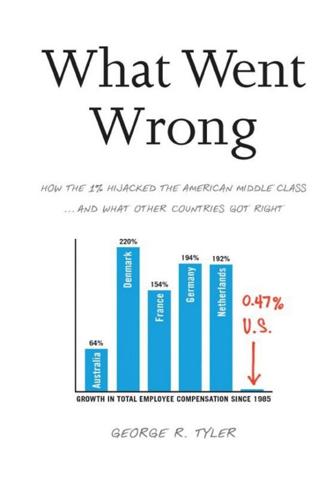
What Went Wrong: How the 1% Hijacked the American Middle Class . . . And What Other Countries Got Right
by
George R. Tyler
Published 15 Jul 2013
[it] “relied on self-regulation that, in effect, meant no regulation; on market discipline that does not exist when there is euphoria and irrational exuberance; on internal risk management models that fail….”42 Behind Friedman’s Influence Market fundamentalism was pretty thin gruel for economists schooled in history. It quickly attracted as sharp critics the British economist Andrew Smithers and Yale economist Robert J. Shiller, who as early as 1984 judged the underlying theory “one of the most remarkable errors in the history of economic thought.”43 It actually faded in popularity quickly as the profession came to terms with its unreal assumptions. So an obvious question is this: How did laissez-faire economics, discredited as recently as the 1930s and lacking any theoretical basis, actually reemerge as American economic dogma?
…
As explained by his biographer, Robert Skidelsky, Keynes supported regulation to “redress the failings of society not because he loved it, but because he saw it, in the last resort, as the savior of capitalism from the temptations of collectivism or worse.”56, 57 In clarifying a capitalism that sanctified family prosperity, Keynes and others fended off the Bolsheviks and provided the intellectual heft and insights vital to victory later during the Cold War. As much as Adam Smith, Keynes created the moral high ground enjoyed by free-market capitalism today by explaining how the abusive greed of markets could be ameliorated and corralled to avoid the unemployment and periodic financial panics of laissez-faire Reaganomics. As Yale economist Robert Shiller explained, Keynes’ “… General Theory also had a deeper, more fundamental message about how capitalism worked, if only briefly spelled out. It explained why capitalist economies, left to their own devices, without the balancing of government, were essentially unstable. And it explained why, for capitalist economies to work well, the government should serve as a counterbalance….
…
And yet, the supervisory role of the government in the United States in particular has been, over the same period, sharply curtailed, fed by an increasing belief in the self-regulatory nature of the market economy. Precisely as the need for state surveillance has grown, the provision of the needed supervision has shrunk.”58 Now you understand why Bernanke was so frustrated with Greenspan and his acolytes. He rolled back regulation. He rejected warnings from private economists like Robert Shiller of Yale.59 He even overruled more insightful colleagues hoping to bolster regulation by enlisting the forces of the marketplace itself. And that brings us to Arthur Levitt, Jr. Greenspan faced a few courageous opponents in Washington who favored tighter regulation, but he succeeded in either chasing them from Washington (Brooksley Born, chairperson of the Commodities Futures Trading Commission from 1996–1999) or marginalizing them (Arthur Levitt, Jr.).
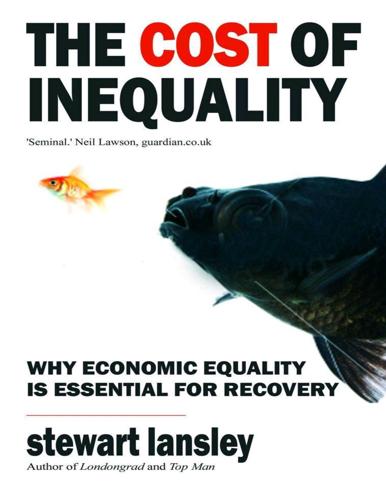
The Cost of Inequality: Why Economic Equality Is Essential for Recovery
by
Stewart Lansley
Published 19 Jan 2012
Sunday Times CONTENTS Title Page Epigraph Introduction 1 An Economic Megashift 2 ‘Zapping Labour’ 3 The Vanishing Middle 4 A Faustian Pact 5 The Incessant Pressure to Transact 6 The Age of Turbulence 7 Living on Borrowed Time 8 A Consumer Society without the Capacity to Consume 9 The Cuckoo in the Nest 10 Walking away with Giant Jackpots 11 The Bigger Picture 12 The Scale of the Task Ahead Acknowledgements Also by Stewart Lansley: Copyright ‘The most essential long-term economic problem of this century is the risk that income inequality will get substantially worse… economic growth will be a positive development only if we do not see at the same time a huge increase in inequality, which could mean that the economic gains are concentrated in a rich class. The mere prospect of a winner-takes-all world ought to strike fear into our hearts.’ Robert J Shiller Notes 1 Robert J Shiller, Inequality-Indexing of the Tax System, The Tobin Project, 2007. 1 Introduction While personal fortunes at the top have soared to levels not seen since before the Second World War, living standards for most Britons have fallen well behind general rises in prosperity. In the United States, nine-tenths of the population has faced stagnant incomes over the last three decades.
…
To prevent high levels of earnings being disguised as a capital gain, such gains should be taxed at the same rate as income with an adjustment to tax windfall gains more heavily than entrepreneurial success. Wealth should be taxed more heavily, with, for example, capital transfers being more highly taxed.425 The American academic, Robert Shiller—an economist with a strong track record in predicting financial bubbles —has called for a much more radical proposal on the tax system, that it should be indexed to the level of income inequality. Under what he calls ‘The Rising Tide Tax System’, taxes would automatically become more progressive if inequality became more acute.
…
In 2006, before the onset of the credit crunch, the Nobel-prize winning economist Robert Solow claimed that an economy that doesn’t distribute its gain more widely is ‘poorly performing’. In the same year Ben Bernanke said that corporations should ‘use some of those (higher) profit margins to meet demands for higher wages from workers. 434 In 2007 Germany’s finance minister called on European companies to ‘give workers a fairer share of their soaring profits.’435 In 2007, Robert Shiller warned that: ‘The most essential long-term economic problem of this century is the risk that income inequality will get substantially worse… The mere prospect of a winner-takes-all world ought to strike fear into our hearts.’436 It was a theme echoed at the 2011 World Economic Forum at Davos.
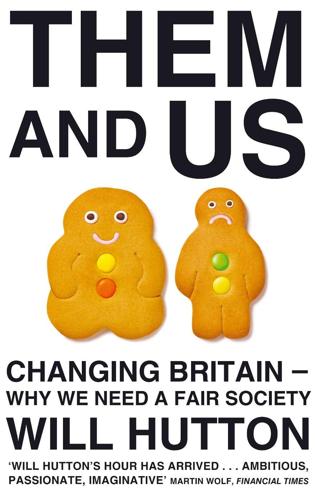
Them And Us: Politics, Greed And Inequality - Why We Need A Fair Society
by
Will Hutton
Published 30 Sep 2010
Economists do know, however, that human beings possess one predictable instinct: they will always try to maximise their profit. So economics tries to box as much human reaction as possible into this simple and universal theorem. But economics cannot proceed by ignoring the reality that human beings value – indeed, are passionate about – fairness. As economists Robert Shiller and George Akerlof prove,2 unemployment, recessions, swings in confidence and much other economic activity are simply inexplicable using the standard theorems of economics. But if progress is to be made, there has to be a capacity to model what human beings actually think and value reliably – and to get a grip on apparent inconsistencies.
…
Over the last thirty years, ordinary people have had to assume ever more risk as decent pensions and tenured work have become increasingly hard to find, while social insurance has become more means tested and miserly. Everyone lives within this environment, so everyone needs better tools to manage it. Thankfully, the intellectual climate is shifting away from the argument that meanness in social security provision spurs innovation and deters slacking. Instead, for example, Professor Robert Shiller argues that a switch from unemployment to employment insurance, so that employees can insure their wage or salary against job loss, would make them more ready to run and manage risks because their income would be higher than the minimal job-seeker’s allowance.50 Daron Acemoglu and Robert Shimer make a similar point, arguing that unemployment insurance is a tool of economic efficiency.51 If workers know that their income will be cushioned by unemployment insurance, they will be more likely to accept jobs in riskier enterprises at a lower risk premium.
…
commented David Sarnoff Associates in rejecting a proposal for investment in the radio in the 1920s. 24 Thérèse Delpech (2007) Savage Century: Back to Barbarism, Carnegie Endowment for International Peace. 25 National Intelligence Council (2008) Global Trends 2025: A World Transformed, US Government Printing Office. 26 George Orwell (1938; 1962) Homage to Catalonia, Penguin, p. 221. Chapter Two: Why Fair? 1 Literary analysis and history also testify to the importance of balance: see Margaret Atwood (2008) Payback – Debt and the Shadow Side of Wealth, Bloomsbury. 2 George Akerlof and Robert Shiller (2009) Animal Spirits: How Human Psychology Drives the Economy and Why it Matters for Global Capitalism, Princeton University Press. 3 Some philosophical work is also beginning to take seriously concrete popular conceptions of justice: see David Miller (2001) Principles of Social Justice, Harvard University Press.
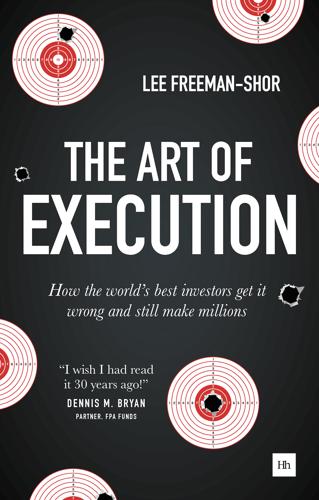
The Art of Execution: How the World's Best Investors Get It Wrong and Still Make Millions
by
Lee Freeman-Shor
Published 8 Sep 2015
Another possible explanation is a simple bandwagon effect: investors buy winning stocks because that is what the herd is doing. The longer a winning streak goes on, the narrower and narrower the market gets as all the buyers end up moving into the same winning stocks and sectors. Everyone loves a winner and a stock whose share price keeps going up and up becomes a market darling. Robert Shiller’s findings from research he conducted in 1981 suggest that stock prices are driven more by speculators than by company fundamentals.50 He showed that stock market prices move well beyond what would be predicted by a rational investment model. Quite simply, stock index returns are too volatile relative to aggregate dividends.
…
, EFA, by Brad Barber and Terrance Odean (1999). 40 ‘Trading is hazardous to your wealth: the common stock investment performance of individual investors’, The Journal of Finance, by Brad Barber and Terrance Odean (2000). 41 Kahneman and Tversky (1979). 42 ‘Focusing on the Forgone: How Value Can Appear So Different to Buyers and Sellers’, Journal of Consumer Research, by Ziv Carmon and Dan Ariely (2000). 43 The Psychology of Finance, by Lars Tvede (1999). 44 More Than You Know, by Michael Mauboussin (2006). 45 Mauboussin (2006). 46 Mean Genes, by Terry Burnham and Jay Phelan (2001). 47 Lynch (2000). 48 Thaler and Johnson (1990). 49 ‘Returns to Buying Winners and Selling Losers: Implications for Stock Market Efficiency’, Journal of Finance, by Narasimhan Jegadeesh and Sheridan Titman (1993). 50 ‘Do Stock Prices Move Too Much to Be Justified by Subsequent Changes in Dividends?’, American Economic Review, by Robert Shiller (1981). 51 Druckenmiller is a very famous investor who achieved compounded returns of ~30% from 1986 to 2010 before announcing he was returning all outside investor capital from his Duquesne fund and forming a family office. 52 Schwager (1994). 53 Those of you with a keen eye will note that this was the same date as for Spirax-Sarco.
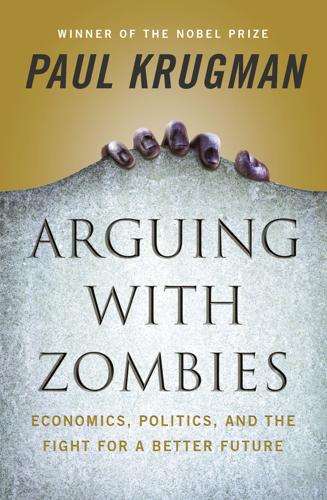
Arguing With Zombies: Economics, Politics, and the Fight for a Better Future
by
Paul Krugman
Published 28 Jan 2020
That’s why it’s so ominous to see signs that America’s housing market, like the stock market at the end of the last decade, is approaching the final, feverish stages of a speculative bubble. Some analysts still insist that housing prices aren’t out of line. But someone will always come up with reasons why seemingly absurd asset prices make sense. Remember Dow 36,000? Robert Shiller, who argued against such rationalizations and correctly called the stock bubble in his book Irrational Exuberance, has added an ominous analysis of the housing market to the new edition, and says the housing bubble “may be the biggest bubble in U.S. history.” In parts of the country there’s a speculative fever among people who shouldn’t be speculators that seems all too familiar from past bubbles—the shoeshine boys with stock tips in the 1920s, the beer-and-pizza joints showing CNBC, not ESPN, on their TV sets in the 1990s.
…
Larry Summers, now the top economic adviser in the Obama administration, once mocked finance professors with a parable about “ketchup economists” who “have shown that two-quart bottles of ketchup invariably sell for exactly twice as much as one-quart bottles of ketchup,” and conclude from this that the ketchup market is perfectly efficient. But neither this mockery nor more polite critiques from economists like Robert Shiller of Yale had much effect. Finance theorists continued to believe that their models were essentially right, and so did many people making real-world decisions. Not least among these was Alan Greenspan, who was then the Fed chairman and a long-time supporter of financial deregulation whose rejection of calls to rein in subprime lending or address the ever-inflating housing bubble rested in large part on the belief that modern financial economics had everything under control.
…
In recent, rueful economics discussions, an all-purpose punch line has become “Nobody could have predicted . . .” It’s what you say with regard to disasters that could have been predicted, should have been predicted, and actually were predicted by a few economists who were scoffed at for their pains. Take, for example, the precipitous rise and fall of housing prices. Some economists, notably Robert Shiller, did identify the bubble and warn of painful consequences if it were to burst. Yet key policymakers failed to see the obvious. In 2004, Alan Greenspan dismissed talk of a housing bubble: “a national severe price distortion,” he declared, was “most unlikely.” Home-price increases, Ben Bernanke said in 2005, “largely reflect strong economic fundamentals.”
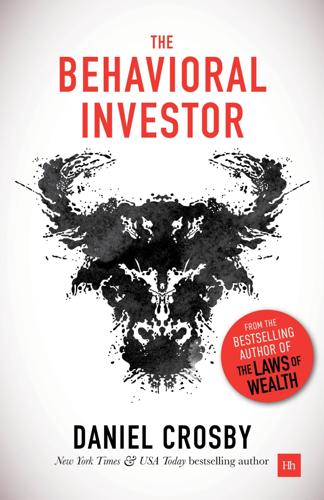
The Behavioral Investor
by
Daniel Crosby
Published 15 Feb 2018
Kahneman and Tversky first observed this effect in their 1973 paper where they noted that an information signal is salient (i.e., memorable) if it has characteristics that differ from the background or a past state. Thus, we have a good memory for both the exceedingly commonplace (by virtue of repetition) and the exceptionally strange. Behavioral economist Robert Shiller suggested that the ubiquity of the internet made it easier for investors to bid up the prices of internet stocks to unprecedented levels during the dot.com bubble. Evidence of the usefulness of the WWW was everywhere, making it easy to create internal narratives about how the internet could be paradigm changing.
…
As Michael Batnick of Ritholtz Wealth Management writes in his summary of their research, “If shares in an industry increased by 50%, the probability of a crash over the next two years is just 20%. A 100% return increased the odds of a crash to 53%, and a 150% return increased the odds of a crash to 80%.” The takeaway? Only about half of bubbles burst, but when they do – watch out. Can you spot a bubble? Dr. Robert Shiller, Nobel Laureate in Economics, suggests that bubbles can be diagnosed using a checklist in much the same manner that a psychologist would examine the mental health of a patient against the diagnostic criteria for a given mental illness. Dr. Shiller offers the following as a starting point for spotting bubbles: Have asset prices increased sharply?
…
The process typically looks something like this: Price gains occur for fundamental reasons. Increasing prices attract attention. Narratives emerge to explain price gains. The positive narrative begets a cascade of increased price and volume. Narrative is broken, causing a return to fundamentals. Robert Shiller defines a bubble as “a social epidemic where price increases lead to further price increases” and stories are the means by which a spark of fundamental value becomes a raging fire of irrationality. Teeter and Sandberg speak to the power of story to create and sustain bubbles in the aptly named, ‘Cracking the Enigma of Asset Bubbles with Narratives’ and cite three specific reasons why narrative is so powerful.
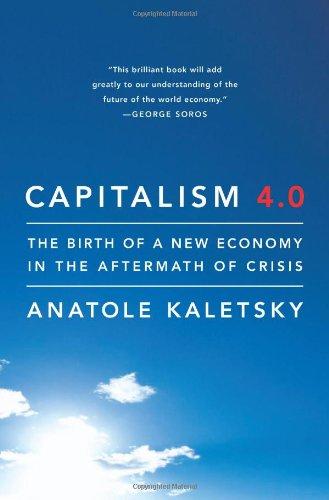
Capitalism 4.0: The Birth of a New Economy in the Aftermath of Crisis
by
Anatole Kaletsky
Published 22 Jun 2010
Behavioral finance, a blend of traditional economics and experimental psychology, became a popular theory of boom-bust cycles after Alan Greenspan coined the phrase “irrational exuberance” in a 1996 speech.7 The idea that financial instability is a consequence of various forms of irrational behavior was elaborated and popularized a few years later by the Yale economics professor Robert Shiller in his best-selling book Irrational Exuberance, 8 published three months before the bursting of the technology stock bubble. Among the sources of irrationality discussed by behavioral economists and demonstrated in their financial experiments are herd instinct, overconfidence, and anchoring.
…
Despite the near-monopoly enjoyed by rational expectations and mathematical modeling in elite university departments since the 1980s, many new and interesting approaches to economics based on psychology, sociology, control engineering, chaos theory, psychiatry, and practical business insights have been developing in the shadows of the official doctrine. Some of these will doubtless spring to life in the years ahead. The approach receiving widest publicity during the crisis was behavioral economics. Popularized by Robert Shiller, behavioral economics considers a world in which investors and businesses are motivated by crowd psychology rather than the obsessive calculation of rational expectations. It is, however, the least radical of the alternative approaches because it does not challenge the central assumption of REH—that booms, busts, and recessions are all caused by various types of market failure and therefore that breakdowns in laissez-faire capitalism could, at least in principle, be prevented by making markets more perfect, for example, by disseminating information or strengthening the regulations against fraud.
…
Between January 2000 and the peak of the U.S. housing market in mid-2006, the NAR index increased by 68 percent, the CS National index by 92 percent, the CS 20 index by 106 percent, and the CS 10 index by 126 percent. By the middle of 2009, the Case-Shiller indices had fallen back and the CS National index showed a cumulative gain since 2000 only 2 percent higher than the NAR. 9 Professor Robert Shiller of Yale, probably the most famous and academically distinguished of these Cassandras, freely admitted in a talk he gave in January 2010 at the World Economic Forum in Davos that “many economists [presumably himself included] were predicting a housing crash for at least a decade before it occurred.”
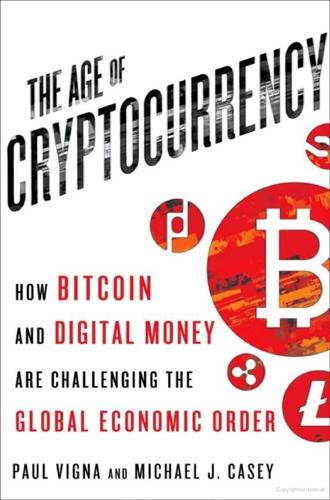
The Age of Cryptocurrency: How Bitcoin and Digital Money Are Challenging the Global Economic Order
by
Paul Vigna
and
Michael J. Casey
Published 27 Jan 2015
Asked to describe the job market: Daniel Larimer, interviewed by Michael J. Casey, April 8, 2014. As Tyler Cowen noted in his book: Tyler Cowan, Average Is Over: Powering America Beyond the Age of the Great Stagnation (Dutton, 2013). Yale’s Robert Shiller: Joe Weisenthal, “Robert Shiller: Bitcoin Is an Amazing Example of a Bubble,” Business Insider, January 24, 2014, http://www.businessinsider.com/robert-shiller-bitcoin-2014-1#ixzz3Cmp0YFyx. New York University’s Nouriel Roubini: Erik Holm, “Nouriel Roubini: Bitcoin Is a ‘Ponzi Game,’” March 10, 2014, Wall Street Journal, MoneyBeat blog, http://blogs.wsj.com/moneybeat/2014/03/10/nouriel-roubini-bitcoin-is-a-ponzi-game/.
…
They could blindly hope that this strange new way of handling finance will never amount to anything, much as Eastman Kodak mistakenly did about the digital camera. But you’ve probably gathered by now that we think that’s a dangerously naïve viewpoint. While it’s true that quite a few prominent economists see bitcoin as a passing fad—Yale’s Robert Shiller and New York University’s Nouriel Roubini were still in that camp in mid-2014—the longer that digital currency defies these expectations and the further along the innovation curve bitcoin businesses go, the more out of touch such views will seem. Former U.S. treasury secretary Larry Summers, one of the most influential economic minds on the planet, recognizes the risks of ignoring this technology for a financial sector that’s “ripe for disruption.”

Retirementology: Rethinking the American Dream in a New Economy
by
Gregory Brandon Salsbury
Published 15 Mar 2010
America’s Housing Bust “Let’s hope we are all wealthy and retired by the time this house of cards falters.” —Excerpt from an S&P employee email, December 15, 200616 Nationwide, housing values started to fall in the autumn of 2007.17 To the surprise of no one with the benefit of hindsight, the Dow Jones Industrial Average peaked then as well at 14,164 on October 9, 2007.18 As Robert Shiller, Yale professor, economist, and long-time real estate expert predicted, so much of America’s wealth—or at least the wealth effect, the feeling that we were wealthy—was tied to the rising values of our homes.19 When people’s homes stopped appreciating in value, a homeowner could no longer draw money from it...and that homeowner certainly couldn’t draw money from a bank account that never had any money in it.
…
During the housing boom, millions of Americans used the equity in their homes like house money for home improvements, vacations, new cars, or even more houses.31 And now, for those who rode the perpetual rise of home appreciation, many bets are off. On the House Although there were myriad culprits behind the credit crunch, Boomer behavior such as the wealth effect and house money effect played a prominent role. Robert Shiller’s book Irrational Exuberance, published in 2000, detailed the trouble that awaited us all when the impending Nasdaq bubble burst. He argued that it was the artificial rise in home values, not the tech stock boom, that was creating the dangerous wealth effect. And that was in spite of the fact that demand was decreasing in important markets such as Silicon Valley.32 As tech stock values were pushed higher by a bubble, the wealth effect took hold and had people feeling wealthier than they were, and the same thing happened with the housing bubble that followed.
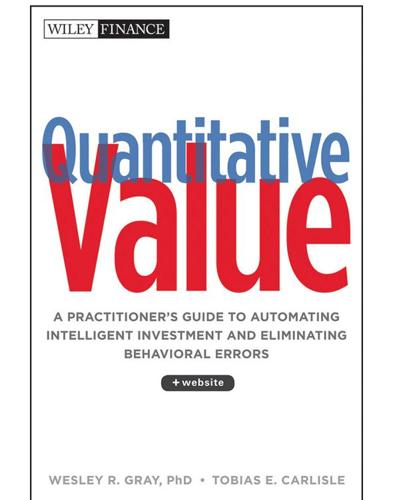
Quantitative Value: A Practitioner's Guide to Automating Intelligent Investment and Eliminating Behavioral Errors
by
Wesley R. Gray
and
Tobias E. Carlisle
Published 29 Nov 2012
Because the speculative public is clearly wrong in its attitude on this point, it would seem that its errors should afford profitable opportunities to the more logically minded to buy common stocks at the low prices occasioned by temporarily reduced earnings and to sell them at inflated prices created by abnormal prosperity. Graham suggested a methodology to avoid such errors and to exploit the variation in earnings: normalized earnings power. He recommended that investors calculate normalized earnings power by taking the average of earnings over a period of between 5 and 10 years. Robert Shiller extended Graham's recommendation by suggesting that investors adjust average earnings for inflation, and use a longer-term average with a minimum period of 10 years. Such a long-run, inflation-adjusted average smooths the peaks and valleys in earnings, making the earnings appear higher in the trough, and lower at the peak, than a single-year metric.
…
Earnings tend to be mean reverting, so we need to normalize the extremes to make them less attractive at the peak and more attractive at the trough. We can achieve this taking an average of earnings over the business cycle. We can't know how long a business cycle will last, so Graham recommended using an average of between 5 and 10 years. More recently, Robert Shiller, author of the book Irrational Exuberance, which took for its title the phrase then-chairman of the Federal Reserve Alan Greenspan used to warn of the dot-com bubble in 1996, collaborated with John Campbell to argue2 that annual earnings are too “noisy” to use as the denominator in price-to-earnings (P/E) ratios.
…
We examine buy-backs, insider buying, activism, institutional investors, and short selling. NOTES 1. Benjamin Graham, and David Dodd, Security Analysis: The Classic 1934 Edition (McGraw-Hill, 1996). 2. J. Y. Campbell and R. J. Shiller, “Valuation Ratios and the Long-Run Stock Market Outlook.” Journal of Portfolio Management (Winter 1998): 11–26. 3. John Y. Campbell and Robert J. Shiller, “Valuation Ratios and the Long-Run Stock Market Outlook: An Update (April 2001).” NBER Working Paper Series, Vol. w8221, 2001. Available at http://ssrn.com/abstract=266191. 4. K. P. Anderson and Chris Brooks, “The Long-Term Price-Earnings Ratio.” Journal of Business Finance & Accounting 33(7–8) (September/October 2006): 1063–1086.
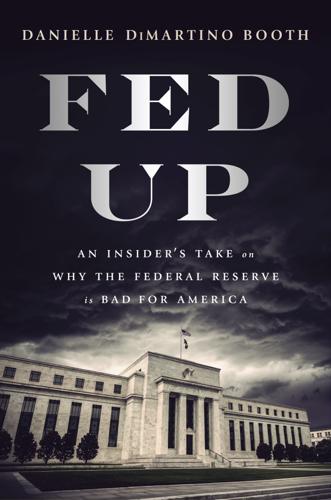
Fed Up: An Insider's Take on Why the Federal Reserve Is Bad for America
by
Danielle Dimartino Booth
Published 14 Feb 2017
Relaxed mortgage lending standards sent house prices soaring around the country, especially in California, Florida, and Nevada. Households were buying a lot more home than they could afford, courtesy of subprime mortgages. The market was so hot it had started to look suspiciously like another bubble. The classic definition of an asset bubble was coined by economist Robert Shiller, who called it an unsustainable condition in which “price increases beget further price increases.” I preferred Warren Buffett’s definition: “It’s like most trends—at the beginning it’s driven by fundamentals; in the end, by speculation. It’s just like the old adage: ‘What the wise man does in the beginning, the fool does in the end.’”
…
Blamed for a 95-point drop: Scott Patterson, “Fed Comments Roil the Market,” Wall Street Journal, October 6, 2005, www.wsj.com/articles/SB112859671097461506. Unlike many other Fed District Bank presidents: Mark Gongloff, Scott Patterson, and David Gaffen, “Who Will Wield Influence After Greenspan Departs?,” Wall Street Journal, November 18, 2005, www.wsj.com/articles/SB113225663185000372. The classic definition of an asset bubble: Robert J. Shiller, “Speculative Asset Prices,” Nobel Prize Lecture, nobelprize.org, December 8, 2013, 460–61. His more detailed version of a bubble: “A situation in which news of price increases spurs investor enthusiasm which spreads by psychological contagion from person to person, in the process amplifying stories that might justify the price increase and bringing in a larger and larger class of investors, who, despite doubts about the real value of the investment are drawn to it partly through envy of others’ successes and partly through a gambler’s excitement.”
…
The National Bureau of Economic Research: Chris Isidore, “Recession Officially Ended in June 2004,” cnnmoney.com, September 20, 2010. “Most, probably, of our decisions”: “Animal Spirits—J. M. Keynes,” economicshelp.org, November 28, 2012. Keynes describes animal spirits in his 1936 book General Theory of Employment, Interest and Money (London: Macmillan, 1936), 161–62. It was fitting that in 2009: George Akerlof and Robert Shiller, Animal Spirits: How Human Psychology Drives the Economy, and Why It Matters for Global Capitalism (Princeton, N.J.: Princeton University Press, 2009). “There’s a large amount of money”: Cullen Roche, “1930’s Déjà Vu,” BusinessInsider.com, September 4, 2009. “There is plenty of cash”: Richard Barley, “Fretful Investors Sidelined by Rally,” Wall Street Journal, September 12, 2009.
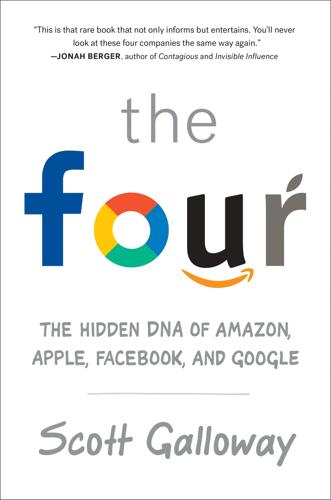
The Four: How Amazon, Apple, Facebook, and Google Divided and Conquered the World
by
Scott Galloway
Published 2 Oct 2017
My suggestion: Apple should launch the world’s largest tuition-free university. “Do you hear that? It might be the growing sounds of pocketbooks snapping shut and the chickens coming home . . . .” AEIdeas, August 2016. http://bit.ly/2nHvdfr. Irrational Exuberance, Robert Shiller. http://amzn.to/2o98DZE. The education market is ripe, and I mean falling-off-the-tree ripe, to be disrupted. A sector’s vulnerability is a function of price increases relative to inflation and the underlying increases in productivity and innovation. The reason tech continues to eat more of the world’s GDP is a gestalt that says we need to make a much better product and lower price.
…
Levi Strauss & Co., Form 10-K for the Period Ending November 27, 2005 (filed February 14, 2006), p. 26, from Levi Strauss & Co. website. Cost of College “Do you hear that? It might be the growing sounds of pocketbooks snapping shut and the chickens coming home . . .” AEIdeas, August 2016. http://bit.ly/2nHvdfir. Irrational Exuberance, Robert Shiller. http://amzn.to/2o98DZE. Time Spent on Facebook, Instagram, & WhatsApp per Day, December 2016 “How Much Time Do People Spend on Social Media?” MediaKix. Number of Timeline Posts per Day—Single vs. In a Relationship Meyer, Robinson. “When You Fall in Love This Is What Facebook Sees.”
…
Annual Report for the Period Ending December 31, 2016 (filed February 28, 2017), p. 42, from International Business Machines Corporation website. https://www.ibm.com/investor/financials/financial-reporting.html. Chapter 10: The Four and You 1. “Do you hear that? It might be the growing sounds of pocketbooks snapping shut and the chickens coming home . . .” AEIdeas, August 2016. http://bit.ly/2nHvdfr. 2. Irrational Exuberance, Robert Shiller. http://amzn.to/2o98DZE. 3. https://www.nytimes.com/2017/03/14/books/henry-lodge-dead-co-author-younger-next-year.html?_r=1. Chapter 11: After the Horsemen 1. Yahoo! Finance. https://finance.yahoo.com/. 2. Facebook, Inc. https://newsroom.fb.com/company-info/. 3. Yahoo!
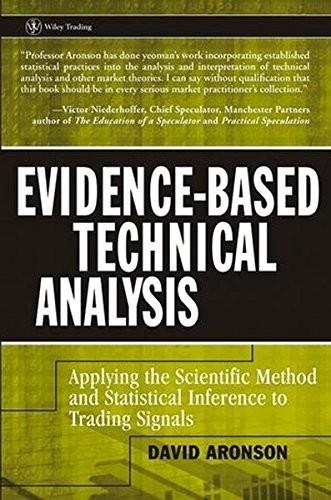
Evidence-Based Technical Analysis: Applying the Scientific Method and Statistical Inference to Trading Signals
by
David Aronson
Published 1 Nov 2006
The failure of prices to respond rapidly is caused by a several cognitive errors that afflict investors, such as the conservatism bias and the anchoring effect. These are discussed later in this chapter. Another popular justification of TA is based on pop psychology. By pop psychology, I mean principles of human behavior that seem plausible but lack scientific support. According to noted economist and authority in the field of behavioral finance, Robert Shiller, “In considering lessons from psychology, it must be noted that the many popular accounts of the 334 METHODOLOGICAL, PSYCHOLOGICAL, PHILOSOPHICAL, STATISTICAL FOUNDATIONS psychology of investing are simply not credible. Investors are said to be euphoric or frenzied during booms or panic-stricken during market crashes.
…
However, information that diffuses slowly allows for gradual, systematic price movements that can be exploited by TA methods. Despite the prevalence of advanced communications technology, the preferred method of exchanging investment information is still a good story told person to person. This predilection, a result of several million years of evolution, has been confirmed by the studies of behavioral-economist Robert Shiller. He has shown that the word-of-mouth effect is strong even among people who read a lot. A story about a hot new issue has greater impact in conversation than a statistic about the high failure rate of new companies. The way stories spread among investors has been studied with mathematical models similar to those used by epidemiologists to study the spread of disease within a population.
…
However, before outcomes are known, we never know which details deserve our attention. Among the automatic unconscious rules used by the brain to filter relevant from irrelevant information is the rule to look to other people for cues. In other words, we presume that what grabs the attention of others must be worthy of our attention as well. According to economist Robert Shiller, “the phenomenon of social attention is one of the great creations of behavioral evolution and is critical for the functioning of human society.”79 Although communal attention has great social value, because it promotes collaborative action, it has a downside. It can lead an entire group to hold an incorrect view and take similar mistaken actions.

Fooled by Randomness: The Hidden Role of Chance in Life and in the Markets
by
Nassim Nicholas Taleb
Published 1 Jan 2001
There seems to be some evidence that conversations and correspondence with intelligent people is a better engine for personal edification than plain library-ratting (human warmth: Something in our nature may help us grow ideas while dealing and socializing with other people). Somehow there was the pre-and post-Fooled life. While the acknowledgments for the first edition hold more than ever, I would like to add here my newly incurred debt. Shrinking the World I first met Robert Shiller in person as we were seated next to each other at a breakfast panel discussion. I found myself inadvertently eating all the fruits on his plate and drinking his coffee and water, leaving him with the muffins and other unfashionable food (and nothing to drink). He did not complain (he may have not noticed).
…
Listening to the media, mostly because I am not used to it, can cause me on occasion to jump out of my seat and become emotional in front of the moving image (I grew up with no television and was in my late twenties when I learned to operate a TV set). One illustration of a dangerous refusal to consider alternative histories is provided by the interview that media person George Will, a “commentator” of the extensively commenting variety, conducted with Professor Robert Shiller, a man known to the public for his bestselling book Irrational Exuberance, but known to the connoisseur for his remarkable insights about the structure of market randomness and volatility (expressed in the precision of mathematics). The interview is illustrative of the destructive aspect of the media, in catering to our heavily warped common sense and biases.
…
This problem is similar to the weaknesses in our ability to correct for past errors: Like a health club membership taken out to satisfy a New Year’s resolution, people often think that it will surely be the next batch of news that will really make a difference to their understanding of things.) Shiller Redux Much of the thinking about the negative value of information on society in general was sparked by Robert Shiller. Not just in financial markets; but overall his 1981 paper may be the first mathematically formulated introspection on the manner in which society in general handles information. Shiller made his mark with his 1981 paper on the volatility of markets, where he determined that if a stock price is the estimated value of “something” (say the discounted cash flows from a corporation), then market prices are way too volatile in relation to tangible manifestations of that “something” (he used dividends as proxy).
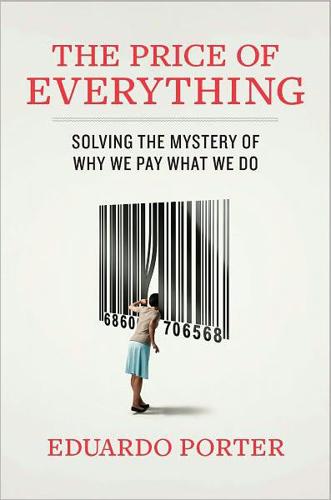
The Price of Everything: And the Hidden Logic of Value
by
Eduardo Porter
Published 4 Jan 2011
: Eugene Fama’s quote is in Douglas Clement, “Interview with Eugene Fama,” The Region, Federal Reserve Bank of Minnesota, December 2007. Keynes’s quote is in John Maynard Keynes, The General Theory of Employment, Interest and Money (New York: Harcourt Brace and World, 1965), p. 161. Robert Shiller’s theory is described in George Akerlof and Robert Shiller, Animal Spirits: How Human Psychology Drives the Economy, and Why It Matters for Global Capitalism (Princeton: Princeton University Press, 2010). 240-246 Economics for a New World: Limits to the assumption of human rationality and self-regard are discussed in Herbert Gintis, “Five Principles for the Unification of the Behavioral Sciences,” Working Paper, May 13, 2008.
…
His experience in finance informed his perception that most of the time investors don’t know what they are doing. Investment decisions, he thought, are the result of “animal spirits—of a spontaneous urge to action rather than inaction, and not as the outcome of a weighted average of quantitative benefits multiplied by quantitative probabilities.” Robert Shiller, an economist at Yale, has proposed a model based on Keynes’s insight. In it, rationality takes a hike: a plausible new economic opportunity—say the Internet or new trade routes across the Atlantic—leads early investors to make a lot of money. This generates enthusiasm. The prices of the hot new asset—dot-com stocks, shares in shipping companies, whatever—are bid up as investors rush to partake of the profits.
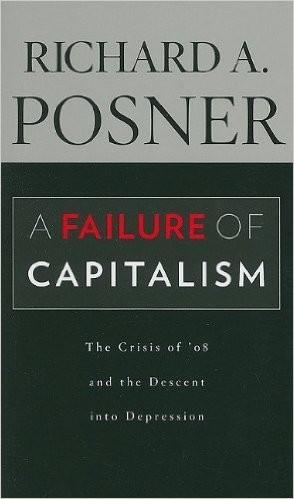
A Failure of Capitalism: The Crisis of '08 and the Descent Into Depression
by
Richard A. Posner
Published 30 Apr 2009
There were plenty of warnings of a housing bubble, beginning in 2003; warnings about excessive leverage in financial firms; and even rather precise predictions of the debacle that has ensued, as in "When Bubbles Burst," an eerily prescient paper by Thomas Helbling and Marco Terrones published in October 2003. Robert Shiller wrote a similar paper in April of the following year, as did another economist, Avinash Persaud, the same month. The Economist magazine spotted the housing bubble in September 2002 and soon became obsessed with it and its possible broader implications for the financial system and the U.S. economy as a whole; in an article published on July 3, 2004, we read: "Housing optimists dismiss these fears by pointing out that doomsters such as The Economist began wringing their hands about a property bubble a year ago, and yet prices have continued to climb.
…
A restructuring of the immensely complex financial sector should await, if not the end of the depression, at least the beginning of the end. 8 The Economics Profession Asleep at the Switch One Of The biggest Puzzles about the failure to anticipate the financial crisis is the lack of foresight of so many academic economists. There were exceptions; Nouriel Roubini was only the most emphatic of the Cassandras. Raghuram Rajan issued strong warnings in 2005, Paul Krugman in the summer of 2007, Martin Feldstein that fall. I mentioned Robert Shiller. The collapse of Bear Stearns in March 2008 elicited warnings from other economists, such as Alan Blinder and Lawrence Summers —the latter of whom, however, had sarcastically dismissed Rajan's warnings three years earlier as "leaden-eyed." But as far as I know, only Roubini among prominent academic economists forecast an actual depression.
…
Lubos Pastor and Pietro Veronesi, "Was There a NASDAQ Bubble in the Late 1990s?" journal of Financial Economics 81 (2006): 61. Raghuram G. Rajan, "Has Financial Development Made the World Riskier?" in The Greenspan Era: Lessons for the Future: A Symposium Spon- sored hy the Federal Reserve Bank of Kansas City (2005), 213. Robert J. Shiller, The Suhprime Solution: How To- day's Financial Crisis Happened, and What to Do about It (2008). Andrei Shleifer, Inefficient Markets: An Introduction to Behavioral Finance (2000). Mark Zandi, Financial Shock: A 5600 hmk at the Suhprime Mortgage Implosion, and How to Avoid the Next Financial Crisis (2008).
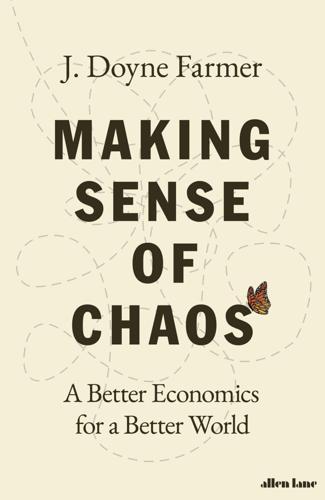
Making Sense of Chaos: A Better Economics for a Better World
by
J. Doyne Farmer
Published 24 Apr 2024
Can we measure financial-market efficiency in quantitative terms? This question was put to a panel of experts at a three-day conference that John G. and I organized at SFI in May of 2000, called ‘Beyond Equilibrium and Efficiency’. We invited a group of leading financial economists – including leading behavioral economists, such as Robert Shiller and Richard Thaler – along with leading econophysicists and complexity economists. The mainstream economists spoke on the first day, the complexity economists and econophysicists spoke on the second day, and the third day was for discussions. This proved to be a naïve way to organize the conference: Almost all the mainstream financial economists skipped the second day and went sightseeing.
…
In a paper titled simply ‘Noise’, he made a tongue-in-cheek statement that I will paraphrase as, ‘I believe in efficient markets: prices are within a factor of two of fundamental values 90 per cent of the time.’8 By this he meant that, yes, prices loosely reflect fundamental values, but they often fail to do so very well. This was borne out in a 1981 paper by Robert Shiller, who compared the Dow Jones index to the valuation of the companies in the index based on their dividends.9 The correct way to compute fundamental values is debated, but Shiller’s study suggests that prices make large swings from fundamental values, indicating that markets are on average less than 50 per cent efficient.
…
An early agent-based modeler whose work I will not be able to discuss here is Leigh Tesfatsion (2006). 9 See Miller and Page (2007). 10 For a review, see Axtell and Farmer (2022). 11 Gigerenzer and Brighton (2009). 12 Page (2007) 13 Del Negro et al. (2017). 14 Several economists, like Robert Shiller, Raghuram Rajan, Nouriel Roubini and others (including Simon Potter and the economists at the New York Fed discussed at the beginning of the introduction), presciently warned of a crisis in the years leading up to 2007. But their warnings were based on good economic intuition rather than theoretical models.
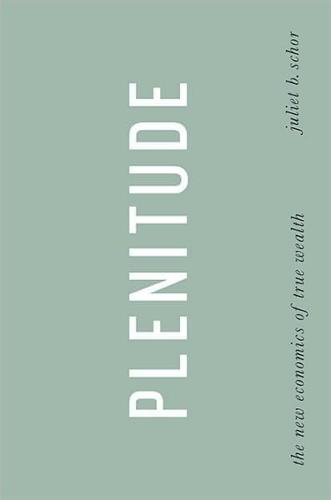
Plenitude: The New Economics of True Wealth
by
Juliet B. Schor
Published 12 May 2010
Among the public, there has been tremendous interest in how economists think, with Paul Krugman’s hugely popular writing, bestsellers such as Freakonomics, and ongoing columns, such as David Leonhardt’s for the New York Times, devoted to the profession. But, with some notable exceptions, economists failed to see the financial, housing, and economic crises coming. Princeton’s Uwe Reinhardt noted that they “slept comfortably” while Wall Street imploded. Yale’s Robert Shiller has invoked the concept of “groupthink” to explain why. Whatever the reason, what occurred in 2007 and 2008 was a monumental blunder. We can’t afford a repeat when it comes to the health of the planet. And we don’t have to. What’s odd about the narrowness of the national economic conversation is that it leaves out theoretical advances in economics and related fields that have begun to change our basic understandings of what motivates and enriches people.
…
For a popular account of anthropogenic mass extinction, see Kolbert (2009). 9 oceans will be devoid of fish: Jackson (2008). 9 primary source of animal protein for a billion people: Tidwell and Allan (2001). 9 not to say that economists were intellectually stuck: The postcrash reaction of professional economists is discussed by Cohen (2009). 10 A declining fraction of the population considered appliances: Morin and Taylor (2009). 10 “goodbye homo economicus”: Context-Based Research Group and Carton Donofrio Partners (2008). 10 Surveys I worked on as early as 2004: Widmeyer Research and Polling (2004). 10 some notable exceptions: Examples of those who did see the crisis coming are Paul Krugman of Princeton, Nouriel Roubini of New York University, Robert Shiller of Yale, Jane D’Arista of the Financial Markets Center, and James Crotty and Gerald Epstein of the University of Massachusetts. 10 “slept comfortably”: Uwe Reinhardt (2009). 10 “groupthink”: Shiller (2008). In response to a query from Queen Elizabeth about why economists failed to see what was happening, a group of U.K. economists attributed the failure to the “feel-good” factor and a failure of the “collective imagination.”
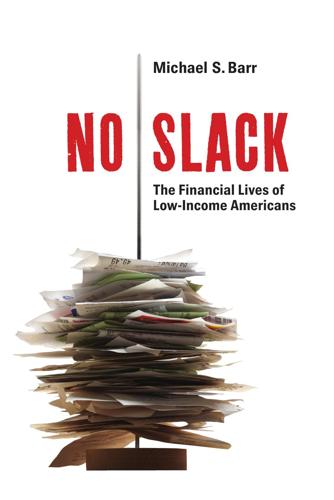
No Slack: The Financial Lives of Low-Income Americans
by
Michael S. Barr
Published 20 Mar 2012
his career to finding it.” k SHEILA BAIR, former chair of the Federal Deposit Insurance Corporation “It is inspiring to see such a thoughtful analysis of the deep financial problems that make life miserable for so many people, and to see that many of these problems can be solved with suitable behaviorally informed financial innovations. Barr faces the real subtlety and complexity of the problems that leave so many people with no slack.” k ROBERT SHILLER, Arthur M. Okun Professor of Economics, Yale University “In many respects the American economy is too financialized. But as Michael Barr highlights in this important book, millions lack access to basic financial services and protections. Barr draws on his unmatched combination of academic expertise and policy experience to define the challenge and suggest ways to meet it.
…
his career to finding it.” k SHEILA BAIR, former chair of the Federal Deposit Insurance Corporation “It is inspiring to see such a thoughtful analysis of the deep financial problems that make life miserable for so many people, and to see that many of these problems can be solved with suitable behaviorally informed financial innovations. Barr faces the real subtlety and complexity of the problems that leave so many people with no slack.” k ROBERT SHILLER, Arthur M. Okun Professor of Economics, Yale University “In many respects the American economy is too financialized. But as Michael Barr highlights in this important book, millions lack access to basic financial services and protections. Barr draws on his unmatched combination of academic expertise and policy experience to define the challenge and suggest ways to meet it.
…
his career to finding it.” k SHEILA BAIR, former chair of the Federal Deposit Insurance Corporation “It is inspiring to see such a thoughtful analysis of the deep financial problems that make life miserable for so many people, and to see that many of these problems can be solved with suitable behaviorally informed financial innovations. Barr faces the real subtlety and complexity of the problems that leave so many people with no slack.” k ROBERT SHILLER, Arthur M. Okun Professor of Economics, Yale University “In many respects the American economy is too financialized. But as Michael Barr highlights in this important book, millions lack access to basic financial services and protections. Barr draws on his unmatched combination of academic expertise and policy experience to define the challenge and suggest ways to meet it.

Radical Uncertainty: Decision-Making for an Unknowable Future
by
Mervyn King
and
John Kay
Published 5 Mar 2020
In the worst, but not uncommon, excesses of the use of narratives in finance, traders propagate false narratives in schemes such as ‘Dr Evil’ and ‘Darth Vader’ with the aim of disrupting bona fide transactions in bonds and electricity to their advantage. Narratives, true and false, play a central role in financial markets. The American economist Robert Shiller has recently documented the importance and contagious nature of narratives in financial markets, and Tuckett’s ‘conviction narrative’ account of the behaviour of traders is based on extensive interview material. 27 Narratives in finance and business may be true or false, damaging or benign, but are rarely innocuous.
…
And no information about the production costs of textile mills refutes Ricardo’s exposition of the principle of comparative advantage. The efficient market hypothesis is one of the most controversial models in economics – so controversial that in 2013 Eugene Fama, who developed the model, shared the Nobel Prize with Robert Shiller, who has worked to refute it. The essential insight is that publicly available information is incorporated in securities prices. The explanation of the seemingly contradictory accolades – it is hard to believe that a similar award would be made in the natural sciences – is that it is a mistake either to believe that the hypothesis is true or to assert that it is false.
…
The more regulators attempt to define precise, detailed rules, which confuse more than clarify, the more likely is a counter-productive outcome. If only someone would stand back and ask ‘What is going on here?’ rather than tweak processes which have acquired their own seemingly irresistible momentum! More narratives of finance In chapter 12 we described how Robert Shiller has argued that swings in sentiment are important in understanding why large and disruptive changes in economic behaviour occur – whether stock market bubbles and crashes or sharp collapses in output during a depression. 11 But Shiller’s focus on narratives is rather one-sided. He uses the concept to explain behaviour which others have called ‘fads and fashions’.
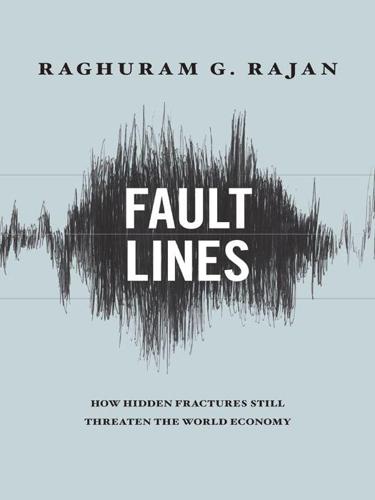
Fault Lines: How Hidden Fractures Still Threaten the World Economy
by
Raghuram Rajan
Published 24 May 2010
Of course, it is incorrect to say that no one saw this crisis coming. Some hedge fund managers and traders in investment banks put their money instead of their mouths to work. A few government and Federal Reserve officials expressed deep concern. A number of economists, such as Kenneth Rogoff, Nouriel Roubini, Robert Shiller, and William White, repeatedly sounded warnings about the levels of U.S. house prices and household indebtedness. Niall Ferguson, a historian, drew parallels to past booms that ended poorly. The problem was not that no one warned about the dangers; it was that those who benefited from an overheated economy—which included a lot of people—had little incentive to listen.
…
A number of financial innovations that would allow households to purchase insurance against home-price declines have been proposed, and in light of the recent crisis, demand for these instruments may increase.33 This is also a reason why the government’s focus on encouraging home ownership needs to be revisited. Although the modern economy needs some workers to specialize, workers like Badri, encountered in chapter 4, may tend to grow overly specialized in one industry. Robert Shiller of Yale University has argued for “livelihood” insurance—insurance that would protect workers against a decline in incomes or jobs in their particular areas of specialization. In a sense, long-term unemployment insurance is a form of livelihood insurance provided by society. The downside of such insurance is that it reduces worker incentives to keep their human capital relevant.
…
Fisher, and Amitabh Chandra, “Malpractice Liability Costs and the Practice of Medicine in the Medicare Program,” Health Affairs 26, no. 3 (May–June 2007): 841–52. 32 For the highly paid workers in the financial sector, I argue that having a stake in the firm can improve incentives. However, some reasonable portion of their savings should be independent of the health of their firms. 33 See, for instance, Robert Shiller, The New Financial Order (Princeton, NJ: Princeton University Press, 2003), 118–19. 34 The next few paragraphs draw on my previous book with Luigi Zingales, Saving Capitalism from the Capitalists (Princeton, NJ: Princeton University Press, 2004). 35 Shlomo Benartzi and Richard Thaler, “Save More Tomorrow: Using Behavioral Economics to Increase Employee Savings,” unpublished manuscript, University of Chicago.
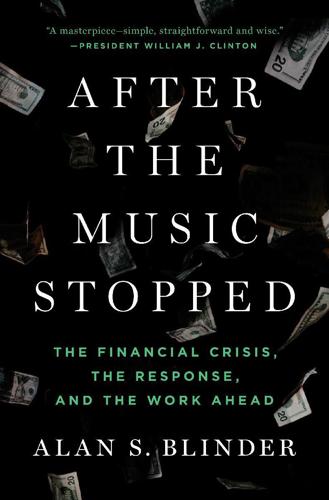
After the Music Stopped: The Financial Crisis, the Response, and the Work Ahead
by
Alan S. Blinder
Published 24 Jan 2013
The data on housing show clearly that homebuilding peaked in 2005. Home prices tell a messier story, however: They peaked either in 2006 or in 2007, depending on what measure you use. Two major competing indexes of national average house prices are shown in figure 1.4. The upper line plots a celebrated index devised by Charles “Chip” Case of Wellesley and Robert Shiller of Yale, and now maintained commercially by Standard & Poor’s. The lower line plots an index maintained by the government—specifically, by the Federal Housing Finance Agency (FHFA), which is the regulator of Fannie Mae and Freddie Mac. You can see that they tell rather different stories. FIGURE 1.4 Take Your Pick Two indexes of national average house prices, 2000–2010 According to the Case-Shiller index, home prices peaked in May 2006, but the FHFA index dates the peak a year later.
…
The Housing Bubble All that said, there can be little doubt that the United States experienced a pretty gigantic housing bubble that blew up and then burst with disastrous consequences in, roughly, the years 2000–2009. Let’s look at some of the evidence, starting with the remarkable figure 2.1, which is due to the efforts of Robert Shiller, perhaps our nation’s most perspicacious chronicler of the housing bubble. Notice two things about this graph. First, the data go all the way back to 1890—over 120 years! That should be long enough to give us historical perspective. Second, the graph plots real house prices—that is, house prices deflated by the Consumer Price Index (CPI).
…
House prices did fall quite a bit then, but so did other prices. Ranges in which the graph is relatively flat—such as the half century from the late 1940s to the late 1990s—connote periods when house prices moved more or less in tandem with other prices. FIGURE 2.1 Real House Prices: The Long View (index, 1890 = 100) SOURCE: Robert Shiller and author's calculations. Now compare the value of the index in 1890 with its value in the 1990s. The two look about the same. Specifically, the index, which is constructed to start at 100 in 1890, averages about 110 in the years 1995–1997. That historical comparison reveals a stunning—and virtually unknown—fact: On balance, the relative prices of houses in America barely changed over more than a century!

The Quest: Energy, Security, and the Remaking of the Modern World
by
Daniel Yergin
Published 14 May 2011
It was also possible to do much larger deals without calling attention to oneself and thus prematurely forcing the price up or down, depending on the nature of the hedge. Overall, more and more money was coming into the oil market, through all the different kinds of funds and financial instruments. All this engendered increased activity, and more and more “investor excitement,” to borrow a phrase from Professor Robert Shiller, the student of financial bubbles and the explicator of the term “irrational exuberance.” Traders saw momentum in the market, which meant rising prices, and as they put money to work and prices went up, it added to the momentum, providing yet more reason to put more money to work, further fueling the momentum.
…
On the basis of the transaction’s success, Mexico’s finance minister received a unique honor—he was dubbed the “world’s most successful, but worst paid, oil manager.”28 How much of what happened in the oil market can be ascribed to the fundamentals, to what was happening in the physical market, and how much to financialization and what was happening in the financial markets? In truth, there is no sharp dividing line. Price is shaped by what happens both in the physical and financial markets.29 A couple of years later, Robert Shiller, who had become prominent for calling the Internet stock bubble and then the real estate bubble, was having breakfast in the restaurant of the Study, a new hotel on Chapel Street in New Haven, before walking over to lecture in his famous Yale class on financial markets. By then, with recovery well along in the global economy, the price of oil had more than doubled from its lows back to a range of $70 to $80 a barrel.
…
Senate Subcommittee on Energy and Water Development, June 25, 2008; Wall Street Journal, April 26, 2004 (“guidelines,” “curious,” “skeptically”). 4 IHS CERA, “Capital Costs Analysis Forum—Upstream,” January 2009. 5 Ke Tang and Wei Xiong , “Index Investment and the Financialization of Commodities” January 2011, p. 13 (“co-move”). 6 Daniel O’Sullivan, Black Gold, Paper Barrels and Oil Price Barrels (London: Harriman House, 2009). 7 Joe Roeber, The Evolution of Oil Markets: Trading Instruments and Their Role in Oil Price Formation (Royal Institute of International Affairs, 1993). 8 CME Group, “2010 Commodities Trading Challenge: Competition Rules and Procedures” (“anticipating”). 9 Interview. 10 Jim O’Neill to author; Jim O’Neill, “Building Better Global Economic BRICs, Goldman Sachs Global Economics Paper No. 66, November 30, 2001; Financial Times, January 15, 2010. 11 Interview with Mark Fisher. 12 Interview with Robert Shiller. Shiller’s definition of a speculative bubble: “A situation in which news of price increases spur investor enthusiasm, which spreads by psychological contagion from person to person, in the process amplifying stories that might justify the price increases and bringing in a larger and larger class of investors, who, despite doubts about the real value of an investment, are drawn to it partly through envy of others’ successes and partly through a gambler’s excitement.”
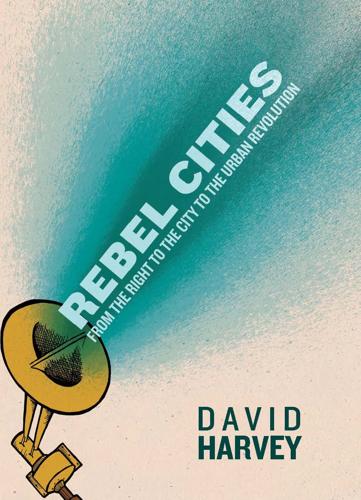
Rebel Cities: From the Right to the City to the Urban Revolution
by
David Harvey
Published 3 Apr 2012
That collective right, as b oth a working slogan and a political ideal, brings us back to the age- old question of who it is that commands th e inner connection between urb an ization and surplus produc tion and use. Perhaps, after all, L efebvre was right, more than forty years ago, to insist that the revolution in our times has to be urban-or nothing. C HAPT E R TWO T h e U rba n Roots of Ca p ita l i st C ri ses I "Housing Bubbles Are Few and Far B e tween ;' Robert Shiller, the econo n an article in the New York Times o n February 5 , 2 0 1 1 , entitled mist who many consider the great housing expert in the US, given his role in the construction of the Case-Shiller index o f housing prices, reas sured everyone that the recent housing bubble was a "rare event, not to be repeated for many decades:' The "enormous housing b ubble" of the early 2000s "isn't comparable to any national or international housing cycle in history.
…
Prahalad, The Fortu ne at the Bottom of the Pyram id: Eradicating Poverty Through Profits, New York: Pearson Prentice Hall, 2009. 2 1 . Scott Larson, "Building Like Moses with Jane Jacobs in Mind;' PhD dis sertation, Earth and Environmental Sciences Program, City University of New York, 20 1 0 . C HA PT E R TWO : T H E U R BA N ROOTS OF CA PITALI ST C R I S ES 1 . Robert Shiller, "Housing Bubbles are Few and Far Between;' New York Times, February 5, 20 1 1 . 2 . "It is indeed shocking;' writes Charles Leung, i n "Macroeconomics and Housing: A Review of the Literature;' Journal of Housing Econom ics 1 3 (2004): 249-67, "that there has been so little overlap and i nteraction between the macroeconomics and the housing literature:' 3.
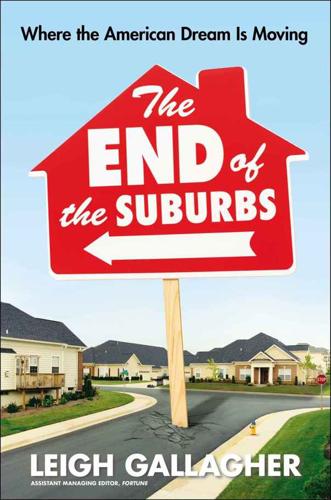
The End of the Suburbs: Where the American Dream Is Moving
by
Leigh Gallagher
Published 26 Jun 2013
But when the people who have delivered the same kind of one-size-fits-all suburban subdivisions over the past few decades are tearing up their blueprints, venturing gingerly into urban markets, and actually fainting at the thought of what the future holds, something big is afoot. The reliable expansion of our suburbs, the steady growth of the housing industry, and the seemingly unending supply of new single-family homes—and home owners—that we became used to over the past several decades may well be a thing of the past. Robert Shiller, a Yale University economist, founder of the Case-Shiller Home Price Indices, and the forecaster who predicted both the dot-com and housing bubbles, has said we may be in for a new normal. According to Shiller, U.S. suburban development since the 1950s was “unusual” in its reliance on the automobile and the highway system; the bursting of the bubble may result in a bigger, more structural change.
…
Census Bureau, “Texas Dominates List of Fastest-Growing Large Cities Since 2010 Census, Census Bureau Reports,” June 28, 2012. Construction permit data shows: Residential Construction Trends in America’s Metropolitan Regions, 2010 ed., Development, Community and Environment Division, U.S. Environmental Protection Agency. Robert Shiller: Yen, “Census Finds Record Low Growth in Outlying Suburbs.” On March 27, 2012, in an interview with Yahoo! Finance’s Aaron Task, Shiller also suggested that dispersed single-family homes are not adequately built for management as rentals, and “that’s one reason why dispersed suburban housing may not do well in decades to come.”
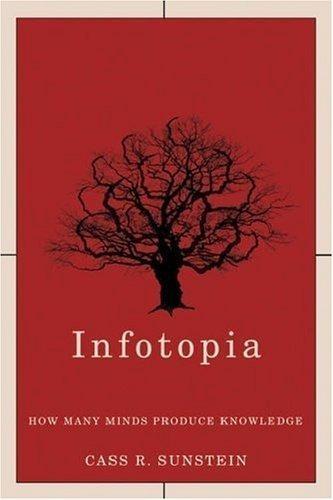
Infotopia: How Many Minds Produce Knowledge
by
Cass R. Sunstein
Published 23 Aug 2006
If the prices of some stocks are extremely low and about to rise, leaving neglected investment opportunities, then many minds aren’t doing so well. 128 / Infotopia So, too, if the prices of some stocks are extremely high and about to fall, ensuring that many minds are losing a lot of money. Is it possible for stocks to be significantly overvalued or undervalued? Many specialists think so. Robert Shiller argues that the increase in the stock market from 1994 to 2000 was not justified “in any reasonable terms. Basic economic indicators did not come close to tripling,” even though stock prices did. In that period, the ratio between stock prices and stock earnings was extreme by historical standards, with prices wildly inflated as compared to an objective measure of the profit-making ability of corporations.50 On this view, many minds were prone to error, leading to overvaluation.
…
For a good overview, see Andrei Shleifer, Inefficient Markets: An Introduction to Behavioral Finance (Oxford: Oxford University Press, 2000). 48. See Richard Thaler, ed., Advances in Behavioral Finance, vol. 2 (Princeton, NJ: Princeton University Press, 2005). 49. In fact, some rigorous tests have raised doubts about it. See ibid. 50. Robert Shiller, Irrational Exuberance, 2d ed. (Princeton, NJ: Princeton University Press, 2005), 2, 5. 51. Ibid., 11. 52. See Erica Klarreich, “Best Guess,” Science News, Oct. 18, 2003, 252, available at http://www.sciencenews.org/articles/20031018/ bob9.asp. Notes to Pages 119–30 / 249 53. Note, however, that Hewlett Packard produced good predictions even in a thin market.
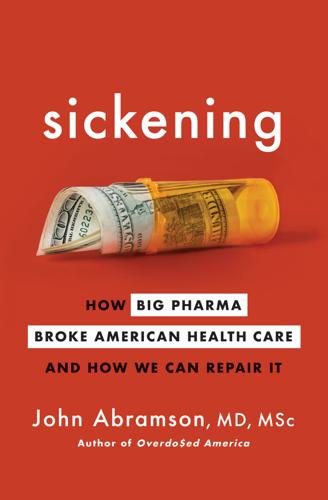
Sickening: How Big Pharma Broke American Health Care and How We Can Repair It
by
John Abramson
Published 15 Dec 2022
Why doctors are so willing to ignore this warning, leaving them and their patients vulnerable to the manipulations of the drug industry, is the subject of the next chapter. 7 Manufacturing Belief Modern economics inherently fails to grapple with deception and trickery. People’s naïveté and susceptibility to deception have been swept under the rug. — NOBEL PRIZE–WINNING ECONOMISTS GEORGE AKERLOF AND ROBERT SHILLER, Phishing for Phools That drug companies bias the journal articles reporting their clinical trial results and the clinical practice guidelines based on those reports is not in question. Why highly trained American doctors fall for this crass commercialism definitely is in question. Part of the answer, discussed in the previous chapter, lies in the false premise that the discipline of evidence-based medicine ensures that doctors will rely on the most valid medical science.
…
This requires going beyond the paradigm of evidence-based medicine to the psychology that lies behind doctors’ processing of new medical information. That psychology leaves them just as susceptible as ordinary consumers are to manipulation by skillful marketing. In 2013, two Nobel Prize–winning economists, George Akerlof and Robert Shiller, were writing Phishing for Phools: The Economics of Manipulation and Deception. Their book debunks the myth of the utopian market being magically overseen by an “invisible hand.” In it, the authors state that Adam Smith’s unregulated market is not in fact a mechanism for optimally distributing goods and services to the maximum benefit of society; rather, it is a way to exploit human weaknesses (and thus engage in “phishing”).
…
“facts determined by experiment”: “History of the Royal Society,” royalsociety.org, https://royalsociety.org/about-us/history/. rather than a public good: Mark A. Rodwin and John D. Abramson, “Clinical Trial Data as a Public Good,” Journal of the American Medical Association 308, no. 9 (2012): 871–72. 7. MANUFACTURING BELIEF “Modern economics inherently”: George A. Akerlof and Robert J. Shiller, Phishing for Phools: The Economics of Manipulation and Deception (Princeton, NJ: Princeton University Press, 2015), 164. “substantially equivalent”: Brent M. Ardaugh, Stephen E. Graves, and Rita F. Redberg, “The 510(k) Ancestry of a Metal-on-Metal Hip Implant,” New England Journal of Medicine 368 (2013): 97–100.
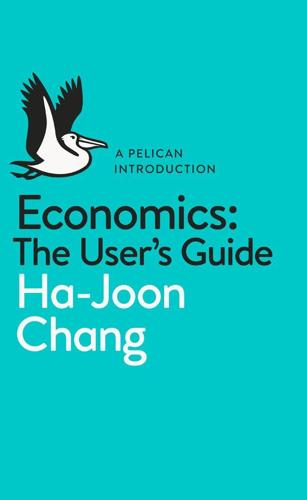
A Pelican Introduction Economics: A User's Guide
by
Ha-Joon Chang
Published 26 May 2014
These are the first sentences of his article ‘The macroeconomist as scientist and engineer’, Journal of Economic Perspectives, vol. 20, no. 4 (2006). 2. For a similar view, see the article, ‘Is economics a science?’ by Robert Shiller, one of the 2013 Nobel Economics laureates. The article can be downloaded at: http://www.theguardian.com/business/economics-blog/2013/nov/06/is-economics-a-science-robert-shiller. CHAPTER 1: LIFE, THE UNIVERSE AND EVERYTHING: WHAT IS ECONOMICS? 1. R. Lucas, ‘Macroeconomic priorities’, American Economic Review, vol. 93, no. 1 (2003). This was his presidential address to the American Economic Association. 2.
…
* The most important regional multilateral banks are the Asian Development Bank (ADB), the African Development Bank (AfDB) and the Inter-American Development Bank (IDB). * There is a huge amount of evidence, well presented in accessible form in books like Peter Ubel’s Free Market Madness, George Akerlof’s and Robert Shiller’s Animal Spirits and the psychologist and 2002 Nobel Economics laureate Daniel Kahnemann’s Thinking, Fast and Slow. * A very rough but useful rule of thumb is that the value-added figure is usually around one-third of sales (turnover) figure of a company. * What really represents a nation’s productivity is how much people have to work in order to produce a given amount of output, rather than what the output is for each person alive.
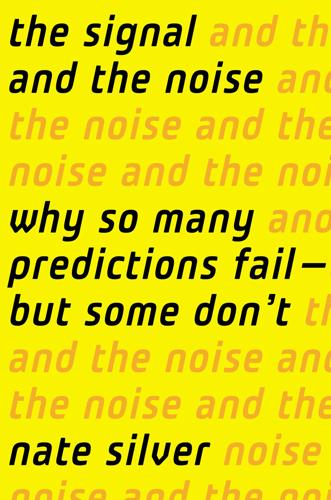
The Signal and the Noise: Why So Many Predictions Fail-But Some Don't
by
Nate Silver
Published 31 Aug 2012
When you can’t state your innocence, proclaim your ignorance: this is often the first line of defense when there is a failed forecast.13 But Sharma’s statement was a lie, in the grand congressional tradition of “I did not have sexual relations with that woman” and “I have never used steroids.” What is remarkable about the housing bubble is the number of people who did see it coming—and who said so well in advance. Robert Shiller, the Yale economist, had noted its beginnings as early as 2000 in his book Irrational Exuberance.14 Dean Baker, a caustic economist at the Center for Economic and Policy Research, had written about the bubble in August 2002.15 A correspondent at the Economist magazine, normally known for its staid prose, had spoken of the “biggest bubble in history” in June 2005.16 Paul Krugman, the Nobel Prize–winning economist, wrote of the bubble and its inevitable end in August 2005.17 “This was baked into the system,” Krugman later told me.
…
And yet, while the ratings agencies bear substantial responsibility for the financial crisis, they were not alone in making mistakes. The story of the financial crisis as a failure of prediction can be told in three acts. Act I: The Housing Bubble An American home has not, historically speaking, been a lucrative investment. In fact, according to an index developed by Robert Shiller and his colleague Karl Case, the market price of an American home has barely increased at all over the long run. After adjusting for inflation, a $10,000 investment made in a home in 1896 would be worth just $10,600 in 1996. The rate of return had been less in a century than the stock market typically produces in a single year.47 But if a home was not a profitable investment it had at least been a safe one.
…
Of the eight times in which the S&P 500 increased in value by twice its long-term average over a five-year period,43 five cases were followed by a severe and notorious crash, such as the Great Depression, the dot-com bust, or the Black Monday crash of 1987.44 A more accurate and sophisticated bubble-detection method is proposed by the Yale economist Robert J. Shiller, whose prescient work on the housing bubble I discussed in chapter 1. Shiller is best known for his book Irrational Exuberance. Published right as the NASDAQ achieved its all-time high during the dot-com bubble, the book served as an antidote to others, such as Dow 36,000, Dow 40,000 and Dow 100,00045 that promised prices would keep going up, instead warning investors that stocks were badly overpriced on the basis of the fundamentals.
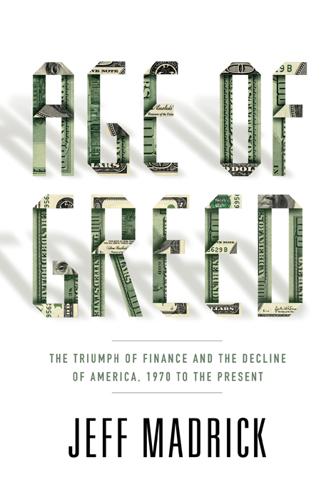
Age of Greed: The Triumph of Finance and the Decline of America, 1970 to the Present
by
Jeff Madrick
Published 11 Jun 2012
He also renominated Greenspan for a third term, proof to Wall Street that he understood their concerns. It was, after all, a presidential election year. But Greenspan had a new worry. In October 1996, the Dow Jones Industrials exceeded 6,000, compared to roughly 4,000 in early 1995. The Yale economist Robert Shiller, a stock market historian, had warned repeatedly that stock prices were running at historically high levels. If stock prices were forming a speculative bubble that was likely to burst, it could jeopardize the economic expansion. Both business and consumers would reduce their spending. Raising interest rates to subdue the stock market might diminish the market enthusiasm, but it might also weaken the economy.
…
They made up in quantity what was lacking in quality. The high dollar coupled with the trade deficit, which put even more dollars in foreign hands, which they in turn confidently invested in U.S. securities, provided ample funds. Between 2000 and 2005, according to Wellesley economist Karl Case and Yale’s Robert Shiller, house prices rose faster than at any time in modern history, and the number of mortgages being written exploded. But when Greenspan raised rates in 2004—on which adjustable rate mortgages were based—the clock began to tick. The rates on tens of billions of dollars of ARMs would be reset upward in 2006.
…
Glantz went on: “It is an open secret that ‘strong buy’ now means ‘buy,’ ‘buy’ means ‘hold,’ ‘hold’ means that the company isn’t an investment banking client, and ‘sell’ means that the company is no longer an investment client.” Rising stock prices made overly optimistic recommendations seem correct and reinforced the practice. Most stocks rose in the first half of the 1990s. But from 1994 on, they soared. It was what economist Robert Shiller, as noted, a historian of stock trends, labeled “the biggest historical example to date of a speculative upsurge in the stock market.” The economy’s prospects improved markedly. But they did not improve as rapidly as the market did. From the end of 1994 to 2000, stock prices roughly tripled while corporate profits rose by only one and a half times.
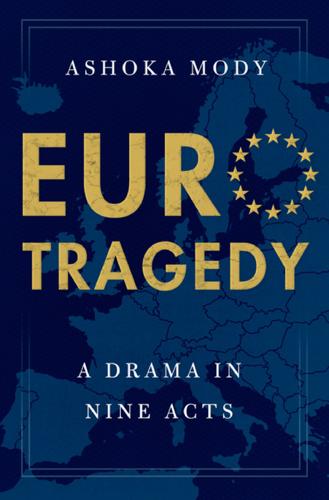
EuroTragedy: A Drama in Nine Acts
by
Ashoka Mody
Published 7 May 2018
Banks and investors worldwide wanted their share of the growing financial bounty in the United States, or else they sought easy riches nearer home. The risk was real that US and global asset prices would keep rising and then quickly and sharply reverse, as they had in Japan in 1990. The person who sounded the loudest warning was Yale University economist Robert Shiller. He emphasized that bouts of irrational exuberance had recurred throughout history. Each bout arose from the same fundamental “human vulnerability to error” and did not just cause gyrations in financial markets but created pervasive instability in the “capitalist system.”6 Many European policymakers believed that Europe was less susceptible to irrational exuberance and to the instability it could spawn than the United States was.
…
In 2006, by which time the bubble was surely a mania, the words “boom” and “bubble” found no place in the IMF’s annual review.111 To the contrary, the IMF’s special assessment of the Irish financial sector delivered a glowing report. Yes, some tweaking was necessary, but it was all good, the IMF concluded.112 Nyberg wrote that the IMF’s endorsement reinforced confidence in the “soundness” of the banking system and in the system’s guardians, the central bank and the financial regulator.113 Yale University’s Robert Shiller says that in all episodes of irrational exuberance, initial concerns give way to the belief that this time is different. Some of those who see the craziness and hold back are sucked in to the euphoria eventually. “People who thought there was a bubble, and that prices were too high, find themselves questioning their own earlier judgments, and start to wonder whether fundamentals are indeed driving the price increase.”
…
John Maynard Keynes, perhaps the most renowned economist of the twentieth century, had vigorously argued the need for fiscal stimulus to pull an economy out of a recession.121 The direct beneficiaries of lower taxes and recipients of larger government transfers begin spending more, which creates additional incomes for others, thus activating a “multiplier effect” through a steadily widening circle of consumers and investors. George Akerlof and Robert Shiller, both recipients of the Nobel Prize for Economics, have noted that the mere knowledge that others have increased their spending creates a more optimistic view of the future. Hesitant consumers make purchases that they were postponing; investors take new initiatives. The optimism spreads through a “confidence multiplier.”122 Production increases, and economic recovery gathers momentum.

Think Twice: Harnessing the Power of Counterintuition
by
Michael J. Mauboussin
Published 6 Nov 2012
McClure, David I Laibson, George Loewsenstein, and Jonathan D. Cohen, “Separate Neural Systems Value Immediate and Delayed Monetary Rewards,” Science 306 (October 15, 2004), 503–507. 28. Jerome Groopman tells a similar story. See Groopman, How Doctors Think, 225–233. 29. George A. Akerlof and Robert J. Shiller, Animal Spirits: How Human Psychology Drives the Economy, and Why It Matters for Global Capitalism (Princeton, NJ: Princeton University Press, 2009), 36–37; and Whitney Tilson and Glenn Tongue, More Mortgage Meltdown: 6 Ways to Profit in These Bad Times (New York: John Wiley & Sons, 2009), 29–47. 30.
…
Prediction markets are real-money exchanges where people can bet on events with binary and temporally defined outcomes; hence the price reflects the probability of the event occurring. See Kenneth J. Arrow, Robert Forsythe, Michael Gorham, Robert Hahn, Robin Hansen, John O. Ledyard, Saul Levmore, Robert Litan, Paul Milgrom, Forrest D. Nelson, George R. Neumann, Marco Ottaviani, Thomas C. Schelling, Robert J. Shiller, Vernon L. Smith, Erik Snowberg, Cass R. Sunstein, Paul C. Tetlock, Philip E. Tetlock, Hal R. Varian, Justin Wolfers, and Eric Zitzewitz, “The Promise of Prediction Markets,” Science 320 (May 16, 2008):877–878; Bo Cowgill, Justin Wolfers, and Eric Zitzewitz, “Using Prediction Markets to Track Information Flows: Evidence from Google,” working paper, 2008. 4.
…
Edward Russo, and Nancy Pennington, “Back to the Future: Temporal Perspective in the Explanation of Events,” Journal of Behavioral Decision Making 2, no. 1 (1989): 25–38. 9. Warren E. Buffett, “Chairman’s Letter,” Berkshire Hathaway Annual Report to Shareholders, 1996. BIBLIOGRAPHY Abernathy, Charles M., and Robert M. Hamm. Surgical Intuition: What It Is and How to Get It. Philadelphia, PA: Hanley & Belfus, 1995. Akerlof, George A., and Robert J. Shiller. Animal Spirits: How Human Psychology Drives the Economy, and Why It Matters For Global Capitalism. Princeton, NJ: Princeton University Press, 2009. Alicke, Mark D., and Olesya Govorun. “The Better-Than-Average Effect.” In The Self in Social Judgment, edited by Mark D. Alicke, David A. Dunning, and Joachim I.
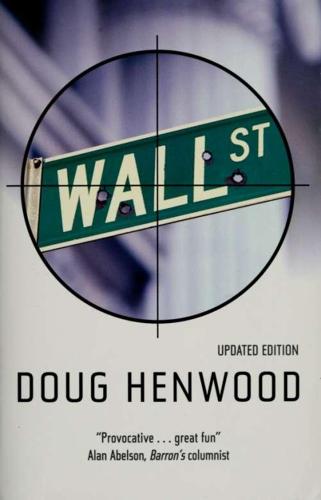
Wall Street: How It Works And for Whom
by
Doug Henwood
Published 30 Aug 1998
The notion that fads and bubbles and panics drive security prices far from their fundamental value — deviations that end not by returning to that fundamental value but typically by overshooting it to the other extreme — now enjoys a scholarly respectability that it didn't 15 or 20 years ago. In an influential series of papers published during the 1980s, Robert Shiller developed a theory of financial market volatility powered by horde psychology. His 1981 paper, "Do stock prices move too much to be justified by subsequent changes in dividends?" (reprinted in Shiller 1991) took aim at the EMH's claim that stock prices are the rational discounted present value of rationally anticipated future dividends or profits.
…
(By pension funds he means their managers, of course.) This accountability represents a check on what Monks admits to be the rather anomalous position of corporations in a professedly democratic society. 25. The Twentieth Century Fund's (1992) most recent take on governance, Who's Minding the Store?, is built around an essay by Robert Shiller on excess volatility. Yet the policy conclusions the Fund draws from Shiller's work are the weakest tea imaginable: encouraging patient capital through moral suasion, while taking no tax or regulatory steps towards that goal. 26. In some cases, like Japan and South Korea, the protectionist strategies succeeded; in Latin America, however, they often protected corrupt and incompetent friends of the government.
…
The latter institutions have contributed greatly to creating the borderless world Tobin bemoans, but liberals rarely seem to have problems with contradictions like this. Tobin has also argued for a similar tax on stock trades. Tobin lodged a dissent from the tame official recommendations of the Twentieth Century Fund's (1992) Task Force on Market Speculation and Corporate Governance. The report's centerpiece was a long essay by Robert Shiller (1992) on markets' excessive volatility, and the dangers of taking guidance on how to run real corporations from movements in their stock prices. But having raised that interesting question, the worthies on the Fund's panel decided against a transactions tax, preferring instead a revolution in the consciousness of institutional investors — the sprouting of a new culture of patience and self-discipline, as incredible as that may sound to any student of the markets.
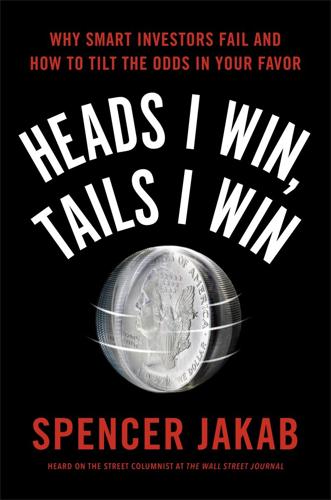
Heads I Win, Tails I Win
by
Spencer Jakab
Published 21 Jun 2016
As I said earlier, that measure gave false comfort by showing that in October 2007, at the end of a bull market, stocks were just as cheap as when it had begun five years earlier. We only knew with the benefit of hindsight that the forecast “E” was completely wrong. There’s a much more stable and reliable P/E ratio you should use instead. Though he wasn’t the first person to tweak the measure in some way, Yale University professor Robert Shiller has done so much excellent work on valuing assets that his version of a modified P/E ratio is the most famous. It’s also free to see on his public Web site. The “Shiller P/E,” also known as a cyclically adjusted P/E, or CAPE, mostly gets rid of the problems of corporate margins bouncing up and down that I mentioned earlier and also adjusts for inflation.
…
That went down to 17 percent for the next cheapest, 15 percent for the following one, and so forth, all the way down to below 6 percent for the most expensive one. The same pattern repeats over ten-year periods. Returns were 11.5 percent a year for the cheapest decile and just 3.3 percent for the most expensive one. If the regular old P/E sounded like a virtual crystal ball to you, then Robert Shiller must seem like Nostradamus. But curb your enthusiasm. The CAPE would be a disastrous short-term timing tool because what I just described is what happens on average. Valuations can stay low or high for years. For example, there was an occasion when the market fell by 18 percent in the following year after one of the cheapest readings.
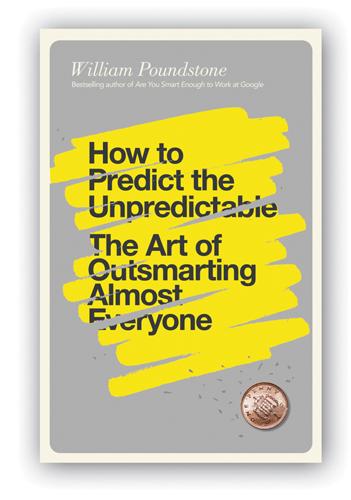
How to Predict the Unpredictable
by
William Poundstone
The market is supposed to take a long-term outlook and price stocks according to the whole future stream of earnings. But investors, like everyone else, believe in the representativeness of small samples. PE valuations have too much to do with the latest news cycle, the latest quarter, and the last few years. Yale economist Robert Shiller devised a better way of gauging stock market valuation. It’s the current S&P 500 price divided by a ten-year moving average of earnings. This has the merit of smoothing out business cycles and much of the duplicity in corporate earnings reports — for there are cycles of candor as well as profit.
…
“NCAA Brackets: How to Win Your March Madness Pool.” CBS News, Mar. 12, 2010. www.cbsnews.com/8301-505123_162-51403055/ncaa-brackets-how-to-win-your-march-madness-pool/. Camerer, Colin F. (1989). “Does the Basketball Market Believe in the ‘Hot Hand’?” American Economic Review 79, 1257–1261. Campbell, John Y., and Robert J. Shiller (1998). “Valuation Ratios and the Long-Run Stock Market Outlook.” Journal of Portfolio Management, Winter 1998, 11–26. Cassidy, John (2007). “The Blow-Up Artist.” New Yorker, Oct. 15, 2007. Chapanis, Alphonse (1953). “Random-number Guessing Behavior.” American Psychologist 8, 332. ——— (1995).
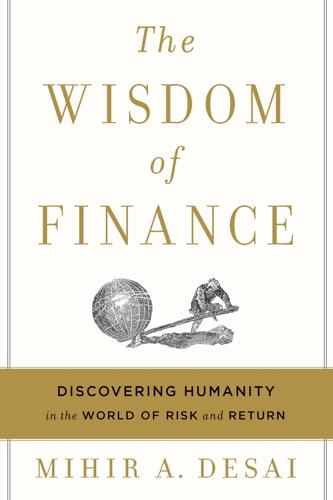
The Wisdom of Finance: Discovering Humanity in the World of Risk and Return
by
Mihir Desai
Published 22 May 2017
Boston: McGraw-Hill Irwin, 2013; and Berk, Jonathan B., and Peter M. DeMarzo. Corporate Finance. Boston: Pearson Addison Wesley, 2013. A more accessible treatment of these ideas for practitioners is provided in Higgins, Robert C. Analysis for Financial Management. 11th ed. New York: McGraw-Hill Education, 2016. Robert Shiller’s Finance and the Good Society. Princeton, NJ: Princeton University Press, 2012, is another excellent general source. My own effort at making finance accessible is the HBX online course “Leading with Finance.” MOV. Boston: President & Fellows of Harvard College, 2016. Author’s Note “My object in living”: The Frost quote is an excerpt of the last stanza of “Two Tramps in Mud Time.”
…
For a discussion of the rise of the alternative asset industry and its effect on Wall Street, see Desai, Mihir A. “The Incentive Bubble.” Harvard Business Review 90, no. 3 (March 2012): 123–29. For an excellent but rigorous overview of the state of play in asset pricing generally, see Campbell, John Y. “Empirical Asset Pricing: Eugene Fama, Lars Peter Hansen, and Robert Shiller.” Scandinavian Journal of Economics 116, no. 3 (2014): 593–634; and Cochrane, John H. Asset Pricing. Princeton, NJ: Princeton University Press, 2001. A slightly more accessible version of these ideas is provided in Cochrane, John H., and Christopher L. Culp. “Equilibrium Asset Pricing and Discount Factors: Overview and Implications for Derivatives Valuation and Risk Management.”

Early Retirement Guide: 40 is the new 65
by
Manish Thakur
Published 20 Dec 2015
In reality, if we were evaluating houses as an investment, they would have a terrible return, or even a negative return when including interest, property taxes, and repairs. In most economic times, houses only retain their value, increasing with the rate of inflation, rather than growing in actual value. Yale professor Robert Shiller found that when property taxes, maintenance, and other housing costs are accounted for, houses usually have a negative return. Since our timeline to become financially independent is much shorter than 30 years, we don't want those large mortgage payments eating away at our 4% withdrawal each year just to have a larger home.

New Laws of Robotics: Defending Human Expertise in the Age of AI
by
Frank Pasquale
Published 14 May 2020
S. Eliot speaks of ‘raids on the inarticulate.’ Humboldt, for his part, posits a drive [Trieb] ‘to couple everything felt by the soul [mind] with a sound.’ ” 85. Robert J. Shiller, Narrative Economics: How Stories Go Viral and Drive Major Economic Events (Princeton: Princeton University Press, 2019). 86. Steve LeVine, “The Economist Who Wants to Ditch Math,” Marker: Medium, November 5, 2019, https://marker.medium.com/robert-shiller-says-economics-needs-to-go-viral-to-save-itself-f157eceb4c7d. 87. Jens Beckert and Richard Bronk, eds., Uncertain Futures: Imaginaries, Narratives, and Calculation in the Economy (Oxford: Oxford University Press, 2018). 88.
…
It is a feature of social meanings crystallized into resonant language reinforcing sense with sound, inner feeling with an outward objective correlative. Narratives about the future are drivers of the economy and society, and not simply post hoc efforts to understand what has already happened. This insight, going back to Keynes, has recently been recapitulated in Nobelist Robert Shiller’s book Narrative Economics.85 There is no physics of markets; economics is a human science, all the way down, and will be unpredictable as long as humans have free will. As Dennis Snower, president of the Kiel Institute for the World Economy, has observed, “The standard statistical analyses are no longer valid.
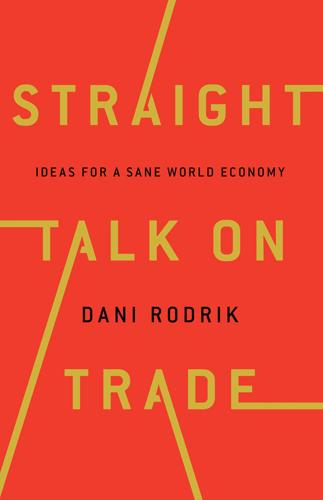
Straight Talk on Trade: Ideas for a Sane World Economy
by
Dani Rodrik
Published 8 Oct 2017
If economists want to enhance their public engagement, they will need to pay greater attention to these and other questions discussed in the next few chapters. Nobel Confusion? When the 2013 Nobel Prize in economics (technically the Sveriges Riksbank Prize in Economic Sciences in Memory of Alfred Nobel) was awarded to Eugene Fama and Robert Shiller, along with Lars Peter Hansen, many were puzzled by the selection. Fama and Shiller are both distinguished and highly regarded scholars, so it was not their qualifications that raised eyebrows. What seemed odd was that the committee had picked them together. The two economists seem to hold diametrically opposed views on how financial markets work.
…
They had spoken with near unanimity when it came to the “dangers of government over-regulation.” Their technical expertise—or what seemed like it at the time—had given them a privileged position as opinion makers, as well as access to the corridors of power. Very few among them had raised alarm bells about the crisis to come (Robert Shiller was one such Cassandra). Perhaps worse, the profession failed to provide helpful guidance in steering the world economy out of its mess. Economists’ opinion on monetary, fiscal, and regulatory remedies for longer term recovery and growth never converged. Many outsiders concluded that economics was in need of a major shake-up.

More: The 10,000-Year Rise of the World Economy
by
Philip Coggan
Published 6 Feb 2020
And the decline in interest rates across the region fuelled speculative bubbles, as we shall see. The build-up to the crisis The crisis that ended this era had its roots in an unexpected place – the American housing market. What happened to US house prices in the late 1990s and early 2000s was most unusual. Robert Shiller of Yale University had looked at the long-term history of house prices in the US and found that the real price increase between 1890 and 1997 was about 12%. Then, in the eight years between 1998 and 2006, they rose 85%. Nothing like it had been seen before. This was not caused by population growth, which was only rising steadily, nor by building costs.
…
Kennedy, Freedom from Fear: The American People in Depression and War 1929–1945 35. Source: https://inflationdata.com/articles/inflation-consumer-price-index-decade-commentary/inflation-cpi-consumer-price-index-1920–1929/ 36. Ahamed, Lords of Finance, op. cit. 37. Source: https://fred.stlouisfed.org/series/M1109BUSM293NNBR 38. The figures come from Robert Shiller of Yale University and his website: www.irrationalexuberance.com 39. “Florida’s land boom”, https://fcit.usf.edu/florida/lessons/ld_boom/ld_boom1.htm 40. The city’s name had been changed from St Petersburg during the war. It would be changed again to Leningrad before reverting to St Petersburg in the post-communist era. 41.
…
Barry Eichengreen and Charles Wyplosz, “The unstable EMS”, https://www.Brookings.Edu/Wp-Content/Uploads/1993/01/1993a_Bpea_Eichengreen_Wyplosz_Branson_Dornbusch.Pdf 39. Source: https://www.nber.org/cycles.html 40. The day was dubbed Black Wednesday although, in fact, it allowed Britain to slash interest rates and let the economy recover. Longer term, it soured British politics by making many on the right hostile to the EU in general. 41. Robert Shiller, Irrational Exuberance, third edition 42. Judith Yates, “Housing in Australia in the 2000s: on the agenda too late?”, https://www.rba.gov.au/publications/confs/2011/yates.html 43. Tobias Buck, “Spain: boom to bust and back again”, Financial Times, April 6th 2017 44. Ben S. Bernanke, “The global saving glut and the US current account deficit”, the Sandridge Lecture, Virginia Association of Economists, Richmond, Virginia, March 10th 2005 Chapter 15 – Government: an ever-present force 1.
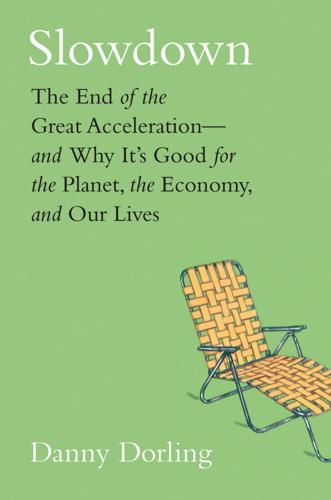
Slowdown: The End of the Great Acceleration―and Why It’s Good for the Planet, the Economy, and Our Lives
by
Danny Dorling
and
Kirsten McClure
Published 18 May 2020
By 2010, well over two thousand metric tonnes a year was being mined; by 2018 that figure had risen to well over three thousand metric tonnes a year.29 Consumers suspect that the prices of neither gold nor homes are determined or altered by supply and demand. In 1988, economists Karl Case and Robert J. Shiller sent 2,030 questionnaires to recent home buyers in four U.S. cities asking them what they thought had determined recent changes in housing prices where they lived. “Not a single person from among the 886 respondents cited any quantitative evidence about future trends in supply or demand, or professional forecasts of future supply or demand.”30 At the time, the economists concluded, “There is a peculiar lack of interest in objective evidence about fundamentals.”
…
“Not a single person from among the 886 respondents cited any quantitative evidence about future trends in supply or demand, or professional forecasts of future supply or demand.”30 At the time, the economists concluded, “There is a peculiar lack of interest in objective evidence about fundamentals.” They would have been more insightful if they had recognized that buyers knew that supply and demand is not a fundamental determinant of price—how could it be, when housing supply in the United States had also been growing so quickly throughout the childhoods of Generation X? Robert J. Shiller was awarded the Nobel Memorial Prize for economics twenty-five years after sending out those questionnaires with his colleague Karl Case. So if it is not supply and demand that determines housing prices, what could it be? What consumers thought did matter were speculative considerations. Housing economists don’t have the answer.
…
Becky Tunstall, “Relative Housing Space Inequality in England and Wales, and Its Recent Rapid Resurgence,” International Journal of Housing Policy 15, no. 2 (2015): 105–26, http://www.tandfonline.com/doi/full/10.1080/14616718.2014.984826. 29. “Gold Supply and Demand Statistics,” World Gold Council, accessed 6 May 2019, https://www.gold.org/goldhub/data/gold-supply-and-demand-statistics. 30. Robert Shiller, “Speculative Prices and Popular Models,” Journal of Economic Perspectives 4, no. 2 (1990): 59, http://www.jstor.org/stable/1942890. Note: Case and Shiller worked together for decades, but this paper was written by Shiller alone. 31. John Muellbauer and Anthony Murphy, “Booms and Busts in the UK Housing Market,” Economic Journal 107, no. 445 (1997): 1701–27, http://onlinelibrary.wiley.com/doi/10.1111/j.1468-0297.1997.tb00076.x/full. 32.
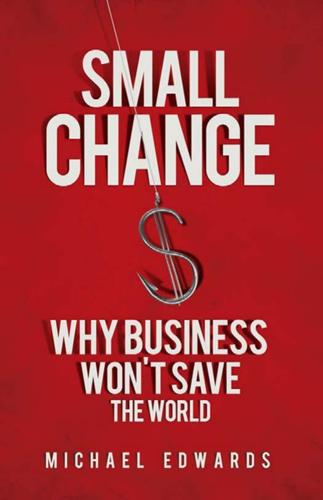
Small Change: Why Business Won't Save the World
by
Michael Edwards
Published 4 Jan 2010
Not all philanthrocapitalists talk or feel this way, but the mix of arrogance and ignorance revealed in these quotations sure takes some explaining. What lies behind the rise of this phenomenon? The philanthrocapitalists are drinking from a heady and seductive cocktail, one part “irrational exuberance,” as Robert Shiller puts it,10 that is characteristic of market thinking; two parts believing that success in business equips them to make the same impact on society at large; a dash or two of the excitement that accompanies any high-profile new solution; and an extra degree of fizz from the oxygen of publicity that is created when philanthropists get the chance to mix with the world’s richest and most famous people.

The Ascent of Money: A Financial History of the World
by
Niall Ferguson
Published 13 Nov 2007
(In the last quarter of 2007, Glasgow house prices fell by 2.1 per cent. The only consolation was that in Edinburgh they fell by 5.8 per cent.) In cities all over the world, house prices soared far above what was justified in terms of rental income or construction costs. There was, as the economist Robert Shiller has said, simply a ‘widespread perception that houses are a great investment’, which generated a ‘classic speculative bubble’ via the same feedback mechanism which has more commonly affected stock markets since the days of John Law. In short, there was irrational exuberance about bricks and mortar and the capital gains they could yield.74 This perception, as we have seen, was partly political in origin.
…
ID=18579. 72 CNN, 9 July 2000. 73 Testimony of Chairman Alan Greenspan, Federal Reserve Board’s semi-annual Monetary Policy Report to the Congress, before the Committee on Banking, Housing, and Urban Affairs, US Senate, 16 February 2005. 3. Blowing Bubbles 1 For a recent contribution to a vast literature, see Timothy Guinnane, Ron Harris, Naomi R. Lamoreaux, and Jean-Laurent Rosenthal, ‘Putting the Corporation in its Place’, NBER Working Paper 13109 (May 2007). 2 See especially Robert J. Shiller, Irrational Exuberance (2nd edn., Princeton, 2005). 3 See Charles P. Kindleberger, Manias, Panics and Crashes: A History of Financial Crises (3rd edn., New York / Chichester / Brisbane / Toronto / Singapore, 1996), pp. 12-16. Kindleberger owed a debt to the pioneering work of Hyman Minsky. For two of his key essays, see Hyman P.
…
Litan, ‘Sharing and Reducing the Financial Risks of Future Mega-Catastrophes’, Brookings Issues in Economic Policy, 4 (March 2006). 87 William Hutchings, ‘Citadel Builds a Diverse Business’, Financial News, 3 October 2007. 88 Marcia Vickers, ‘A Hedge Fund Superstar’, Fortune, 3 April 2007. 89 Joseph Santos, ‘A History of Futures Trading in the United States’, South Dakota University MS, n.d. 5. Safe as Houses 1 Philip E. Orbanes, Monopoly: The World’s Most Famous Game - And How It Got That Way (New York, 2006), pp. 10-71. 2 Ibid., p. 50. 3 Ibid., pp. 86f. 4 Ibid., p. 90. 5 Robert J. Shiller, ‘Understanding Recent Trends in House Prices and Home Ownership’, paper presented at Federal Reserve Bank of Kansas City’s Jackson Hole Conference (August 2007). 6 http://www.canongate.net/WhoOwnsBritain/DoTheMathsOnLand Ownership . 7 David Cannadine, Aspects of Aristocracy: Grandeur and Decline in Modern Britain (New Haven, 1994), p. 170. 8 I am grateful to Gregory Clark for these statistics. 9 Frederick B.
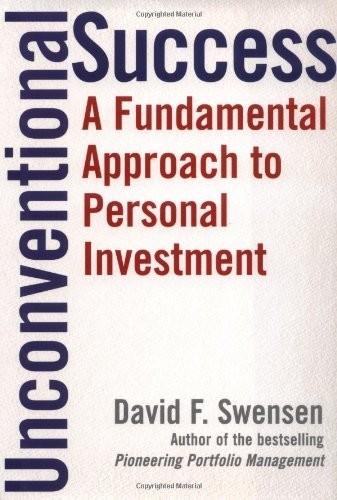
Unconventional Success: A Fundamental Approach to Personal Investment
by
David F. Swensen
Published 8 Aug 2005
If highly compensated, specially trained, handsomely supported investment professionals fail, what leads part-time, financially untutored, resource-deficient individuals to believe they can succeed? The unrealistic belief in success emanates from a failure by individuals to recognize their investment limitations. Yale economist Robert Shiller observes that “a pervasive human tendency towards overconfidence” causes investors “to express overly strong opinions and rush to summary judgments.”2 Overconfidence contributes to a litany of investor errors, including inadequate diversification, overzealous security selection, and counterproductive market timing.
…
Suggesting that TIAA-CREF participants learned little from the experience of the 1990s, during 2003 a resurgent stock market once again increased participant equity holdings, setting the stage for another leg of the roller coaster trip. Market forces provided a wild ride for TIAA-CREF participants. RETURN AND RISK BENEFITS FROM REBALANCING When markets exhibit excess volatility, rebalancing enhances portfolio returns. Excess volatility, a phenomenon described by Yale economist Robert Shiller, refers to a situation in which market prices fluctuate more than necessary to reflect changes in fundamental drivers of security values, such as corporate earnings and interest rates. Since stock prices tend to fluctuate around fair value, excess volatility allows systematic rebalancers to buy low (on relative declines) and sell high (on relative increases).
…
The Vangard Group, Vanguard REIT Index Fund Investor Shares Prospectus, 25 November 2003: 3. 39. Wells Real Estate Funds, Wells STP REIT Index Fund Prospectus, 25 November 2003: 3. CHAPTER 3: PORTFOLIO CONSTRUCTION 1. John Maynard Keynes, Monetary Reform (New York: Harcourt, Brace, 1924): 88. 2. Robert J. Shiller, Irrational Exuberance (Princeton: Princeton University Press, 2000): 142. CHAPTER 4: NON-CORE ASSET CLASSES 1. Marie Nelson, “Debt Ratings,” Moody’s Investors Service, 23 July 2003. 2. “WorldCom’s Credit Rating Sliced to Junk by Moody’s,” Bloomberg, 9 May 2002. 3. Sharon Ou and David T.

The Rent Is Too Damn High: What to Do About It, and Why It Matters More Than You Think
by
Matthew Yglesias
Published 6 Mar 2012
This is stuff you’re going to have to fix, not stuff that’s going to increase in value. The house probably comes with some grass and other plants that you’ll have to take care of, a roof that might leak, and windows that will get dirty. Lots of people buy RVs, but nobody “invests” in them. And what’s a house but a giant RV with no wheels? Yale economist Robert Shiller observes in his book Subprime Solution that, once upon a time, “People thought of their homes as depreciating manufactured goods, like cars and boats, which require a lot of upkeep and eventually go out of style.” When people buy new cars, they consider the car’s resale value. But that doesn’t mean they expect to turn a profit when selling it.
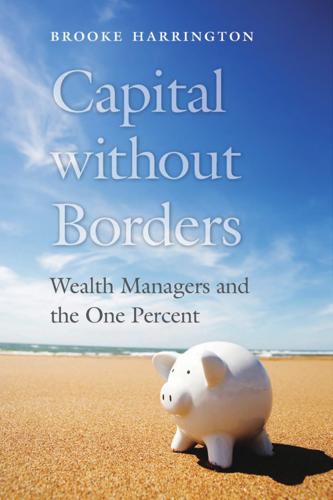
Capital Without Borders
by
Brooke Harrington
Published 11 Sep 2016
These decisions depend on the type of asset in question (is it a yacht, an art collection, or a stock portfolio?) as well as on the goals of the client. What wealth managers do As a practical matter, wealth managers’ daily practice is somewhat like that of architects, in that they design complex, multifunction structures. Indeed, the Nobel Prize–winning economist Robert Shiller recently defined finance as “the science of goal architecture—of the structuring of the economic arrangements necessary to achieve a set of goals and the stewardship of the assets needed for that achievement.”21 From this perspective, wealth management is a profession operating at the very core of finance.
…
Harrington, “Trust and Estate Planning.” 19. Lawrence Friedman, Dead Hands: A Social History of Wills, Trusts, and Inheritance Law (Stanford, CA: Stanford University Press, 2009). 20. Ronen Palan, Richard Murphy, and Christian Chavagneux, Tax Havens: How Globalization Really Works (Ithaca, NY: Cornell University Press, 2010). 21. Robert Shiller, Finance and the Good Society (Princeton, NJ: Princeton University Press, 2012). 22. Michael Parkinson, Trustee Investment and Financial Appraisal, 4th ed. (Birmingham, UK: Central Law Training, 2008), 20. 23. Michael Parkinson, Trust Creation: Law and Practice (Birmingham, UK: Central Law Training, 2005), 220. 24.
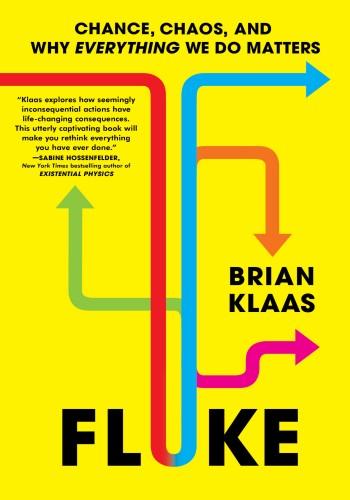
Fluke: Chance, Chaos, and Why Everything We Do Matters
by
Brian Klaas
Published 23 Jan 2024
Until recently, the notion that one could study, say, the boom-and-bust cycles of the economy by analyzing narratives and viral stories would’ve gotten you laughed out of an economist’s office. Few are laughing now because the idea has been mainstreamed by several renowned experts, including one who previously won a Nobel Prize in Economics: Robert Shiller. “If we do not understand the epidemics of popular narratives,” Shiller wrote, “we do not fully understand changes in the economy and in economic behavior.” This may seem so obvious as to be commonplace, but narrative economics was, until recently, a fringe niche within the field. Try going on CNBC or Bloomberg and talking not about falling price-earnings ratios, but about how viral narratives foreshadow a recession.
…
learn to swim before they walk: Carrie Arnold, “Watchers of the Earth,” Aeon, 13 April 2017. buzzing of cicadas: Rebecca Leung, “Sea Gypsies Saw Signs in the Waves,” CBS News, 18 March 2005. warns them of laboon: Susan Smillie, “Tsunami, 10 Years On: The Sea Nomads Who Survived the Devastation,” Guardian, 10 December 2014. “epidemics of popular narratives”: Robert Shiller, Narrative Economics: How Stories Go Viral and Drive Major Economic Events (Princeton, NJ: Princeton University Press, 2021). most human stories could be graphed: Vonnegut gave a lecture on this topic at Case Western Reserve University in 2004. It was the subject of his master’s thesis at the University of Chicago, which rejected it.
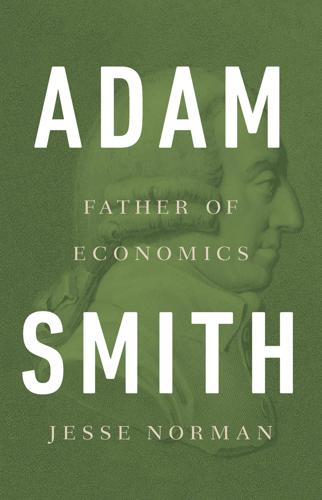
Adam Smith: Father of Economics
by
Jesse Norman
Published 30 Jun 2018
(ed.), The Elgar Companion to Adam Smith, Edward Elgar 2009 OTHER WORKS Acemoglu, Daron and James A. Robinson, Why Nations Fail, Profile Books 2012 Akerlof, George A. and Rachel E. Kranton, Identity Economics, Princeton University Press 2010 Akerlof, George A. and Robert J. Shiller, Animal Spirits, Princeton University Press 2009 Akerlof, George A. and Robert J. Shiller, Phishing for Phools: The Economics of Manipulation and Deception, Princeton University Press 2015 Allen, Robert, The British Industrial Revolution in Global Perspective, Cambridge University Press 2009 Anderson, James, An Enquiry into the Nature of the Corn Laws, Mrs Mundell 1777 Ariely, Dan, The (Honest) Truth about Dishonesty: How We Lie to Everyone—Especially Ourselves, HarperCollins 2012 Arrow, Kenneth, Social Choice and Individual Values, John Wiley 1951 Arrow, Kenneth and Frank Hahn, General Competitive Analysis, Holden-Day 1971 Bagehot, Walter, Economic Studies, ed.
…
The rich and the great, the proud and the vain, will not admit into their gardens an ornament which the meanest of the people can have as well as they.’ History of manias, bubbles and crashes: there is considerable controversy as to the correct explanation for different bubbles or manias. See e.g. Charles P. Kindleberger, Manias, Panics, and Crashes, 4th edn, John Wiley 2000; Robert Shiller, Irrational Exuberance, Princeton University Press 2000; Peter Garber, Famous First Bubbles: The Fundamentals of Early Manias, MIT Press 2000; and for finance, Carmen Reinhart and Kenneth Rogoff, This Time is Different, Princeton University Press 2011 Keynes’s beauty competition: J. M. Keynes, The General Theory of Employment, Interest and Money, Macmillan 1936 Asset markets and credit creation: see George Cooper, The Origin of Financial Crises, 2nd edn, Harriman House 2010 Hyman Minsky: see his Stabilizing an Unstable Economy, Yale University Press 1986.
…
On progress and inequality—and the dynamic ebb and flow between them—see Angus Deaton, The Great Escape: Health, Wealth, and the Origins of Inequality, Princeton University Press 2013 GDP disparity between West and East Germany: CIA World Factbook, 1990 Incentives within capitalism encouraging rip-offs and exploitation: see George A. Akerlof and Robert J. Shiller, Phishing for Phools: The Economics of Manipulation and Deception, Princeton University Press 2015 ‘“Free Trade” is an accepted maxim of tedious orthodoxy’: Walter Bagehot, ‘Adam Smith and our Modern Economy’, reprinted in Economic Studies, ed. R. H. Hutton, Longman, Green 1895 Hamiltonian arguments for managed trade: cf.
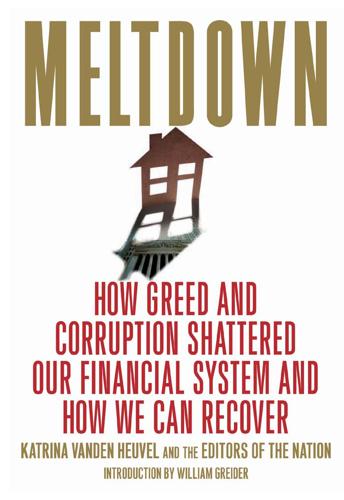
Meltdown: How Greed and Corruption Shattered Our Financial System and How We Can Recover
by
Katrina Vanden Heuvel
and
William Greider
Published 9 Jan 2009
In a way, they did—eventually and violently—by succumbing to a massive “correction”—much to the sorrow of millions of hapless investors, pension funds and others who had gotten no timely warnings from their government about what was ahead. Greenspan could not claim ignorance. In private meetings with Federal Reserve Board colleagues as far back as 1996, he was repeatedly warned of the dangers posed by the growing stock-price bubble. He declined to take any action or even warn the public. Yale economist Robert Shiller, whose book Irra- tional Exuberance impressively predicted the coming blood-bath, was a rare critic. A public official who fails to alert investors to such risks “is no better than a doctor who, having diagnosed high blood pressure in a patient, says nothing because he thinks the patient might be lucky and show no ill effects,” Shiller wrote.
…
The logical response is a fundamental policy shift in favor of work and wages—boosting incomes and demand—but that approach would require taboo measures from the Keynesian past that even most Democrats don’t understand or support. Meanwhile, the financial froth of speculative bubbles—and their dangers—are another enduring legacy of the Greenspan era. “Irrational exuberance really is still with us,” Robert Shiller wrote in the new, revised edition of his book. Notwithstanding the earlier meltdown, the stock market remains dangerously overvalued by historical measures, Shiller warns, and is now accompanied by dramatic price inflation in real estate. These two bubbles are false valuations by markets and will burst sooner or later.
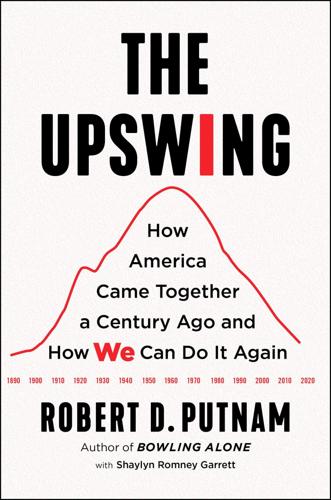
The Upswing: How America Came Together a Century Ago and How We Can Do It Again
by
Robert D. Putnam
Published 12 Oct 2020
The term “American Dream” had originally been popularized by James Truslow Adams in 1931, who explained, “It is not a dream of motor cars and high wages merely, but a dream of a social order in which each man and each woman shall be able to attain to the fullest stature of which they are innately capable, and recognized by others for what they are, regardless of the fortuitous circumstances of their birth.”39 That high-minded understanding of the “American Dream” persisted into the 1960s. As Nobel Laureate economist Robert Shiller has observed, “it meant freedom, mutual respect and equality of opportunity. It had more to do with morality than material success.” References to the American Dream became even more common in the 1960s, Shiller points out, including “Martin Luther King Jr.’s ‘I Have a Dream’ speech in 1963, in which he spoke of a vision that was ‘deeply rooted in the American Dream.’
…
When we speak to quantitative social scientists about the I-we-I curve, they often say that they would fully believe our story only if we can identify a “cause” of the curve; but when we speak to historians they usually say that if we did identify a “cause” of the curve, they would not believe our story, because “history is always more complicated than that.” In short, social scientists tend to prefer causal analysis, while most historians prefer narratives.12 Robert Shiller, a Nobel Prize–winning economist, has recently argued that historians may be on to something that social scientists should not ignore. Shiller’s book Narrative Economics opens with him reminiscing about an enlightening undergraduate history class in which he read an account of the 1920s by, coincidentally, Frederick Lewis Allen, the same historian whose image of “streams of events run[ning] side by side down the channel of time” we cited earlier in this chapter.
…
Ngram analysis shows no similar pattern for “fanfare” nor for “Common Man,” so this chart does not primarily reflect the impact of the musical composition itself. 38 As noted in Chapter 2, from 1945 to 1975 the national distribution of income gradually became somewhat more equal, implying that working-class Americans were getting a slightly larger share of annual growth than upper income Americans, though the actual distribution of income itself remained far from equal. James T. Patterson, Grand Expectations: The United States, 1945–1974, The Oxford History of the United States, vol. 10 (New York: Oxford University Press, 1996), 321–22. 39 James Truslow Adams, The Epic of America (Garden City, NY: Blue Ribbon Books, 1941), 404. 40 See Robert J. Shiller, “The Transformation of the ‘American Dream,’ ” New York Times, August 4, 2017. 41 Arthur M. Schlesinger, The Vital Center: The Politics of Freedom (Boston: Houghton Mifflin, 1949), 256. 42 Martin Luther King Jr., “Letter from a Birmingham Jail,” African Studies Center—University of Pennsylvania, accessed November 22, 2019, https://www.africa.upenn.edu/Articles_Gen/Letter_Birmingham.html. 43 John F.
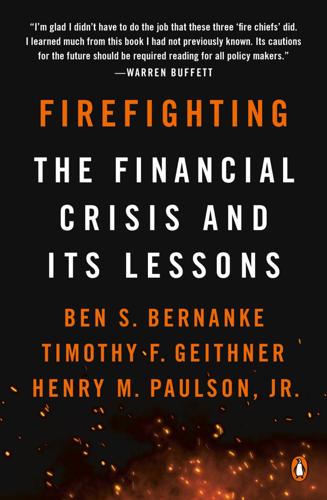
Firefighting
by
Ben S. Bernanke
,
Timothy F. Geithner
and
Henry M. Paulson, Jr.
Published 16 Apr 2019
Benchmark interest rates, monthly Sources: Federal Reserve Board and Freddie Mac Primary Mortgage Market Survey® via Federal Reserve Economic Data (FRED) ANTECEDENTS Home prices across the country had been rising rapidly for nearly a decade. Real home price index, percentage change from 1890 Source: U.S. Home Price and Related Data, Robert J. Shiller, Irrational Exuberance ANTECEDENTS Household debt as a share of income had risen to alarming heights. Aggregate household debt as a share of disposable personal income Source: Federal Reserve Board Financial Accounts of the United States, based on Ahn et al. (2018) ANTECEDENTS Credit and risk had migrated outside the regulated banking system.
…
Outcomes OUTCOMES The severity of the stress of the 2008 financial crisis was, in some respects, worse than in the Great Depression. Sources: Stock prices: The Center for Research in Security Prices at Chicago Booth via Wharton Research Data Services (WRDS); housing prices: U.S. home price and related data, Robert J. Shiller, Irrational Exuberance; GD household wealth: Mishkin (1978); GR household wealth: Federal Reserve Board Financial Accounts of the United States OUTCOMES The U.S. government response ultimately stopped the panic and stabilized the financial system . . . Bank CDS spreads and Libor-OIS spread Sources: Libor-OIS: Bloomberg Finance L.P.; CDS spreads: Bloomberg Finance L.P., IHS Markit Note: Credit default swap spreads are equal-weighted averages of JPMorgan Chase, Citigroup, Wells Fargo, Bank of America, Morgan Stanley, and Goldman Sachs.
…
Dept. of Treasury NOTES Cumulative growth in average income: Re-created with data underlying Figure 10, “The Distribution of Household Income, 2014,” Congressional Budget Office (2018), www.cbo.gov/publication/53597. See link for definitions of income and income groups. Real home price index: Based on Figure 3.1, U.S. home price and related data, Robert J. Shiller, Irrational Exuberance, 3rd ed. (Princeton, NJ: Princeton University Press, 2015), as updated by the author, www.econ.yale.edu/~shiller/data.htm. Aggregate household debt: Based on Figure 1, Panel 1, Michael Ahn, Michael Batty, and Ralf Meisenzahl, “Household Debt-to-Income Ratios in the Enhanced Financial Accounts,” FEDS Notes (Washington, DC: Board of Governors of the Federal Reserve System, January 11, 2018), https://doi.org/10.17016/2380-7172.2138.
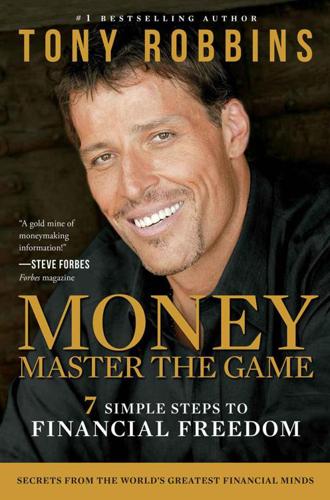
MONEY Master the Game: 7 Simple Steps to Financial Freedom
by
Tony Robbins
Published 18 Nov 2014
A home, if it’s your primary residence, shouldn’t be seen as an investment to leverage, and it shouldn’t be counted on to produce a gigantic return. But wait, haven’t we always been told that your home is your best investment because it always goes up in value? In my search for answers, I sat down with the Nobel Prize–winning economist Robert Shiller, the leading expert on real estate markets, and creator of the Case-Shiller home price index of housing prices. His breakthrough insights were used to create the following chart. Shiller found that when he adjusted for inflation, US housing prices have been nearly flat for a century! He exploded one of the biggest myths of our time: that home prices keep going up and up.
…
These are trusts that own big chunks of commercial real estate (or mortgages) and sell shares to small investors, like mutual funds. REITs trade like stocks, and you can also buy shares of a REIT index fund, which gives you a diversity of many different REITs. For growth, the Nobel economist Robert Shiller told me that you’re better off investing in REITs than owning your own home (which belongs in the Security Bucket, anyway). “Buying an apartment REIT sounds to me like maybe a better investment than buying your own house,” he said, “because there seems to be a tilt toward renting now.” That could change, of course.
…
I think in many ways you’re either born with leadership or not, but that doesn’t mean you’re not constantly working at it, honing it, and figuring out what works and what doesn’t. The style of leadership will change with different people or different situations, but the basic tenets of leadership are consistent. TR: I recently interviewed Dr. Robert Shiller, who just won the Nobel Prize in economics, and he was talking about all the good that financial institutions do in the world that people take for granted. Why do you think their reputations have shifted, and what can be done to turn it around? ME: Following the financial crisis, it’s easy to understand why some people lost trust in the industry.
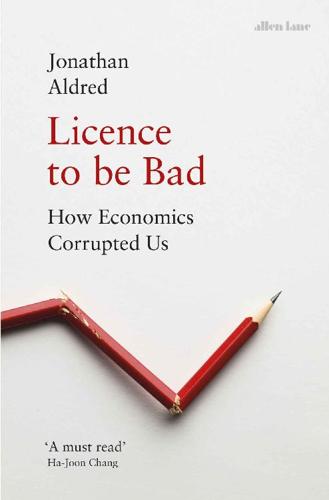
Licence to be Bad
by
Jonathan Aldred
Published 5 Jun 2019
So yes, economics research focused on empirical evidence has recently become more common. Yet economists are still reluctant to ‘get their hands dirty’ with the messiness of real life. Most contemporary economists mainly use just one type of empirical evidence – large statistical datasets – which can be accessed without leaving your office. Nobel laureate Robert Shiller describes the problem as ‘an attitude in the profession that collecting data is for lesser people’.9 Before ‘physics envy’ led mainstream economics from the 1960s onwards to become dominated by mathematical modelling, economists had drawn on a broader mix of evidence including case studies and interviews – often involving going out and talking to people in the real economy.
…
Van Horn (2012), ‘Inland Empire: Economics’ Imperialism as an Imperative of Chicago Neoliberalism’, Journal of Economic Methodology, 19 (3), 259–82. 7 Fourcade, M., Ollion, E., and Algan, Y. (2015), ‘The Superiority of Economists’, Journal of Economic Perspectives, 29 (1), table 2. 8 Van Noorden, R. (2015), ‘Interdisciplinary Research by the Numbers’, Nature, 525 (7569): 306–30. 9 Sommer, Jeff, ‘Robert Shiller: A Skeptic and a Nobel Winner’, New York Times, 19 October 2013. 10 Backhouse, R., and Cherrier, B. (2017), ‘The Age of the Applied Economist’, History of Political Economy, 49 (supplement), 1–33. 11 Backhouse, R., and Cherrier, B. (2017), ‘“It’s Computers, Stupid!” The Spread of Computers and the Changing Roles of Theoretical and Applied Economics’, History of Political Economy, 49 (supplement), 103–26. 12 http://web.mit.edu/krugman/www/howiwork.html. 13 At the ASSA meetings, Chicago, January 2017.

Boom: Bubbles and the End of Stagnation
by
Byrne Hobart
and
Tobias Huber
Published 29 Oct 2024
The subsequent high-profile problems at companies like Solyndra further intensified investor skepticism of clean energy, at least in the US. While cleantech represented a new and massive market—an opportunity Doerr characterized as “bigger than the internet”—its rise cannot be fully understood without an appeal to its narrative of salvation. As the behavioral economist Robert Shiller notes, an emotionally resonant narrative can act as a contagion. 284 Doerr, for example, began his talk by describing a conversation he had with his daughter about how climate change will impact her generation. Moved to tears as he recounted this exchange, Doerr said it made him view addressing climate change as a “moral imperative.”
…
Huber, and Didier Sornette, “‘Salvation and Profit’: Deconstructing the Clean-Tech Bubble,” Technology Analysis & Strategic Management (2022): 1–13. 283 Doerr, John, “Salvation (and Profit) in Greentech,” Ted Talk, 2007, https://www.ted.com/talks/john_doerr_sees_salvation_and_profit_in_greentech. 284 Robert Shiller, “Narrative Economics,” American Economic Review 107, no. 4 (2017), 967–1004. 285 Tesla, “Tesla Unveils Model 3,” YouTube video, uploaded April 1, 2016, https://www.youtube.com/watch?v=Q4VGQPk2Dl8. 286 Catherine Clifford, “Elon Musk: Tesla’s Work ‘Supersedes Political Parties, Race, Creed, Religion,’” CNBC, November 6, 2018, https://www.cnbc.com/2018/11/05/elon-musk-teslas-work-is-important-to-the-future-of-the-world.html.
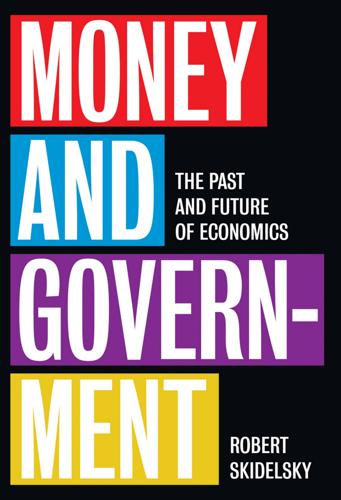
Money and Government: The Past and Future of Economics
by
Robert Skidelsky
Published 13 Nov 2018
The trouble, explained his Chancellor, Alistair Darling, was the ‘Taliban wing’ of the Treasury who thought Snowden was right.8 The global turning point can be dated from the meeting of the G7’s finance ministers at Iqaluit in Canada in February 2010, which, dominated by the Greek crisis, committed governments to slashing deficits.9 Orthodox economists argued that cutting public spending would boost output by reducing borrowing costs and increasing confidence. 224 t h e di s a bl e m e n t of f i s c a l p ol ic y In a pallid echo of Keynes’s ‘paradox of thrift’, the larger G20 acknowledged, in a declaration following its 2010 Toronto summit, that ‘synchronised financial adjustment [i.e. if all governments tried to reduce their deficits simultaneously] across several major economies could adversely impact the recovery’,10 but only President Obama stood out against the stampede towards what Germany’s Finance Minister Wolfgang Schäuble approvingly dubbed ‘expansionary fiscal consolidation’. Obama was supported by economists Paul Krugman, Joseph Stiglitz, Robert Shiller, Larry Summers, Nouriel Roubini and Brad DeLong. But ‘expansionary fiscal consolidation’ became the consensual view of Europe’s finance ministers.11 The majority of financial economists supinely followed the lead of the consolidators. Of the UK’s top economic journalists, Martin Wolf and Samuel Brittan of the Financial Times and Larry Elliott of the Guardian were lonely dissenters.
…
It presents a vulgarized picture of the discipline, the way, perhaps, it is understood by non-economists (including politicians and some badly trained officials), but remote from the mental universe of practising economists. They will also point to the progressive elements in the economists’ research programme. What is called ‘behavioural economics’ only really took off after the crisis, although in 1984 Robert Shiller, the doyen of behavioural economics, had already labelled the Efficient Market Hypothesis ‘one of the most remarkable errors in the history of economic thought’.53 Behavioural economics utilizes empirical psychology to explain why individual behaviour does not conform to the neo-classical model of rationality.
…
What follows is about the views of the economists ‘in power’. To a number of economists outside the mainstream, such as William Black, Stephen Keen, Randall Wray and James Galbraith, it was obvious that the financial system was on an unsustainable roll. Of those in the mainstream, Raghuram Rajan and Robert Shiller can claim credit for having foreseen a crisis, for various reasons. The general cause of the financial collapse had been previsioned by Hyman Minsky in his ‘financial instability hypothesis’: see Minsky (1992). 3. Quoted in Kynaston (2017), p. 358. Montagu Norman to Henry Clay. 4. The original is a bit more verbose than the familiar form given above.
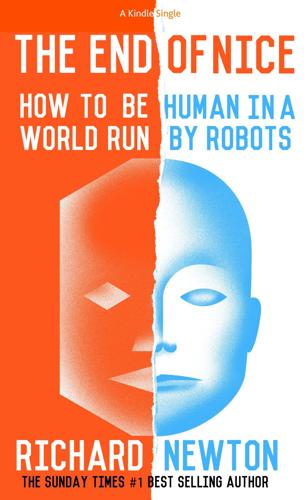
The End of Nice: How to Be Human in a World Run by Robots (Kindle Single)
by
Richard Newton
Published 11 Apr 2015
Society initially changes gradually, Jenga block by Jenga block, but when it tumbles, the collapse happens all at once. Preparing for this is easier to do while the edifice still appears sound. “It’s going to be much harder if we wait until 70% of the population is out of a job,” said the Nobel Prize-winning economist Robert Shiller, during a McKinsey talk in 2014. The new normal This isn’t about temporary acceleration. This is not a phase through which you can simply hold your breath and cling on tight while you wait for stability to resume. That won’t happen because this is permanent. Permanent acceleration is our new normal.
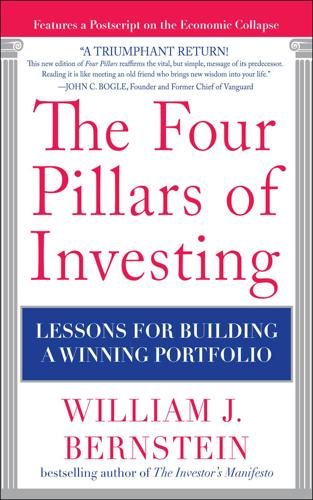
The Four Pillars of Investing: Lessons for Building a Winning Portfolio
by
William J. Bernstein
Published 26 Apr 2002
In the second place, there is voluminous evidence that excess corporate cash from “retained earnings” (that is, earnings not paid out to the shareholders, but instead reinvested in the company) tends to be wasted. And finally, it just isn’t happening. In Figure 2-4, I’ve plotted the dividends and earnings of the stock market since 1900 (courtesy of Robert Shiller at Yale). Figure 2-4 is another one of those confusing “semilog” graphs. Their major advantage is that they allow you to estimate the percent rate of increase of earnings and dividends across a wide range of values. This is not true of standard “arithmetic” plots. With a semilog graph, a constant growth rate produces a plot that moves up at a fairly constant angle, called the slope.
…
Clearly the rapidly accelerating trend of earnings and dividend growth frequently cited by today’s New Era enthusiasts is nowhere to be seen. This analysis also demolishes another one of the supposed props of current stock valuations: stock buybacks, which should also increase per-share stock dividends. This is what is actually plotted in Figure 2-4. Figure 2-4. Nominal earnings and dividends, S&P 500. (Source: Robert Shiller, Yale University). • Bogle’s speculative return—the growth of the dividend multiple—could continue to provide future stock price increases with further growth of the dividend multiple. Why, you might ask, can’t the dividend multiple grow at 3% per year from here, yielding 3% of extra return?
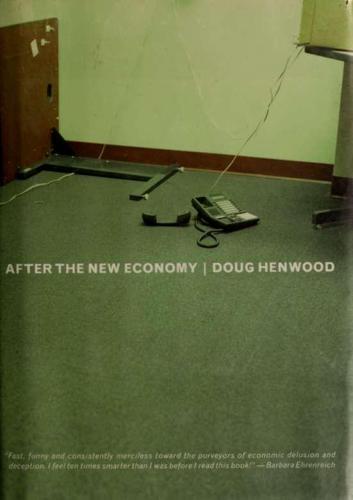
After the New Economy: The Binge . . . And the Hangover That Won't Go Away
by
Doug Henwood
Published 9 May 2005
If markets are affected by crowd psychology, then prices could be efficiently reflecting delusions. Certainly you wouldn't need a lot of heavy math to prove this to someone who's lived through the past few years. Cracks began appearing in the EM consensus in the early 1980s. In a classic 1981 paper, Robert Shiller—later more famous as the author of Irrational Exuberance —showed that stock prices were far more volatile than were dividends, typically exaggerating the up-and-down moves through the economic cycle; if the market were rationally valuing shares, prices and underlying dividends should move more or less in tandem.
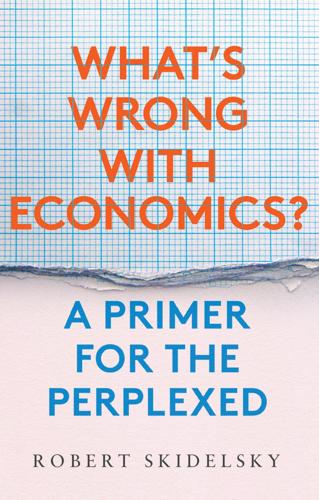
What's Wrong With Economics: A Primer for the Perplexed
by
Robert Skidelsky
Published 3 Mar 2020
These examples upend the central verity of modern economics, that people always have rational expectations. They often make choices which they ought to know will leave them worse off. Advertisers were exploiting this propensity long before economists started to notice it. In their book, Phishing for Phools (2015), Nobel Laureates George Akerlof (b.1940) and Robert Shiller (b.1946) show, with many examples both amusing and appalling, that misperception and deception are rampant in market economies. ‘Phishing’ is a ‘fraud on the internet in order to glean personal information from individuals’ to get them to do things in the interest of the ‘phisherman’ rather than the ‘phools’.

MegaThreats: Ten Dangerous Trends That Imperil Our Future, and How to Survive Them
by
Nouriel Roubini
Published 17 Oct 2022
It was beyond time to remove the punchbowl by tightening access to credit, yet the Fed resisted doing so. By now, any stock in a company with any claim to a digital future was red-hot. Do you remember Pets.com and Webvan, or Worldcom and Global Crossing? With so many companies skyrocketing in paper value, the phrase “irrational exuberance” was coined by economist Robert Shiller. The dot-com craze popped in 2000, erasing three-fourths of the market value of technology stocks listed on the Nasdaq. By 2002, a time frame that included the deadly attack on the World Trade Center, the Dow Jones Industrial Average tumbled by 43 percent. The dot-com bust led to the demise of many firms—tech and otherwise—that had loaded themselves with debt.
…
Many academic colleagues—some with invaluable policy and/or markets experience—have been a source of great food for thought and important ideas: Ken Rogoff, Barry Eichengreen, Dani Rodrik, Maury Obstfeld, Jeff Frankel, Bill Nordhaus, Larry Kotlikoff, Jeff Sachs, Michael Pettis, Alberto Alesina, Richard Portes, Helen Rey, Paul Krugman, Carmen Reinhart, Nassim Taleb, Raghu Rajan, Joe Stiglitz, Niall Ferguson, Robert Shiller, Kishore Mahbubani, Willem Buiter, Giancarlo Corsetti, Brad DeLong, and Steven Mihm (my co-author of Crisis Economics). There are many current or former policy makers—some with a distinguished academic or markets background—whom I have interacted with over the decades. While they may not share some of my views I learned a lot from all of them: Larry Summers, Janet Yellen, Tim Geithner, Ben Bernanke, Christine Lagarde, Mario Draghi, Jens Weidman, Lael Brainard, Richard Clarida, Randy Quarles, Jean-Claude Trichet, Mark Carney, Francois Villeroy de Galhau, Kevin Rudd, Jason Furman, Jacob Frenkel, Horuhiko Kuroda, Stanley Fischer, Gita Gopinath, David Malpass, Mario Monti, Enrico Letta, Paolo Pesenti, Adam Posen, Ted Truman, David Lipton, Anna Gelpern, Dan Tarullo, John Lipsky, Bill White, Olivier Blanchard, Federico Sturzenegger, Andrés Velasco, Felipe Larraín, Hans-Helmut Kotz, Dina Powell, Vittorio Grilli, Fabio Panetta, Ignazio Visco, Catherine Mann, Laurence Boone, Luis de Guindos, Philip Lane, Hyun Shin, Claudio Borio, Andy Haldane, Thomas Jordan, Stefan Ingves, Ilan Goldfajn, Alejandro Werner.
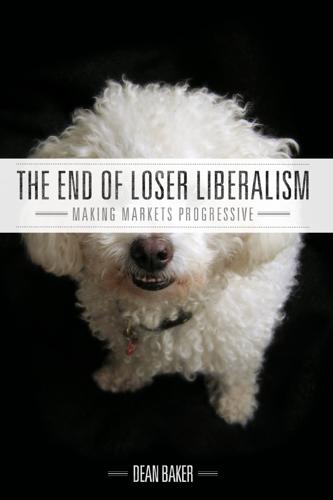
The End of Loser Liberalism: Making Markets Progressive
by
Dean Baker
Published 1 Jan 2011
This explains the fact that the statistical discrepancy shifted from being positive through most of the postwar period to being a large negative at the peaks of the stock and housing bubbles. [28] The evidence is laid out in Baker (2002b). [29] The existence of a 100-year-long trend was uncovered in research by Robert Shiller (2006), which was not yet available in 2002. However, it was possible to use publicly available data sources to determine that nationwide home prices had just tracked inflation since 1953 (see Baker 2002b). [30] Greenspan (2002). [31] There was the possibility that the gap between home sale prices and rent was driven by the extraordinarily low mortgage rates available at the time.
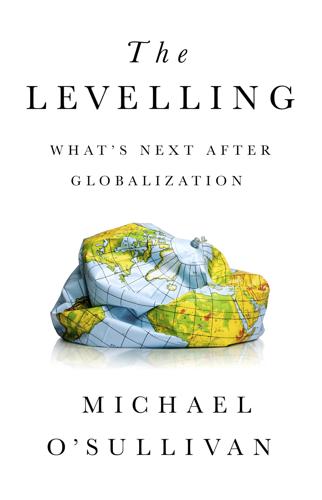
The Levelling: What’s Next After Globalization
by
Michael O’sullivan
Published 28 May 2019
Even the Wall Street Journal editorial team has warned that the Trump trade team is like Senator Reed Smoot and Representative Willis Hawley, promotors of the disastrous 1930 Smoot-Hawley Tariff Act that aided and abetted the onset of the Great Depression with the introduction of tariffs of up to 60 percent on twenty thousand types of goods imported into the United States.11 The net effect of the act was to squash any hope of an economic recovery in the aftermath of the Great Depression and to cut world trade by 33 percent. In addition, readers might tremble to know that Hoover took office with US equity valuations at very high levels. Robert Shiller’s excellent database highlights that the US long-term market’s price to earnings ratio was at 32 in January 1929 (the highest it reached was 44 in December 1999) and that it reads 28 today, which is 69 percent higher than the historical average of 16 and thus puts the market in expensive territory from a valuation standpoint.12 Eight months into Hoover’s term the Wall Street Crash occurred, and the United States lurched first into recession and then into the Great Depression.
…
An NBER working paper by Grace Xing Hu, Jun Pan, and Jang Wang gives a very good overview of the development of China’s capital market development. Hu, Pan, and Wang, “The Chinese Capital Market.” 11. “Trump’s Trade Folly,” editorial, Wall Street Journal, March 1, 2018. 12. Analysis drawn from data in Robert Shiller’s historic stock market data found at http://www.econ.yale.edu/~shiller/data.htm. 13. See, for example, Bernanke, “The Macroeconomics of the Great Depression.” 14. One of Ben Bernanke’s fields of expertise is the Great Depression; see, for example, his Essays on the Great Depression. 15. Buckles, Hungermann, and Lugauer, “Is Fertility a Leading Economic Indicator?.”
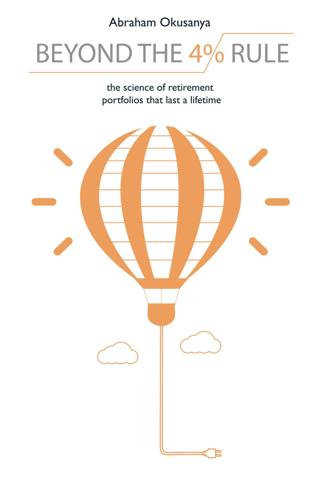
Beyond the 4% Rule: The Science of Retirement Portfolios That Last a Lifetime
by
Abraham Okusanya
Published 5 Mar 2018
Because equity past performance tells us that they’ll most likely outperform cash over the long term. How do we know that equities tend to outperform bonds over the long term? Past performance tells us so. And of course, basic reasoning backs this up. Renowned academics, from Harry Markowitz, Paul Samuelson and William Sharpe to Robert Shiller and Gene Fama, have greatly improved our understanding of how the capital markets work. In the process, they’ve won Nobel Prizes! Much of their work is based on the exploration of asset classes using extensive historical performance data. If it’s good enough for Fama or Sharpe, it’s good enough for me.
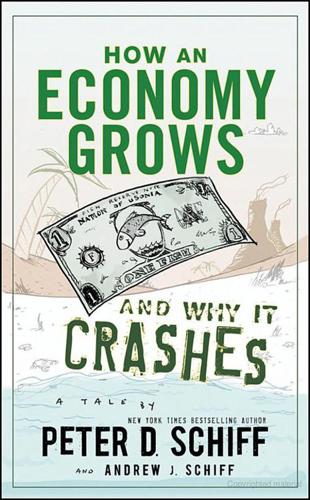
How an Economy Grows and Why It Crashes
by
Peter D. Schiff
and
Andrew J. Schiff
Published 2 May 2010
The process turned houses into tax-free ATM machines. People used the money to renovate their homes, take vacations, pay for college, buy cars and electronics, and just generally live better than they would have if their homes had not appreciated in value. But the wealth was simply a mirage. In his book Irrational Exuberance economist Robert Shiller determined that in the 100 years between 1900 and 2000, home prices in the United States increased by an average of 3.4 percent per year (which is just slightly higher than the average rate of inflation). There were good reasons for this. Prices were firmly tied to people’s ability to pay, which is a function of income and credit availability.

Restarting the Future: How to Fix the Intangible Economy
by
Jonathan Haskel
and
Stian Westlake
Published 4 Apr 2022
Fifth, there is widespread sentiment that much of what goes on in our economy is inauthentic and unreliable. The Golden Age and the Great Divide: Two Stories about the Great Economic Disappointment Faced with this unsettling combination of economic events, commentators and academics have come up with a variety of explanations. In a recent book, Nobel Laureate Robert Shiller makes a powerful case for the importance of narratives in economics.21 Ed Leamer has written similarly, as have Yuval Noah Harari and John Kay and Mervyn King.22 Humans cleave to narratives, Shiller argues, to understand and describe how the economy works. These narratives tend to be archetypal; there are a few recurrent stories to which we are naturally drawn, and which we seek to recognise, just as our eyes recognise a man’s face in the shadows and craters of the moon.
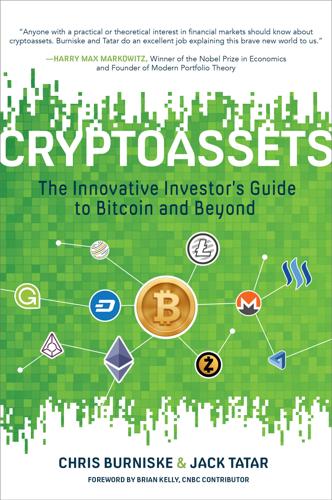
Cryptoassets: The Innovative Investor's Guide to Bitcoin and Beyond: The Innovative Investor's Guide to Bitcoin and Beyond
by
Chris Burniske
and
Jack Tatar
Published 19 Oct 2017
On the first day of trading, the coin momentarily achieved a price of 3,300 bitcoin, or more than $2 million dollars per zcash, on Poloniex.24 Within two days it had crashed below 1 bitcoin per zcash and continued to fall, closing out 2016 at a price of .05 bitcoin per zcash, or roughly $48.25 While zcash has since stabilized and continues to hold great promise as a cryptoasset, its rocky start was caused by mass speculation. Words of Warning for the Innovative Investor Tempted by Bubbles Robert Shiller, author, professor, and Nobel Prize winner, defined a bubble as “a social epidemic that involves extravagant expectations for the future.”26 We’ve talked much about the expectations for the future of cryptoassets. However, we also believe innovative investors must be grounded in common sense in order to identify proper investments from improper ones, and they need to recognize when buying opportunities exist and when the madness of the crowd has taken over.
…
Recall that a coinbase transaction is the transaction that pays the miner with newly minted units of a cryptoasset in exchange for the miner having appended a new block to the blockchain. 23. https://cryptohustle.com/zcash-launch-breaks-records. 24. http://www.coindesk.com/bitcoin-breaks-700-zcash-steals-show/. 25. https://www.cryptocompare.com/coins/zec/charts/BTC?p=ALL. 26. http://www.zerohedge.com/news/2015-05-29/robert-shiller-unlike-1929-time-everything-stocks-bonds-and-housing-overvalued. 27. https://hbr.org/2014/01/what-alan-greenspan-has-learned-since-2008. 28. Edward Chancellor, Devil Take the Hindmost. 29. http://query.nytimes.com/gst/abstract.html?res=9806E6DF1639E03ABC4E52DFB6678382639EDE&legacy=true. 30. http://time.com/3207128/stock-market-high-1929/. 31.
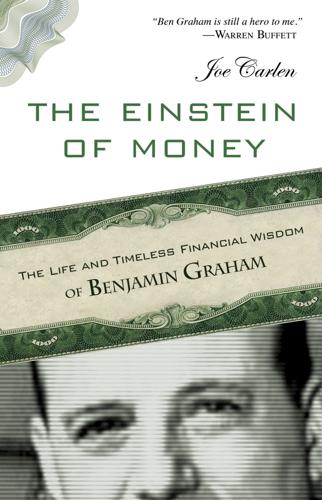
The Einstein of Money: The Life and Timeless Financial Wisdom of Benjamin Graham
by
Joe Carlen
Published 14 Apr 2012
Buffett, “Superinvestors of Graham and Doddsville.” 18. Charles T. Munger, Poor Charlie's Almanack: The Wit and Wisdom of Charles T. Munger, expanded 3rd ed., ed. Peter D. Kaufman (Florence, KY: Wadsworth, 2005), p. 63. 19. Buffett, “Superinvestors of Graham and Doddsville.” 20. Ibid. 21. Robert Shiller (Yale University Economics Department) and Yahoo! Finance, “CAGR of the Stock Market (Annualized Returns),” MoneyChimp, http://www.moneychimp.com/features/market_cagr.htm (accessed November 14, 2011). 22. Buffett, “Superinvestors of Graham and Doddsville.” 23. Ibid. 24. Roger Lowenstein, Buffett: The Making of an American Capitalist (New York: Random House, 1995), p. 135. 25.
…
“Notes to Financial Statements: Note A—Liquidation-Dissolution- Liquidating Distributions,” Graham-Newman Corporation, January 31, 1958. 2. Letter, Graham-Newman Corporation, 1946. 3. Irving Kahn and Robert Milne, Benjamin Graham: The Father of Financial Analysis (Charlottesville, VA: Financial Analysts Research Foundation, 1977). 4. Robert Shiller (Yale University Economics Department) and Yahoo! Finance, “CAGR of the Stock Market (Annualized Returns),” MoneyChimp, http://www.moneychimp.com/features/market_cagr.htm (accessed November 14, 2011). 5. Ibid. 6. “Stockholder's Letter,” Graham-Newman Corporation, February 25, 1949, p. 6. 7.
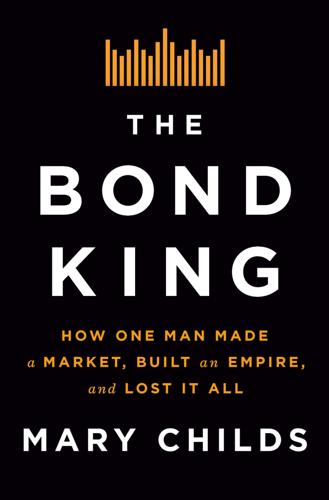
The Bond King: How One Man Made a Market, Built an Empire, and Lost It All
by
Mary Childs
Published 15 Mar 2022
Central bankers, finance ministers, professors, and the most important market participants checked into Jackson Lake Lodge in late August 2007, passing the lobby’s huge picture windows where the Teton Range lined up at the horizon. Every evening, amid the “howls of coyotes and bugling of elk,” as Yale economics professor Robert Shiller recalled, regulators and economists tried to gauge just how bad the current housing slowdown was. It looked like a classic bank run and yet was worse, scarier. Was it just a correction? A bubble popping? Whose fault was it? Should the Fed do something? What? Part of the problem: the Fed could touch really only the banking system.
…
“I remember the day”: Paul McCulley, “After the Crisis: Planning a New Financial Structure Learning from the Bank of Dad,” Pimco.com, May 10, 2010. “the effect of U.S. subprime loans”: John Ward Anderson, “E.U. Central Bank Injects More Cash as Markets Tumble,” The Washington Post Foreign Service, August 11, 2007. “howls of coyotes”: Robert Shiller, “Bubble Trouble,” Project Syndicate, September 17, 2007. “the whole alphabet soup”: Brooke Masters and Jeremy Grant, “Finance: Shadow Boxes,” Financial Times, February 2, 2011. “smoked”: Christine Benz, “Our 2007 Fund Managers of the Year,” Morningstar, January 3, 2008. “When Humpty Dumpty cracked”: Julie Segal, “War Stories over Board Games: How Bill Gross and Warren Buffett (Almost) Saved America,” Institutional Investor, April 2017.
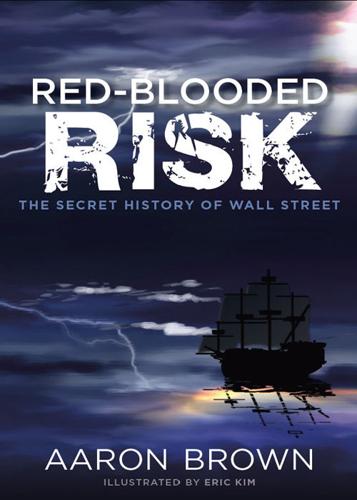
Red-Blooded Risk: The Secret History of Wall Street
by
Aaron Brown
and
Eric Kim
Published 10 Oct 2011
Each of these cycles has its own form of money and its own form of risk management. Even in the paid economy, more and more goods are distributed on the basis of status, such as club memberships for airlines, hotels, discount shopping stores, and so on. Status becomes a kind of money. My final suggestion comes from Robert Shiller, who envisions derivatives for all major life decisions. Going to medical school next year? Why not sell half the median income of a cohort of medical school entrants similar to you and reduce your exposure to future changes in doctors’ wages? You couldn’t sell half of your personal income, because once you did, you might work less.
…
The view of quantitative finance described in Red-Blooded Risk has a lot of overlap with two pathbreaking but eccentric works: The Handbook of Portfolio Mathematics: Formulas for Optimal Allocation & Leverage by Ralph Vince and Finding Alpha: The Search for Alpha When Risk and Return Break Down by Eric Falkenstein. A more famous pathbreaking and eccentric work is Benoit Mandelbrot’s The (Mis)behavior of Markets. Two of the best books on the future of finance are The New Financial Order: Risk in the 21st Century by Robert J. Shiller and Financing the Future: Market-Based Innovations for Growth by Franklin Allen and Glenn Yago. Both cover quite a bit of history to ground their predictions in something solid. If you like to study your quantitative finance through people, Espen Haug’s Derivatives Models on Models is an excellent choice.
…
French gathered some of the world’s top financial economists in Squam Lake, New Hampshire, to discuss the 2007–2009 financial crisis. Martin N. Baily, John Y. Campbell, John H. Cochrane, Douglas W. Diamond, Darrell Duffie, Anil K. Kashyap, Frederic S. Mishkin, Raghuram G. Rajan, David S. Scharfstein, Robert J. Shiller, Hyun Song Shin, Matthew J. Slaughter, Jeremy C. Stein, and Rene M. Stulz collaborated to write The Squam Lake Report: Fixing the Financial System. The result has the strengths and weaknesses of a consensus report, but it remains one of the best places to start understanding recent financial events.
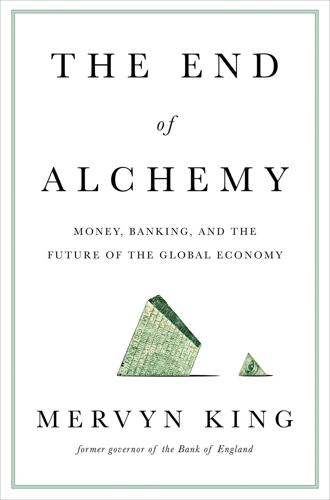
The End of Alchemy: Money, Banking and the Future of the Global Economy
by
Mervyn King
Published 3 Mar 2016
Places that boast of deep and liquid markets, the financial equivalent of an infinity pool, should be aware that their depth is variable, with a long shallow end that is sometimes drained. In the 1980s, economists debated with some passion whether the stock market was ‘rational’ or ‘irrational’. Three participants in the debate were subsequently awarded Nobel Prizes in Economic Science.43 One of them, Robert Shiller, argued that it was impossible to explain the volatility of stock prices by reference to the volatility of the dividend stream that is the return to stocks. Others argued that expectations of large surprises in the distant future, not captured in the data for dividends in any observable sample, justifies the volatility apparent in stock markets.
…
Since such a large proportion of the existing stock of financial instruments uses LIBOR as the reference rate, a switch to an alternative would raise yet another prisoner’s dilemma: no one firm on its own could change the benchmark for derivative contracts. A much-needed change will take coordinated action among market participants, prodded by regulators and central banks. 43 The three were Eugene Fama, Robert Merton and Robert Shiller. 44 Schumpeter (1942). 45 Keynes (1936), p. 156. 46 See Tuckett (2012), who argues, ‘given that the prices of financial assets cannot be set by fundamentals – which are unknowable – they are set by stories about fundamentals – specifically the stories which market consensus at any one moment judges true.
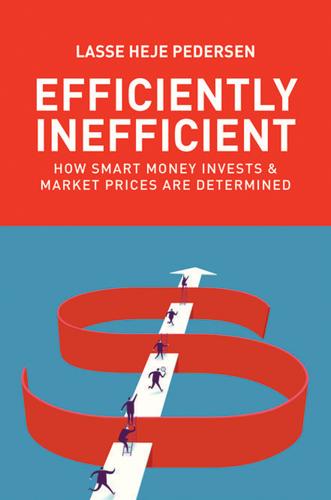
Efficiently Inefficient: How Smart Money Invests and Market Prices Are Determined
by
Lasse Heje Pedersen
Published 12 Apr 2015
EFFICIENTLY INEFFICIENT MARKETS To search for trading strategies that consistently make money over time, we need to understand the markets where securities are traded. The fundamental question concerning financial markets is whether they are efficient, a question that remains hotly debated. For instance, the Nobel Prize in economics in 2013 was awarded jointly to Eugene Fama, the father and defender of efficient markets, Robert Shiller, the father of behavioral economics, and Lars Hansen, who developed tests of market efficiency.2 As seen in Overview Table I, an efficient market, as defined by Fama, is one where market prices reflect all relevant information. In other words, the market price always equals the fundamental value and, as soon as news comes out, prices immediately react to fully reflect the new information.
…
For instance, the lowest observed dividend yield of 1.1% happened in 2000 during the height of the Internet bubble. Based on the regression estimates, this translates into an equity premium of . The highest observed dividend yield of 13.8% happened during the stock market trough of 1932, implying an equity premium of 41%. Figure 10.1. Dividend yield in the United States, 1871–2013. Source: Robert Shiller’s data, http://www.econ.yale.edu/~shiller/data.htm. How could you trade on the insights that come out of this regression? Let us consider a simple backtest. Table 10.1 shows that when the dividend yield has been high, the annualized market return in the following month has been high on average, 11.2%.

People, Power, and Profits: Progressive Capitalism for an Age of Discontent
by
Joseph E. Stiglitz
Published 22 Apr 2019
And this lowered private investment bodes poorly for future growth.50 There is a further effect that has already been noted: innovation that should be directed at creating more efficient ways of producing better products is instead directed at better ways of creating and maintaining market power and exploiting consumers. While our financial firms have excelled in the latter arena, they are not alone, as Nobel Prize winners George Akerlof and Robert Shiller demonstrate forcefully in their 2015 book Phishing for Phools: The Economics of Manipulation and Deception.51 We’ve described, for instance, how our cigarette, pharmaceutical, and food companies have profited from producing products that are addictive, and not only not needed, but are also actually harmful.
…
Big Data is increasing these asymmetries, and thereby potentially making resource allocations less efficient. 19.Jennifer Valentino-DeVries, Jeremy Singer-Vine, and Ashkan Soltani, “Websites Vary Prices, Deals Based on Users’ Information,” Wall Street Journal, Dec. 24, 2012. 20.To use the colorful language of Nobel Prize winners George Akerlof and Robert Shiller, to “phish for phools.” See Akerlof and Shiller, Phishing for Phools. 21.See Tüfekçi’s TED talk, “We’re Building a Dystopia Just to Make People Click on Ads,” Oct. 27, 2017. 22.Others joined in the suit against Myriad, including the University of Pennsylvania and researchers at Columbia, NYU, Emory, and Yale.

The Social Animal: The Hidden Sources of Love, Character, and Achievement
by
David Brooks
Published 8 Mar 2011
Denis Diderot. 21 This mode, as Guy Claxton Guy Claxton, The Wayward Mind: An Intimate History of the Unconscious (New York: Little, Brown Book Group, 2006). 22 Lionel Trilling diagnosed Lionel Trilling, The Liberal Imagination: Essays on Literature and Society (New York: New York Review of Books, 2008), ix–xx. 23 “deals with introspection” Robert Skidelsky, Keynes: The Return of the Master (New York: PublicAffairs, 2009), 81. 24 Paul Samuelson applied Clive Cookson, Gillian Tett, and Chris Cook, “Organic Mechanics,” Financial Times, November 26, 2009, http://www.ft.com/cms/s/0/d0e6abde-dacb-11de-933d-00144feabdc0.html. 25 George A. Akerlof and Robert Shiller George A. Akerlof and Robert J. Shiller, Animal Spirits: How Human Psychology Drives the Economy, and Why It Matters (Princeton, NJ: Princeton University Press, 2010), 1. 26 Jim Collins argues Jim Collins, “How the Mighty Fall: A Primer on the Warning Signs,” Businessweek, May 14, 2009, http://www.businessweek.com/magazine/content/09_21/b4132026786379.htm.
…
On the finance side, Emanuel Derman was a physicist who became a financier and played a central role in developing the models for derivatives. While valuable tools for understanding economic behavior, mathematical models were also like lenses that filtered out certain aspects of human nature. They depended on the notion that people are basically regular and predictable. They assume, as George A. Akerlof and Robert Shiller have written, “that variations in individual feelings, impressions and passions do not matter in the aggregate and that economic events are driven by inscrutable technical factors or erratic government action.” Within a very short time economists were emphasizing monetary motivations to the exclusion of others.
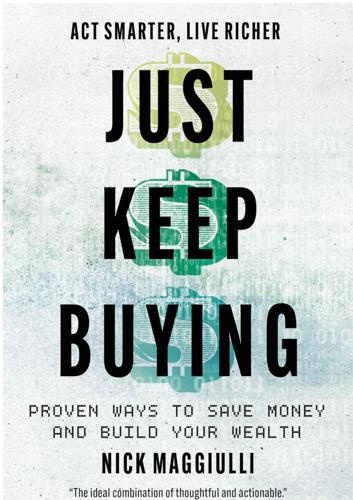
Just Keep Buying: Proven Ways to Save Money and Build Your Wealth
by
Nick Maggiulli
Published 15 May 2022
No matter how you look at it, renters face long-term risks that many homeowners don’t face. However, one risk that renters are unlikely to face is whether they will get a good return on their investment. Housing as an Investment When it comes to housing as an investment, unfortunately, the data isn’t that promising. Robert Shiller, the Nobel Prize-winning economist, calculated the inflation-adjusted return on U.S. housing was “only 0.6% a year” from 1915–2015.⁴⁴ More importantly, most of that return came after the year 2000. As the following chart illustrates, from the late 1800s to the late 1900s, U.S. housing was basically flat after adjusting for inflation.
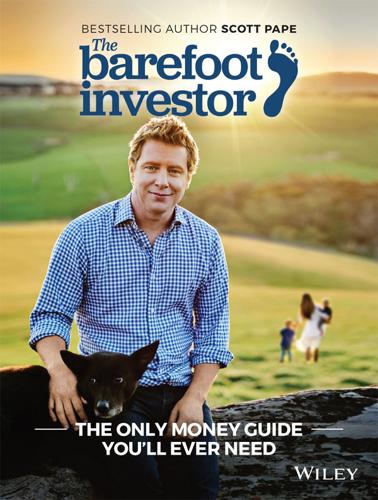
The Barefoot Investor: The Only Money Guide You'll Ever Need
by
Scott Pape
Published 22 Nov 2016
It's the slow rise in prices year on year, so that a loaf of bread may cost twice as much in 20 years' time as it does now. I'll have a really good look at inflation later in Step 5.) But wait, there's more: that 2.1 per cent doesn't include the money spent on paying interest to the bank, or renovations done on the home. Professor Robert Shiller, of Yale University, looked at long-term US property prices from 1890 to 2004 and found that inflation-adjusted house prices increased by a miniscule 0.4 per cent annually. And just to round out the Western world, Professor Piet Eichholtz of Maastricht University looked at property prices in Europe, specifically on one of Amsterdam's most significant canals, Herengracht.
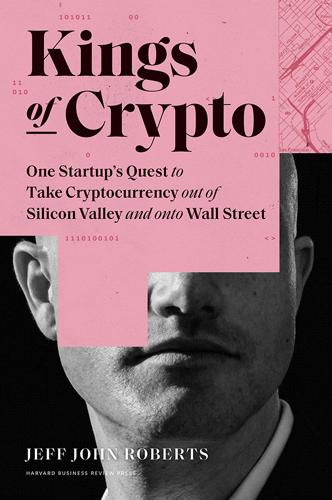
Kings of Crypto: One Startup's Quest to Take Cryptocurrency Out of Silicon Valley and Onto Wall Street
by
Jeff John Roberts
Published 15 Dec 2020
The solution to scaling the network is always 18 months always. It’s like Godot. He never arrives,” says Sirer, invoking Samuel Beckett’s famous existential play. Sirer isn’t the only one to point out how the crypto movement is driven as much by mythology as it is by technology. The Nobel Prize–winning economist Robert Shiller’s latest book, Narrative Economics, devotes its first chapter to bitcoin. The cryptocurrency, Shiller says, has no intrinsic value but has been propped up by a contagious belief that it does. Academics like Shiller who are deeply skeptical of crypto, however, belong to a shrinking minority. In recent years, there’s been an explosion of crypto and blockchain research on campuses in the United States and around the world.

The Shifts and the Shocks: What We've Learned--And Have Still to Learn--From the Financial Crisis
by
Martin Wolf
Published 24 Nov 2015
: What It Is, Why It Happened, How It Will Play Out, and What Will Follow’, April 2012, The Jerome Levy Forecasting Center, http://levyforecast.com/jlwp/wp-content/uploads/2012/04/The-Contained-Depression-April-2012.pdf. 16. Mark Easton, ‘The Great Myth of Urban Britain’, 28 June 2012, http://www.bbc.co.uk/news/uk-18623096. 17. The behavioural economist, Robert Shiller, understood the dynamics of the housing-market excess better than most, including most economists. See Robert Shiller, The Subprime Solution: How Today’s Financial Crisis Happened, and What to Do about It (Princeton: Princeton University Press, 2008). 18. Data come from the International Monetary Fund’s World Economic Outlook database, http://www.imf.org/external/pubs/ft/weo/2013/01/weodata/index.aspx. 19.
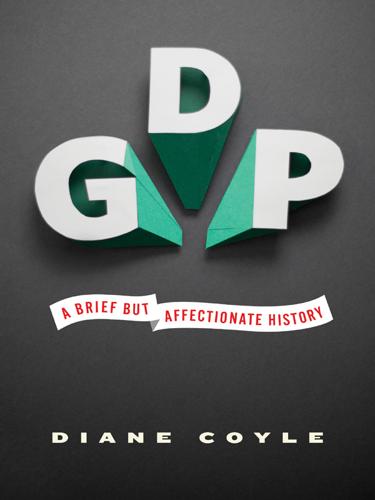
GDP: A Brief but Affectionate History
by
Diane Coyle
Published 23 Feb 2014
Mark Bils and Peter J. Klenow, “The Acceleration in Variety Growth,” American Economic Review 91, no. 2 (2001): 274–280. 15. Diane Coyle, The Weightless World (Oxford: Capstone, 1996). CHAPTER 5: OUR TIMES: THE GREAT CRASH 1. James Glassman and Kevin Hassett, Dow 36,000 (New York: Three Rivers Press, 1999). 2. Robert Shiller, Irrational Exuberance (Princeton, NJ: Princeton University Press, 2000). 3. See John Kay, Obliquity (London: Profile Books, 2010). 4. Kenneth Pomeranz, The Great Divergence: China, Europe, and the Making of the Modern World Economy (Princeton, NJ: Princeton University Press, 2000). 5. “Has China Already Passed the U.S. as the World’s Largest Economy?”
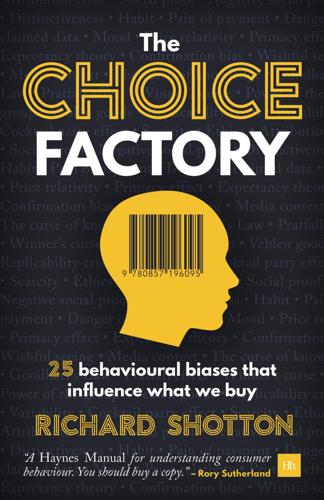
The Choice Factory: 25 Behavioural Biases That Influence What We Buy
by
Richard Shotton
Published 12 Feb 2018
Robust as well as relevant Behavioural science provides answers to many advertising conundrums. But more important than this relevance is the robustness of the findings. The field is based on the experiments of some of the most respected scientists of the day: Nobel Laureates like Daniel Kahneman, Herbert Simon and Robert Shiller. This evidence-based foundation contrasts with many marketing theories which are based on anecdote or tradition. Byron Sharp, Professor of Marketing Science at the University of South Australia, has been highly critical of marketers’ reliance on untested assumptions. He has compared the situation with medieval bloodletters who shunned experimentation: The study of marketing is so young that we would be arrogant to believe that we know it all, or even that we have got the basics right yet.
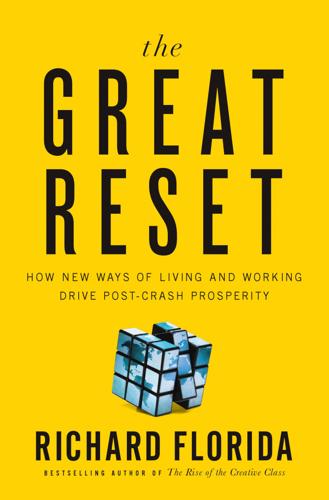
The Great Reset: How the Post-Crash Economy Will Change the Way We Live and Work
by
Richard Florida
Published 22 Apr 2010
And millions more are stuck with homes whose mortgages exceed their value. According to one study, 30 percent of people age forty-five to fifty-four and 18 percent of those between fifty-five and sixty-four were underwater in their homes in 2009.3 Except for some exceptional boom periods, housing has never been a good financial investment. Yale University’s Robert Shiller, the world’s leading student of bubbles, housing and otherwise, found that from “1890 to 1990, the rate of return on residential real estate was just about zero after inflation.”4 Even if a house isn’t underwater, chances are good that its owners are house poor in the traditional sense: too much of their income is being sucked up by house payments and house-related expenses.
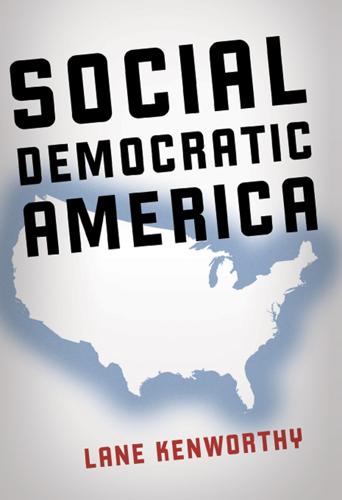
Social Democratic America
by
Lane Kenworthy
Published 3 Jan 2014
The Bureau of Labor Statistics projects that in 2020 approximately one third of US jobs will be in occupations with a median wage of $25,000 or less. See Bureau of Labor Statistics 2012a. 65. For similar sentiment, see Gans 2011. 66. Baumol 2012; Carlin 2012. 67. My suggestion is similar in spirit to the idea of “inequality insurance” proposed by Robert Shiller; see Shiller 2003, ch. 11. See also Reich 2010. 68. Average compensation tends to rise in sync with GDP per capita. See Pessoa and Van Reenen 2012. 69. Note that to be effective, a rising earnings subsidy will need to be coupled with a rising minimum wage. Otherwise, the subsidy may lead to reductions in low-end wage levels, which will offset the improvement in income achieved by the subsidy.
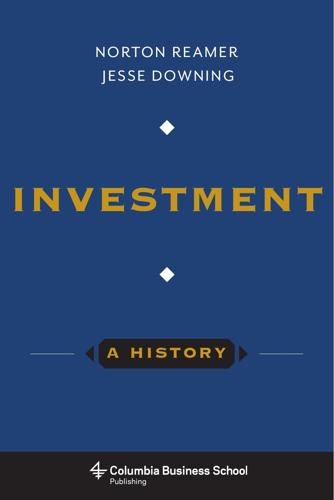
Investment: A History
by
Norton Reamer
and
Jesse Downing
Published 19 Feb 2016
Progress in Managing Cyclical Crises 215 To sustain some of this feverish activity, market makers propagated the myth that there was no history of any appreciable national price decline in housing. Declines were thought to be local or regional and usually of limited extent and duration. The view was promoted that any broad investment in housing, or the financing to support it, would basically be immune to substantial economic cycle exposure. Of course, the signs were there. Robert Shiller, the Yale economist, posited in advance of the cataclysm that the boom in real estate values might be driven by these psychological factors. After all, one could not explain the rises in housing prices by decomposition of increases in rents or construction costs.37 The practical manifestation of this was the boom in new construction, the growth in the phenomenon of flipping homes, and the increased tapping of built-up equity by homeowners.
…
William Seyfried, “Monetary Policy and Housing Bubbles: A Multinational Perspective,” Research in Business and Economics Journal 2 (March 2010), http://www.aabri.com/manuscripts/09351.pdf, 1–2. 36. Kathryn J. Byun, “The US Housing Bubble and Bust: Impacts on Employment,” Monthly Labor Review (Bureau of Labor Statistics, US Department of Labor), December 2010, http://www.bls.gov/opub /mlr/2010/12/art1full.pdf, 7. 37. Robert J. Shiller, “Understanding Recent Trends in House Prices and Home Ownership” (working paper 13553, National Bureau of Economic Research, Cambridge, MA, October 2007), http://www.nber.org /papers/w13553.pdf, 3–7. 38. Walter Bagehot, Lombard Street: A Description of the Money Market (London: King, 1873). 39.
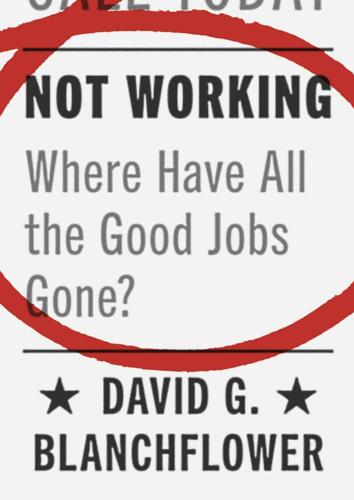
Not Working: Where Have All the Good Jobs Gone?
by
David G. Blanchflower
Published 12 Apr 2021
Famously, Ronald Coase in his Nobel Prize lecture argued that “inspiration is most likely to come through the stimulus provided by the patterns, puzzles, and anomalies revealed by the systematic gathering of data, particularly when the prime need is to break our existing habits of thought” (1992, 718). In a recent column celebrating the award of the 2017 Sveriges Riksbank Nobel Economics prize to Richard Thaler, Robert Shiller, who won the prize in 2013, noted that there had been antagonism within the profession to the research agenda of the behavioral economists, which includes him. Shiller notes that “many in economics and finance still believe that the best way to describe human behavior is to eschew psychology and instead model human behavior as mathematical optimization by separate and relentlessly selfish individuals, subject to budget constraints.”
…
Adam Ozimek, “The Value of Empirical Economics,” Economy.com, March 8, 2017, https://www.economy.com/dismal/analysis/datapoints/294247/The-Value-of-Empirical-Economics/. 38. Noah Smith, “Anti-empiricism Is Not Humility,” http://noahpinionblog.blogspot.com, March 10, 2017. 39. John Cochrane, “Russ Roberts on Economic Humility,” Grumpy Economist, March 3, 2017, http://johnhcochrane.blogspot.com/2017/03/russ-roberts-on-economic-humility.html. 40. Robert Shiller, “Richard Thaler Is a Controversial Nobel Prize Winner—but a Deserving One,” Guardian, October 11, 2017. Six percent of all Nobels have been awarded, says Shiller, to people who can be classified as behavioral economists including Richard Thaler (2017), Bob Shiller (2013), George Akerlof (2001), Robert Fogel (1993), Daniel Kahneman (2002), and Elinor Ostrom (2009). 41.
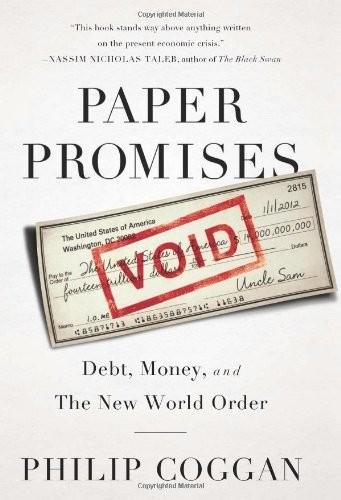
Paper Promises
by
Philip Coggan
Published 1 Dec 2011
The higher the ratio, the greater the optimism of investors; they are willing to pay a high price, relative to past earnings, in the belief that future earnings will grow rapidly. (Just as banks are willing to lend a higher proportion of a house’s value when they think asset prices are rising.) The graph below shows the data for the US market, compiled by Professor Robert Shiller at Yale University.15 For years, many people had regarded the 1929 boom as the height of investor folly. Back then, they were willing to pay a ratio of nearly thirty-five. In effect, had profits stayed unchanged, investors would have had to wait until 1964 to get their money back. But in 2000, even that valuation was surpassed.
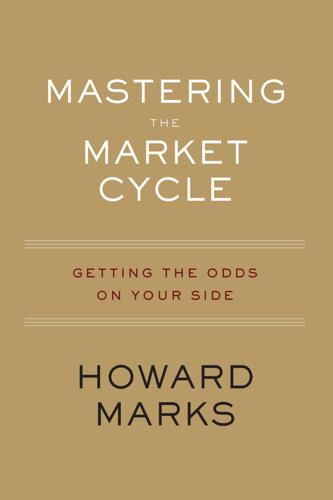
Mastering the Market Cycle: Getting the Odds on Your Side
by
Howard Marks
Published 30 Sep 2018
It had stood since then, virtually unaltered, and had changed hands six times, but its location in the Herengracht canal neighborhood had remained Amsterdam’s most desirable throughout. Thus the article provided insight not as to whether the price of the average home had risen, but how the price of a particular home had performed. In contrast to the long-term optimists on housing quoted earlier, Yale’s Robert Shiller said of the Fransz house and its neighbors, “Looking at the Herengracht data is very instructive, because you can see 50-year intervals of growth, then it turns around. That’s more realistic than the superstar-cities argument.” The author of the study, Piet Eichholtz, was described as being “skeptical of those who claim that property values can continue to increase ad infinitum.”
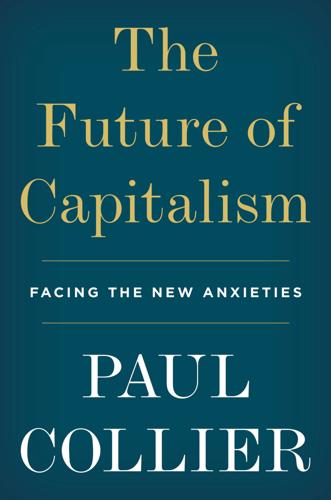
The Future of Capitalism: Facing the New Anxieties
by
Paul Collier
Published 4 Dec 2018
By joining them up into a causal chain, actions that are not in our immediate self-interest may then look rational, creating enlightened self-interest. At its best, this expands our knowledge. At its worst, it creates a rupture between reality and what we believe – narratives as ‘fake news’.15 True or false, stories are powerful. In their devastating analysis of the financial crisis, two Nobel Laureates, George Akerlof and Robert Shiller, conclude that ‘stories no longer merely explain the facts, they are the facts’.16 What is true of financial crises turns out also to apply to the outbreak of mass violence. New research finds that the best way of predicting such outbreaks is to monitor the narratives circulating in the media.17 The three types of narrative – belonging, obligation and causality – fit together to forge a web of reciprocal obligations.
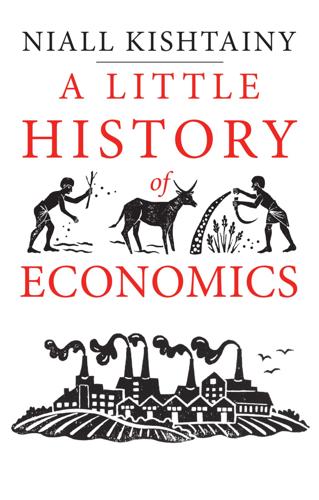
A Little History of Economics
by
Niall Kishtainy
Published 15 Jan 2017
Eventually shopkeepers, cabdrivers and teachers were buying shares in their lunch hours. In the late 1990s, the stock market leapt by 20, even 30 per cent a year. The problem was that the income of the economy hadn’t risen anything like as fast. A few economists warned that the trend couldn’t go on. One was Robert Shiller (b. 1946), who’d applied behavioural economics to financial markets. The market was being lifted up by overexcited investors and soon it would thud to the ground, he said. In March 2000 he was embarking on a tour to promote his new book Irrational Exuberance – just when, with perfect timing, the stock market was about to crash.
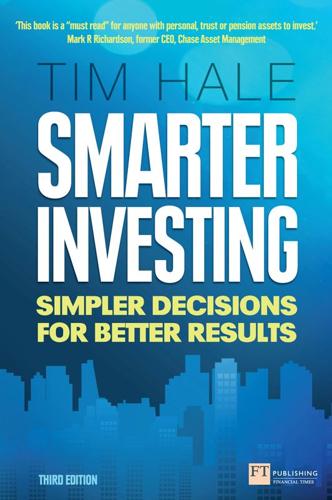
Smarter Investing
by
Tim Hale
Published 2 Sep 2014
Experiments have shown that two groups, presented with opposing series of events leading to the same stated outcome, will both believe that the outcome could have been predicted in advance, based on the information they hold. Interestingly, when these same scenarios are presented as educated guesses about future events, participants become very less certain about their own predictive abilities. Renowned behavioural economist, Robert Shiller (1997), undertook some research relating to the Japanese market crash in 1989. Prior to the event 14% of those asked thought that the market was overvalued, but post-event 32% of those asked said they thought the market was overvalued. Hindsight delusion, combined with overconfidence and susceptibility to seeing trends where none exist is a recipe for wealth destruction.
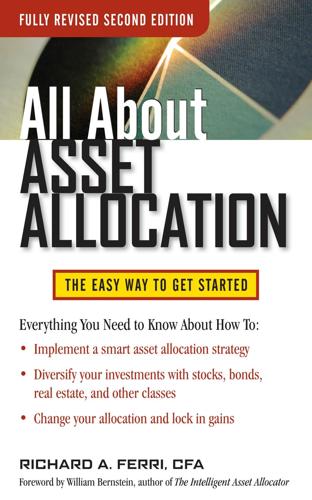
All About Asset Allocation, Second Edition
by
Richard Ferri
Published 11 Jul 2010
A common measure of stock value is the price/earnings ratio, more commonly referred to as the P/E ratio. Many investors track the market P/E ratio in an attempt to determine when stocks are cheap and when they are expensive. Figure 11-10 illustrates the P/E ratio from 1950 to 2009 using a 10-year earnings average from Professor Robert Shiller ’s database that is available to be public at www.econ.yale.edu/~shiller/data.htm. There have been several periods when the ratio was high, although none quite match the speculative premium on stocks that existed in the late 1990s. There are a couple of items that P/E ratio watchers should consider: 1.
…
A fledgling field of study in the early 1960s, behavioral finance has grown to be an important area of research at How Behavior Affects Asset Allocation Decisions 273 several influential institutions. Professors recognized as experts in the field include Daniel Kahneman (Princeton), Meir Statman (Santa Clara), Richard Thaler (University of Chicago), Robert J. Shiller (Yale), and Amos Tversky. Tversky is frequently cited as the forefather of the field. He died in 1996. The following list touches on a few observations made by behavioral finance researchers. Unfortunately, the list only scratches the surface. Much more information about this fascinating field is available on the Internet and in your local library: ● ● ● ● ● ● ● ● ● People tend to be more optimistic about stocks after the market goes up and more pessimistic after it goes down.

Tightrope: Americans Reaching for Hope
by
Nicholas D. Kristof
and
Sheryl Wudunn
Published 14 Jan 2020
In experiments with wage insurance, both the United States and Canada have found that it results in workers becoming more likely to accept jobs that they otherwise would have scorned. That’s better for those individuals and for the American economy as a whole. “Wage insurance may not be on your radar, but it should be,” argues Robert Shiller, the eminent Yale economist, who advocates it as a way to reduce inequality. He notes that wage insurance has bipartisan support and was introduced in a very limited way by both George W. Bush and Barack Obama. We should also experiment with programs to encourage people to move to areas where there are more jobs, or to subsidize employers for each new job they create in high-unemployment areas.
…
Various studies have calculated: Chuck Collins, Darrick Hamilton, Dedrick Asante-Muhammad et al., Ten Solutions to Bridge the Racial Wealth Divide (Washington, DC: Institute for Policy Studies, 2019). Congress pulled the plug on funding for an IDA program: These individual development accounts are extensively discussed in Robert E. Friedman, A Few Thousand Dollars (New York: The New Press, 2018). wage insurance has bipartisan support: Robert J. Shiller, “How Wage Insurance Could Ease Economic Inequality,” The New York Times, March 11, 2016. federal job guarantee: L. Randall Wray, Flavia Dantas, Scott Fullwiler et al., “Public Service Employment: A Path to Full Employment,” Levy Economic Institute of Bard College, April 2018. “As an economist, I am always asked”: Joseph E.
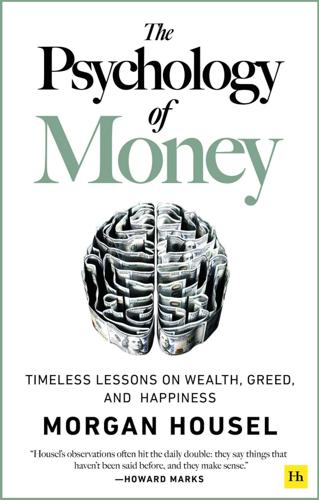
The Psychology of Money: Timeless Lessons on Wealth, Greed, and Happiness
by
Morgan Housel
Published 7 Sep 2020
For every Bill Gates there is a Kent Evans who was just as skilled and driven but ended up on the other side of life roulette. If you give luck and risk their proper respect, you realize that when judging people’s financial success—both your own and others’—it’s never as good or as bad as it seems. Years ago I asked economist Robert Shiller, who won the Nobel Prize in economics, “What do you want to know about investing that we can’t know?” “The exact role of luck in successful outcomes,” he answered. I love that response, because no one actually thinks luck doesn’t play a role in financial success. But since it’s hard to quantify luck and rude to suggest people’s success is owed to it, the default stance is often to implicitly ignore luck as a factor of success.
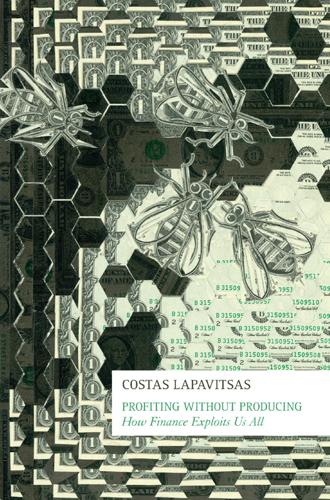
Profiting Without Producing: How Finance Exploits Us All
by
Costas Lapavitsas
Published 14 Aug 2013
Moore, Horizontalists and Verticalists: The Macroeconomics of Credit Money, Cambridge: Cambridge University Press, 1988. 20 For further analysis of this point, see Costas Lapavitsas, ‘The Banking School and the Monetary Thought of Karl Marx’, Cambridge Journal of Economics 18:5, 1994, pp. 447–61. 21 For a simple presentation see Costas Lapavitsas, ‘The Theory of Credit Money: A Structural Analysis’, Science and Society 55:3, 1991, pp. 291–322. 22 See, for instance, John Maynard Keynes, The General Theory of Employment, Interest and Money, London: Macmillan, 1973, p. 174. 23 For instance, Karl Marx, A Contribution to the Critique of Political Economy, Moscow: Progress, 1970, pp. 118–19. 24 This was one of the main claims made in John Fullarton, On the Regulation of Currencies, London: John Murray, 1845. 25 See, for instance, Marx, A Contribution to the Critique of Political Economy, p. 102; and Karl Marx, Capital, vol. 1, London: Penguin/NLR, 1976, p. 210. 26 By the middle of the 2000s mainstream economics had become aware of the extraordinary conditions in financial markets but there was no agreement on an appropriate policy response. Note that Karl Case and Robert Shiller realized that bubble conditions were in place already by the early 2000s, but expected the situation to stabilize (‘Is There a Bubble in the Housing Market?’, Brookings Papers on Economic Activity 2, 2003). At the BIS, however, William White argued that central bank should ‘lean against the wind’ by raising interest rates when bubbles threatened, even if price stability and growth targets were not compromised (‘Procyclicality in the Financial System’, BIS Working Paper No. 193, 2006; ‘Is Price Stability Enough?’
…
Carchedi, Guglielmo, ‘The EMU, Monetary Crisis, and the Single European Currency’, Capital and Class 19:63, 1997, pp. 85–112. Card, David, and Thomas Lemieux, ‘Can Falling Supply Explain the Rising Return to College for Younger Men? A Cohort-Based Analysis’, Quarterly Journal of Economics 116:2, 2001, pp. 705–46. Case, Karl, and Robert Shiller, ‘Is There a Bubble in the Housing Market?’, Brookings Papers on Economic Activity 2, 2003, pp. 299–362. Castells, Manuel, End of Millenium, 2nd ed., vol. 3 of The Information Age: Economy, Society and Culture, Oxford: Blackwell, 2000. Castells, Manuel, The Internet Galaxy, Oxford: Oxford University Press, 2001.
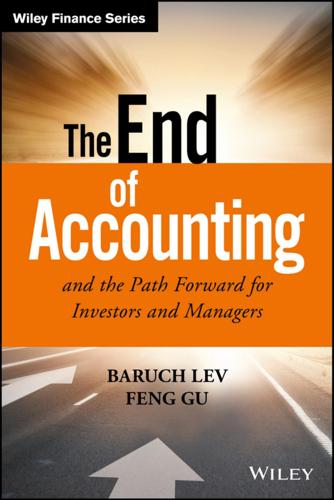
The End of Accounting and the Path Forward for Investors and Managers (Wiley Finance)
by
Feng Gu
Published 26 Jun 2016
The lesson: In evaluating corporate performance and predicting the course of business, investors should use more reliable gauges than earnings, like those proposed in Part III. This lesson is particularly important to individual investors who tend to rely on a few summary measures, primarily earnings and the price-to-earnings ratio, in their investment decisions. Investors’ Fault or Accounting’s? 59 NOTES 1. Robert Shiller, one of the 2013 Nobel winners in economics, was awarded this highest recognition mainly for his research on investors’ irrationality. See his book Irrational Exuberance (Princeton University Press, 2005). 2. The tech bubble burst in 2000, as NASDAQ lost 50 percent of its value, a slide that continued through 2002. 3.

Incognito: The Secret Lives of the Brain
by
David Eagleman
Published 29 May 2011
Subprime mortgage offers were perfectly optimized to take advantage of the I-want-it-now system: buy this beautiful house now with very low payments, impress your friends and parents, live more comfortably than you thought you could. At some point the interest rate on your adjustable-rate mortgage will go up, but that’s a long way away, hidden in the mists of the future. By plugging directly into these instant-gratification circuits, the lenders were able to almost tank the American economy. As the economist Robert Shiller noted in the wake of the subprime mortgage crisis, speculative bubbles are caused by “contagious optimism, seemingly impervious to facts, that often takes hold when prices are rising. Bubbles are primarily social phenomena; until we understand and address the psychology that fuels them, they’re going to keep forming.”19 When you begin to look for examples of I-want-it-now deals, you’ll see them everywhere.
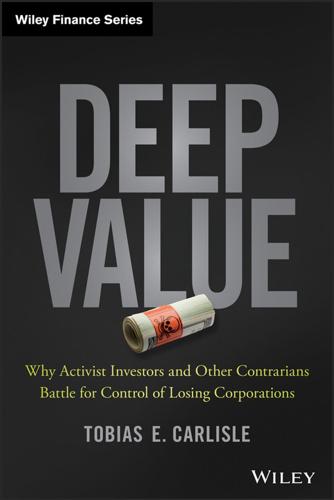
Deep Value
by
Tobias E. Carlisle
Published 19 Aug 2014
As he had many times before, Icahn again acknowledged the intellectual underpinnings of his Icahn Manifesto strategy as Benjamin Graham and David Dodd’s Security Analysis, and revealed that his brand of deep value activism is as old as value investing itself. Notes 1. United States Government Printing Office. Washington. 1955. Available at http:// www4.gsb.columbia.edu/filemgr?file_id=131668. 2. Carl Icahn and Robert Shiller. “Financial Markets (ECON 252) Guest Lecture.” Yale University, November 19, 2008. 214 DEEP VALUE 3. Alon P. Brav, Wei Jiang, Randall S. Thomas, and Frank Partnoy. “Hedge Fund Activism, Corporate Governance, and Firm Performance (May 2008).” Journal of Finance, Vol. 63, pp. 1729, 2008. Available at SSRN: http://ssrn.com/ abstract=948907. 4.

In FED We Trust: Ben Bernanke's War on the Great Panic
by
David Wessel
Published 3 Aug 2009
The Fed agreed to put up $180 billion, giving the TALF a total of $200 billion in loans at very sweet terms to offer hedge funds and other big investors to buy securitized consumer loans. The beauty of it was that the Treasury needed only $20 billion from its $700 billion congressionally authorized TARP to get $200 billion into the economy. “TALF shows us there are two sides to creative finance,” wrote Nobel Prize winner George Akerlof along with Robert Shiller, the Yale economist who had predicted the housing bust. “It may have gotten us into this crisis. But its genius may also get us out of it.” The Fed and the Treasury offered investors an additional carrot to borrow this money to buy auto or credit card loans packaged into securities. If the ultimate consumer didn’t pay back the loans, then the big-money investors wouldn’t have to pay back the Fed.
…
Bernanke, “The Crisis and the Policy Response,” Federal Reserve Board, January 13, 2009. http://www.federalreserve.gov/newsevents/speech/ bernanke20090113a.htm 254 “What justification is there” John B. Taylor, “The Need to Return to a Monetary Framework,” January 2009. http://www.stanford.edu/∼johntayl/NABE%20Business%20Economics%20Article%20-%20Taylor.pdf 255 “TALF shows us” George A. Akerlof and Robert J. Shiller, Animal Spirits (Princeton, N.J.: Princeton University Press, 2009), 92. 256 “Will we face challenges” Charles I. Plosser, “The Economic Outlook and Some Challenges Facing the Federal Reserve,” Federal Reserve Bank of Philadelphia, January 14, 2009. http://www.philadelphiafed.org/publications/ speeches/plosser/2009/01-14-09_university-of- delaware.cfm 257 “In a committee such as the FOMC” Richard W.
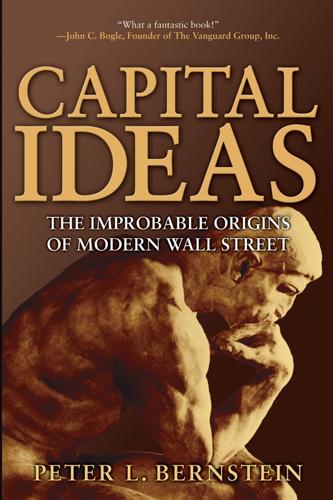
Capital Ideas: The Improbable Origins of Modern Wall Street
by
Peter L. Bernstein
Published 19 Jun 2005
This avalanche in the sheer number of orders coming into the system overwhelmed the whole communications network and explains the unanswered telephones in the brokerage offices and the darkened computer screens that intensified the chaos and fed investor panic. If you do not know what the last price was, you are incapable of making an informed decision; if you cannot reach your broker at all, you are in never-never land. A survey of investors conducted immediately after the crash by Robert Shiller of the Cowles Foundation at Yale reported that 20 percent of the respondents admitted to “difficulty concentrating, sweaty palms, tightness in the chest or rapid pulse.” More than half who had sold on October 19 said that they were “experiencing a contagion of fear.” Close to 40 percent who sold had stop-loss orders in place, orders to sell whenever a stock breaks below a specified price and a strategy that is just as “mechanical” as portfolio insurance.27 Shiller hypothesizes that all investors worry that somebody else knows something that other investors do not know.
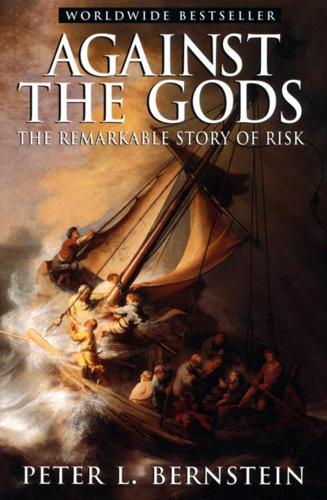
Against the Gods: The Remarkable Story of Risk
by
Peter L. Bernstein
Published 23 Aug 1996
The following people also made significant contributions to my work and warrant my deepest appreciation: Kenneth Arrow, Gilbert Bassett, William Baumol, Zalmon Bernstein, Doris Bullard, Paul Davidson, Donald Dewey, David Durand, Barbara Fotinatos, James Fraser, Greg Hayt, Roger Hertog, Victor Howe, Bertrand Jacquillat, Daniel Kahneman, Mary Kentouris, Mario Laserna, Dean LeBaron, Michelle Lee, Harry Markowitz, Morton Meyers, James Norris, Todd Petzel, Paul Samuelson, Robert Shiller, Charles Smithson, Robert Solow, Meir Statman, Marta Steele, Richard Thaler, James Tinsley, Frank Trainer, Amos Tversky,* and Marina von N. Whitman. Eight people generously undertook to read the manuscript in its entirety and to give me the benefit of their expert criticisms and suggestions.

Having and Being Had
by
Eula Biss
Published 15 Jan 2020
But I still don’t understand the inner workings of contemporary capitalism, the nuts and bolts of the markets, the push and pull of bubbles and recessions. Even economists, Dan says, don’t understand that. Three men won the Nobel Prize for economics in 2013, he tells me—two of them for theories that directly contradicted each other. They disagreed about bubbles, to begin with. Robert Shiller described the rapid rise of housing prices in 2005 as a bubble, and warned that prices would fall dramatically. Eugene Fama didn’t think the market would produce something as silly as a bubble. Even after the housing crash, Fama denied that the housing market had been a bubble and was skeptical that bubbles existed.

Money Changes Everything: How Finance Made Civilization Possible
by
William N. Goetzmann
Published 11 Apr 2016
I owe a great debt to Yuan Chen for her thoughtful editing of the sections of the book pertaining to China. Over the years, Ulla Kasten has helped me with access to the Yale Babylonian Collection. I also thank the many scholars who gave me advice and pointed me in the right direction: Ben Foster, Marc Van De Mieroop, Elisabeth Köll, Robert Shiller, Timothy Young, Catherine Labio, Jonathan Spence, Steven Pincus, and Naomi Lamoreaux. I thank William Fitzhugh and Harvey Weiss for including me in their pathbreaking archaeological expeditions early in my career. And I thank my friend William S. Reese for introducing me to many of the extraordinary documents in financial history that have become part of the narrative of this book.
…
For example, we would not understand the birth of finance in the ancient Near East without Professor Denise Schmandt-Besserat of the University of Texas, who discovered the origins of cuneiform writing—along with the origins of financial contracts. We owe a lot to the Shanghai financier and monetary historian Peng Xinwei 彭信威, who devoted his life to Chinese financial history before disappearing in the Cultural Revolution. We might never understand the first inflation-indexed security if not for economist Robert Shiller’s personal mission to help people insure themselves against everyday economic risks. A third perspective is empirical: the world of things and places. Technology requires actual tools and locations. For finance, this means coins, documents, correspondence, and places where these things were made and exchanged.

Only Humans Need Apply: Winners and Losers in the Age of Smart Machines
by
Thomas H. Davenport
and
Julia Kirby
Published 23 May 2016
(Perhaps the best was a 2002 analysis by Bruce Weinberg and his colleagues that looked at crime rates across an eighteen-year period in the United States.8 All the increases, they discovered, could be explained by rising unemployment and falling wages among men without college educations.) It isn’t only that people become disgruntled when they lack the income that flows from a good job. They miss having the job itself. This was what economics Nobel laureate Robert Shiller had in mind when he called advancing machine intelligence “the most important problem facing the world today.” He elaborated: It’s associated with income inequality, but it may be more than that. Since we tend to define ourselves by our intellectual talents, it’s also a question of personal identity.
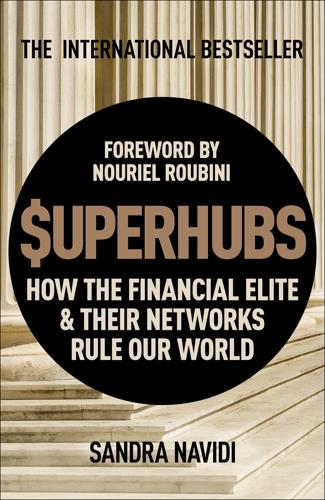
SUPERHUBS: How the Financial Elite and Their Networks Rule Our World
by
Sandra Navidi
Published 24 Jan 2017
On my way, I crossed paths with Bill Gates, who gave me a friendly nod; IMF chief Christine Lagarde, who said hello; and private equity billionaire Steve Schwarzman, with whom I exchanged pleasantries. At the coat check, where I replaced my messy boots with elegant dress shoes, I ran into Larry Summers, former U.S. treasury secretary and Harvard economics professor, and Robert Shiller, Nobel laureate and one of the most influential economists in the world. Although I have attended the WEF several years in a row, I am still regularly amazed by the fact that everyone around me is famous, and that every financial titan who is regularly featured in prime-time news and on the front pages seems to have materialized simultaneously in front of me.
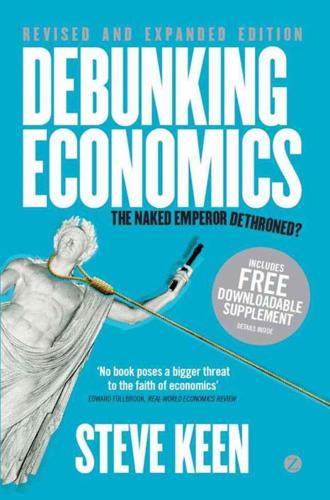
Debunking Economics - Revised, Expanded and Integrated Edition: The Naked Emperor Dethroned?
by
Steve Keen
Published 21 Sep 2011
the prediction had to have some timing attached to it. (Bezemer 2009: 7) Bezemer came up with twelve names: myself and Dean Baker, Wynne Godley, Fred Harrison, Michael Hudson, Eric Janszen, Jakob Brøchner Madsen and Jens Kjaer Sørensen, Kurt Richebächer, Nouriel Roubini, Peter Schiff, and Robert Shiller. He also identified four common aspects of our work: 1 a concern with financial assets as distinct from real-sector assets, 2 with the credit flows that finance both forms of wealth, 3 with the debt growth accompanying growth in financial wealth, and 4 with the accounting relation between the financial and real economy.
…
Given the poor response of the economy to the stimulus and QE1, I think it’s reasonable to argue that it’s time Obama – and politicians in general – looked elsewhere for their economic advice. From tranquility to breakdown To a neoclassical economist, the most striking aspect of the Great Recession was the speed with which apparent tranquility gave way to sudden breakdown. With notable, noble exceptions like Nouriel Roubini, Robert Shiller, Joe Stiglitz and Paul Krugman, economists paid little attention to the obvious Bonfire of the Vanities taking place in asset markets, so in a sense they didn’t see the warning signs, which were obvious to many others, that this would all end in tears. My model, in contrast, is one in which the Great Moderation and the Great Recession are merely different phases in the same process of debt-financed speculation, which causes a period of initial volatility to give way to damped oscillations as rising debt transfers income from workers to bankers, and then total breakdown occurs when debt reaches a level at which capitalists become insolvent.

Priceless: The Myth of Fair Value (And How to Take Advantage of It)
by
William Poundstone
Published 1 Jan 2010
Summers sketched one, a model in which stock prices have a strong arbitrary component yet adjust coherently to the day’s financial news. Summers’s idea is a scary one. It proposes that stock prices could be a collective hallucination. Once investors stop believing, it all comes tumbling down. “Who would know what the value of the Dow Jones Industrial Average should be?” asked Yale’s Robert Shiller in 1998. “Is it really ‘worth’ 6,000 today? Or 5,000 or 7,000? Or 2,000 or 10,000? There is no agreed-upon economic theory that would answer these questions.” The chart on the previous page shows the history of the price-to-earnings ratio of the stocks in the S&P Index. The S&P is a broad index computed from 500 companies presently accounting for about three-quarters of American’s total investment in domestic stocks.
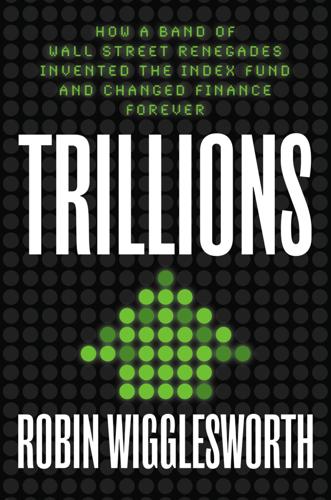
Trillions: How a Band of Wall Street Renegades Invented the Index Fund and Changed Finance Forever
by
Robin Wigglesworth
Published 11 Oct 2021
Without computers they had to be compiled and calculated manually, an arduous task for benchmarks with more than a handful of members. But Standard & Poor’s launch of its own index of America’s biggest companies in 1957 was a landmark, “a symbol of the beginning of the electronic era in finance,” according to Robert Shiller, the Nobel laureate.17 The S&P 500, as it was called, despite initially tracking only 425 companies, was calculated by a Datatron computer linked directly to the stock market ticker machines now set up on Wall Street, and could continuously measure the new index. That was a tremendous improvement.

Human Compatible: Artificial Intelligence and the Problem of Control
by
Stuart Russell
Published 7 Oct 2019
They indicate that between 1947 and 1973, wages and productivity increased together, but after 1973, wages stagnated even while productivity roughly doubled. Brynjolfsson and McAfee call this the Great Decoupling. Other leading economists have also sounded the alarm, including Nobel laureates Robert Shiller, Mike Spence, and Paul Krugman; Klaus Schwab, head of the World Economic Forum; and Larry Summers, former chief economist of the World Bank and Treasury secretary under President Bill Clinton. Those arguing against the notion of technological unemployment often point to bank tellers, whose work can be done in part by ATMs, and retail cashiers, whose work is sped up by barcodes and RFID tags on merchandise.

Extreme Money: Masters of the Universe and the Cult of Risk
by
Satyajit Das
Published 14 Oct 2011
My naturally pessimistic view of the world proves useful, coinciding with the times. People are forgiving if things turn out better than predictions. In 2009, an Asian stockbroking firm invites me to speak at investment conferences in Tokyo and Hong Kong. I am part of the chorus, support for the mega-stars. In Japan, celebrity anti-exuberance advocate9 Robert Shiller in the course of a short speech, manages to mention his forthcoming book at least a dozen times. In Hong Kong, the world’s first and only celebrity economic historian10 Niall Ferguson gives a keynote address on Chimerica, the relationship between China and America. Well-known for his books and Channel 4 series, Ferguson was named by Time magazine in 2004 as one of the 100 most influential people in the world.
…
Michael Schuman (2009) The Miracle: The Epic Story of Asia’s Quest for Wealth, Harper Business, New York. Jack D. Schwager (1992) The New Market Wizards: Conversations with America’s Top Traders, John Wiley, New Jersey. Fred Schwed Jr (2006) Where Are The Customers’ Yachts? Or A Good Hard Look at Wall Street, John Wiley, New Jersey. Robert Shiller (2005) Irrational Exuberance, Currency Doubleday, New York. Georg Simmel (1990) The Philosophy of Money, Routledge, London. Robert Skidelsky (2003) John Maynard Keynes 1883–1946: Economist, Philosopher, Statesman, Penguin Books, London. Robert Skidelsky (2009) Keynes: The Return of the Master, Public Affairs, New York.
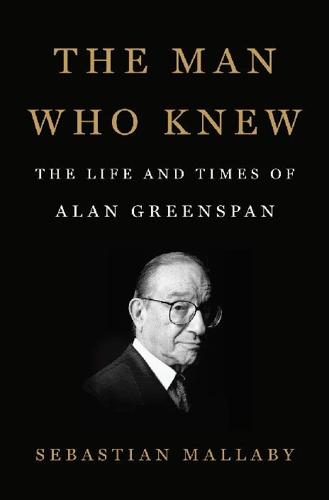
The Man Who Knew: The Life and Times of Alan Greenspan
by
Sebastian Mallaby
Published 10 Oct 2016
After the three Wall Streeters were done, the microphone was passed to the two academics in the group: John Campbell of Harvard and Robert Shiller of Yale. The professors presented a series of charts comparing stock prices to dividends. According to this means of valuing equities, the market was wildly overvalued. If the Fed raised interest rates, the market would crater. After a morning of meetings, the experts filed into the Fed dining room. They sat down to lunch, and Cohen remarked that the food had improved since her visits to the employee cafeteria in the 1970s.50 Alluding to the question that had been debated that morning, Robert Shiller asked Greenspan when a Fed chairman had last used his bully pulpit to sound a warning about the stock market’s level.
…
“You told us you had convinced Greenspan that the market wasn’t overvalued.” A little while later, Wien’s phone rang again. This time it was Morgan’s head equity trader on the line. He was not brimming with charity, either.54 When the New York Stock Exchange opened, it followed foreign markets downward. Robert Shiller was driving his child to school in New Haven when he heard the news about Greenspan’s remarks. “I wonder if I had anything to do with that,” he said to himself.55 But then, just as quickly, the market recovered. Once traders got hold of the text of Greenspan’s comments, the gap between his speech and the alarming headlines became obvious.
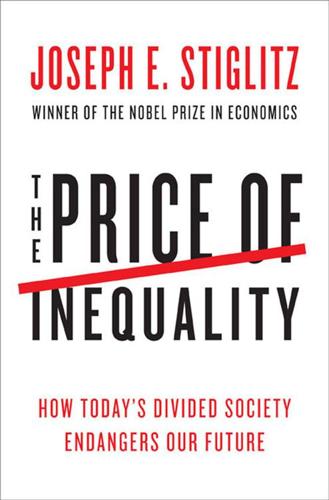
The Price of Inequality: How Today's Divided Society Endangers Our Future
by
Joseph E. Stiglitz
Published 10 Jun 2012
It was better just to let the bubble run its course, since cleaning up the mess afterward would be cheaper than distorting the economy to prevent a bubble from surfacing. If the leaders of the Fed hadn’t been so wedded to the notion that there were no bubbles, it would have been obvious to them (as it was to economists like Robert Shiller, of Yale, one of the country’s leading experts on housing),54 that the unprecedented rise in housing prices relative to incomes almost surely represented a bubble. In addition, the Fed didn’t have to rely on interest rate changes to dampen the bubble—it could have increased down payment requirements or tightened lending standards.
…
See the Boskin report, “Toward a More Accurate Measure of the Cost of Living,” December 4, 1996, available at http://www.ssa.gov/history/reports/boskinrpt.html. 53. Countries in which there is persistent high and variable unemployment typically put in clauses that provide for automatic adjustments in wages to changes in the cost of living (called COLA, cost of living adjustment). 54. See, e.g., Robert J. Shiller, Irrational Exuberance, 2nd ed. (Princeton: Prince-ton University Press, 2005. For S&P/Case-Shiller Home Price Indices see http://www.standardandpoors.com/indices/sp-case-shiller-home-price-indices/en/us/?indexId=spusa-cashpidff--p-us--- (accessed March 5 2012). 55. That requires that the deceleration of inflation from an increase in unemployment is weaker than the acceleration of inflation from a decrease in unemployment.
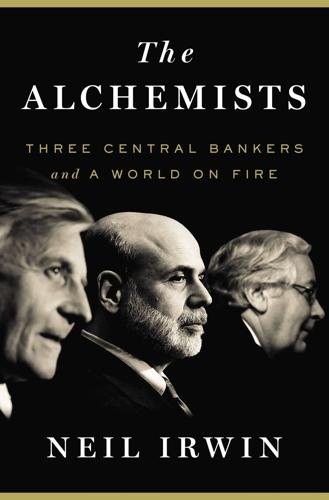
The Alchemists: Three Central Bankers and a World on Fire
by
Neil Irwin
Published 4 Apr 2013
Bernanke and his inner circle—New York Fed president Tim Geithner, Board of Governors vice chairman Donald Kohn and member Kevin Warsh, Fed monetary affairs director Brian Madigan—spent much of the two days of proceedings in their secure conference room on the second floor, plotting their response to the emerging panic. It was too bad: The topic of that year’s conference was housing finance, and some of the presentations were quite prescient. Robert Shiller of Yale, for example, warned that the long housing boom was soon likely to go bust, with severe economic consequences. “It does not appear possible to explain the boom in terms of fundamentals such as rents or construction costs,” he argued. “A psychological theory, that represents the boom as taking place because of a feedback mechanism or social epidemic that encourages a view of housing as an important investment opportunity, fits the evidence better.”
…
“I’d like to tell you about the Millennium Bridge in London”: Hyun Song Shin, “Commentary: Has Financial Development Made the World Riskier,” Federal Reserve Bank of Kansas City Economic Symposium, Jackson Hole, WY, August 2005. CHAPTER 9: THE COMMITTEE OF THREE “It does not appear possible”: Robert J. Shiller, “Understanding Recent Trends in House Prices and Homeownership,” Federal Reserve Bank of Kansas City Economic Symposium, August 31, 2007. “I am convinced”: Jean-Claude Trichet, “Europe: Cultural Identity,” speech, Center for Financial Studies, Frankfurt, March 16, 2009. “It was . . . a very emotional moment”: Corinne Lhaik, “Interview with Jean-Claude Trichet,” L’Express, September 29, 2004, http://www.ecb.int/press/key/date/2004/html/sp041009.en.html.
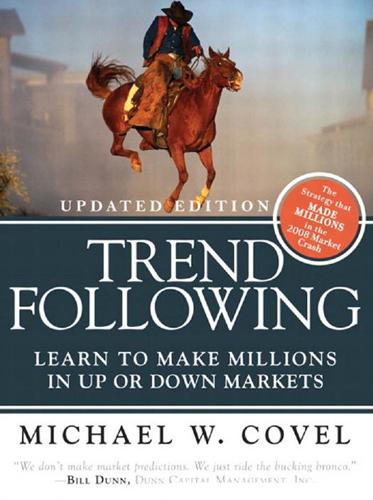
Trend Following: How Great Traders Make Millions in Up or Down Markets
by
Michael W. Covel
Published 19 Mar 2007
I am also indebted to the following authors whose works continue to be treasure troves of information and insight: Morton Baratz, Peter Bernstein, Clayton Christensen, Jim Collins, Jay Forrester, Tom Friedman, Gerd Gigerenzer, Daniel Goleman, Stephen Jay Gould, Alan Greenberg, Larry Harris, Robert Koppel, Edwin Lefevere, Michael Lewis, Jesse Livermore, Roger Lowenstein, Acknowledgments Ludwig von Mises, Lois Peltz, Ayn Rand, Jack Schwager, Denise Shekerjian, Robert Shiller, Van Tharp, Edward Thorp, Peter Todd, Brenda Ueland, and Dickson Watts. This book could only have come to fruition with the editorial guidance of Jim Boyd at FT Press, as well as the able assistance and attention to detail of Dennis Higbee. I also want to thank Donna Cullen-Dolce, Lisa Iarkowski, Stephen Crane, John Pierce, and Lucy Petermark.
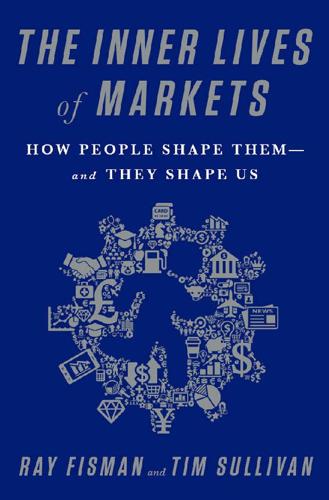
The Inner Lives of Markets: How People Shape Them—And They Shape Us
by
Tim Sullivan
Published 6 Jun 2016
It’s not just because customers are reluctant to complain about a seller who is donating money from their purchase price to charity; philanthropically inclined sellers also have about half as many unresolved disputes on their noncharity listings. 15. Akerlof never imagined that all consumers were aware of their own ignorance; for him the lemons model was merely a next step in a larger agenda. In Phishing for Phools: The Economics of Manipulation and Deception (Princeton, NJ: Princeton University Press, 2015), Akerlof and his coauthor Robert Shiller lay out a theory of markets where there are economic agents who are unaware of their ignorance (and hence buy too many subprime mortgages) or lack self-control (and eat too much ice cream). Such problems lead to what they call a “phishing equilibrium” where weak or ignorant consumers (“phools”) are taken advantage of by exploitative firms.

Investing Demystified: How to Invest Without Speculation and Sleepless Nights
by
Lars Kroijer
Published 5 Sep 2013
Just be honest with yourself as you consider your edge. It can be expensive to think you have it if you don’t. Has residential property really been that great? The best estimate of residential property performance is the Case-Shiller House Price index which represents the price changes in US residential homes. Professor Robert Shiller describes the housing index along with other interesting ideas in his excellent book Irrational Exuberance (Princeton University Press, 2005). To my knowledge there isn’t a property index that covers all forms of residential property investment across many countries that goes back many decades for us to analyse.

What's Next?: Unconventional Wisdom on the Future of the World Economy
by
David Hale
and
Lyric Hughes Hale
Published 23 May 2011
The disconnect between the concerns and warnings of the economists—among them Roubini Global Economics’ Nouriel Roubini and David Rosenberg, then with Merrill Lynch—and the indestructible optimism of the investment bankers and insurers was startling. This series of meetings subsequently led to a session at Davos in January 2007 aptly titled “Housing Deflation: What’s the Hissing Sound?” Among other panelists, economist Robert Shiller and then president of the central bank of Germany Axel Weber warned about the impending real estate crisis and its possible cascading effects on other asset classes. A lively discussion ensued with the few people in the room who had bothered to attend the session. Several of them argued convincingly that it “would all end up in tears.”
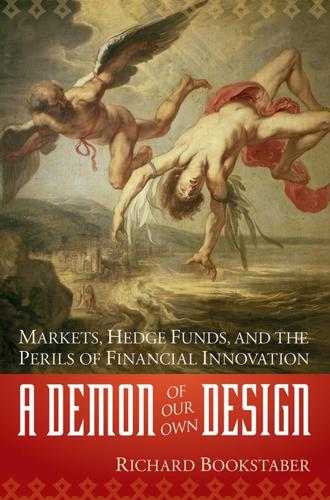
A Demon of Our Own Design: Markets, Hedge Funds, and the Perils of Financial Innovation
by
Richard Bookstaber
Published 5 Apr 2007
So did hedge fund masters such as Julian Robertson, whose Tiger Management fund was beaten to the ground by his doggedly rational addiction to value. George Soros, who broke the Bank of England, was broken the same way—fighting the equity crowds clamoring to buy more stock. His book Irrational Exuberance (Princeton University Press, 2000) earned Robert Shiller notoriety for his call that we were in the middle of a bubble, but in fact many investment professionals recognized it for what it was, the chorus getting louder as the bubble swelled. However, it is one thing to say the market has run amuck; it is another thing to trade against it. One of the most surprising fallouts of the Internet bubble was the closing, in rapid succession, of both Robertson’s and Soros’s long-admired funds.
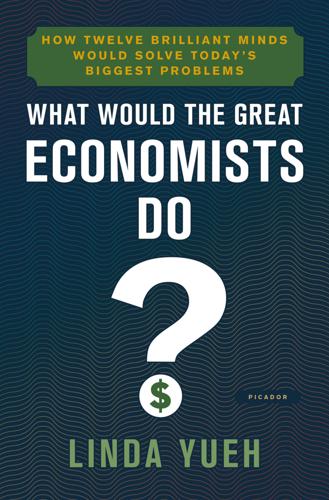
What Would the Great Economists Do?: How Twelve Brilliant Minds Would Solve Today's Biggest Problems
by
Linda Yueh
Published 4 Jun 2018
The UF is nominally the Chilean currency, but corrected for inflation. It remains in use today for wage contracts, for instance, so pay rises are awarded in real terms. The UF made indexing to inflation transparent, and Chile is the most inflation-indexed country in the world. The Nobel Prize-winning economist Robert Shiller, in the spirit of Irving Fisher, has proposed that contracts in the US be expressed in terms of baskets reflecting the real value of a consumer’s need, or in Fisher’s terminology, a set of commodities they buy. He also suggested that governments could issue debt, so sell government bonds, denominated in terms of shares of nominal GDP and proposed calling these shares Trills.

Dragnet Nation: A Quest for Privacy, Security, and Freedom in a World of Relentless Surveillance
by
Julia Angwin
Published 25 Feb 2014
See also specific search engines auditing your data on search warrants Secret New York (Rives) secret police Secrets & Lies (Schneier) Secret Service security, privacy vs. Security Engineering (Anderson) security questions Security Theater September 11, 2001, attacks sexual orientation Shahzad, Faisal Shearson, Julia Shilkin, Rob Shiller, Benjamin Reed Shopping.com Shutova, Ekaterina Shutterfly Signal conference Silent Circle Silent Phone Silent Text Sinclair, Upton Singer-Vine, Jeremy Skyhook Skype Slobogin, Christopher smart card Smith, Stephen Smith, Will Snowden, Edward social networking sites. See also specific sites social network mapping social security numbers Soghoian, Christopher Soltani, Ashkan Sonic.net “sousveillance” South Africa Southern District of New York (federal court) Soviet Union spamgourmet.com spam messages SpiderOak Spokeo spoofing Sputnik spy satellites spyware Staas, David stalkers Standard Oil Company Staples Stasi state and local governments stealth wear Stecklow, Steve Steel, Emily Strauchs, John J.

What's Mine Is Yours: How Collaborative Consumption Is Changing the Way We Live
by
Rachel Botsman
and
Roo Rogers
Published 2 Jan 2010
More and more examples of Collaborative Consumption are popping up every day, everywhere. We have created a Collaborative Consumption icon for all to use to show they are part of this exciting groundswell. With thanks, Rachel and Roo Selected Bibliography Akerlof, George A., and Robert J. Shiller. Animal Spirits: How Human Psychology Drives the Economy and Why It Matters for Global Capitalism (Princeton University Press, 2009). Andersen, Kurt, and Tom Brokaw. Reset: How This Crisis Can Restore Our Values and Renew America (Random House, 2009). Anderson, Chris. The Long Tail: Why the Future of Business Is Selling Less of More (Hyperion, 2006).
…
This is a working article written by Butts while on the Knight-Bagehot fellowship for business journalists at Columbia Journalism School and Columbia Business School, http://www.mickeybutts.com/wj_business.html. 19. Ibid. 20. Joe Nocera, A Piece of the Action: How the Middle Class Joined the Money Class, as quoted in Vanity Fair, “Rethinking the American Dream,” www.vanityfair.com/culture/features/2009/04/american-dream200904. 21. George A. Akerlof and Robert J. Shiller, Animal Spirits: How Human Psychology Drives the Economy and Why It Matters for Global Capitalism (Princeton University Press, 2009), 128. 22. Steve Rhode, founder of myvesta.org, found that 26 percent of his company’s clients say they never look at the statement. Quoted in Mickey Butts, “Why We Charge: What Behavioral Economics Can Tell Us.” 23.
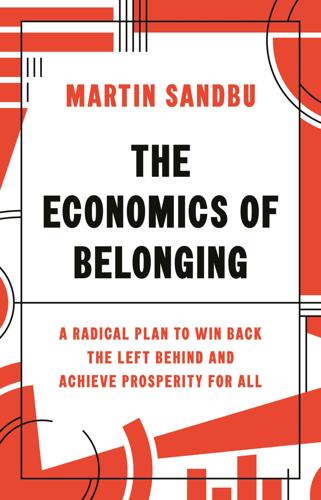
The Economics of Belonging: A Radical Plan to Win Back the Left Behind and Achieve Prosperity for All
by
Martin Sandbu
Published 15 Jun 2020
Irving Fisher, “The Debt-Deflation Theory of Great Depressions,” Econometrica 1, no. 4 (1933): 337–57; Richard Koo, “Balance Sheet Recession Is the Reason for ‘Secular Stagnation,’ ” VoxEU, 11 August 2014, https://voxeu.org/article/balance-sheet-recession-reason-secular-stagnation. 14. See Robert Shiller, Finance and the Good Society, Princeton, NJ: Princeton University Press, 2012, for more on equity-like financial products to make people’s lives less risky. 15. Shiller. 16. There are many other reasons for such a move. One is the inefficient provision of electronic money transfers by private financial institutions, especially across borders.
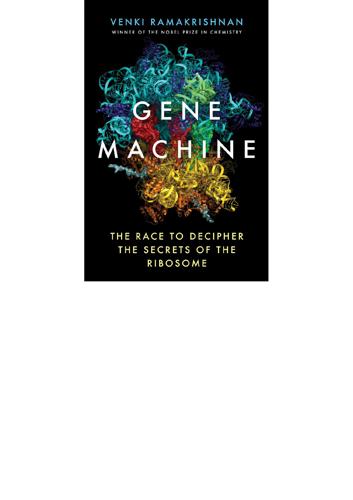
The Gene Machine
by
Venki Ramakrishnan
Much later, in 1969, an economics prize ‘in memory of Alfred Nobel’ was instituted by the Bank of Sweden to cash in on the Nobel name. It has been awarded to economists with quite different and, to an outsider, contradictory views of their field. A particularly amusing year was 2013 when Eugene Fama and Robert Shiller shared the prize, which would be a bit like Darwin and Lamarck sharing a prize for evolution. The prize is also subject to some rather arbitrary rules. Nobel specified that the prize was to be for a discovery or invention made during the previous year, but because it often takes years or even decades for the importance of something to become clear, this rule was very quickly discarded.

Jared Bibler
by
Iceland's Secret The Untold Story of the World's Biggest Con-Harriman House (2021)
In addition to the three executives Sigurður, Hreiðar Már, and Magnús, the high court found the CEO of Icelandic operations, the head of proprietary trading, two proprietary traders, the head of credit, and a senior credit officer all to be guilty in this case. 86 Hreiðar Már was charged separately in this case with insider trading and abuse of agency, and absolved at the appeals court level in 2020. Landsréttur Íslands, case number 917/2018. 87 Phishing for Phools: The Economics of Manipulation and Deception, George Akerlof & Robert Shiller, 2015, p. 118 88 Hæstiréttur Íslands, case number 842/2014. On 12 March 2021, Iceland’s top court, Hæstiréttur Íslands, issued a new judgment for Sigurjón in the Landsbanki market manipulation case. It upheld his earlier conviction for market abuse, but restricted now to the trading days 29 September to 3 October 2008.
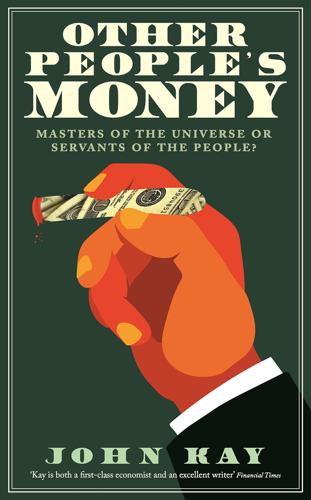
Other People's Money: Masters of the Universe or Servants of the People?
by
John Kay
Published 2 Sep 2015
People who traded shares knew about stock markets, but not about companies and their products. People who traded interest rate derivatives knew about derivatives, but not about politics and government finance. The forces that led to these extensive failures in credit markets in 2007–8 had been evident earlier elsewhere. Robert Shiller received the Nobel Prize in economics for providing in the early 1980s the first careful demonstration of a proposition that seems intuitively obvious to anyone who watches stock markets: volatility is far greater than can be explained by changes in the fundamental value of securities. The ‘explanations’ provided nightly by market commentators and newspaper headlines are little more than rationalisation of the noise generated by this market volatility.3 Equity markets experienced more and more activity in secondary markets, while primary issuance had become less and less important.4 Intermediaries in these markets knew less and less about the companies in which funds were invested, and expertise rested in knowing what ‘the market thinks’.
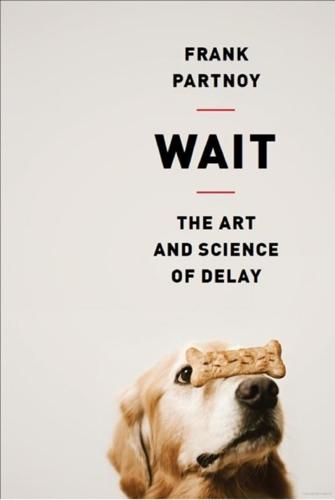
Wait: The Art and Science of Delay
by
Frank Partnoy
Published 15 Jan 2012
Chapter 11 1. The authors of this study analyzed Cramer’s recommendations from June 2005 and February 2009. Joseph Engelberg, Caroline Sasseville, and Jared Williams, “Market Madness? The Case of Mad Money,” Management Science 58(2, 2012): 351–364. 2. See Robert J. Shiller, Irrational Exuberance (Crown Business, 2006); George A. Akerlof and Robert J. Shiller, Animal Spirits: How Human Psychology Drives the Economy, and Why It Matters for Global Capitalism (Princeton University Press, 2010); Jason Zweig, Your Money and Your Brain: How the New Science of Neuroeconomics Can Make You Rich (Simon & Schuster, 2007); Hersh Shefrin, Beyond Greed and Fear: Finance and the Psychology of Investing(Oxford University Press, 2000); Edward Chancellor, Devil Take the Hindmost: A History of Financial Speculation (Plume, 2000); Gur Huberman and Tomer Regev, “Speculating on a Cure for Cancer: A Non-Event That Made Stock Prices Soar,” Journal of Finance 56(2001): 387–396.
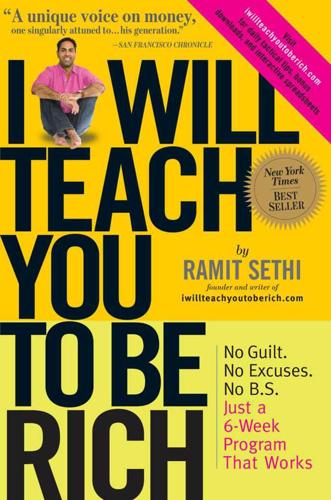
I Will Teach You To Be Rich
by
Sethi, Ramit
Published 22 Mar 2009
If your house is your biggest investment, how diversified is your portfolio? If you pay $2,000 per month to a mortgage, are you investing $6,000 elsewhere to balance your risk? Of course not. Second, the facts show that real estate offers a very poor return for individual investors. Yale economist Robert Shiller found that “from 1890 through 1990, the return on residential real estate was just about zero after inflation.” I know this sounds crazy, but it’s true. We fool ourselves into thinking we’re making money when we’re simply not. For example, if someone buys a house for $250,000 and sells it for $400,000 twenty years later, they think, “Great!
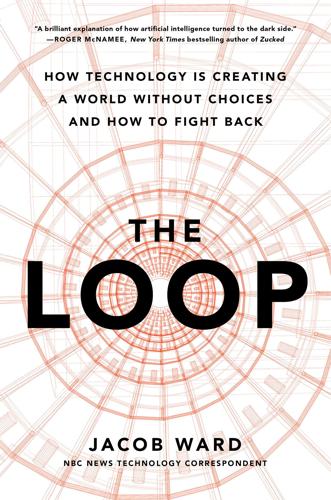
The Loop: How Technology Is Creating a World Without Choices and How to Fight Back
by
Jacob Ward
Published 25 Jan 2022
But what particularly irks him is travel insurance. In a 2015 New York Times op-ed, he railed against the fact that airlines like United routinely require us to actively turn down travel insurance even when buying a fully refundable airline ticket. And in a larger sense, he railed against the idea that these dark nudges—what Robert Shiller and George Akerlof called phishing in their 2015 book Phishing for Phools—are being deployed by the private sector. Critics of his and Sunstein’s work have complained that government policies that nudge us to make better decisions are paternalistic, maybe even unconsciously dictatorial. But, he wrote, one has a voice in what a representative government does.
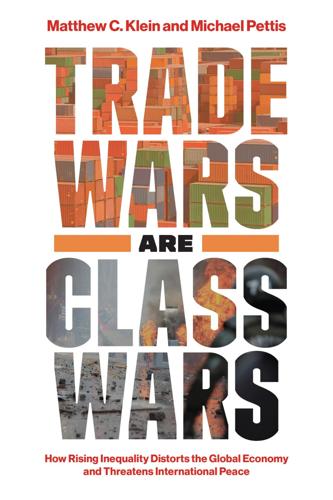
Trade Wars Are Class Wars: How Rising Inequality Distorts the Global Economy and Threatens International Peace
by
Matthew C. Klein
Published 18 May 2020
,” FT Alphaville, May 5, 2017, https://ftalphaville.ft.com/2017/05/04/2188305/how-should-a-workers-party-cut-taxes/; Peter B. Edelman, “Poverty and Welfare: Does Compassionate Conservatism Have a Heart?,” 2001 Edward C. Sobota Memorial Lecture, Albany Law School, Albany, N.Y. 3. FRB, “Industrial Production and Capacity Utilization—G.17,” https://www.federalreserve.gov/releases/g17/; Robert Shiller, stock market data used in Irrational Exuberance, http://www.econ.yale.edu/~shiller/data.htm. 4. Based on BEA, “National Income and Product Accounts,” tables 1.1.5, 1.14, 5.1, 5.2.6, https://apps.bea.gov/iTable/index_nipa.cfm. 5. Robert Skidelsky, “Winning Back Europe’s Heart; Rogue Dollar,” New York Times, February 20, 2005; George P.
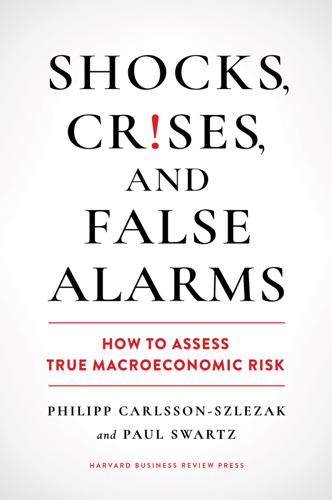
Shocks, Crises, and False Alarms: How to Assess True Macroeconomic Risk
by
Philipp Carlsson-Szlezak
and
Paul Swartz
Published 8 Jul 2024
Philipp Carlsson-Szlezak and Paul Swartz, “Is U.S. Debt 100%, 1,000% or 2,000% of GDP …? It’s Up to You, Sort Of,” Sanford C. Bernstein, September 9, 2019. Chapter 16 1. The Nasdaq rallied from 2,688.18 on October 19, 1999, to 5,048.62 on March 10, 2000—an 88% increase (300% annualized rate). 2. Using Robert Shiller’s CAPE (Cyclically Adjusted Price to Earnings ratio), the S&P 500 multiple was 10.36 in September of 1925 and 32.56 in September 1929. 3. Often considered the first speculative bubble in history, Dutch Tulipmania refers to the run-up in prices of tulip bulbs (which had only spread to Western Europe in the mid-16th century) starting in 1634, before collapsing in February 1637.

Adaptive Markets: Financial Evolution at the Speed of Thought
by
Andrew W. Lo
Published 3 Apr 2017
Unlike other investors who suspected the housing bubble was near its top, Paulson had the resources, skills, connections, and good fortune to see his bet through to completion. But what if we wanted not to profit from the catastrophe, but to prevent it? Unfortunately, the record of such attempts looks rather bleak. In January 2005, the Yale economist Robert Shiller made his beliefs clear. Shiller was (and is) one of the world’s leading experts on housing prices. The index of home prices he constructed with Karl Case is the most important measurement we have of how housing prices change over time. He stated, “There is no hope of explaining home prices solely in terms of population, building costs or interest rates.

Termites of the State: Why Complexity Leads to Inequality
by
Vito Tanzi
Published 28 Dec 2017
Afonso, Antonio, Ludger Schuknecht, and Vito Tanzi, 2005, “Public Sector Efficiency: An International Comparison,” Public Choice 123, pp. 321–347. 2010, “Public Sector Efficiency: Evidence for New EU Member States and Emerging Markets,” Applied Economics 42 (17), pp. 2147–2164. Ahamed, Liaquat, 1999, Lords of Finance: The Bankers Who Broke the World (New York: The Penguin Press). Akerlof, George A., 1970, “The Market for ‘Lemons’: Quality, Uncertainty and the Market Mechanism,” Quarterly Journal of Economics 84 (3) (August), pp. 488–500. Akerlof, George A. and Robert Shiller, 2009, Animal Spirits: How Human Psychology Drives the Economy: And Why It Matters for Global Capitalism (Princeton, NJ: Princeton University Press). 2015, Phishing for Phools: The Economics of Manipulation and Deception (Princeton, NJ: Princeton University Press). Alesina, Alberto, 1998, “The Political Economy of Macroeconomic Stabilization and Income Inequality: Myths and Reality” in Income Distribution and HighQuality Growth, edited by Vito Tanzi and Ke-young Chu (Cambridge, MA: The MIT Press).
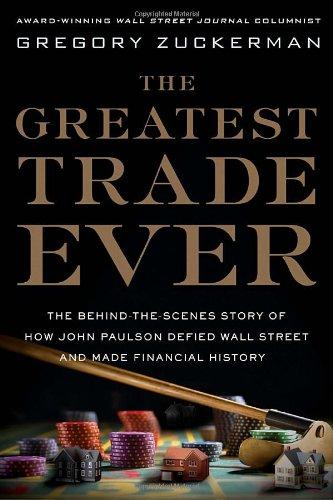
The greatest trade ever: the behind-the-scenes story of how John Paulson defied Wall Street and made financial history
by
Gregory Zuckerman
Published 3 Nov 2009
It was fortuitous that Paulson was a merger pro, and not a veteran of the mortgage, housing, or bond markets. He wasn’'t fully aware of the long-ignored arguments of housing bears and how many investors were refusing to buy into real estate. Just as important, he wasn’'t deterred by the dismal track record of those who already had bet against housing. In 2004, Professor Robert Shiller of Yale University produced data showing that U.S. residential real estate prices rose by only 66 percent between 1890 and 2004, or by just 0.4 percent a year. He contrasted that meager gain with the heady rise of 52 percent, or 6.2 percent a year, between 1997 and 2004. Shiller presented a series of lectures on the topic and included the charts and figures in an updated version of his best-selling book, Irrational Exuberance, in February 2005, trying to demonstrate how overpriced real estate had become.

Fool's Gold: How the Bold Dream of a Small Tribe at J.P. Morgan Was Corrupted by Wall Street Greed and Unleashed a Catastrophe
by
Gillian Tett
Published 11 May 2009
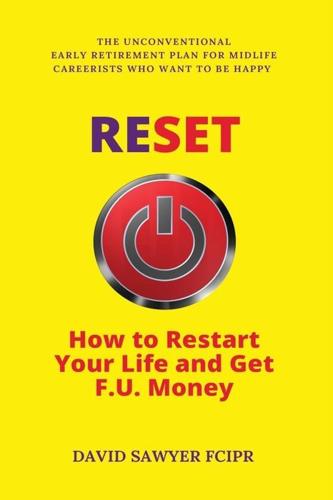
Reset: How to Restart Your Life and Get F.U. Money: The Unconventional Early Retirement Plan for Midlife Careerists Who Want to Be Happy
by
David Sawyer
Published 17 Aug 2018
If you can’t handle that, and would change course were it to happen, stock market investing may not be for you. (Google “Risk Tolerance Calculator”.) I wouldn’t blame you. There’s oodles of research showing that the Chimp side of our nature is unsuited to the vicissitudes of the stock market. Nobel prize for economics-winning economists such as Robert Shiller have found that: “Put concisely – it’s actually much smarter to admit that you aren’t perfectly rational, and to plan and invest accordingly, rather than deny your true nature[347].” Read up on risk tolerance, take into account your circumstances, work out your goals and timings based on how old you are, and see what you can afford to lose.
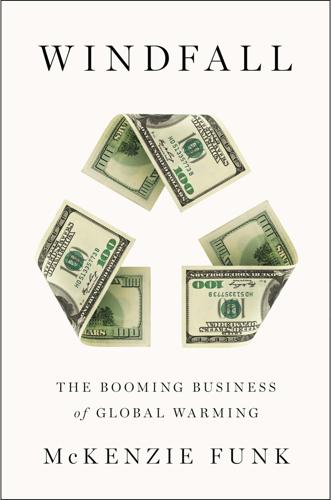
Windfall: The Booming Business of Global Warming
by
Mckenzie Funk
Published 22 Jan 2014
.: Cambridge University Press, 2007), Field Notes from a Catastrophe by Elizabeth Kolbert (New York: Bloomsbury, 2006), The Weather Makers by Tim Flannery (New York: Atlantic Monthly Press, 2005), and Six Degrees by Mark Lynas (London: Fourth Estate, 2007). I later relied on Animal Spirits: How Human Psychology Drives the Economy, and Why It Matters for Global Capitalism by George Akerlof and Robert Shiller (Princeton, N.J.: Princeton University Press, 2009) as I considered humankind’s response to climate change. The history of Arctic exploration and the Northwest Passage is covered in Resolute by Martin Sandler (New York: Sterling, 2006) and Dangerous Passage by Gerard Kenney (Toronto: Natural Heritage, 2006).

Animal Spirits: The American Pursuit of Vitality From Camp Meeting to Wall Street
by
Jackson Lears
As in the post–World War II era, financial policymakers sought to conjure animal spirits, but also to keep them moving in the right direction by systematically deploying statistics, as Wells Fargo does in its animal spirits index. Such exercises have led observers to discern a contemporary revival of Keynes’s ideas. In 2009, two behavioral economists, George Akerlof and Robert Shiller, appeared to signal the return of Keynes when they published Animal Spirits: How Human Psychology Drives the Economy, and Why It Matters for Global Capitalism. But they defanged animal spirits, reducing them to mere confidence—the sort of emotion that seems quantifiable in surveys, not to mention assimilable to neoclassical economic assumptions.

The Quiet Coup: Neoliberalism and the Looting of America
by
Mehrsa Baradaran
Published 7 May 2024
Prices were bequeathed with an omniscience that no human—and certainly no government bureaucrat—could approach. The market would punish the weak and bless the strong. Market discipline would be meted out through declining stock prices. Despite having been debunked by other economists, such as Robert Shiller (who shared the 2013 Economics Nobel with Fama), the entire field of behavioral economics, and real-life events like asset bubbles and other such irrationalities, Fama’s theory inspired many of the policies of the neoliberal era. It became the basis for getting rid of antitrust laws, for instance, because insofar as prices remained low, there could not be a monopoly.
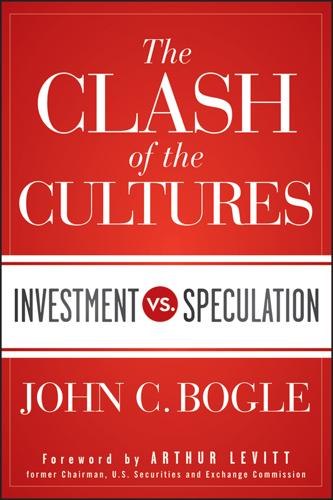
The Clash of the Cultures
by
John C. Bogle
Published 30 Jun 2012
As shown in Exhibit 2.4, during the 1970s the fundamentals of investment, measured by earnings growth and dividend yields on the S&P 500 Index, provided a return of 13.4 percent per year, and the total stock market return was but 5.9 percent annually. (The reduction in valuation of −7.5 percent per year reflected a drop in the earnings ratio from 15.8 to 7.3 times.) Exhibit 2.4 Stock Returns: A Tin Decade, Two Golden Decades, Then Another Tin Decade Source: Robert Shiller, www.econ.yale.edu/~shiller/data.htm. During the 1980s, by contrast, the fundamental return of 9.6 percent came hand-in-hand with an annual valuation increase of 7.7 percent, as P/E ratios more than doubled, from 7.3 to 15.2 times, bringing the total annual return to 17.3 percent. Incredibly—and bereft of historic precedent—the same sort of scenario continued during the 1990s.
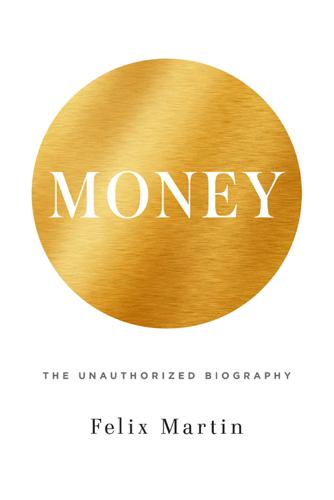
Money: The Unauthorized Biography
by
Felix Martin
Published 5 Jun 2013
Law’s idea was to rid money-users of even this last resort of risk aversion. At the heart of his new financial world was to be not sovereign debt, but sovereign equity. Once again, it is an idea that sounds incredible to modern ears—but it is one that has its influential advocates today. The U.S. economist Robert Shiller—a modern Projector, as well as one of the world’s most distinguished academic economists—has for many years urged sovereigns to share with investors the risk to the public finances inherent in uncertain economic growth by issuing bonds that pay interest linked to GDP.24 Shiller’s proposals urge a gradual shift towards such innovative financial instruments.

The AI Economy: Work, Wealth and Welfare in the Robot Age
by
Roger Bootle
Published 4 Sep 2019
Perhaps the appropriate takeaway from the debate about taxing robots and AI is not that similar employment taxes should be imposed on them (whatever they are) but rather that such taxes should be abolished for human employees. But, of course, other things equal, this would leave a hole in the public finances that would have to be filled by increasing some other sort of tax (or by cutting expenditure). Yet people are not queuing up for any sort of tax increase or expenditure reduction. Moreover, as Nobel Laureate Robert Shiller points out, all taxes impose distortions of some sort, so the argument that a robot tax would cause distortions does not satisfactorily close the matter. It is all about how serious the distortions are and what the alternatives are.13 But the definitional problems of separating out robots and AI from other forms of capital investment, referred to above, surely suggest that the distortions caused by a “robot tax” would be very damaging.
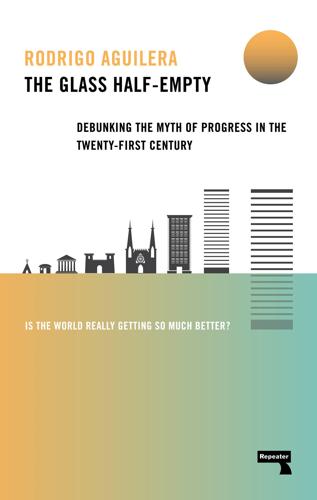
The Glass Half-Empty: Debunking the Myth of Progress in the Twenty-First Century
by
Rodrigo Aguilera
Published 10 Mar 2020
They also understand that trading is a zero-sum game that divides up winners and losers, and visualize themselves on the winning side at all times, regardless of short-term results.32 Unfortunately, the 2008–2009 global financial crisis is the perfect example of how unbridled market optimism (or as economist Robert Shiller calls it, “irrational exuberance”33) proved to be catastrophic, plunging the world into the worst economic disaster since the Great Depression, and leaving ravages in the Western world that are still felt a decade later. Much like the title of a recent book on eight centuries of financial crisis,34 “this time is different” seems to be our perennial reassurance that our optimism (especially when served with a side order of greed) always gets in the way of learning from past mistakes.
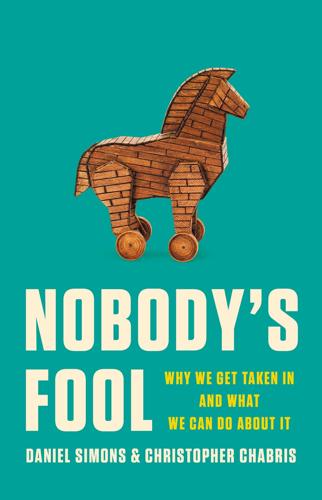
Nobody's Fool: Why We Get Taken in and What We Can Do About It
by
Daniel Simons
and
Christopher Chabris
Published 10 Jul 2023
Kinetz, T. Goldenberg, D. Estrin, and R. Satter, “AP Investigation: How Con Man Used China to Launder Millions,” AP News, March 28, 2016 [https://apnews.com/article/business-middle-east-israel-europe-africa-7500da6eb1d94e1dbb7e5650d1c20bd6]. 5. Writers like Maria Konnikova, Dan Davies, George Akerlof, Robert Shiller, Eugene Soltes, and Edward Balleisen have covered these topics well in recent years. We recommend the following books: M. Konnikova, The Confidence Game: Why We Fall for It… Every Time (New York: Viking, 2016); D. Davies, Lying for Money: How Legendary Frauds Reveal the Workings of the World (New York: Scribner, 2021); G.
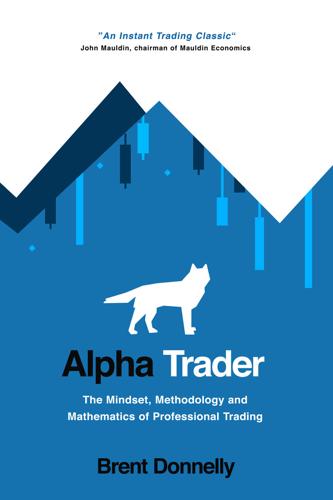
Alpha Trader
by
Brent Donnelly
Published 11 May 2021
New Canaan, Connecticut 2021 APPENDIX A FURTHER READING BOOKS Trading classics Market Wizards (series), Jack Schwager (1989) Reminiscences of a Stock Operator, Edwin Lefèvre (1923) Luck vs. skill, process vs. outcome The Success Equation, Michael Mauboussin (2012) Thinking in Bets, Annie Duke (2018) Be disciplined Willpower, Baumeister and Tierney (2012) The Science of Self-Discipline, Peter Hollins (2017) The Disciplined Trader, Mark Douglas (1990) Behavioral finance bibles Thinking, Fast and Slow, Daniel Kahneman (2011) Irrational Exuberance, Robert Shiller (2000) Get organized The Seven Habits of Highly Effective People, Stephen Covey (1988) The Checklist Manifesto, Atul Gawande (2009) The Power of Habit, Charles Duhigg (2012) Be self-aware The Power of Now, Eckhart Tolle (1997) Breath, James Nestor (2020) The Hour Between Dog and Wolf, John Coates (2012) Get quantitative Fortune’s Formula, William Poundstone (2005) Superforecasting, Dan Gardner and Philip Tetlock (2015) Fooled by Randomness, Nassim Taleb (2001) Fooled by Technical Analysis, Michael Harris (2015) A Man for All Markets, Edward Thorp (2017) Risk, Dan Gardner (2008) How to Lie with Statistics, Darrell Huff (1954) BLOGS, PODCASTS AND NEWSLETTERS Aspen Trading daily and intraday trading newsletter, Dave Floyd Epsilon Theory website, podcast and newsletter, Ben Hunt and Rusty Guynn Exante blog on Substack, Jens Nordvig et al.
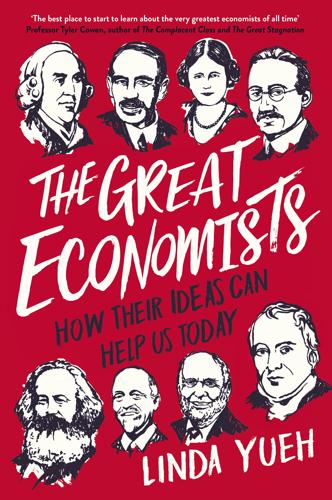
The Great Economists: How Their Ideas Can Help Us Today
by
Linda Yueh
Published 15 Mar 2018
The UF is nominally the Chilean currency, but corrected for inflation. It remains in use today for wage contracts, for instance, so pay rises are awarded in real terms. The UF made indexing to inflation transparent, and Chile is the most inflation-indexed country in the world. The Nobel Prize-winning economist Robert Shiller, in the spirit of Irving Fisher, has proposed that contracts in the US be expressed in terms of baskets reflecting the real value of a consumer’s need, or in Fisher’s terminology, a set of commodities they buy. He also suggested that governments could issue debt, so sell government bonds, denominated in terms of shares of nominal GDP and proposed calling these shares Trills.

Concentrated Investing
by
Allen C. Benello
Published 7 Dec 2016
Operations not meeting these requirements are speculative.”6 He later elaborated on his brief reference to speculation by saying, “Speculative operations are all concerned with changes in price.”7 Keynes independently developed the idea that the price of a security is distinct from its intrinsic value, which Graham codified in Security Analysis. He also seems to have extended beyond Graham to develop his own unique form of value investment. That investment philosophy led Keynes to be described as “one of the most innovative investors ever, inspiring investors and economic thinkers from Warren E. Buffett to Robert J. Shiller.”8 Many investors have acknowledged the influence of Keynes on their own process, including Buffett, George Soros,9 and David Swensen.10 Buffett in particular embraced Keynes’s philosophy, discussing in detail in his annual Berkshire Hathaway, Inc., Chairman’s Letters his own evolution from Grahamite value investor to a value investment strategy that is remarkably similar to the one Keynes finally adopted.
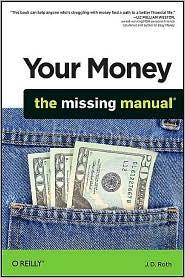
Your Money: The Missing Manual
by
J.D. Roth
Published 18 Mar 2010
Deciding whether to rent or buy is a complicated financial and emotional decision. Real-estate agents like to say, "Renting is like throwing your money away." On its surface, this advice seems to make sense, so it gets repeated a lot in popular culture. But in a 2008 issue of Newsweek (http://tinyurl.com/nw-rentok), Robert Shiller, a professor of economics at Yale University, wrote, "The popular argument that renting is equivalent to throwing money down the drain is really fallacious." In some cases, it does make financial sense to buy a home. But in other situations, renting is the better choice. And often, there's not a lot of difference between the two, especially if you're smart and keep costs low.
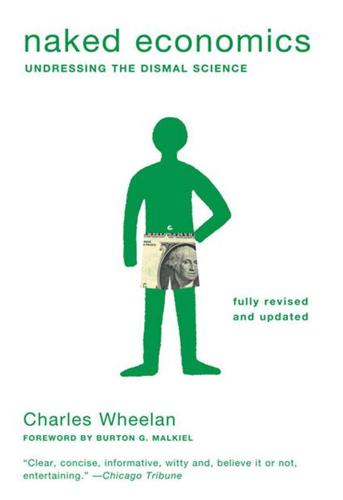
Naked Economics: Undressing the Dismal Science (Fully Revised and Updated)
by
Charles Wheelan
Published 18 Apr 2010
The impaired investors took more risks when there were high potential payoffs and got less emotional when they made losses.7 This book is not prescribing brain injury as an investment strategy. However, behavioral economists do believe that by anticipating the flawed decisions that regular investors are likely to make, we can beat the market (or at least avoid being ravaged by it). Yale economist Robert Shiller first challenged the theory of efficient markets in the early 1980s. He became much more famous for his book Irrational Exuberance, which argued in 2000 that the stock market was overvalued. He was right. Five years later he argued that there was a bubble in the housing market. He was right again.

Apollo's Arrow: The Profound and Enduring Impact of Coronavirus on the Way We Live
by
Nicholas A. Christakis
Published 27 Oct 2020
First, it might prompt people to see that they all have an interest in what happens to those around them, if only for selfish reasons. Those previously unconcerned about the homeless might want to improve their conditions just to reduce the risk that they might provide a reservoir for a pathogen. Second, some observers, such as economist Robert Shiller, speculated that a pandemic might decrease economic inequality over the intermediate term by reducing the wealth of those who had invested in the stock market or by leading to more progressive taxation.14 Those at the top have more to lose than those at the bottom, so reducing wealth increases equality.
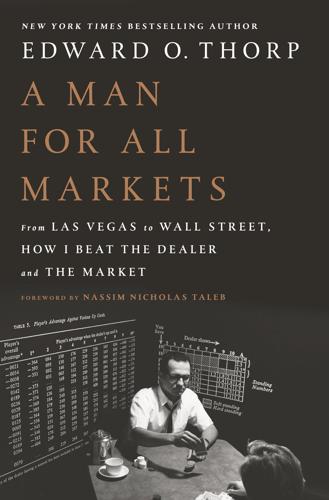
A Man for All Markets
by
Edward O. Thorp
Published 15 Nov 2016
His investment multiplied forty times in fifty-four years, for a compound annual return of 7 percent. Also, his expenses of a few percent a year in property taxes and maintenance were less than what he would have paid to rent a similar property. Although stories like this abound, my uncle was lucky. According to economist Robert Shiller, average US home prices after inflation increased from 1890 to 2004 by about 0.4 percent a year, with the rate being about 0.7 percent in the later 1940–2004 period. It follows from this that making a profit should not be a primary reason for owning your home. You can rent instead and do about as well financially.

The Hype Machine: How Social Media Disrupts Our Elections, Our Economy, and Our Health--And How We Must Adapt
by
Sinan Aral
Published 14 Sep 2020
That means it’s possible that we could become individually smarter but collectively dumber.” But the Hype Machine makes social influence ubiquitous, and I’m not sure Surowiecki saw it coming. “Do cascades exist?” he wrote. “Without a doubt. They are less ubiquitous than the restaurant-going model suggests, since, as Yale economist Robert Shiller has suggested, people don’t usually make decisions in sequence. ‘In most cases,’ Shiller writes, ‘many people independently choose their action based on their own signals, without observing the actions of others.’ ” Clearly neither Surowiecki nor Shiller had experienced Instagram, Yelp, Twitter, hashtags, viral memes, trending topics, or social media influencers when they drew this conclusion.
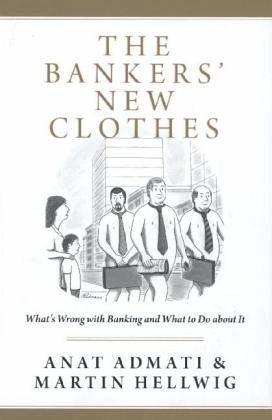
The Bankers' New Clothes: What's Wrong With Banking and What to Do About It
by
Anat Admati
and
Martin Hellwig
Published 15 Feb 2013
Princeton, NJ: Princeton University Press. Freedman, Abraham L. 1928. “Imprisonment for Debt.” Temple Law Quarterly 2: 336. French, Kenneth, Martin N. Baily, John Y. Campbell, John H. Cochrane, Douglas W. Diamond, Darrell Duffie, Anil K. Kashyap, Frederic S. Mishkin, Raghuram G. Rajan, David S. Scharfstein, Robert J. Shiller, Hyun Song Shin, Matthew J. Slaughter, Jeremy C. Stein, and René M. Stulz. 2010. The Squam Lake Report: Fixing the Financial System. Princeton, NJ: Princeton University Press. Friedman, Milton. 1960. A Program for Monetary Stability. New York: Fordham University Press. ———. 1969. The Optimum Quantity of Money and Other Essays.
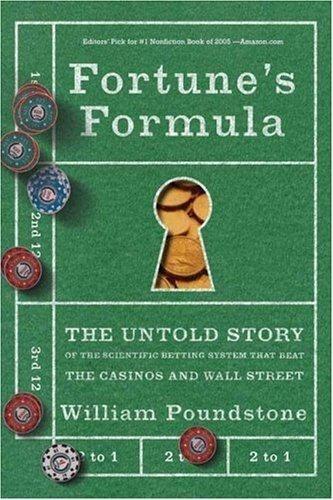
Fortune's Formula: The Untold Story of the Scientific Betting System That Beat the Casinos and Wall Street
by
William Poundstone
Published 18 Sep 2006
New York: Trident Press. Roberts, Stanley (1978). “Welcome, Dr. Thorp.” Gambling Times, Aug. 1978, 11–14. Rogers, Everett M. (n.d.). “Claude Shannon’s Cryptography Research During World War II and the Mathematical Theory of Communication.” Roll, Richard (1988). “R2.” Journal of Finance 43:541–66. ———, and Robert J. Shiller (1992). “Comments: Symposium on Volatility in U.S. and Japanese Stock Markets.” Journal of Applied Corporate Finance 5:25–29. Rotando, Louis M., and Edward O. Thorp (1992). “The Kelly Criterion and the Stock Market.” American Mathematical Monthly, Dec. 1992, 922–31. Rubinstein, Mark (1975).
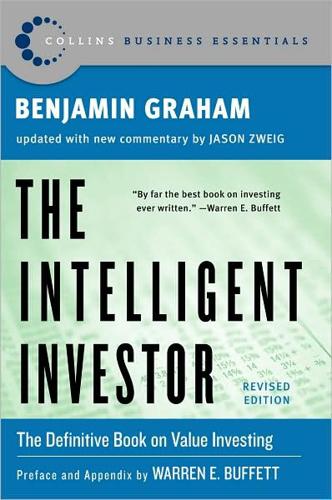
The Intelligent Investor (Collins Business Essentials)
by
Benjamin Graham
and
Jason Zweig
Published 1 Jan 1949
If the investing public gets greedy again and sends stocks back into orbit, then that speculative fever will temporarily drive returns higher. If, instead, investors are full of fear, as they were in the 1930s and 1970s, the returns on stocks will go temporarily lower. (That’s where we are in 2003.) Robert Shiller, a finance professor at Yale University, says Graham inspired his valuation approach: Shiller compares the current price of the Standard & Poor’s 500-stock index against average corporate profits over the past 10 years (after inflation). By scanning the historical record, Shiller has shown that when his ratio goes well above 20, the market usually delivers poor returns afterward; when it drops well below 10, stocks typically produce handsome gains down the road.
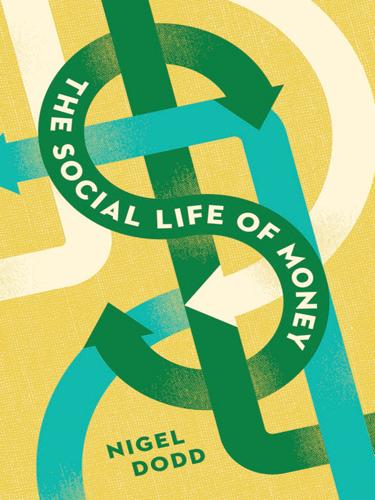
The Social Life of Money
by
Nigel Dodd
Published 14 May 2014
For such thinkers, the problem is not that money exists at all but rather that it has been badly designed. They have all made important contributions to a tradition of practical schemes that use innovations in the design of money and the price system to improve economic conditions, including proposals by renowned economists, such as Irving Fisher’s stamp scrip (Fisher, Cohrssen, et al. 1933) and Robert Shiller’s baskets (Shiller 2008). Finally, there are now several thousand alternative monetary systems in operation worldwide, using a range of different media and accounting schemes designed to foster local economic growth, resist financial exclusion, and even challenge what many believe to be the persistent and damaging hegemony of states and banks in the way that money is produced and managed.

Bourgeois Dignity: Why Economics Can't Explain the Modern World
by
Deirdre N. McCloskey
Published 15 Nov 2011
The comic point of the book is that the Don is invulnerable to reason, calculation, cool rhetoric, conversation, not to speak of nicely-calculated less or more. (Yet in modern economic life the role of identity and impulse needs to be acknowledged, as the social psychologist Jonathan Haidt, the management theorist James March, the economic historian John Nye, and the economists George Akerlof and Robert Shiller have all affirmed. Not many business decisions could be made without identity and impulse.11) Austen laughs at thoughtless aristocratic gestures and Christian pseudo-martyrdoms. In Austen’s novels, strategic thinking is the means, and if the end is wisely chosen (as it is at the last by the major and developing characters), all is well.
…
Adhia, Nimish. 2013. “The Role of Ideological Change in India’s Economic Liberalization.” Journal of Socioeconomics 44:103–111. Akerlof, George A. 1970. “The Market for ‘Lemons’: Quality Uncertainty and the Market Mechanism.” Quarterly Journal of Economics 84:488–500. Akerlof, George A., and Robert J. Shiller. 2009. Animal Spirits: How Human Psychology Drives the Economy, and Why It Matters for Global Capitalism. Princeton, NJ: Princeton University Press. Alfani, Guido. 2013. “Plague in Seventeenth-Century Europe and the Decline of Italy: An Epidemiological Hypothesis.” European Review of Economic History 17:408–430.

Connectography: Mapping the Future of Global Civilization
by
Parag Khanna
Published 18 Apr 2016
Historically, U.S. infrastructure spending has returned almost $2 for every $1 invested, but investment has been tailing off for decades.2 Today America’s clogged roads and tunnels cause wasteful congestion, its crumbling bridges cause accidents and delays, and its ailing ports and refineries lack both the efficiency and the capacity to meet global demand. Since the financial crisis, dozens of prominent economists including Yale’s Robert Shiller have advocated infrastructure-led investment as a way to create jobs and boost economic confidence. The American Society of Civil Engineers has called for $1.6 trillion in spending for an overhaul of America’s transportation system. Only now—and just before it is too late—is such a national overhaul near the top of America’s agenda with proposals for the creation of a national infrastructure bank.

Walk Away
by
Douglas E. French
Published 1 Mar 2011
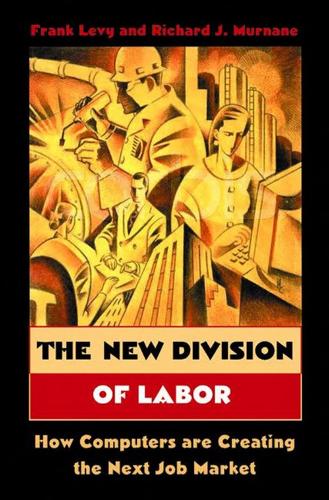
The New Division of Labor: How Computers Are Creating the Next Job Market
by
Frank Levy
and
Richard J. Murnane
Published 11 Apr 2004
A researcher at the John F. Kennedy Library has told us that Kennedy used this phrase at a number of times and in slightly different versions. The library’s earliest record of the phrase was on October 15, 1960, during Kennedy’s presidential campaign. 10. See, for example, the discussion of livelihood insurance in Robert J. Shiller, The New Financial Order: Risk in the 21st Century (Princeton: Princeton University Press, 2003). This page intentionally left blank INDEX Abate, Gary, 79 accountability, in education reform, 134–36 accountants, 36–37 Ad Hoc Committee on the Triple Revolution, 1–2, 5, 35 after-school programs, 142 agriculture, 36–37, 102–3 aircraft design, 31–33 anti-theft car alarm, 71–72 assembly line, 15, 20–21 assessment: as component of educational standards, 135–36; in computer skills training, 123 AT&T, 99–100 ATM machines, 21 attorneys, 90–92 Autor, David, 47, 52 auto repair, 57–58, 60, 62–63, 71–72, 103–4 banking, 21, 52–53, 72–75 Basic Blue (IBM), 110–20, 128–30 behavior, modifying, in management training, 117 Behrens, John, 123, 125 Being Fluent with Information Technology (National Research Council), 107 Belous, Alex, 121, 124 Blois, Marsden, 61 body language, 29, 86–88, 91 Boeing, 31–34 bond trading, 13–14, 24 Boston, standards-based education reform in, 136–38 Boston Plan for Excellence, 137, 147 “bridge to sales,” 100–101 Brown, John Seely, 60, 94 Buckner, Tom and Rozann, 65–66 Burtless, Gary, 152 Bush, George, 134 “Cabot Bank,” 52–53, 72–75 call centers, 3, 100–102, 151 case-based reasoning, and creative thinking, 23, 59, 166n.1 Casey, Jonna, 142 CATIA computer assisted design software, 32–33 change: pace of, 101–3; three-step process of, 33–34 170 chess playing, 7, 22, 58–59 circuit boards, 78–81 Cisco Academy Training Centers, 124 Cisco Certified Networking Associate, 127–28 Cisco Learning Institute, 124 Cisco Networking Academies, 120–30 Cisco Systems, 120–30 class issue, 154–55 classroom time, 122–25, 130 Clinton, Bill, 134 coaching, for teachers, 137 cognitive tutors, computer-based, 82 Collaborative Coaching and Learning, 137 collaborative learning, 113 college graduates, wages of, 6, 44–47, 134, 154, 162n.15 combine harvester, 36 “Common Core of Learning,” 135 comparative advantage, principle of, 35–36, 47, 159n.5 compensation, for lower income families, 155 competitive advantage, 34 competitive strategies, 32–33, 43, 101 complementarity, with human labor, 14, 29–30, 34, 68, 94–95, 105 complex communication, 5–6, 9, 28–29, 47–49, 54, 76–81, 92–95, 104, 107–8, 150–51; teaching of, 109–20, 128–30, 132–33, 147–48, 156–57 computer-assisted design and manufacturing, 31–33, 79 Computerized Circuit Design (CCD), 78–81 computer prices, 105–6 computer skills, 105–8, 120–28 content, as component of educational standards, 134 context, 25, 85 conversation, and complex communication, 79–82 Cooper, Andy, 66–68 “The Corporation: Will It Be Managed by Machines?”

A Generation of Sociopaths: How the Baby Boomers Betrayed America
by
Bruce Cannon Gibney
Published 7 Mar 2017
Margin-driven speculation got frequent blame as a cause of the 1929 crash, so between 1945 and 1974, the Fed adjusted margin every few years, from as low as 40 percent in early 1945 to as high as 100 percent in 1946.28 Since 1974, margin requirements have been left unadjusted, at 50 percent.29 During the bubble of the 1990s, the economist Robert Shiller argued the Fed should revive margin tools. A “senior economist and adviser” from the Fed’s Boston bank disagreed, stating that “the capacity to borrow against securities has also risen as a result of rising stock prices. It is not clear this exposes the financial system to more risk.”30 Such was a Fed economist’s view as of September 2000, as the stock market was collapsing.
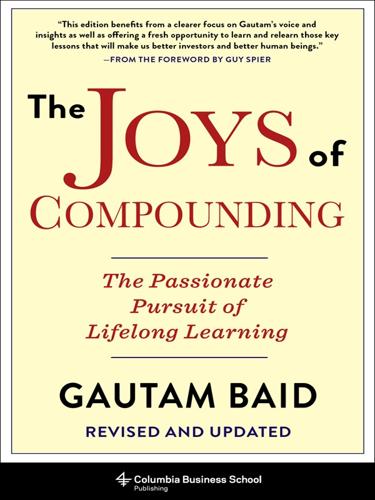
The Joys of Compounding: The Passionate Pursuit of Lifelong Learning, Revised and Updated
by
Gautam Baid
Published 1 Jun 2020
Jason Zweig and Gary Belsky taught me how an understanding of neuroeconomics helps avoid money mistakes. John Burr Williams, Alfred Rappaport, Bharat Shah, and Utpal Sheth taught me the fundamental principles of value creation. Charles Mackay, Charles Kindleberger, John Galbraith, John Brooks, Edward Chancellor, Robert Shiller, and Maggie Mahar educated me on the history of market cycles, speculative manias, and the subsequent busts. Peter Senge and Donella Meadows educated me on systems thinking and a more interconnected view of the world. George Soros, Benoit Mandelbrot, and Richard Bookstaber made me aware of the intricate and highly dynamic feedback loops present in markets and social systems.
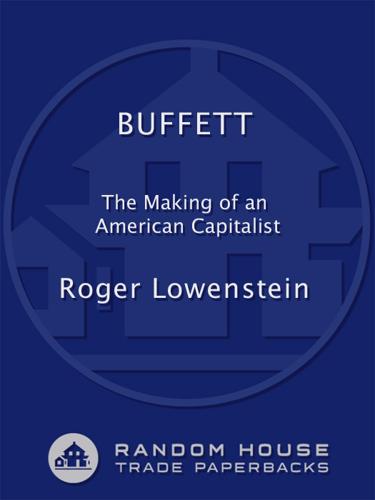
Buffett
by
Roger Lowenstein
Published 24 Jul 2013
How could prices have been rational both before and after? No new information had surfaced to account for such a drop. There had been no sudden change in expected future profits. Indeed, for the people who sold stocks on October 19, corporate profits were not a remote consideration. According to Robert J. Shiller, a Yale economist who surveyed nearly one thousand investors soon after Black Monday, the only news that investors had been aware of that day was news of the crash itself. In place of the cold, “unromantic” investor of Brealey and Myers, Shiller’s respondents reported sweaty palms, rapid pulse rates, and hypertension.
…
Malkiel, “Why Markets Are Working Better,” Wall Street Journal, August 22, 1986. 38. Buffett, “How to Tame the Casino Society.” 39. Burton G. Malkiel, “But Markets Only Seem More Volatile,” New York Times, September 27, 1987. 40. Brady report, vi. 41. Berkshire Hathaway Inc., 1987 Annual Report, 17. 42. Robert J. Shiller, “Investor Behavior in the October 1987 Stock Market Crash: Survey Evidence,” Working Paper 2446 (New Haven: Cowles Foundation, November 1987), pp. 11–12. 43. Eric N. Berg, “A Study Shakes Confidence in the Volatile-Stock Theory,” New York Times, February 18, 1992. 44. “Beating the Market: Yes It Can Be Done,” Economist, December 5, 1992. 45.
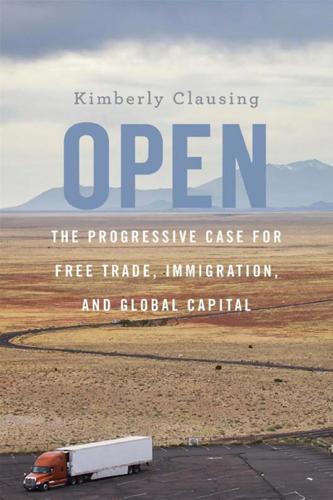
Open: The Progressive Case for Free Trade, Immigration, and Global Capital
by
Kimberly Clausing
Published 4 Mar 2019
This would be a strongly progressive change for those in the lower parts of the income distribution. Over time, the proposal indexes the amount of income subject to the tax benefit (the $14,000) to GDP increases. This ensures that economic growth automatically increases the tax benefit, sharing the benefits of growth more widely.2 ________________________ 1. Leonard E. Burman, Robert J. Shiller, Gregory Leiserson, and Jeffery Rohaly, “The Rising Tide Tax System: Indexing the Tax System for Changes in Inequality,” Tax Policy Center, 2006. 2. Leonard E. Burman, “A Tax Credit to Give Middle-Class Workers a Raise,” Tax Policy Center, August 2, 2017. Here I suggest a simple tax reform that would tax all income of top taxpayers at the same rate, regardless of source.

The Crisis of Crowding: Quant Copycats, Ugly Models, and the New Crash Normal
by
Ludwig B. Chincarini
Published 29 Jul 2012
Fannie Mae voluntarily submitted 10-K statements since 2002, while Freddie Mac voluntarily submitted their first 10-Q statement in August of 2008, right before they imploded. Freddie did produce annual reports for shareholders throughout the period. 31. The 10-city composite index is the Case-Shiller housing index, published monthly by Standard & Poor’s. It uses the Karl Case and Robert Shiller method to compute a house price index using a modified version of the weighted-repeat sales methodology. This method can adjust for the quality of homes sold, unlike simple average-based indices. The CSXR is a three-month moving average, as are the indices that compose it. The cities included in the 10-city index are Boston, Chicago, Denver, Las Vegas, Los Angeles, Miami, New York, San Diego, San Francisco, and Washington DC. 32.
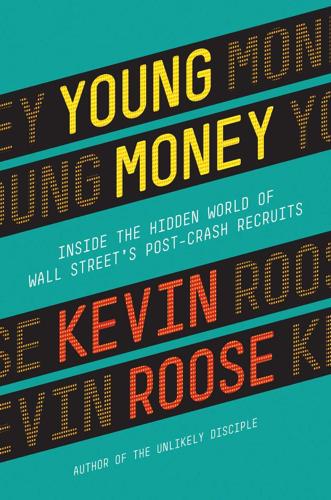
Young Money: Inside the Hidden World of Wall Street's Post-Crash Recruits
by
Kevin Roose
Published 18 Feb 2014
All over the Ivy League, the Wall Street recruiting process, which had once been as anodyne and accepted a part of the academic calendar as midterms and finals, had taken on the tenor of a student-on-student battle. “I teach financial markets, and it’s a little like teaching ROTC during the Vietnam War,” Robert J. Shiller, a professor of economics at Yale, told me that fall. “You have this sense that something’s amiss.” There have been industry-centric and company-specific protests on college campuses before. In 1967, students at Harvard and other schools protested the recruiting efforts of Dow Chemical, the company that made much of the napalm that was being used in the Vietnam War.

The Financial Crisis and the Free Market Cure: Why Pure Capitalism Is the World Economy's Only Hope
by
John A. Allison
Published 20 Sep 2012
Prior to 2007 and after 1896 (when data are first available), U.S. home prices had declined in only 20 years, or just 18 percent of the time, but the last yearly price decline had occurred in 1991, and the one before that in 1941. Thus, present-day Americans did not expect house-price declines, and certainly not for five straight years (2007–2011). For the history, see Robert J. Shiller, Irrational Exuberance, 2nd ed. (Princeton, NJ: Princeton University Press, 2005; New York: Broadway Books, 2006), Figure 2.1. For house price data (1896–2006), see http://www.irrationalexuberance.com/Fig2.1 Shiller.xls. 2. The median house price peaked at $230,900 in June 2006, before falling 32 percent to a low of $156,900 in February 2011.

Owning the Earth: The Transforming History of Land Ownership
by
Andro Linklater
Published 12 Nov 2013
the rising value of their farms: see Rothenberg, “Emergence of a Capital Market” for rural investment in industrial, financial, and other nonfarm activities. the American System: described in “National Planning of Internal Improvements” by Carter Goodrich. Political Science Quarterly 63, no. 1 (March 1948): 16–44. “Who ever heard of a man”: The Cultivator 1836, quoted in “Housing Bubbles Are Few and Far Between” by Robert J. Shiller. New York Times, Feb. 6, 2011. Horace White: for his account of the settlement’s foundation, see Beloit College archives published online at http://www.beloit.edu/~libhome/Archives/papers/beloitbegin.html. “The titles in Kentucky”: See “Speculators and Settler Capitalists: unthinking the mythology about Appalachian landholdings 1790–1860” by Wilma A.

The Meritocracy Trap: How America's Foundational Myth Feeds Inequality, Dismantles the Middle Class, and Devours the Elite
by
Daniel Markovits
Published 14 Sep 2019
The average age at first birth: Hymowitz et al., Knot Yet, 8, Figures IIA–IIC. the average life expectancy: Raj Chetty et al., “The Association Between Income and Life Expectancy in the United States, 2001–2014,” Journal of the American Medical Association 315, no. 16 (2016): 1750–66, 1753. the average annual . . . return for the S&P 500: See “Online Data Robert Shiller,” Yale University Department of Economics, http://www.econ.yale.edu/~shiller/data.htm. the average annual real rate of return for the entire U.S. stock market: Personal communication from Eric Haas, who derived the rates using index data from Dimensional Fund Advisors. ABCDEFGHIJKLMNOPQRSTUVWXYZ INDEX The page numbers in this index refer to the printed version of this book.
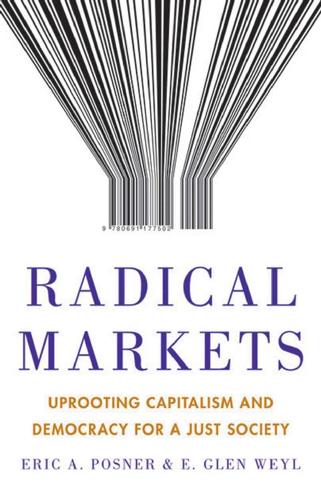
Radical Markets: Uprooting Capitalism and Democracy for a Just Society
by
Eric Posner
and
E. Weyl
Published 14 May 2018
See Peter L. Bernstein, Capital Ideas: The Improbable Origins of Modern Wall Street (Wiley, 1992), for a history. 14. A classic statement of this theory is Burton G. Malkiel, A Random Walk Down Wall Street: The Time-Tested Strategy for Successful Investing (W.W. Norton & Company, 10th ed., 2012). 15. Robert J. Shiller, Irrational Exuberance (Princeton University Press, 3d ed., 2015). 16. As of 2010, institutional investors held common stock worth $11.5 trillion. In the same year, index funds held about $1.4 trillion. Marshall E. Blume & Donald B. Keim, Institutional Investors and Stock Market Liquidity: Trends and Relationships, 5 (working paper, Wharton School, University of Pennsylvania, 2012), http://finance.wharton.upenn.edu/~keim/research/ChangingInstitutionPreferences_21Aug2012.pdf. 17.

The Infinite Machine: How an Army of Crypto-Hackers Is Building the Next Internet With Ethereum
by
Camila Russo
Published 13 Jul 2020
It didn’t matter that only a tiny sliver of trading was being done by people who were actually using these coins for their original use case (peer-to-peer cash in the case of bitcoin, fuel for a world computer in the case of ether). It also didn’t matter that digital coins with no live platform on which to be used—essentially, just lines of code—were now worth more than actual companies with earnings and assets. This behavior is actually “largely rational and intelligent,” economist and Nobel Prize winner Robert J. Shiller wrote in his book Irrational Exuberance. “Experiments demonstrate that people are ready to believe the majority view or to believe authorities even when they plainly contradict matter-of-fact judgment,” Shiller wrote. But that conduct can easily turn irrational when the only reason why people are crowding in the same direction is that they see more people have done the same and, in the case of markets, there’s a failure to disseminate information about the fundamental value of an asset.
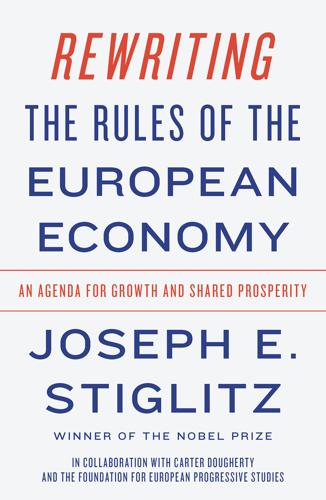
Rewriting the Rules of the European Economy: An Agenda for Growth and Shared Prosperity
by
Joseph E. Stiglitz
Published 28 Jan 2020
Alissa Pelatan and Roberto Randazzo, “The First European Benefit Corporation,” Esela—The Legal Network for Social Impact, https://www.bwbllp.com/file/benefit-corporation-article-june-16-pdf, and “B Corp Movement in BeNeLux,” B Lab Europe, 2019, https://bcorporation.eu/about-b-lab/country-partner/benelux. 8. Keith Collins, “A Patent that Helped Amazon Take Over Online Commerce Is about to Expire,” Quartz, Aug. 19, 2017, https://qz.com/1057490/a-patent-that-helped-amazon-take-over-online-commerce-is-about-to-expire/. 9. George A. Akerlof and Robert J. Shiller, Phishing for Phools: The Economics of Manipulation and Deception (Princeton, NJ: Princeton University Press, 2015). CHAPTER 5: TOWARD A FINANCIAL SYSTEM THAT SERVES SOCIETY 1. Tori and Onaran (2017) use panel data on the balance sheets of publicly listed nonfinancial companies (from Worldscope) for the period 1995–2015.

The Job: The Future of Work in the Modern Era
by
Ellen Ruppel Shell
Published 22 Oct 2018
This powerful “wealth effect” The wealth effect is a psychological phenomenon that causes people to spend more as the value of their assets rises. The premise is that when consumers’ homes or investment portfolios increase in value, they feel more financially secure, so they increase their spending. See, for example, Karl E. Case, John M. Quigley, and Robert J. Shiller, “Comparing Wealth Effects: The Stock Market Versus the Housing Market,” Advances in Macroeconomics 5, no. 1 (2005), http://dx.doi.org/doi:10.2202/1534-6013.1235. America’s at-will employment doctrine Employees can be fired for any or no reason as long as the decision to fire them is not unlawful according to a specific law, such as the National Labor Relations Act or federal, state, or local antidiscrimination statutes and ordinances.

Technological Revolutions and Financial Capital: The Dynamics of Bubbles and Golden Ages
by
Carlota Pérez
Published 1 Jan 2002
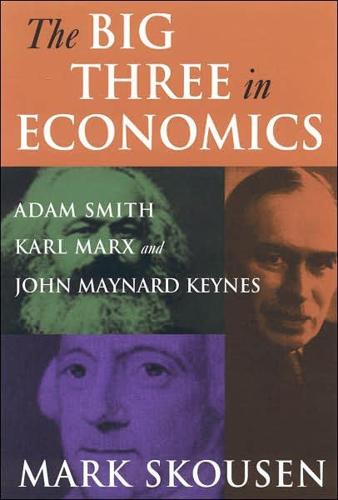
Big Three in Economics: Adam Smith, Karl Marx, and John Maynard Keynes
by
Mark Skousen
Published 22 Dec 2006

Competition Overdose: How Free Market Mythology Transformed Us From Citizen Kings to Market Servants
by
Maurice E. Stucke
and
Ariel Ezrachi
Published 14 May 2020
Rather, they can focus on exploiting biased consumers who are very likely to purchase from them regardless of price and quality.” Steffen Huck, Jidong Zhou, and Charlotte Duke, Consumer Behavioural Biases in Competition: A Survey (London, Office of Fair Trading, May 2011), ¶ 6.2, https://ssrn.com/abstract=1944446. 6.George A. Akerlof and Robert J. Shiller, Phishing for Phools: The Economics of Manipulation and Deception (Princeton, NJ: Princeton University Press, 2015), xii. 7.Huck et al., “Consumer Behavioural Biases in Competition,” ¶¶ 3.31, 3.37, 3.43; Matthew Bennett et al., “What Does Behavioral Economics Mean for Competition Policy?,” Competition Policy International 6, no. 1 (Spring 2010): 111, 118, https://www.competitionpolicyinternational.com/what-does-behavioral-economics-mean-for-competition-policy/; Eliana Garcés, “The Impact of Behavioral Economics on Consumer and Competition Policies,” Competition Policy International 6, no. 1 (Spring 2010): 145, 150, https://www.competitionpolicyinternational.com/the-impact-of-behavioral-economics-on-consumer-and-competition-policies/; Max Huffman, “Marrying Neo-Chicago with Behavioral Antitrust,” Antitrust Law Journal 78, no. 1 (Spring 2012): 105, 134, https://ssrn.com/abstract=2079329 (“consciously parallel behavioral exploitation is the nearly industry-wide policy of unbundling charges for checked bags in airline travel”). 8.Anthony Giorgianni, “Earn More on Your Savings Account at an Online Bank,” Consumer Reports, February 16, 2018, https://www.consumerreports.org/banking/earn-more-on-savings-account-at-online-bank/ (noting how online banks in 2018, for example, were in an “arms race” to get us to save more). 9.
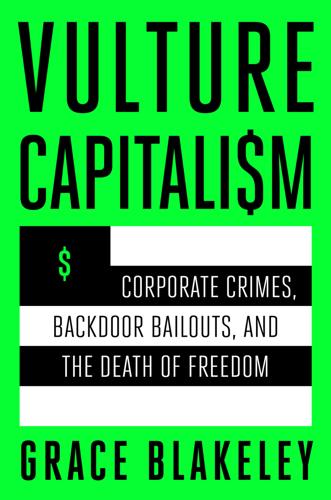
Vulture Capitalism: Corporate Crimes, Backdoor Bailouts, and the Death of Freedom
by
Grace Blakeley
Published 11 Mar 2024
Which was famously neither holy, nor Roman, nor an empire. 84. David Graeber, Debt: The First 5,000 Years (New York: Melville House, 2014). 85. Marx, Capital, Volume I. 86. Robert Z. Aliber and Charles P. Kindleberger, Manias, Panics, and Crashes: A History of Financial Crises, Seventh Edition (New York: Palgrave Macmillan, 2015). 87. Robert J. Shiller, Irrational Exuberance: Revised and Expanded Third Edition (Princeton, NJ: Princeton University Press, 2016). 88. J. M. Keynes quoted in Durand, Fictitious Capital. 89. William Fleckenstein with Frederick Sheehan, Greenspan’s Bubbles: The Age of Ignorance at the Federal Reserve (New York: McGraw-Hill, 2008). 90.
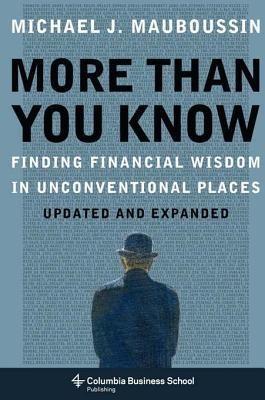
More Than You Know: Finding Financial Wisdom in Unconventional Places (Updated and Expanded)
by
Michael J. Mauboussin
Published 1 Jan 2006
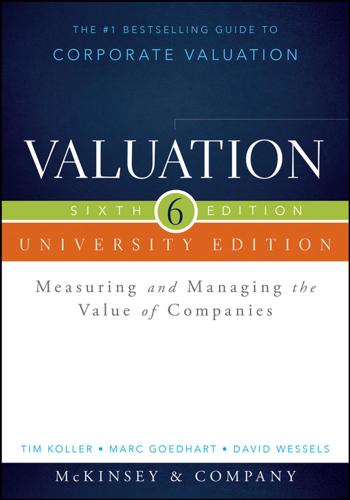
Valuation: Measuring and Managing the Value of Companies
by
Tim Koller
,
McKinsey
,
Company Inc.
,
Marc Goedhart
,
David Wessels
,
Barbara Schwimmer
and
Franziska Manoury
Published 16 Aug 2015
5 The Stock Market Is Smarter Than You Think The stock market’s volatility and the erratic pricing of some companies’ shares have raised questions about whether stock prices are actually linked to economic fundamentals. Some experts even assert that stock markets lead lives of their own. Nobel Prize winner Robert Shiller writes, “Fundamentally, stock markets are driven by popular narratives, which don’t need basis in solid facts.”1 Bill Gross, cofounder and former chief investment officer of PIMCO, one of the world’s largest fixed-income investment managers, claims that the last 100 years of U.S. stock returns “belied a commonsensical flaw much like that of a chain letter or yes—a Ponzi scheme.”2 Does it make sense to view the stock market as an arena where emotions rule supreme?
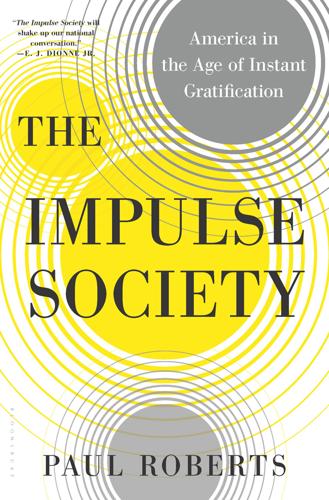
The Impulse Society: America in the Age of Instant Gratification
by
Paul Roberts
Published 1 Sep 2014
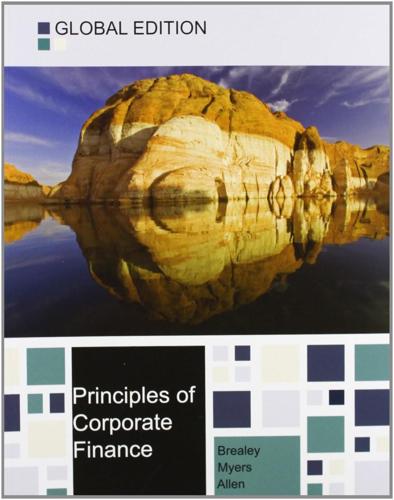
Principles of Corporate Finance
by
Richard A. Brealey
,
Stewart C. Myers
and
Franklin Allen
Published 15 Feb 2014
Santos, “Prospect Theory and Asset Prices,” Quarterly Journal of Economics 116 (February 2001), pp. 1–53. 22See D. Kahneman, Thinking Fast and Slow (New York: Farrar, Straus, and Giroux, 2011). 23The term “irrational exuberance” was coined by Alan Greenspan, former chairman of the Federal Reserve Board, to describe the dot.com boom. It was also the title of a book by Robert Shiller that examined the boom. See R. Shiller, Irrational Exuberance (New York: Broadway Books, 2001). 24Investment and brokerage firms identify shares eligible for lending and arrange to make them available to short-sellers. The supply of shares that can be borrowed is limited. You are charged a fee for borrowing the stock, and you are required to put up collateral to protect the lender in case the share price rises and the short-seller is unable to repurchase and return the shares.

Manias, Panics and Crashes: A History of Financial Crises, Sixth Edition
by
Kindleberger, Charles P.
and
Robert Z., Aliber
Published 9 Aug 2011
Morris’s The Trillion Dollar Meltdown: Easy Money, High Rollers, and the Great Credit Crash, James Grant’s Mr Market Miscalculates: The Bubble Years and Beyond, Charles Gasparino’s The Sellout: How Three Decades of Wall Street Greed and Government Mismanagement Destroyed the Global Financial System, Barry Rithholtz’s Bailout Nation: How GREED and EASY MONEY Corrupted Wall Street And Shook the World Economy, and Meltdown: How Greed and Corruption Shattered Our Financial System and How We Can Recover by Katrina vanden Heuvel and the Editors of the Nation. Some of the books are by academics. One of the first was Richard Posner’s The Failure of Capitalism. Robert J. Shiller produced The Subprime Solution and George A. Akerlof together with Shiller wrote Animal Spirits; some of the chapters in this book focus on the crisis. Simon Johnson and James Kwak authored 13 Bankers: The Wall Street Takeover and the Next Financial Meltdown. Raghuram G. Rajan wrote Fault Lines: How Hidden Fractures Still Threaten the World Economy, Joseph Stiglitz produced Freefall: America, Free Markets, and the Sinking of the World Economy and Nassim Nicholas Taleb brought out The Theory of Black Swan Events, a critique of the prevailing consensus in academic finance about market efficiency.
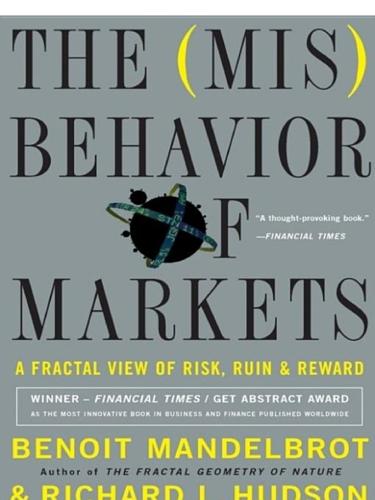
The Misbehavior of Markets: A Fractal View of Financial Turbulence
by
Benoit Mandelbrot
and
Richard L. Hudson
Published 7 Mar 2006
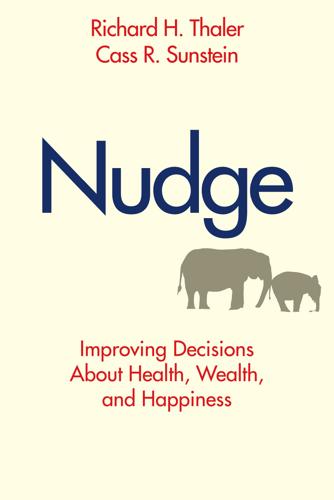
Nudge: Improving Decisions About Health, Wealth, and Happiness
by
Richard H. Thaler
and
Cass R. Sunstein
Published 7 Apr 2008
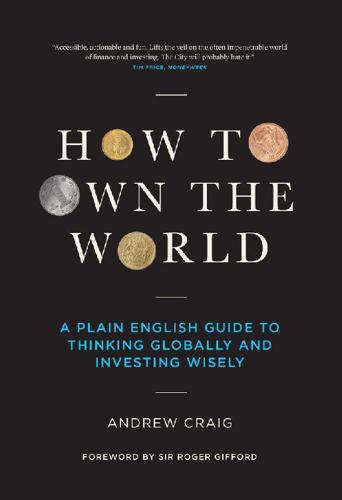
How to Own the World: A Plain English Guide to Thinking Globally and Investing Wisely
by
Andrew Craig
Published 6 Sep 2015
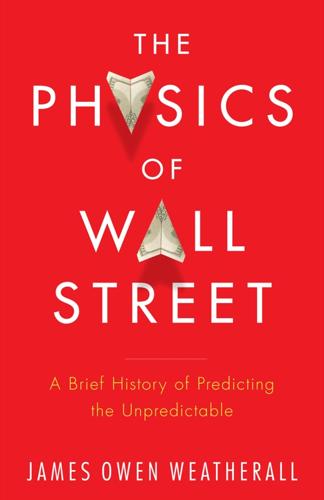
The Physics of Wall Street: A Brief History of Predicting the Unpredictable
by
James Owen Weatherall
Published 2 Jan 2013
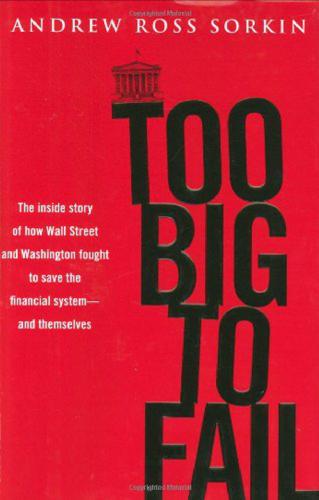
Too big to fail: the inside story of how Wall Street and Washington fought to save the financial system from crisis--and themselves
by
Andrew Ross Sorkin
Published 15 Oct 2009
As a result of the banks owning various slices of these newfangled financial instruments, every firm was now dependent on the others—and many didn’t even know it. If one fell, it could become a series of falling dominoes. There were, of course, Cassandras in both business and academia who warned that all this financial engineering would end badly. While Professors Nouriel Roubini and Robert J. Shiller have become this generation’s much-heralded doomsayers, even as others made prescient predictions as early as 1994 that went unheeded. “The sudden failure or abrupt withdrawal from trading of any of these large U.S. dealers could cause liquidity problems in the markets and could also pose risks to others, including federally insured banks and the financial system as a whole,” Charles A.

From Counterculture to Cyberculture: Stewart Brand, the Whole Earth Network, and the Rise of Digital Utopianism
by
Fred Turner
Published 31 Aug 2006